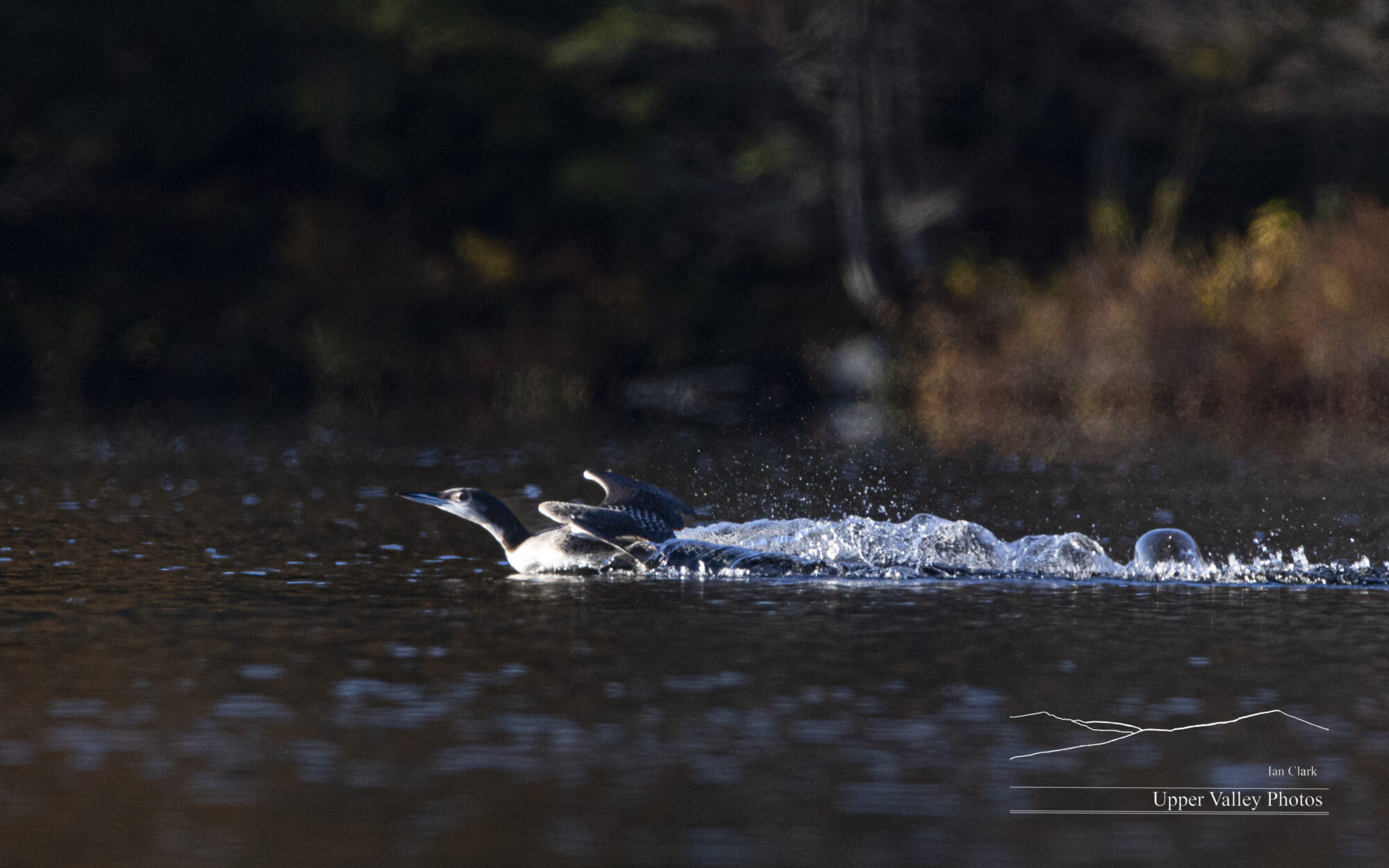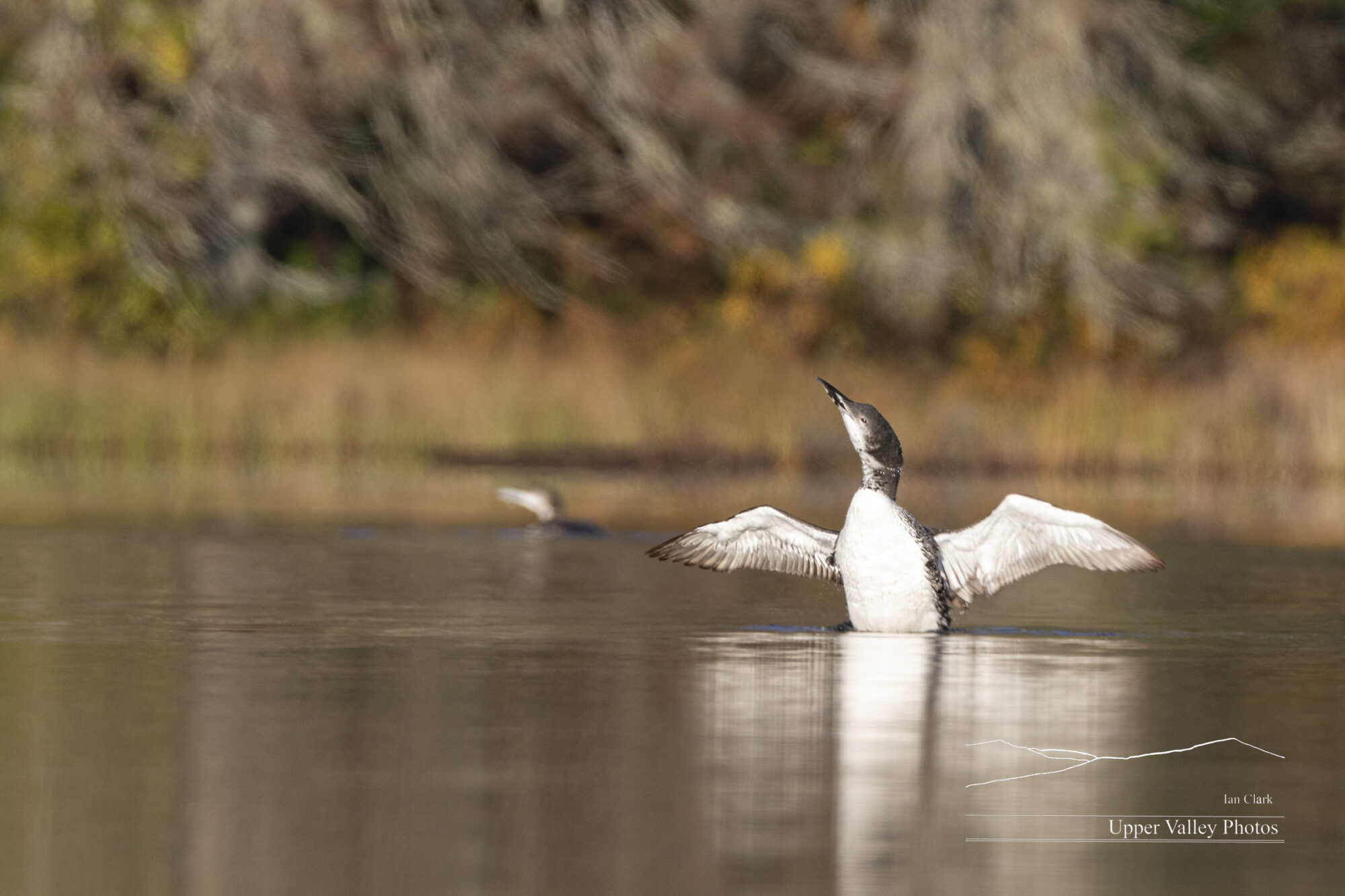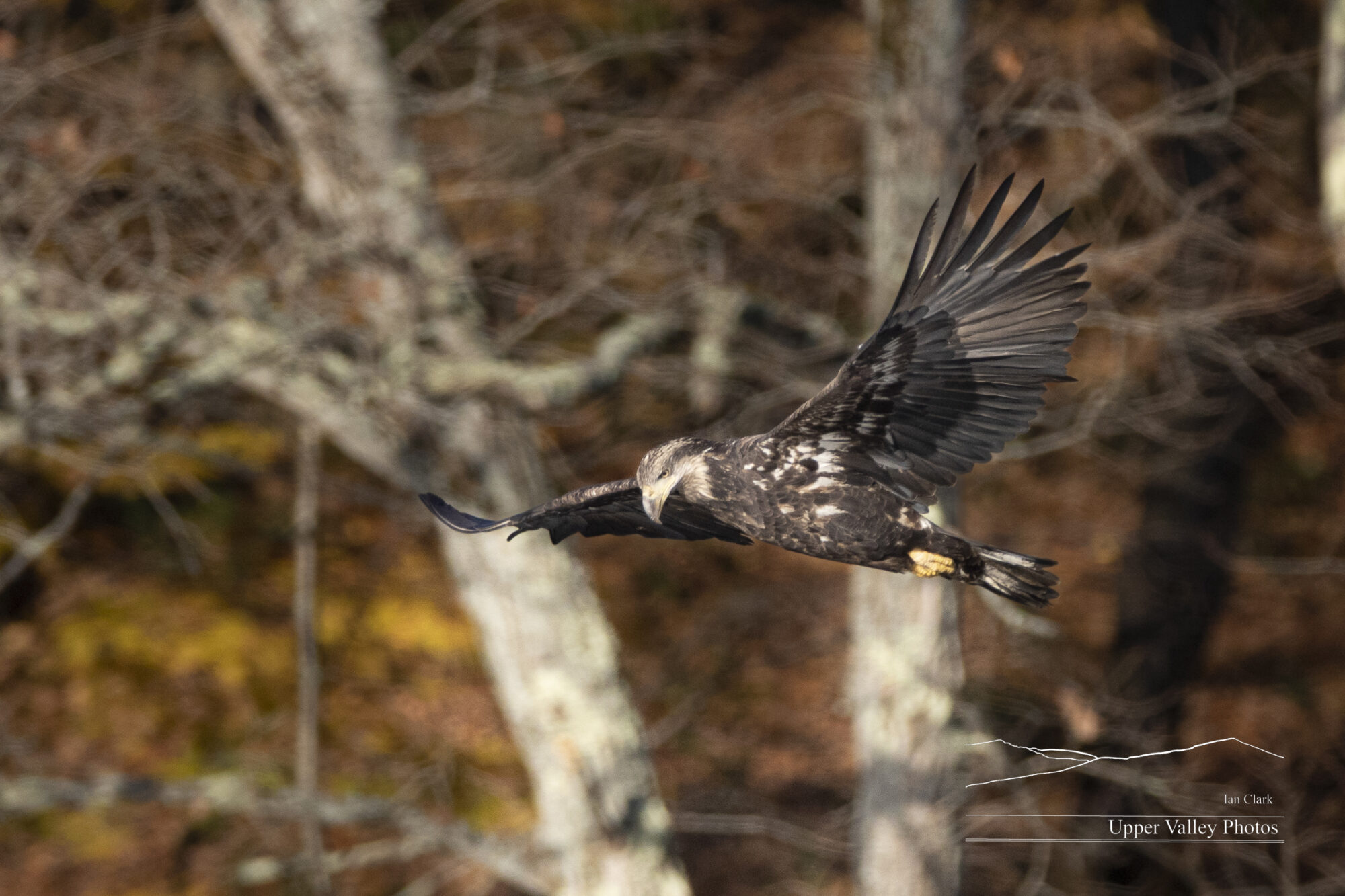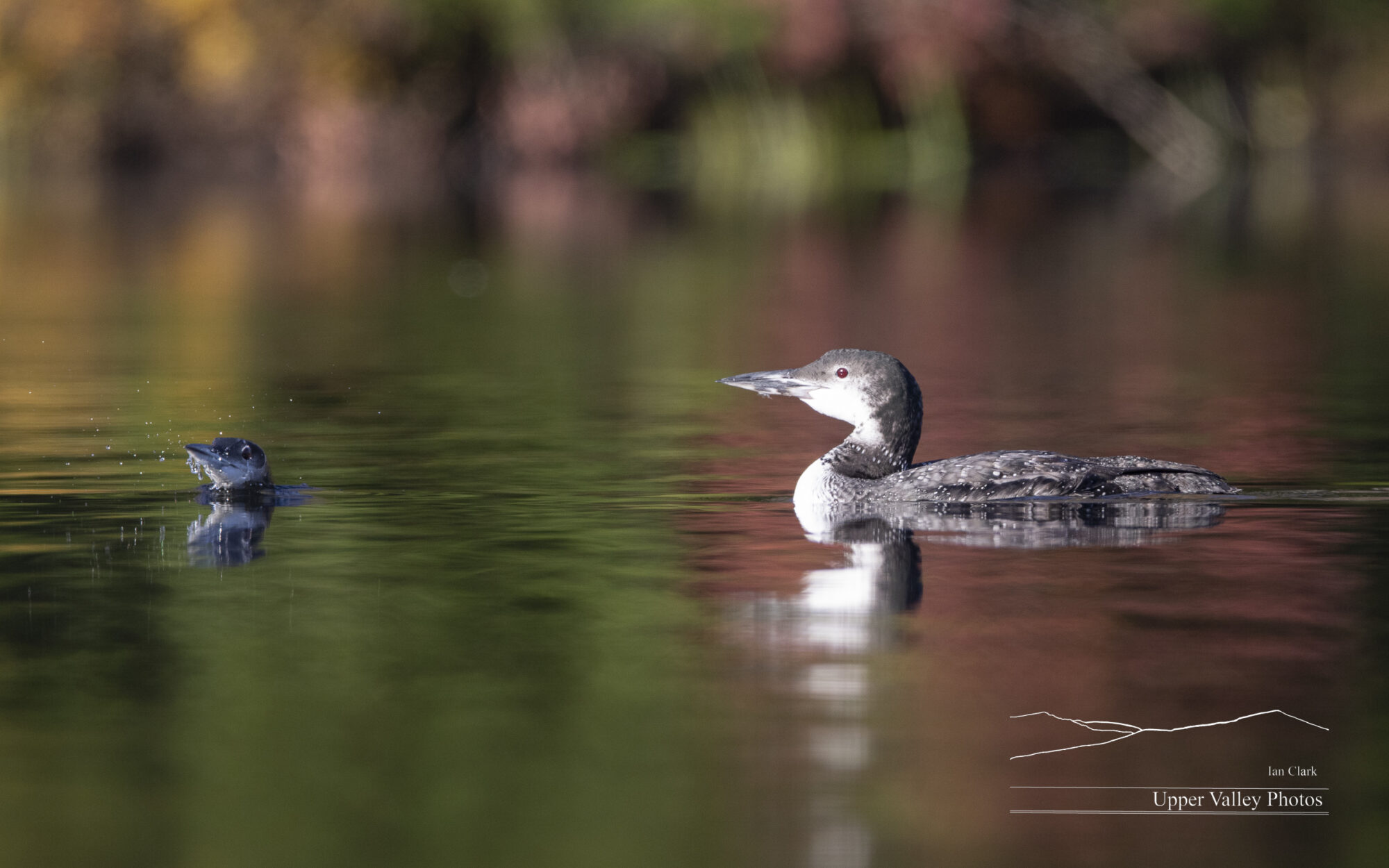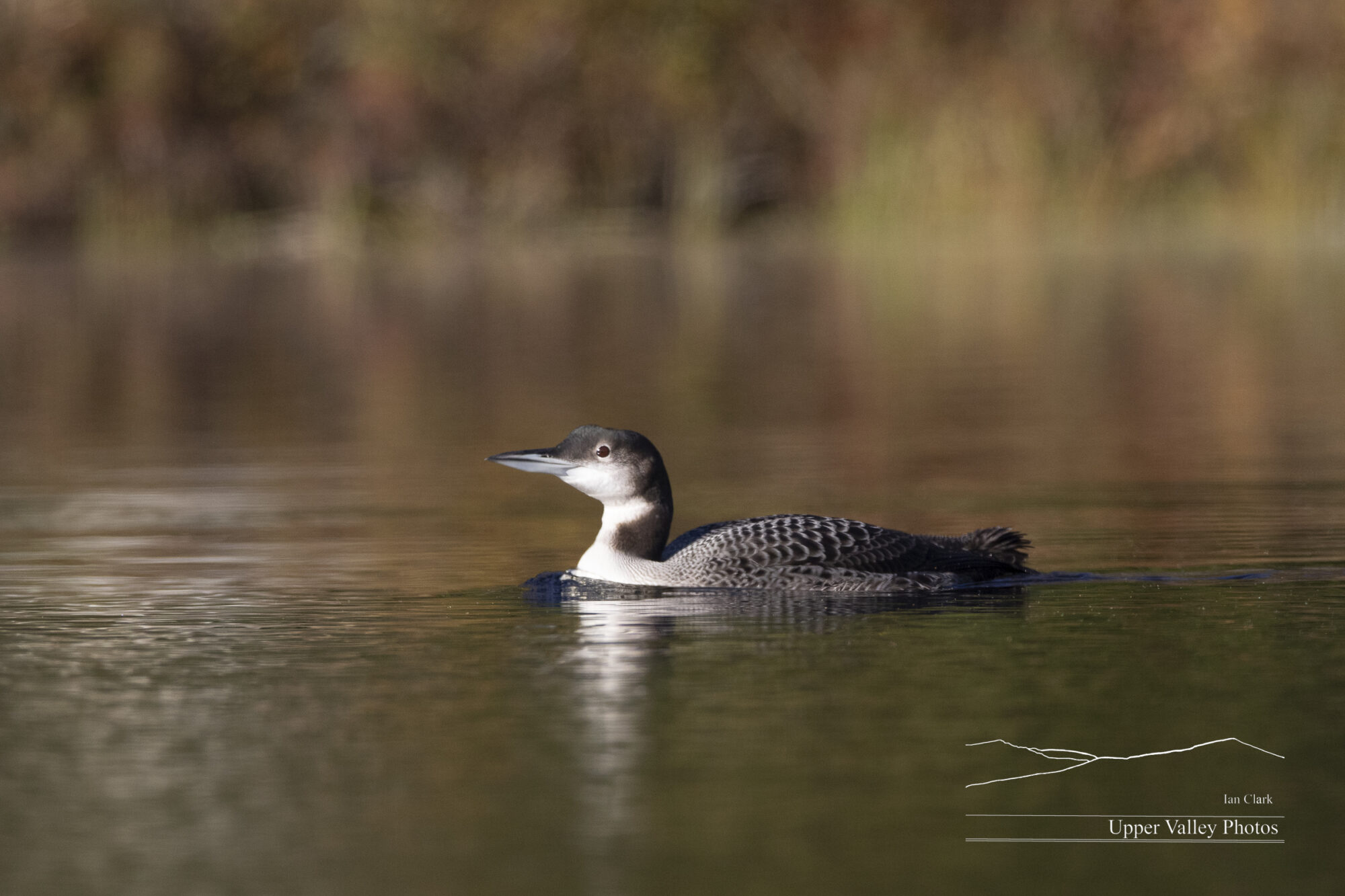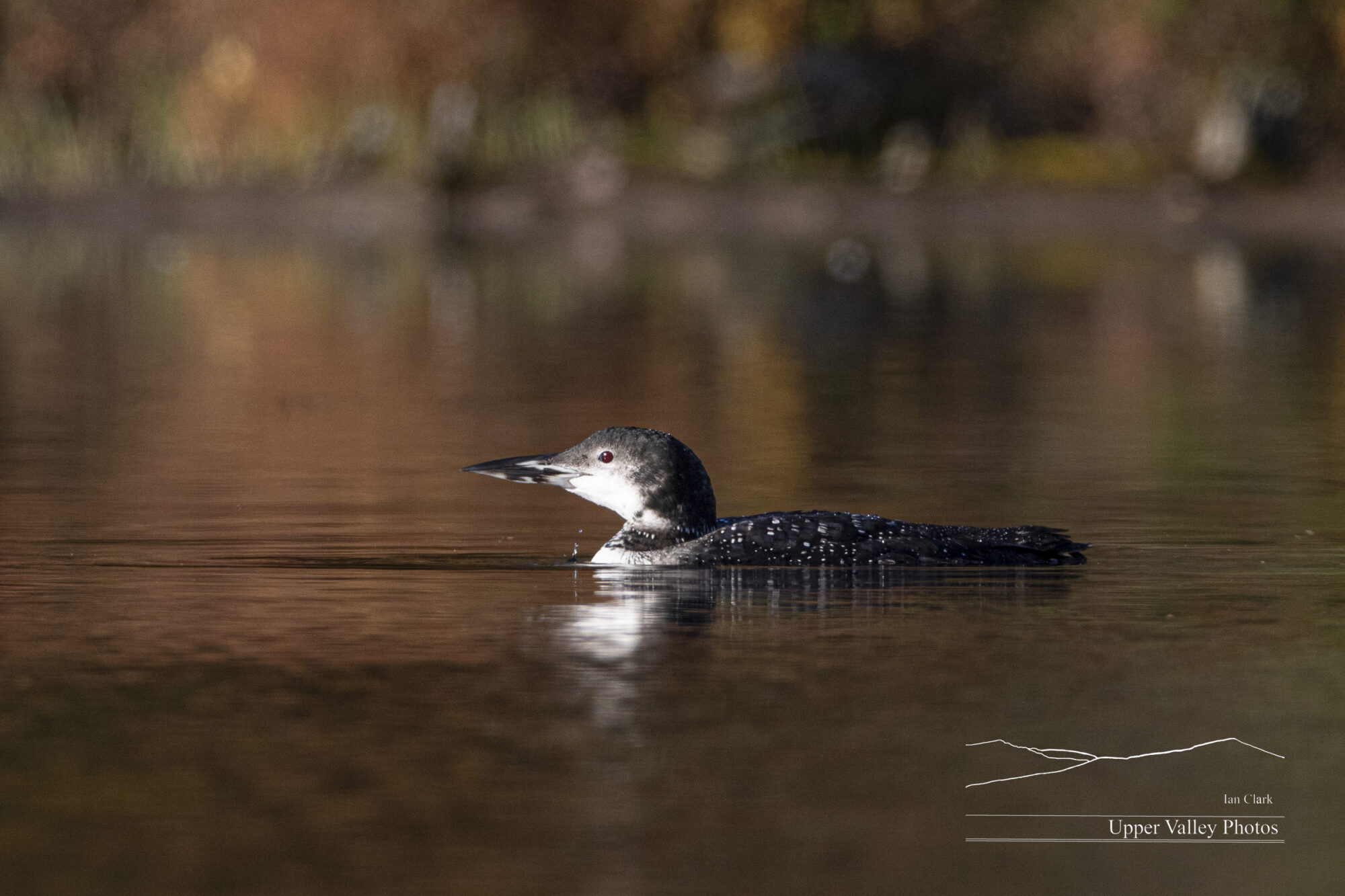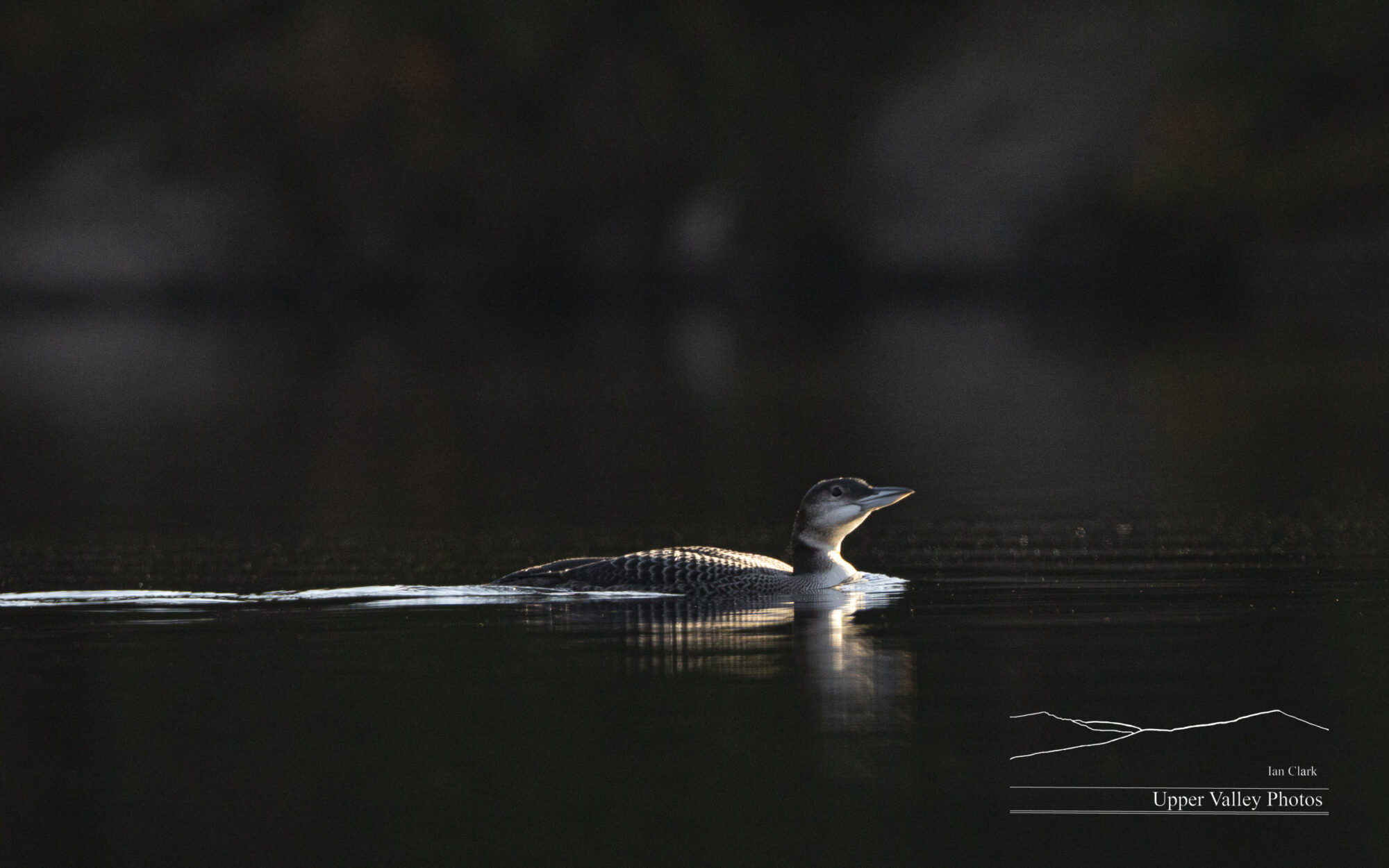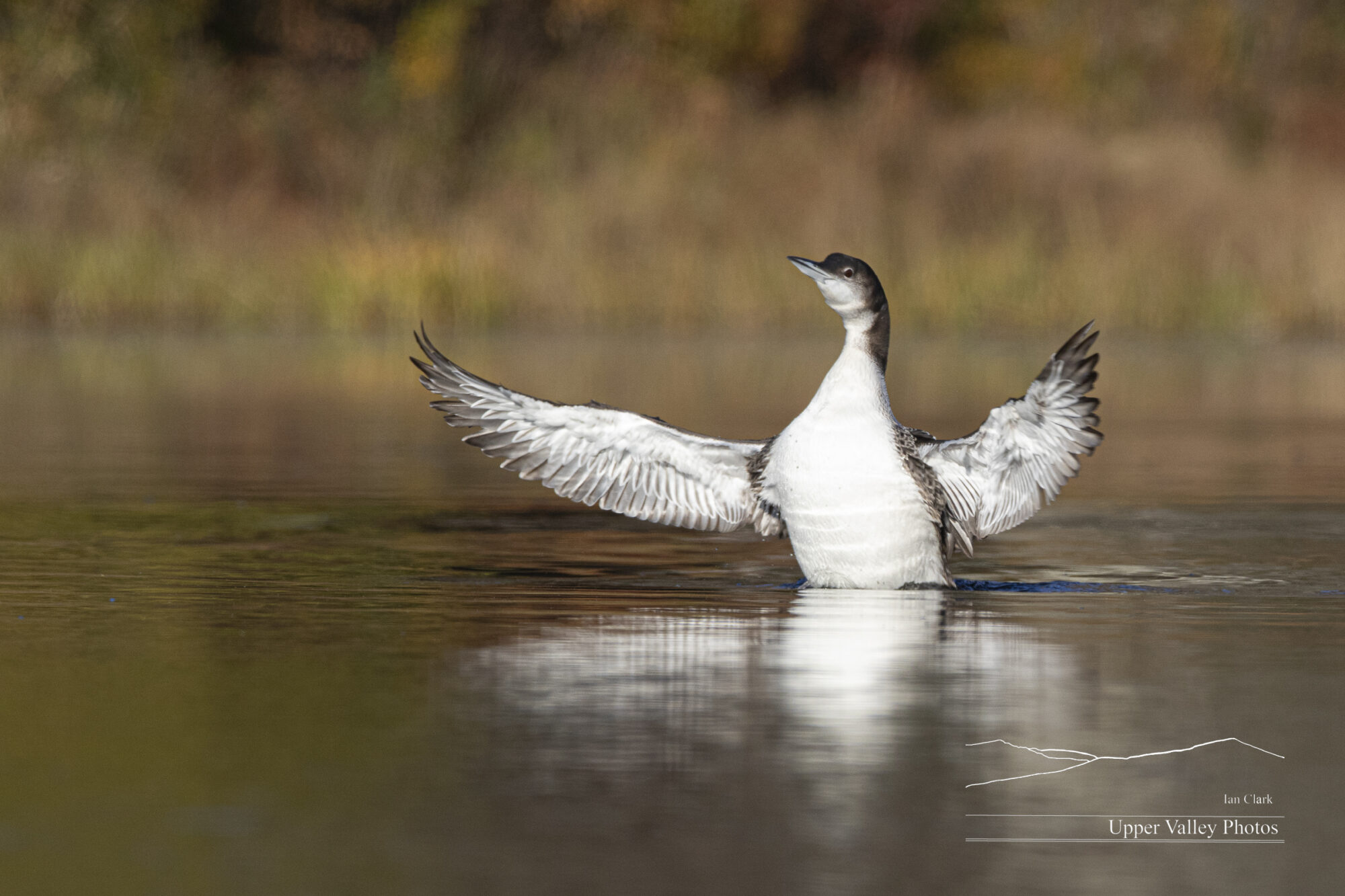Posts Tagged: loons
Loon Chicks Now Nine Weeks Old
Thanks to everyone who stopped by to say hello at the League of NH Craftsmen Fair. Nice to know there are actually people out there looking at my blog. My next show will be the Fall Crafts at Lyndhurst in Tarrytown, NY September 8, 9 & 10.
The weather and my travels have kept me from checking in on the loons since July 24 when I found the Eastons fighting with a pair of intruders challenging them for the pond. Sunday morning dawned without rain and only a light breeze. I headed back to check on the Eastons.

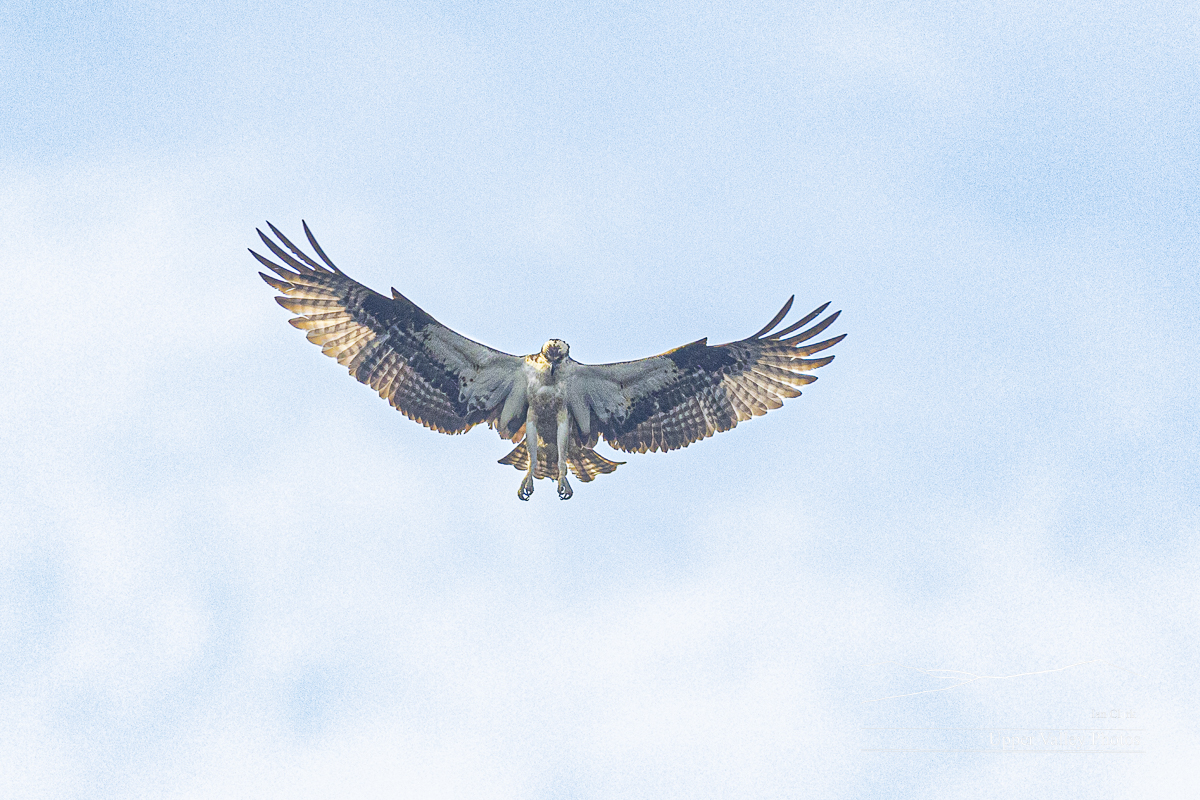
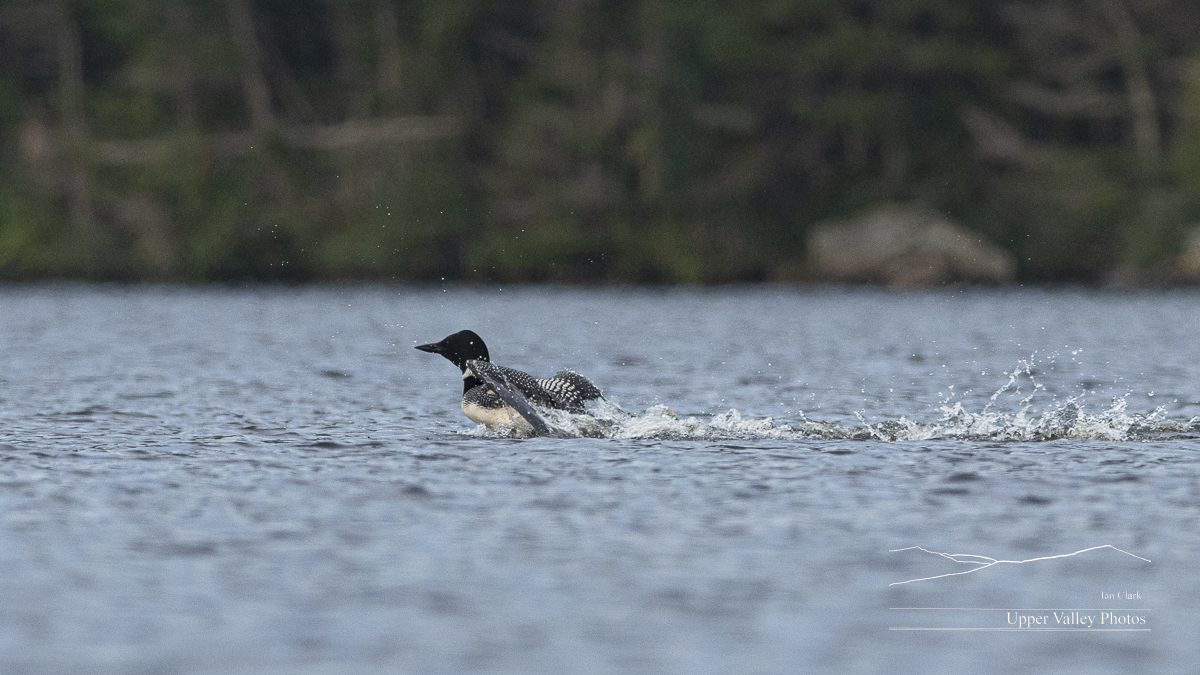
Sometime later, they headed back north and rounded a corner out of sight. A loon flying south appeared and circled to gain height to clear the hills as it departed. Mom took off and followed a few moments later.
Dad gathered the chicks and headed back south, foraging along the way. One chick was almost exclusively feeding itself while the second was putting dad to work.
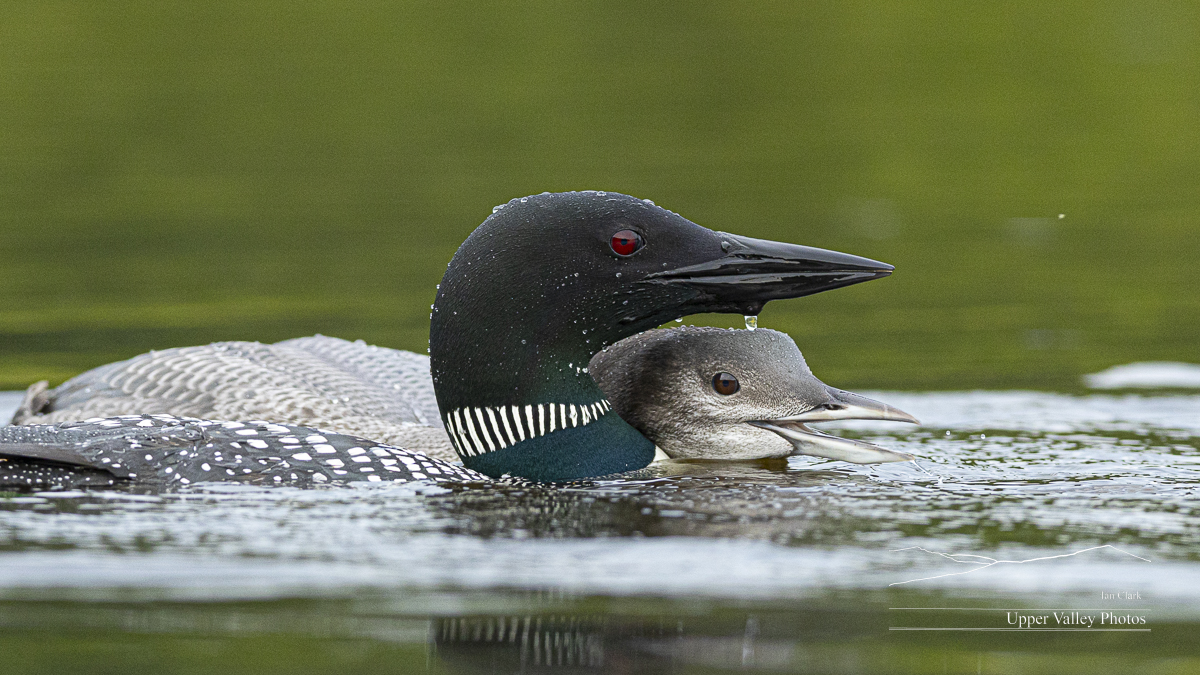
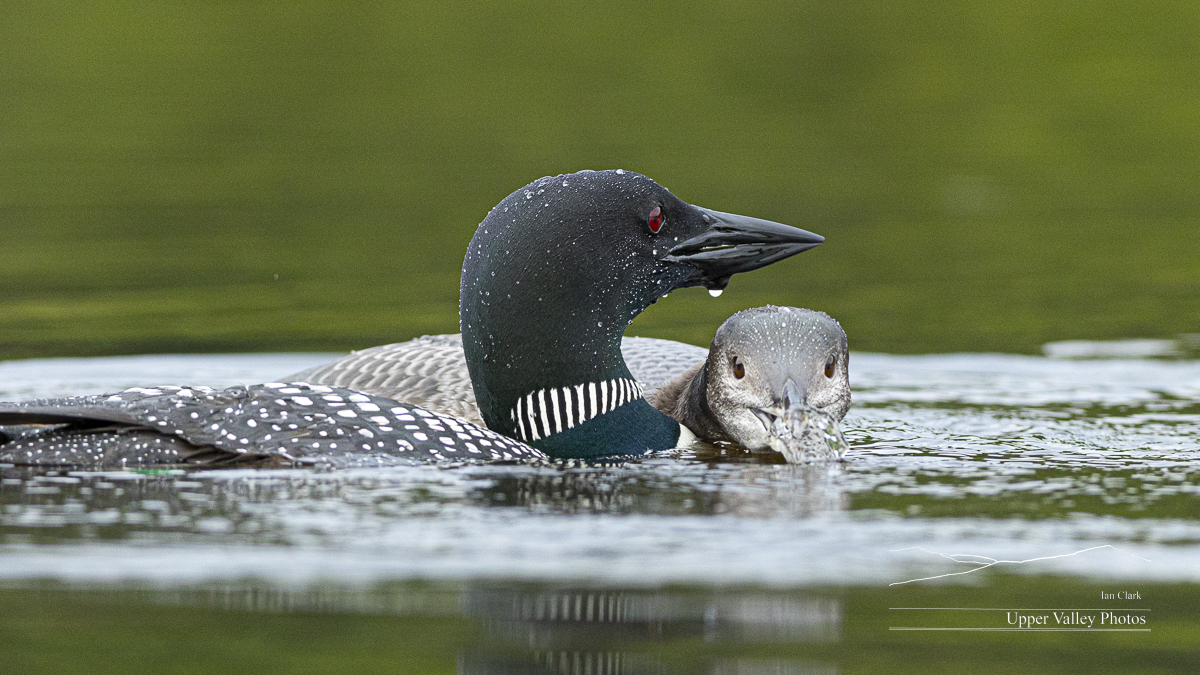

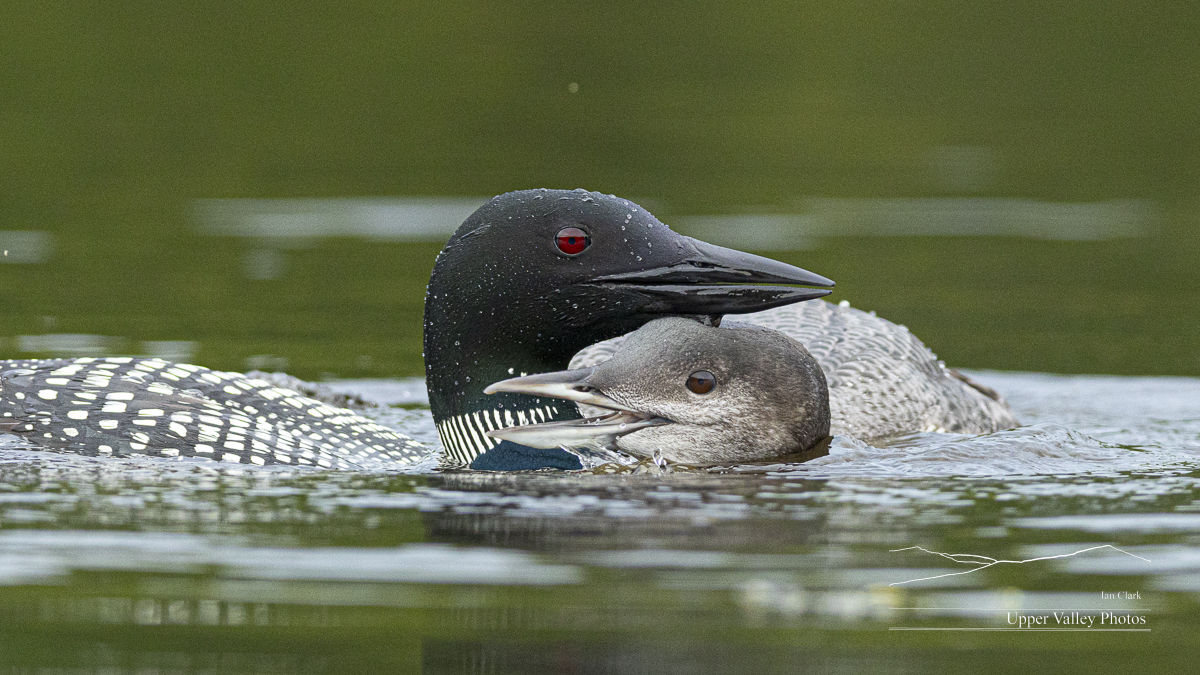
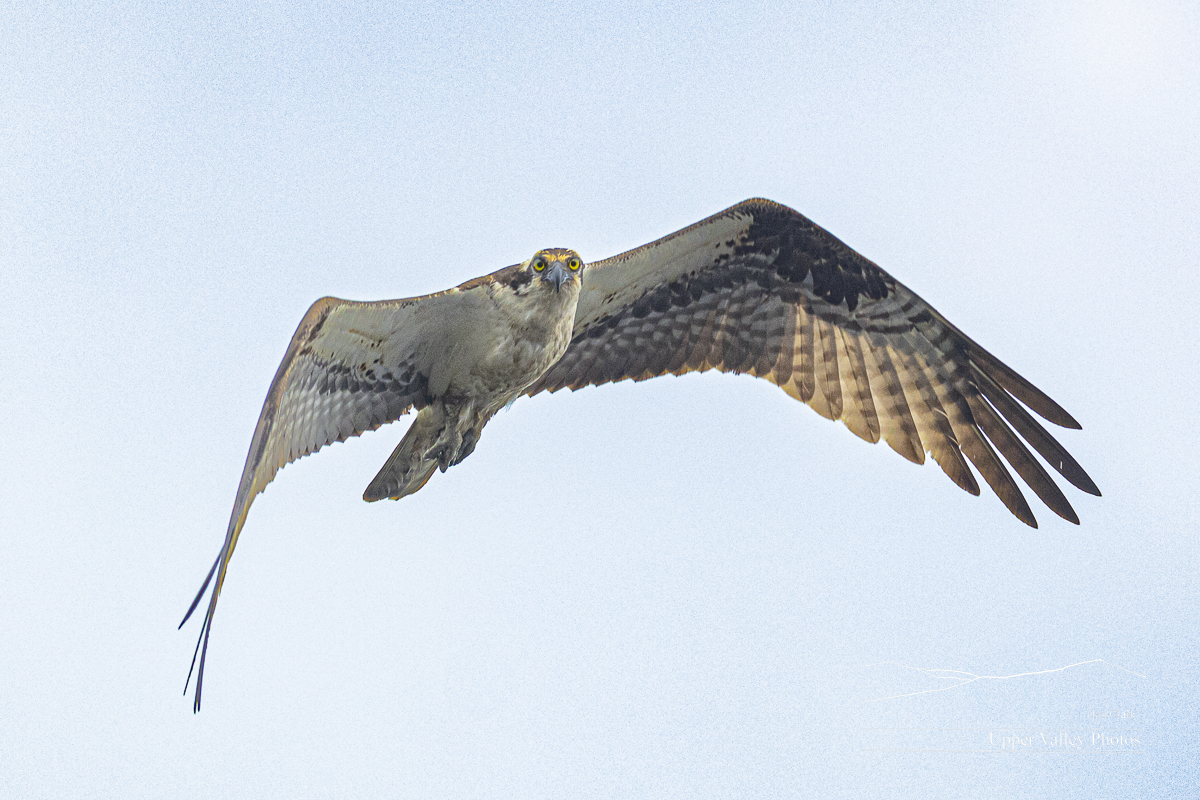

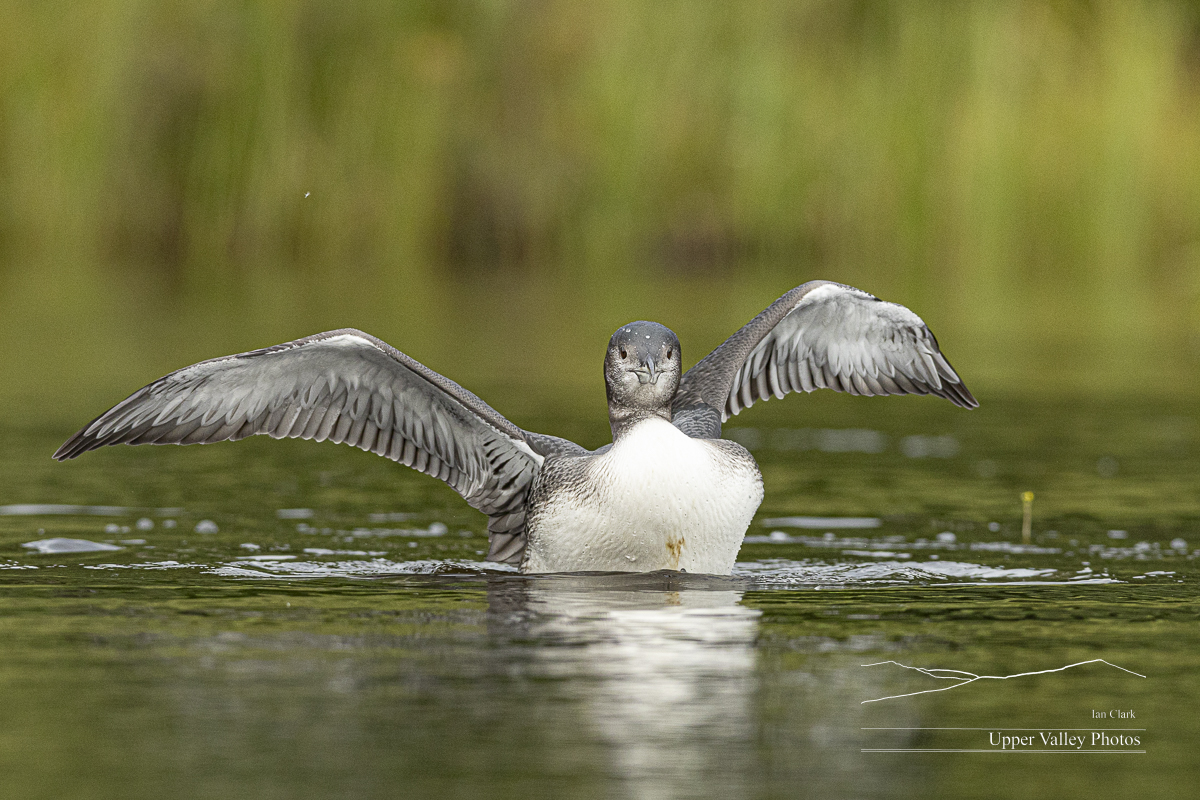
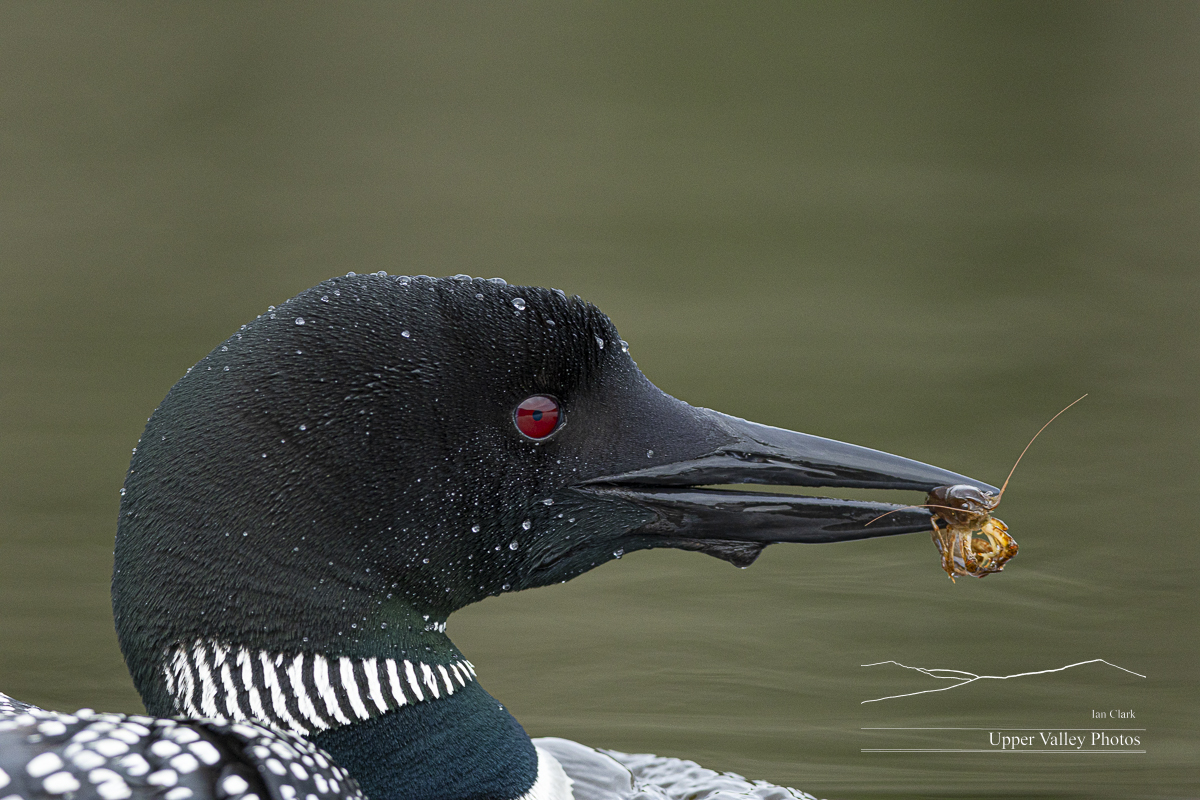
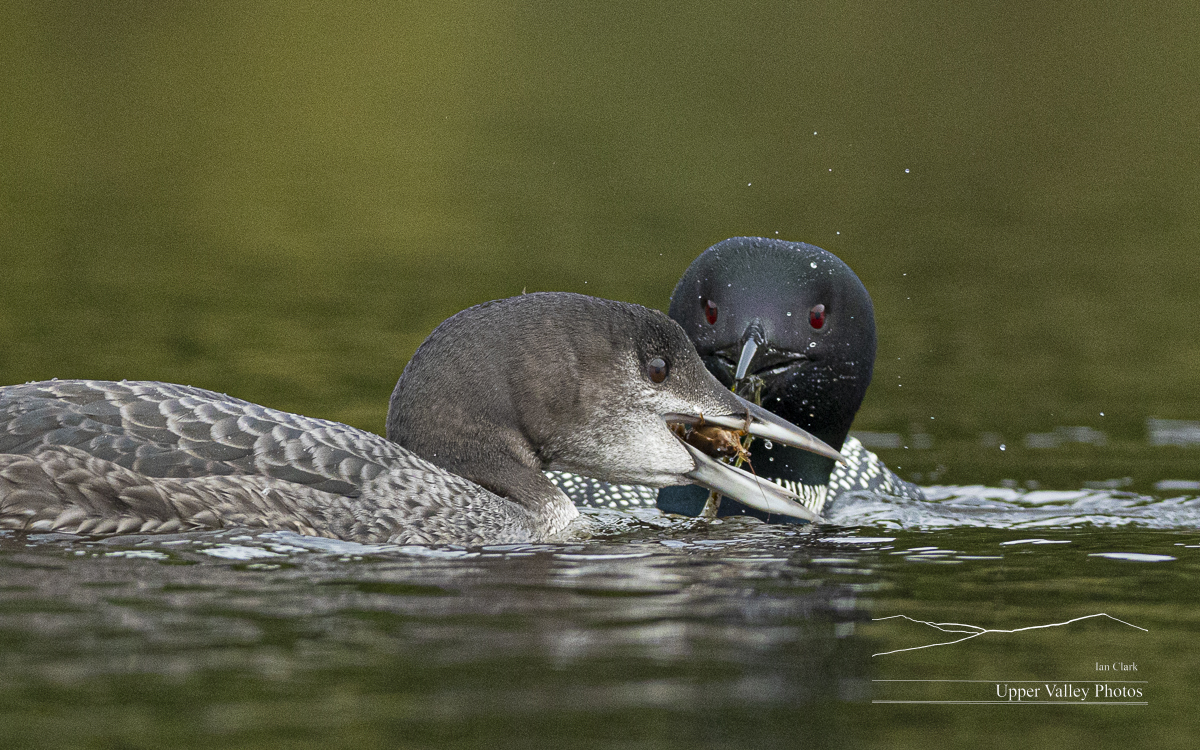

Our osprey made another dive that missed and circled a few times before heading off to the north.
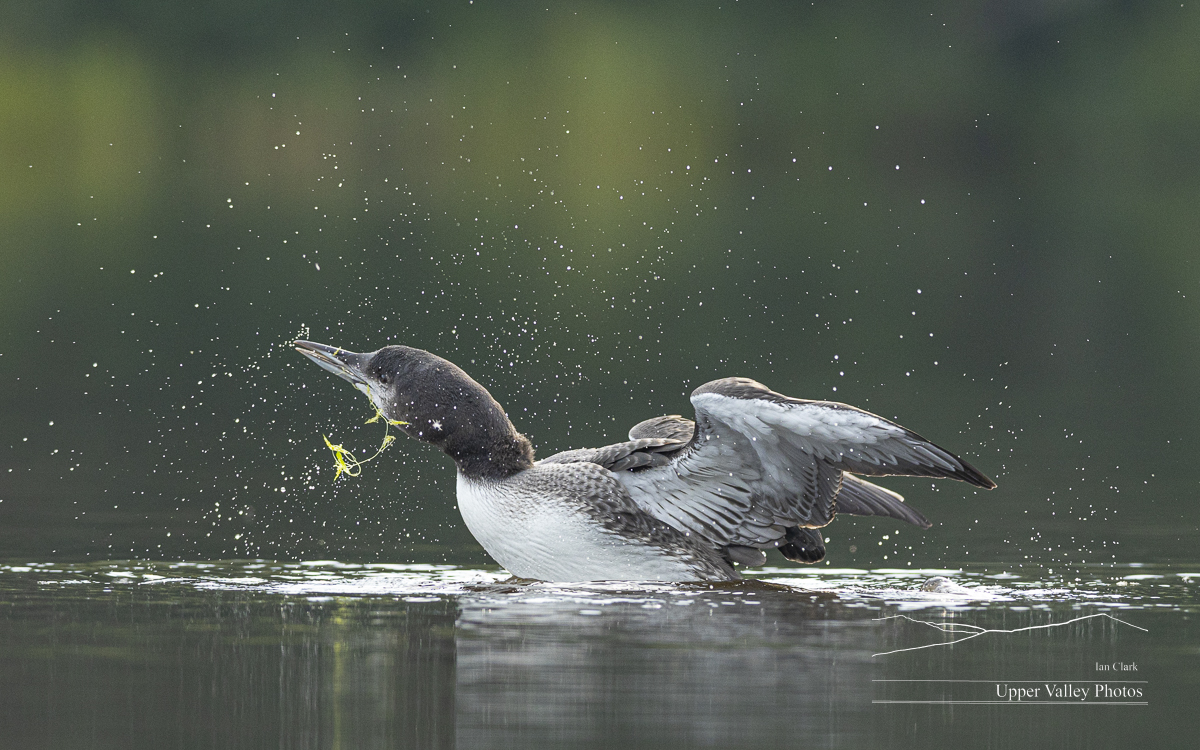
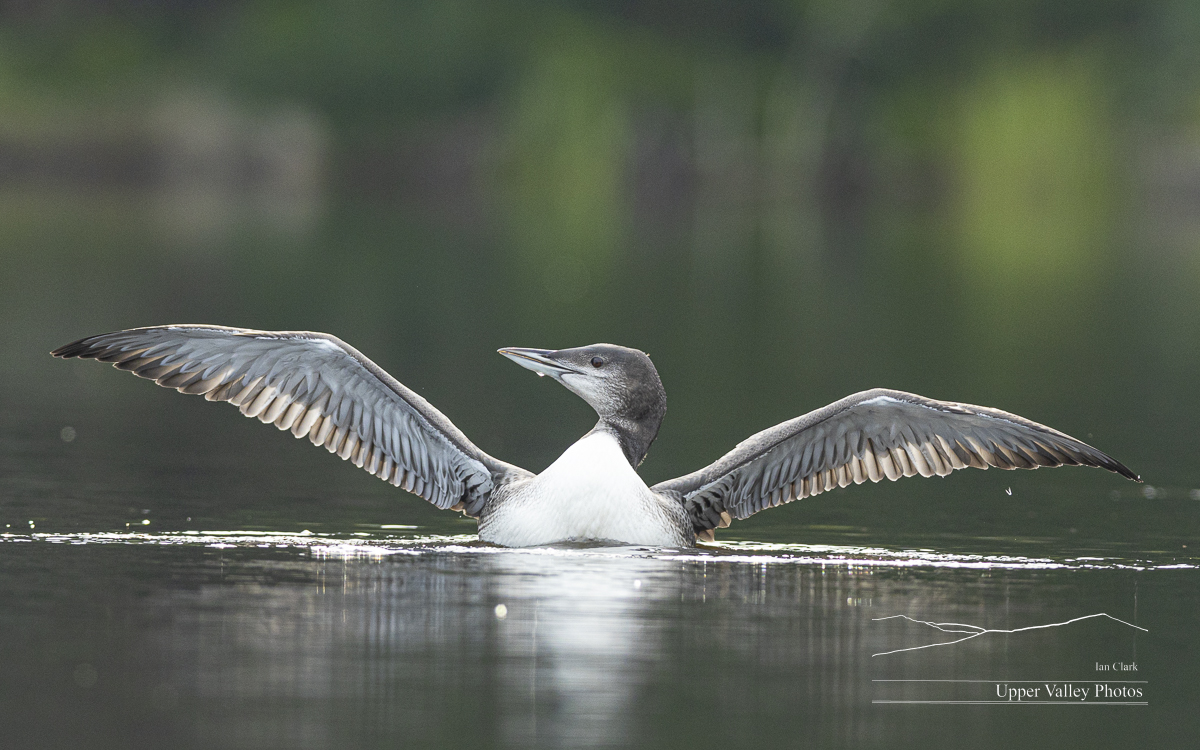

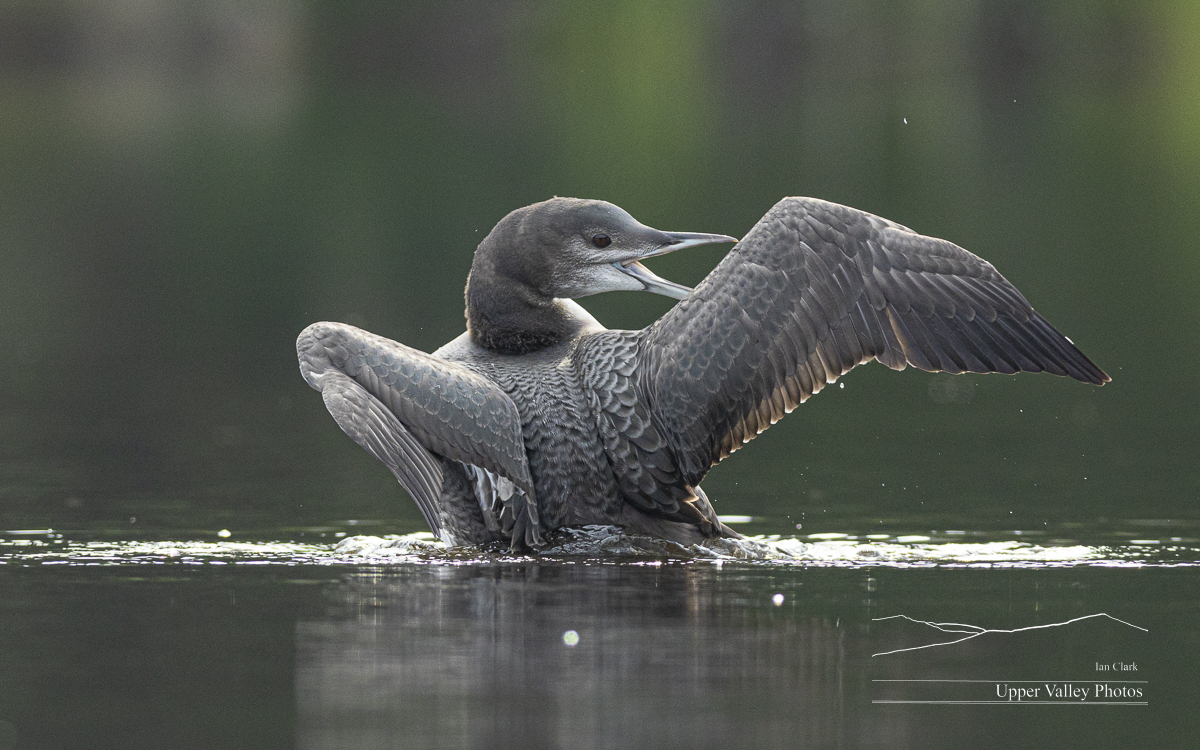
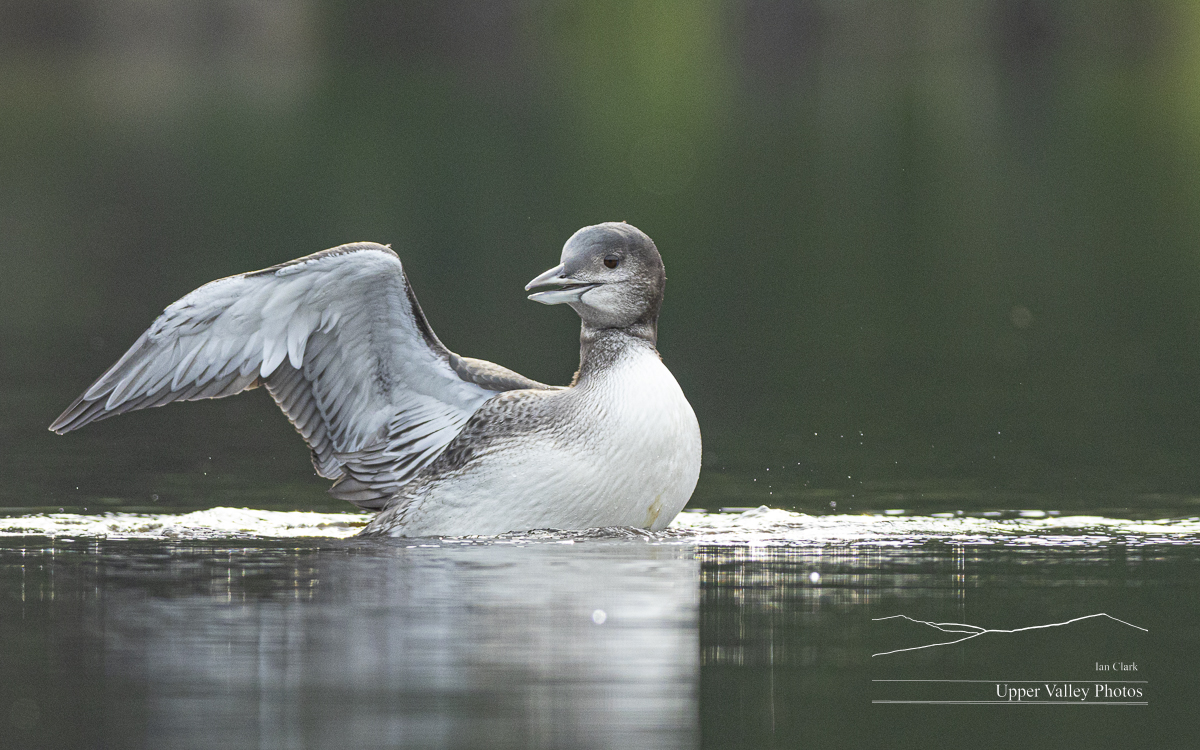

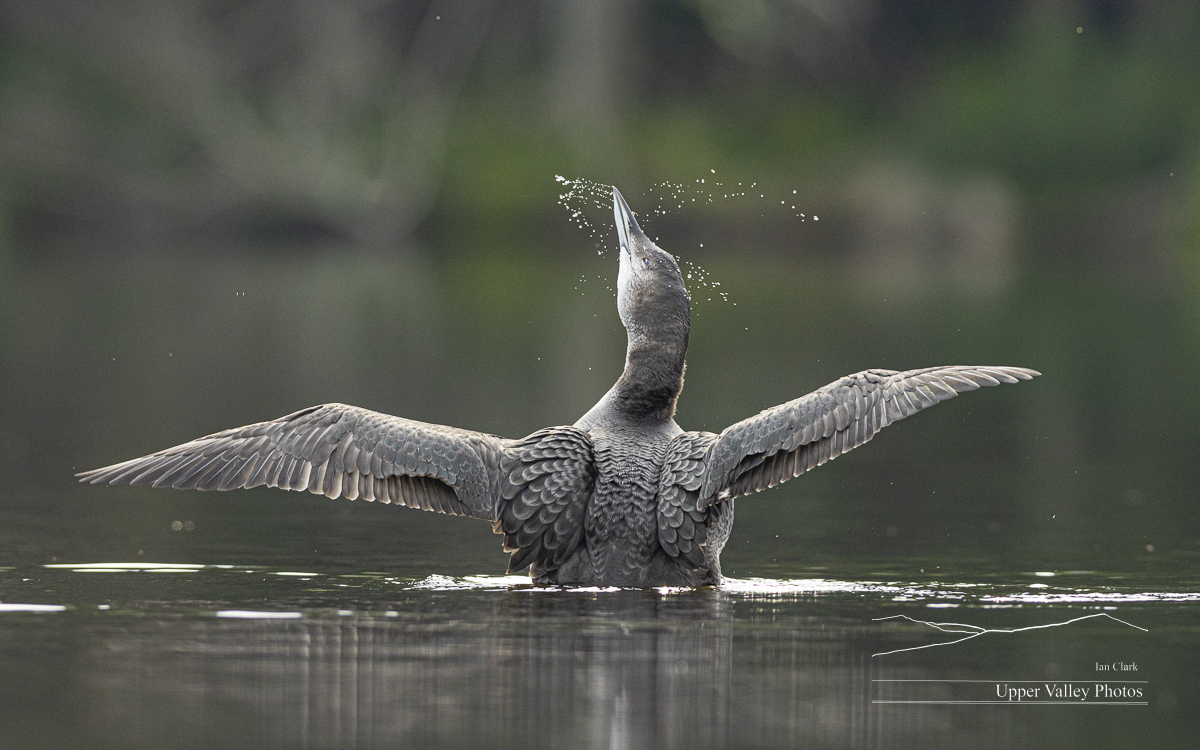
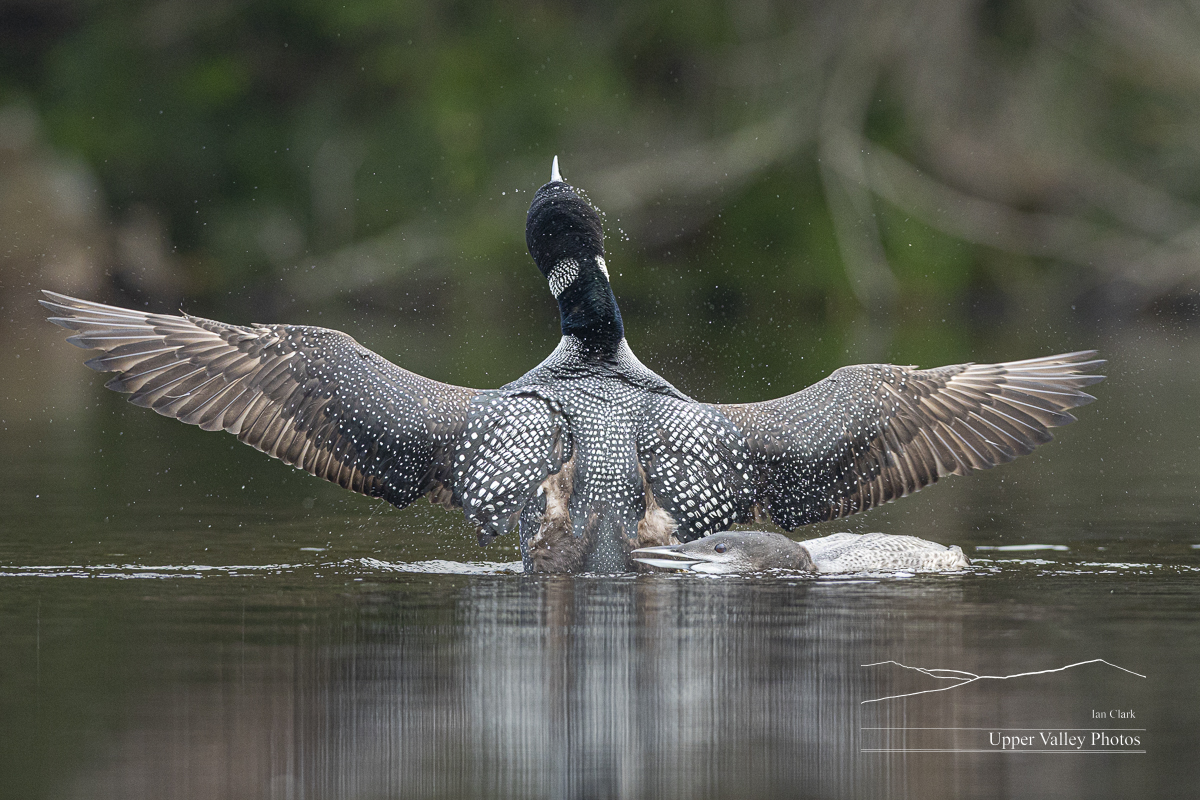


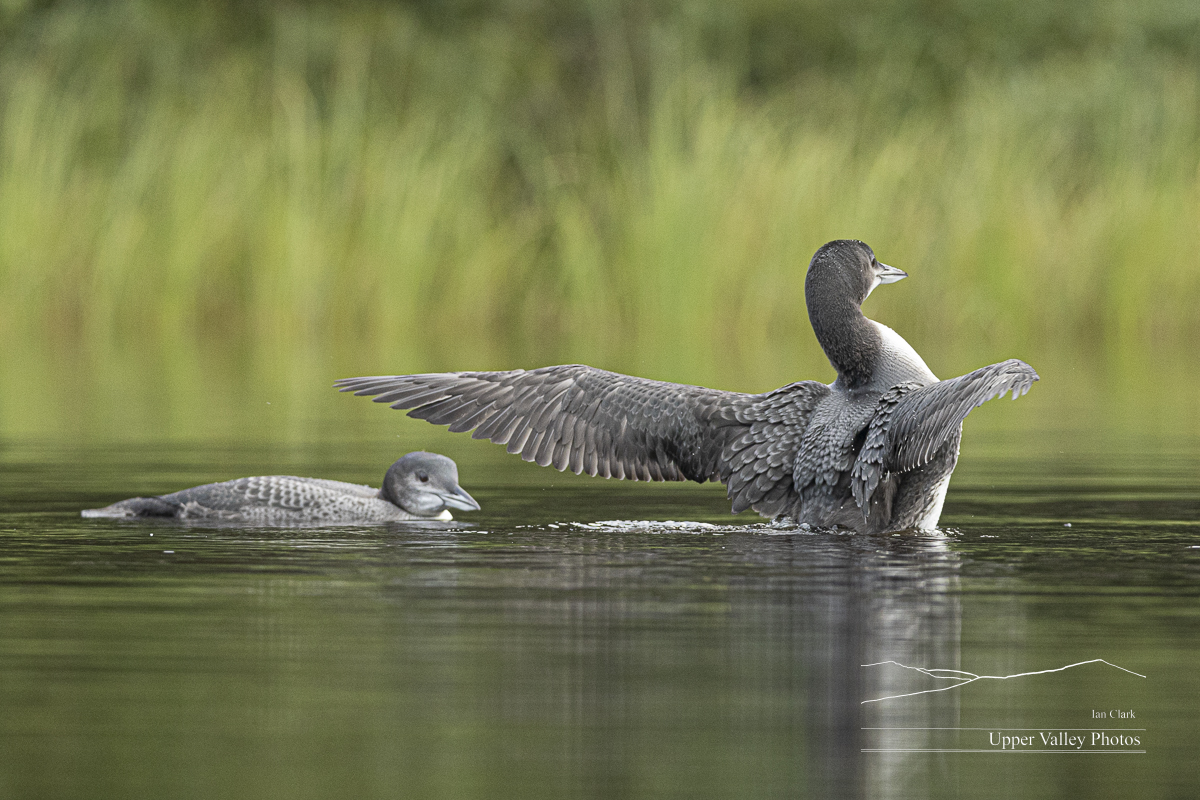
It was time for me to head out and I started paddling towards the boat launch.
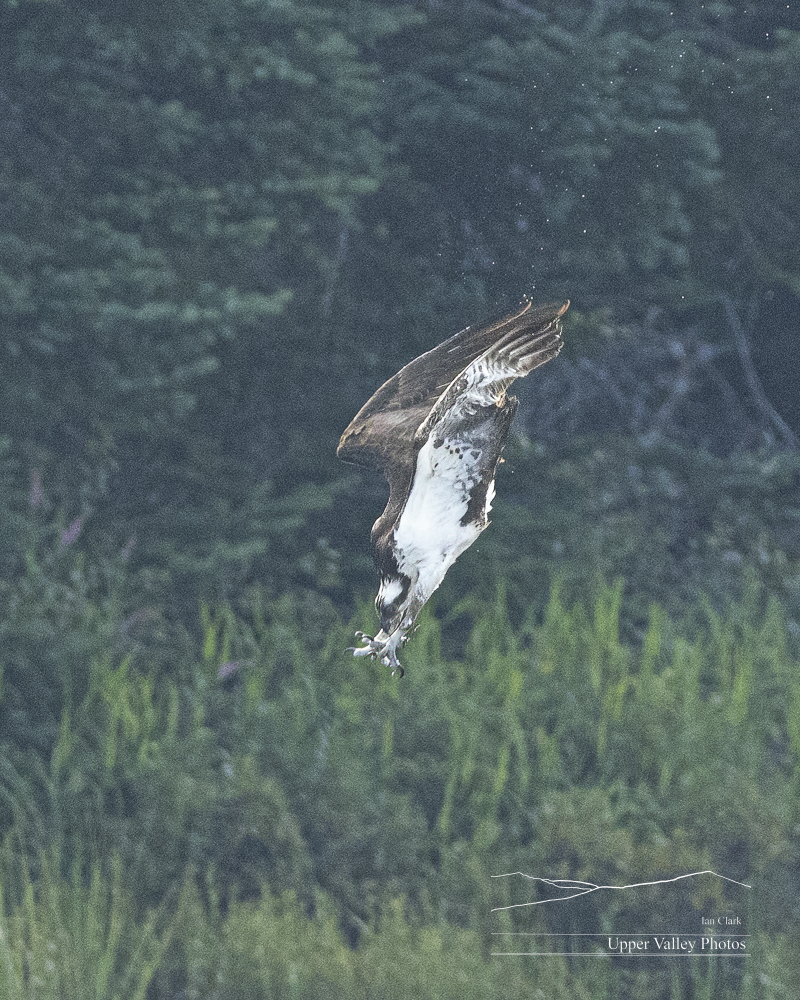

A friend on the Middleton’s pond tells me they’ve had intruders regularly over the past few weeks. I’m watching the weather and will get out to check on them and the Westons as soon as I can.
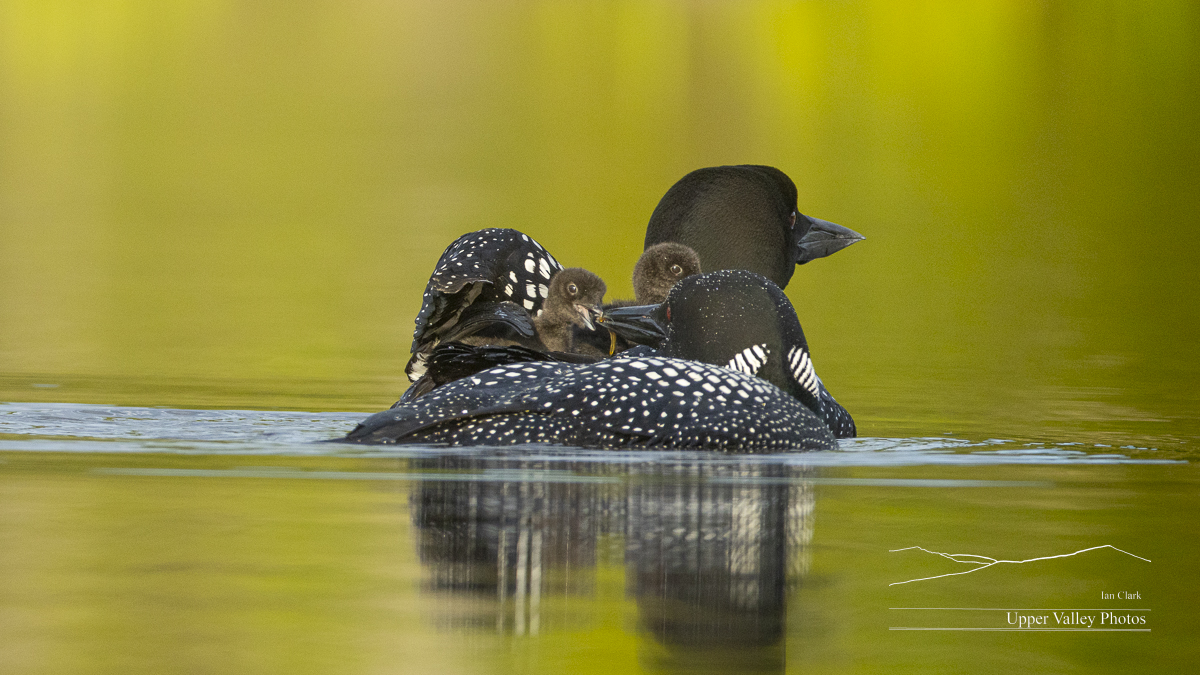
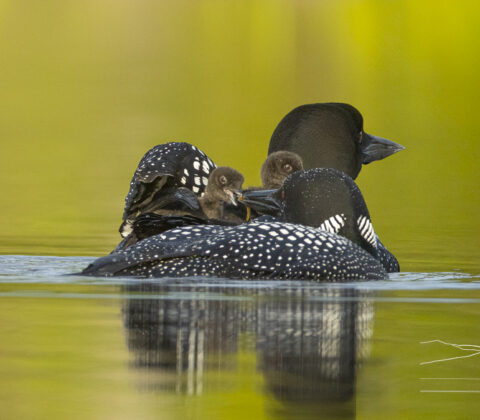
The Eastons Have Two Chicks
The last three years, the Eastons have hatched their chicks the third Friday and Saturday of June. I’d visited last Friday without any sign of chicks. Monday’s forecast suggested a chance I’d not get rained on. I headed out to visit the Eastons in a thick fog.
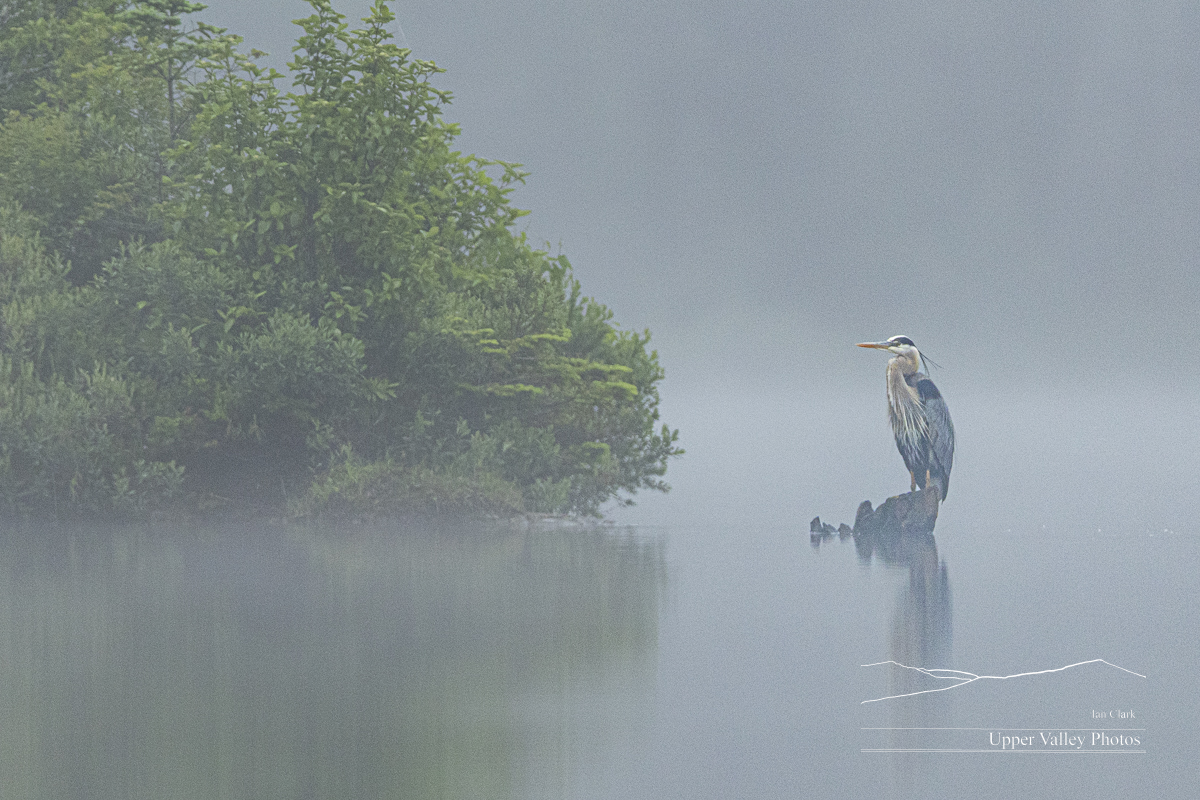
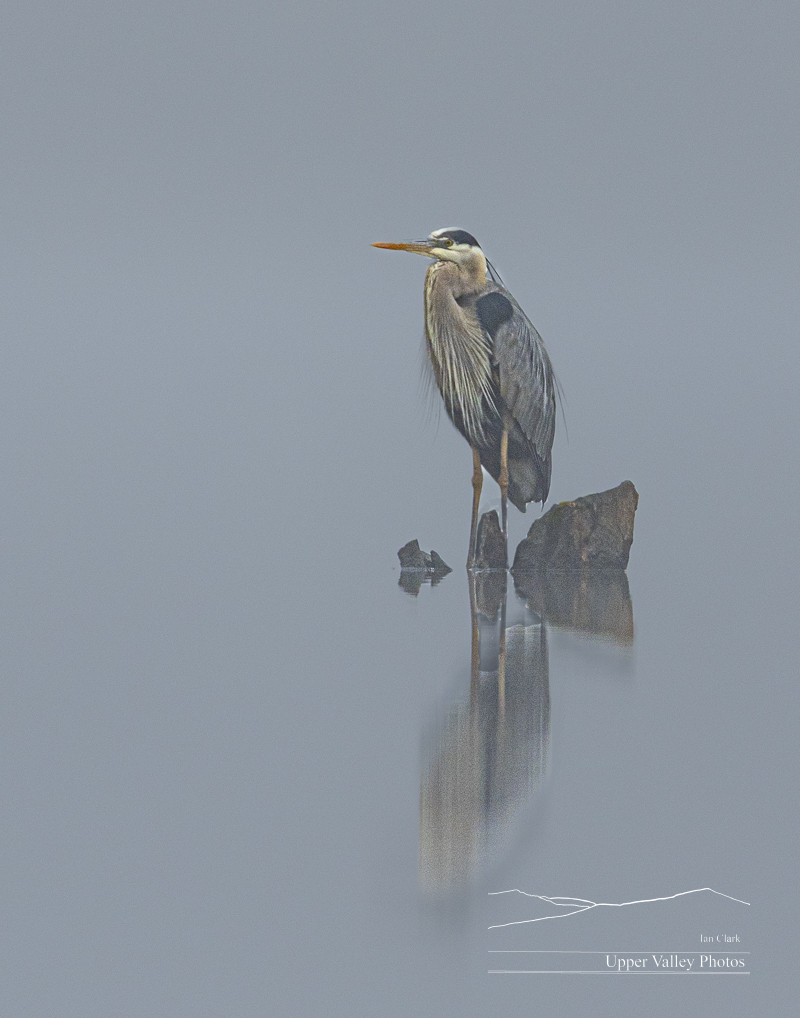

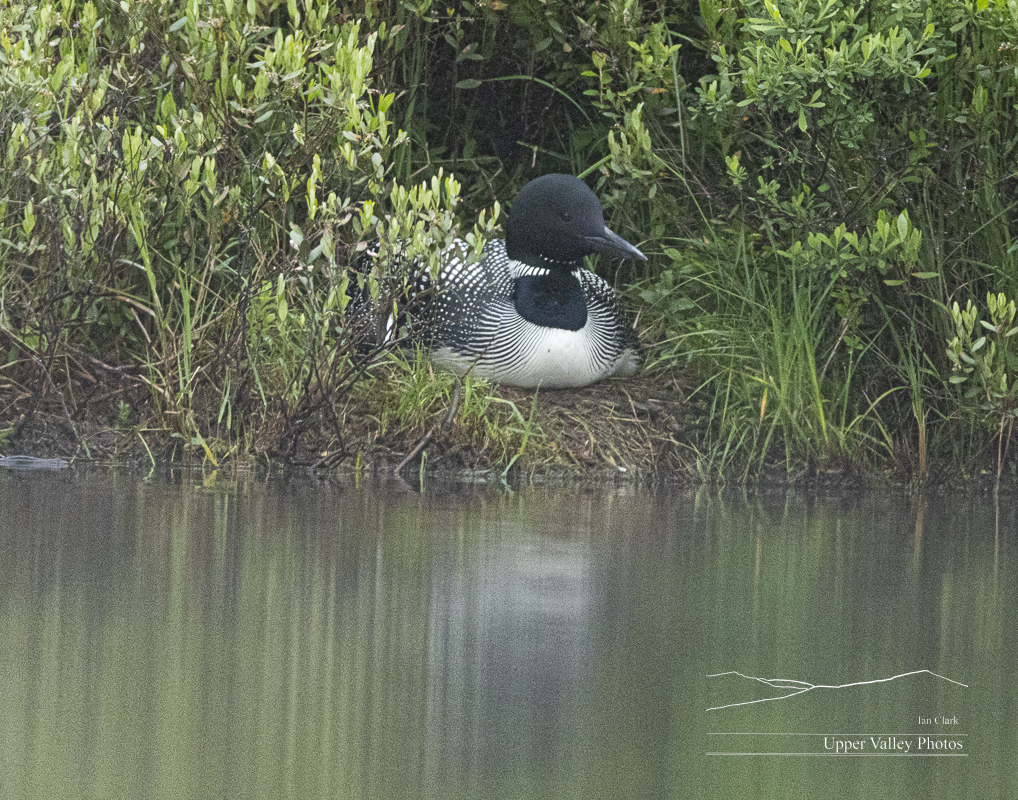
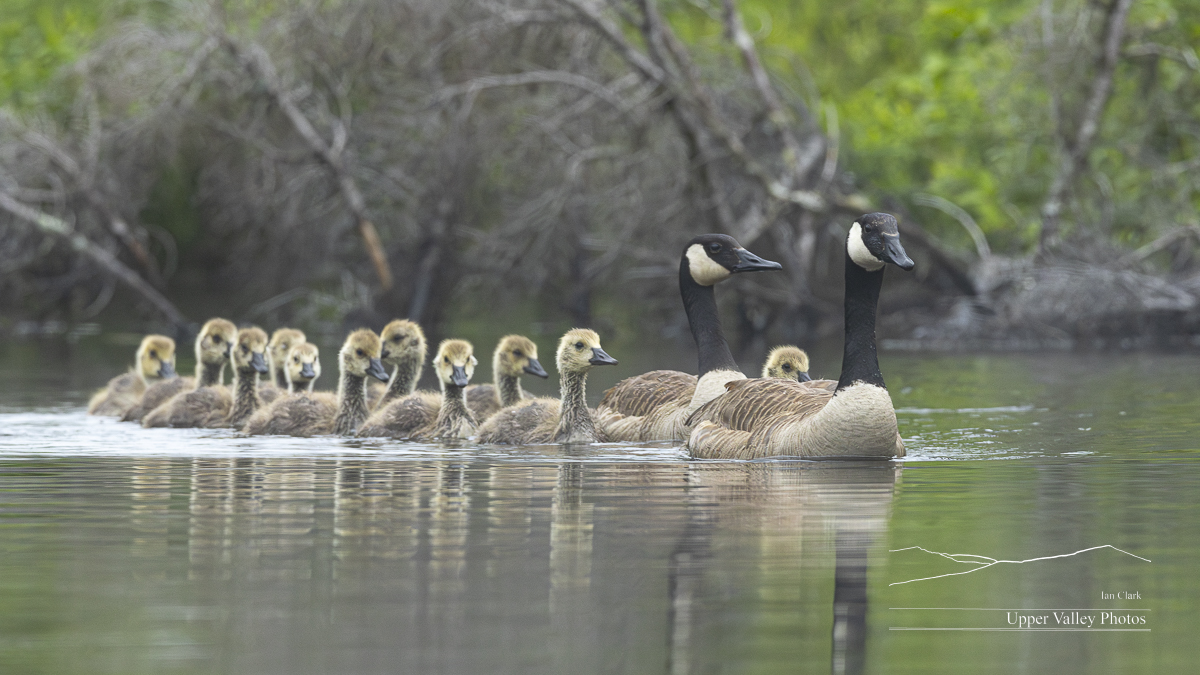
The weather improved throughout the day, I went to visit the Middletons in the evening. Our off duty parent was preening for some time before giving a series of four stretches.
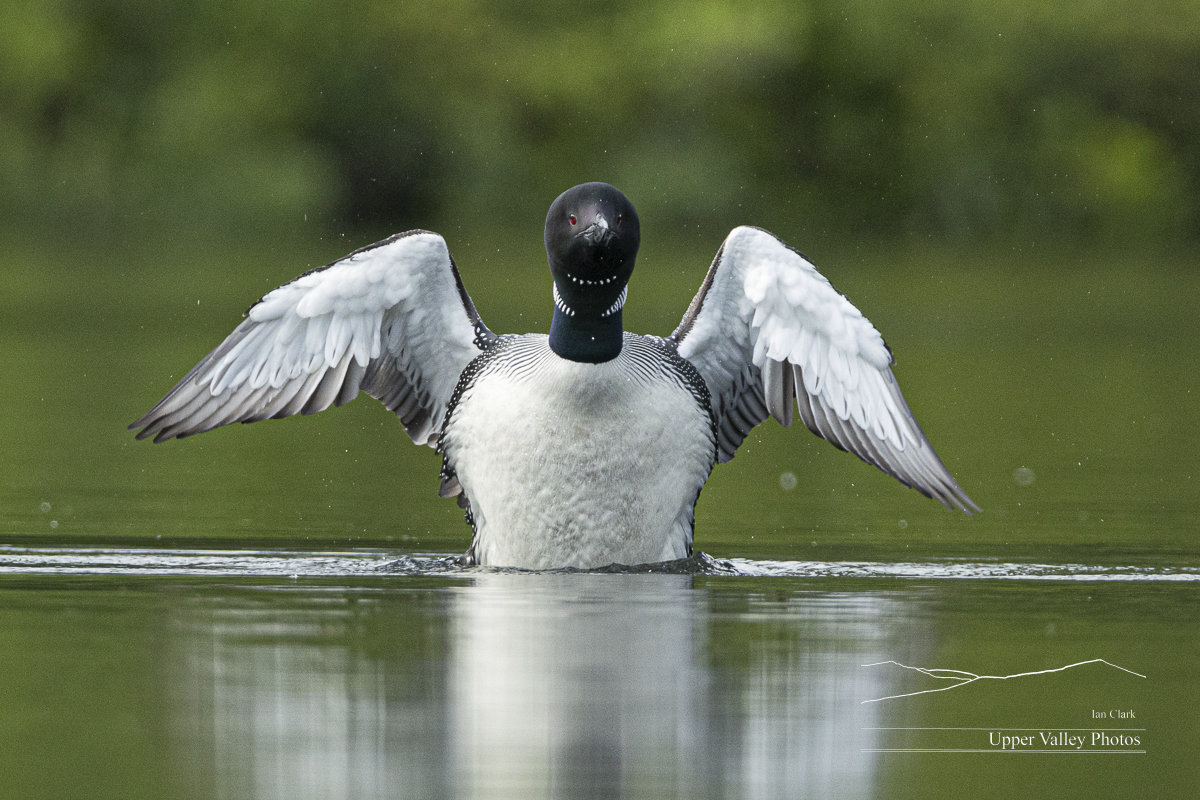
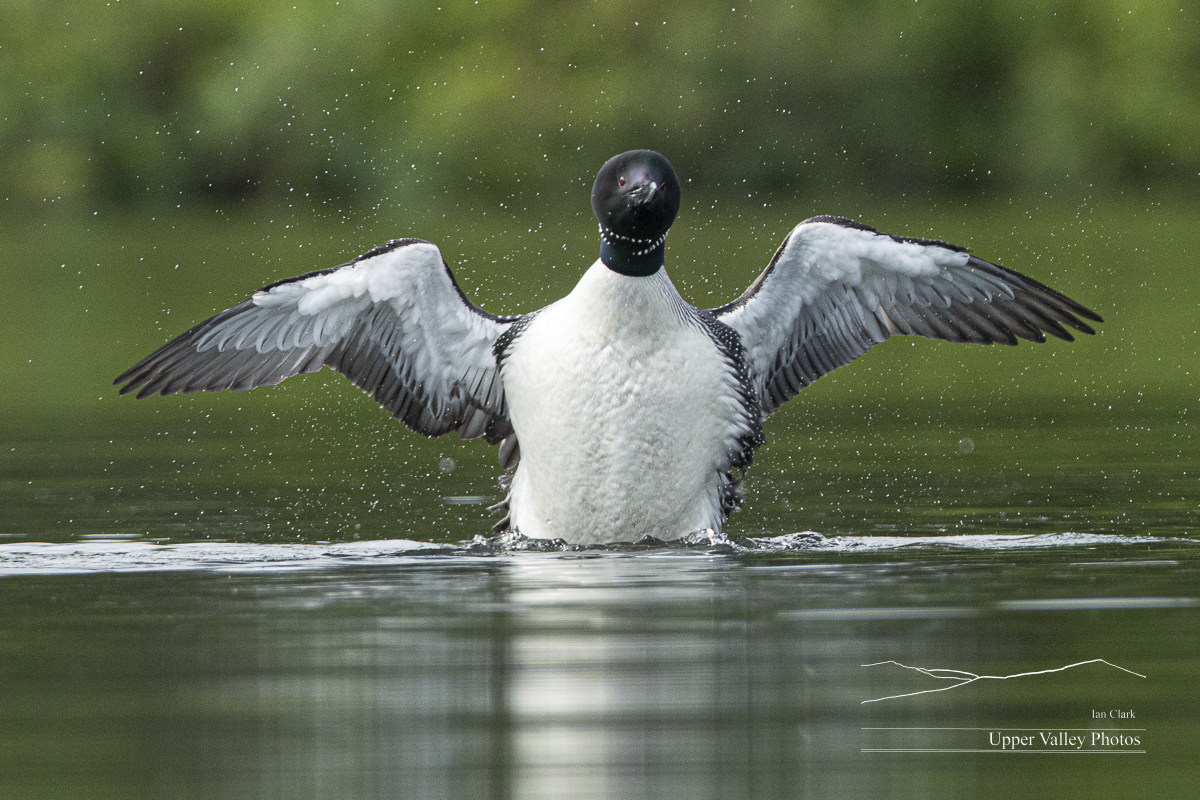
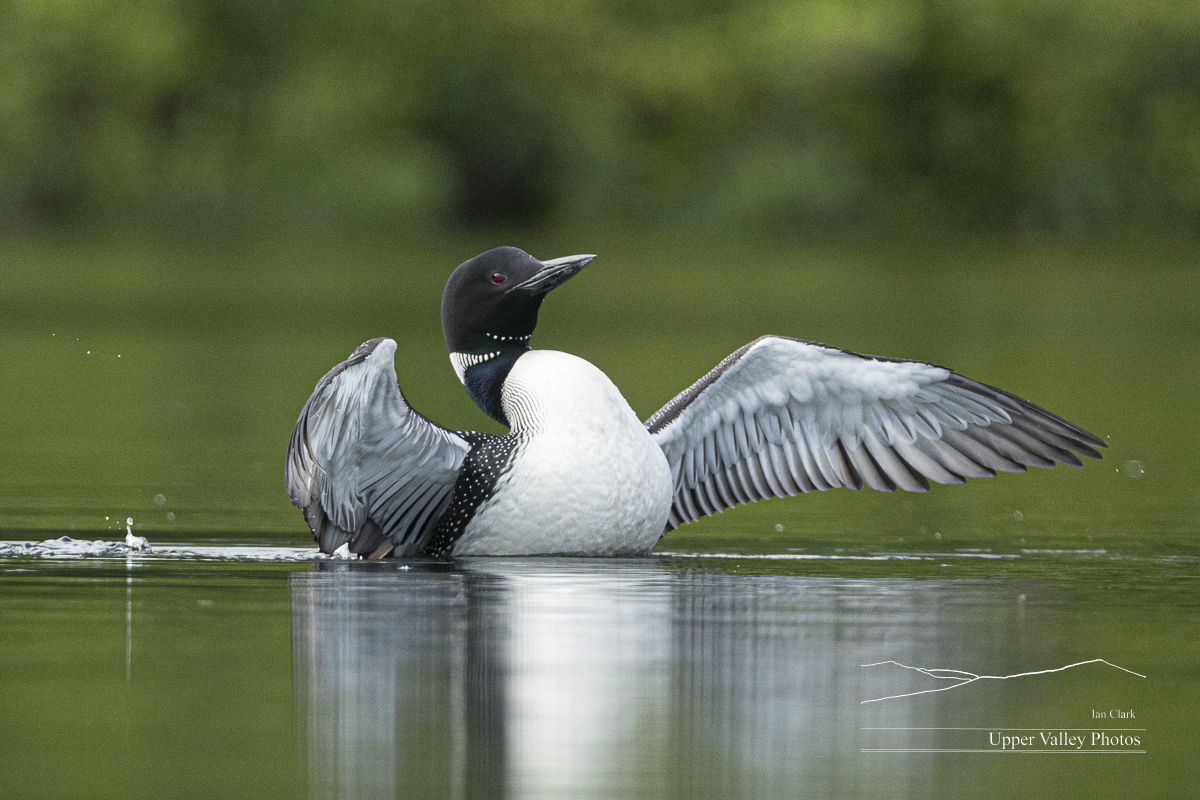
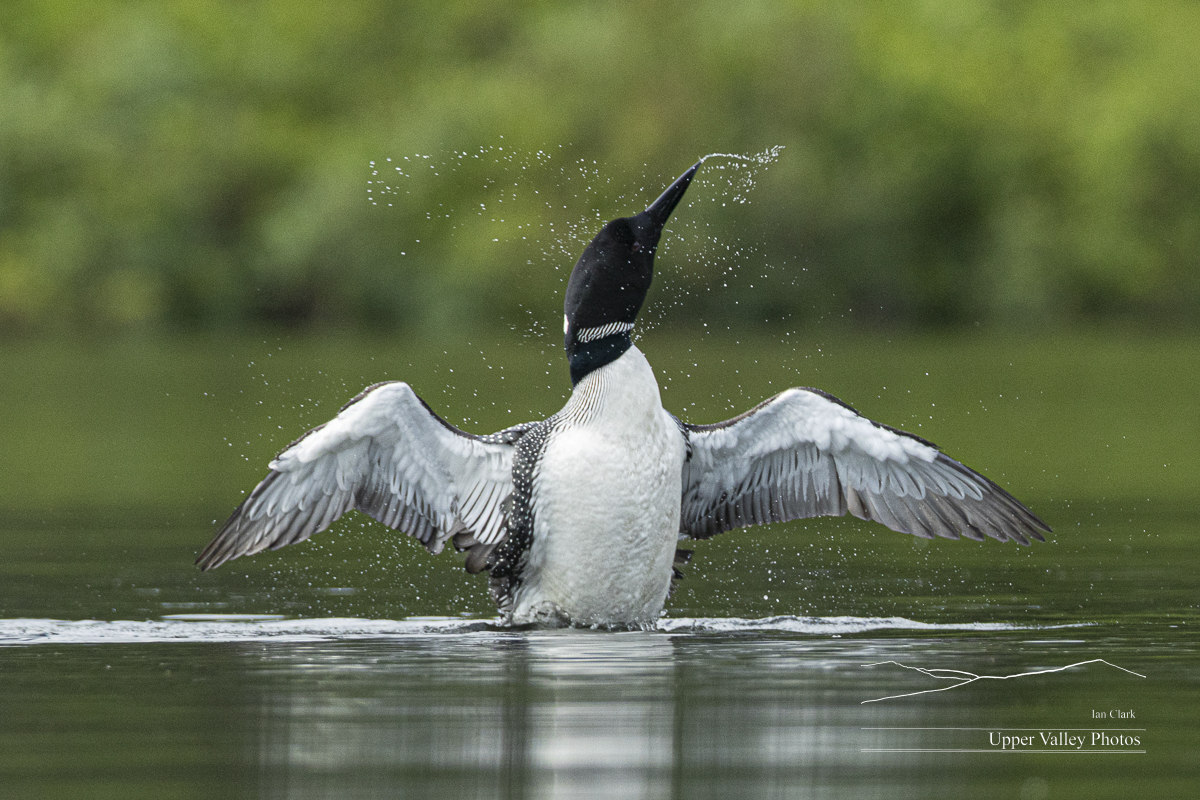
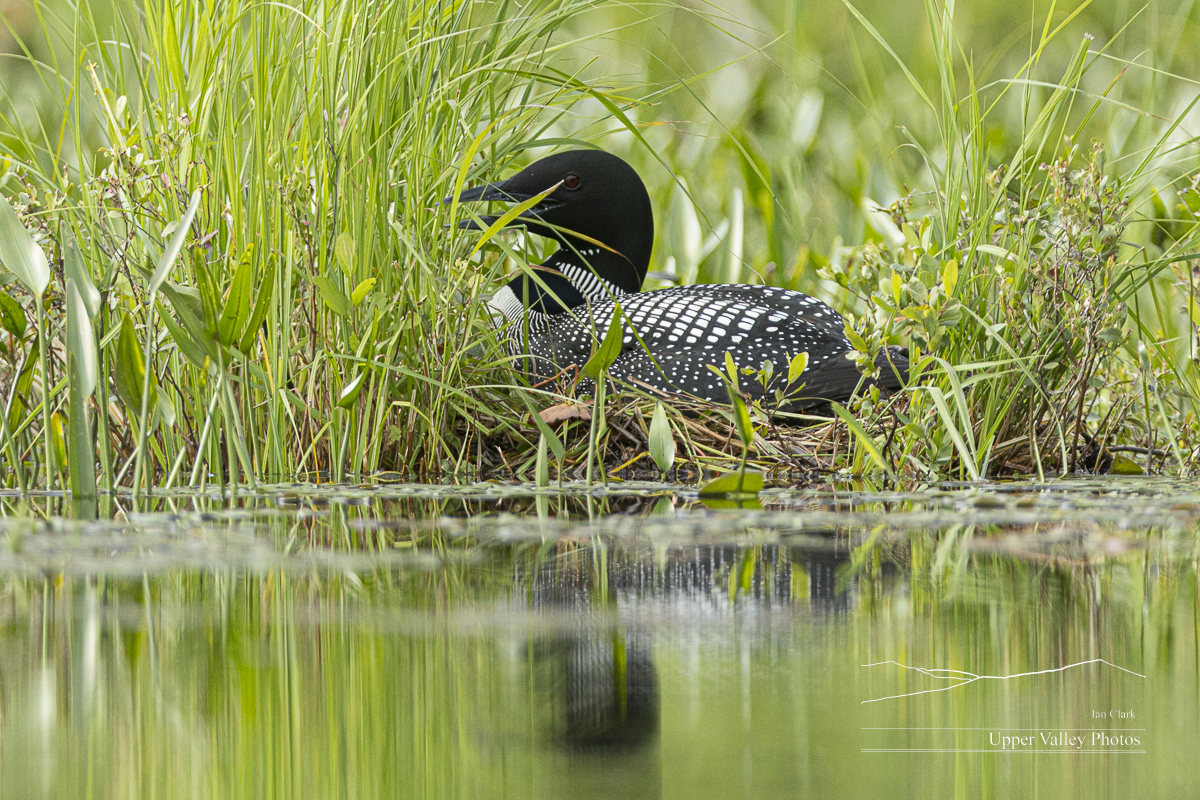
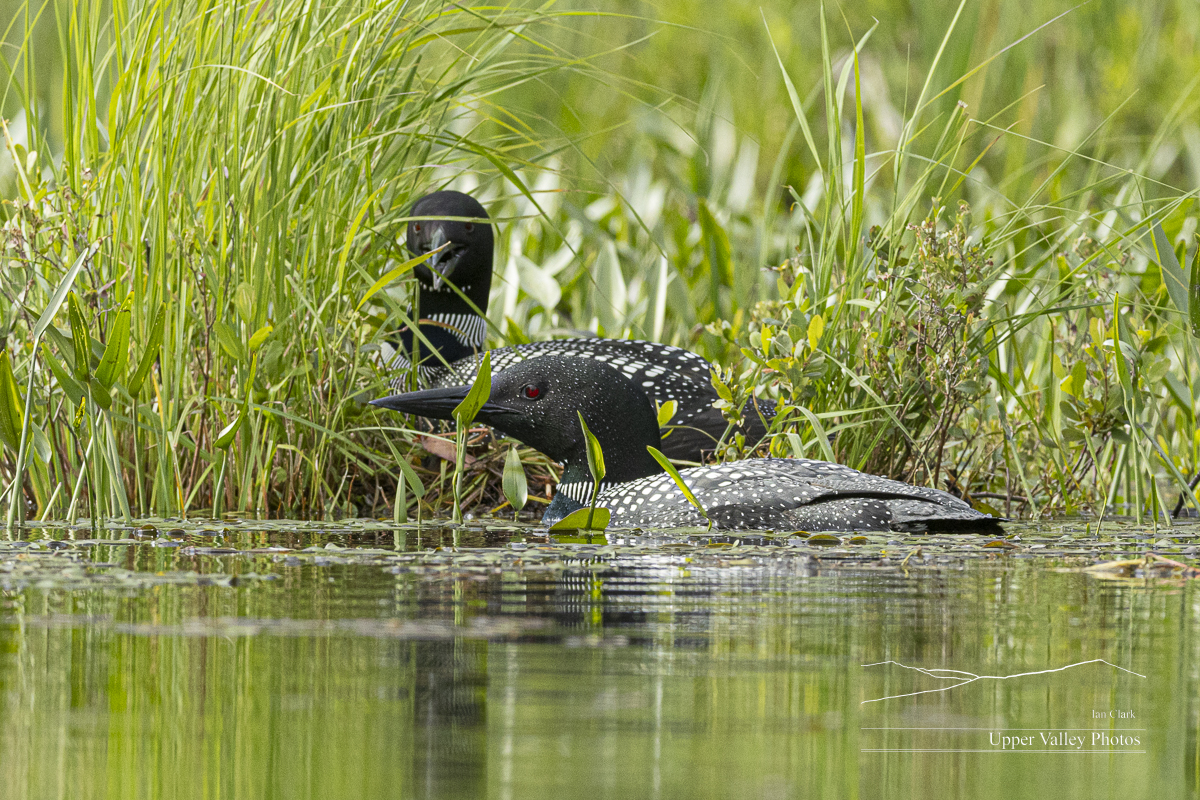

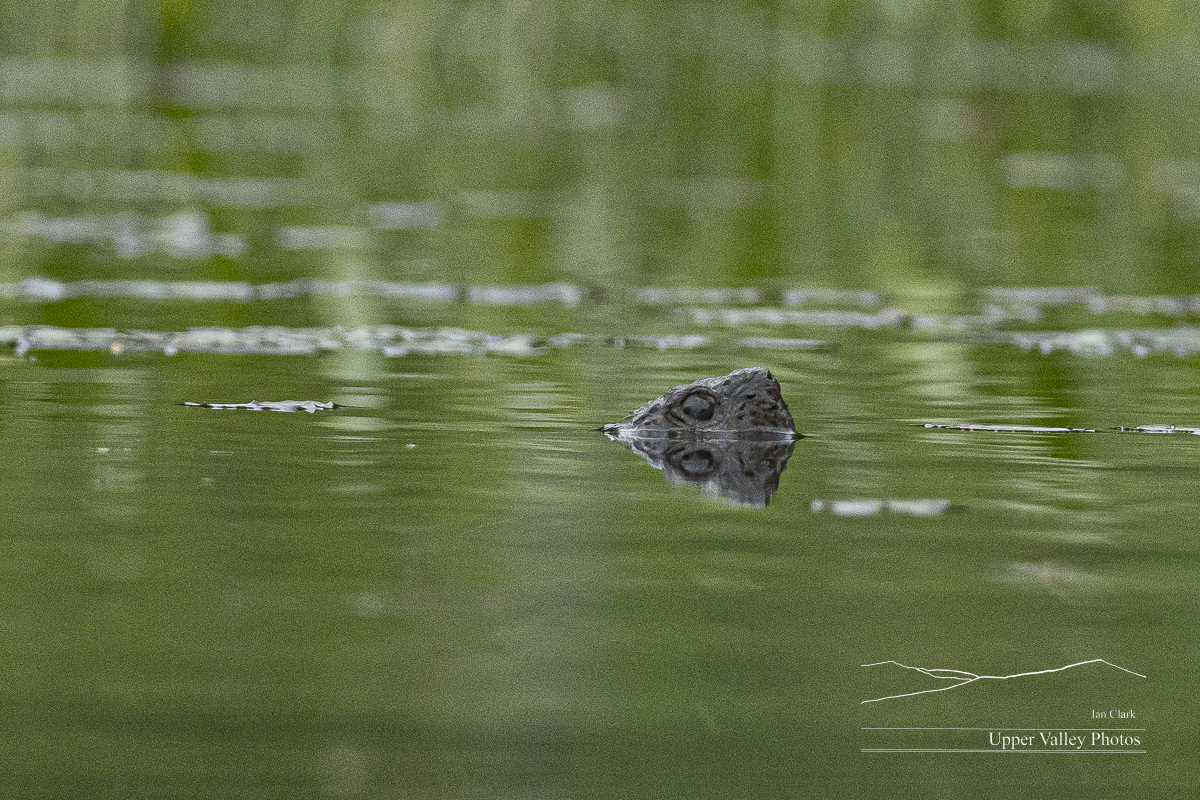
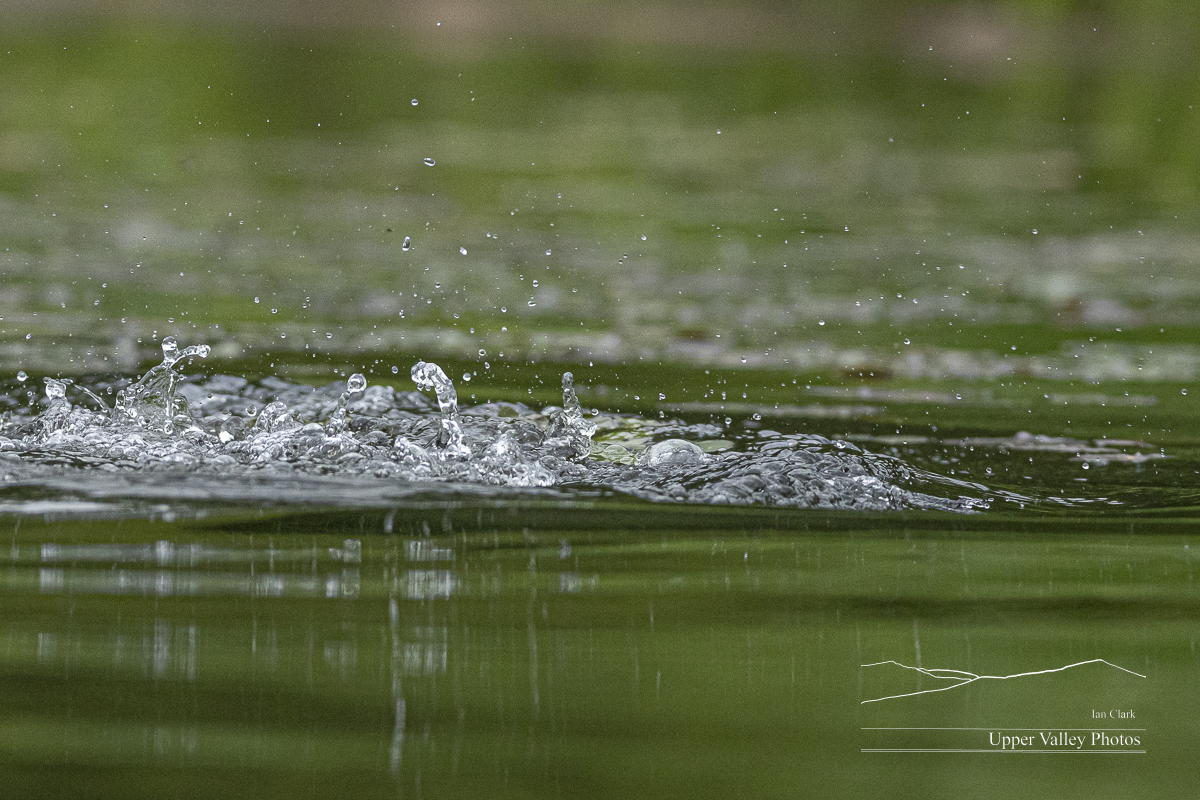
Once again, I headed home not knowing if the first chick had hatched.
The forecast for this morning was for the fog to burn off and the morning to be partly cloudy. Low, heavy clouds greeted me when I got up, with some breaks to the north. I decided to risk it and headed back to see the Eastons.
There’s an island blocking the view of the nest from the boat launch. As I put in, the loons raised a ruckus, but I couldn’t see what was going on. As I rounded the island, I could see one loon in the water near the nest, and the second on just climbing off the nest. I couldn’t see the chicks, but one adult had a wing up inviting a chick aboard.
Dad is a much more attentive parent than mom, assuming we have the same female from the past few years. Dad is also banded, letting me tell them apart when I can see a leg. Dad rounded up
both chicks and got them aboard. Mom decided it would be a good time for her to go out and get her own breakfast. After about 15 minutes, dad started calling, it sure looked like he was reminding her that she needed to get to work.

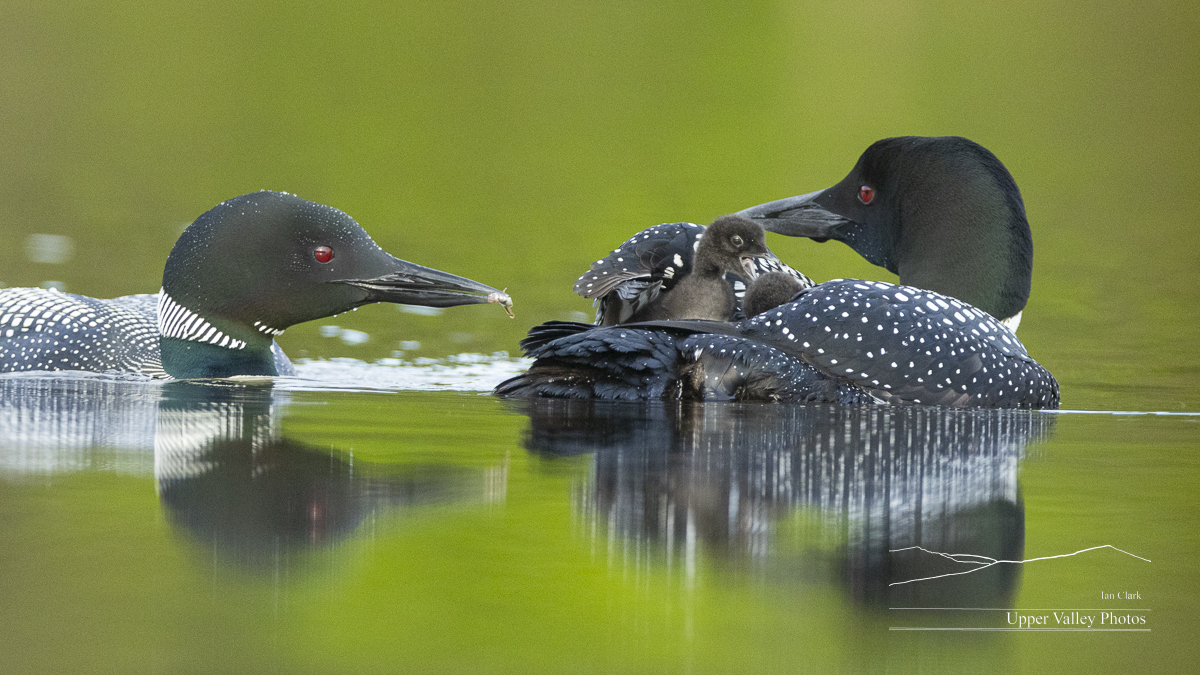
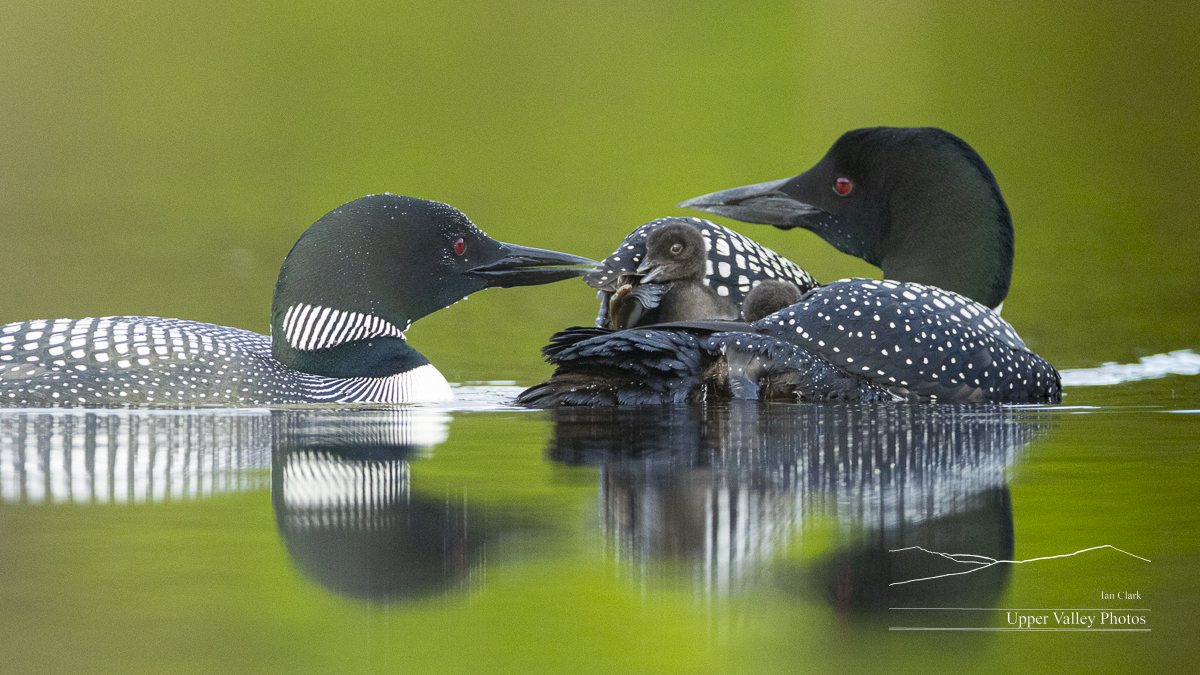

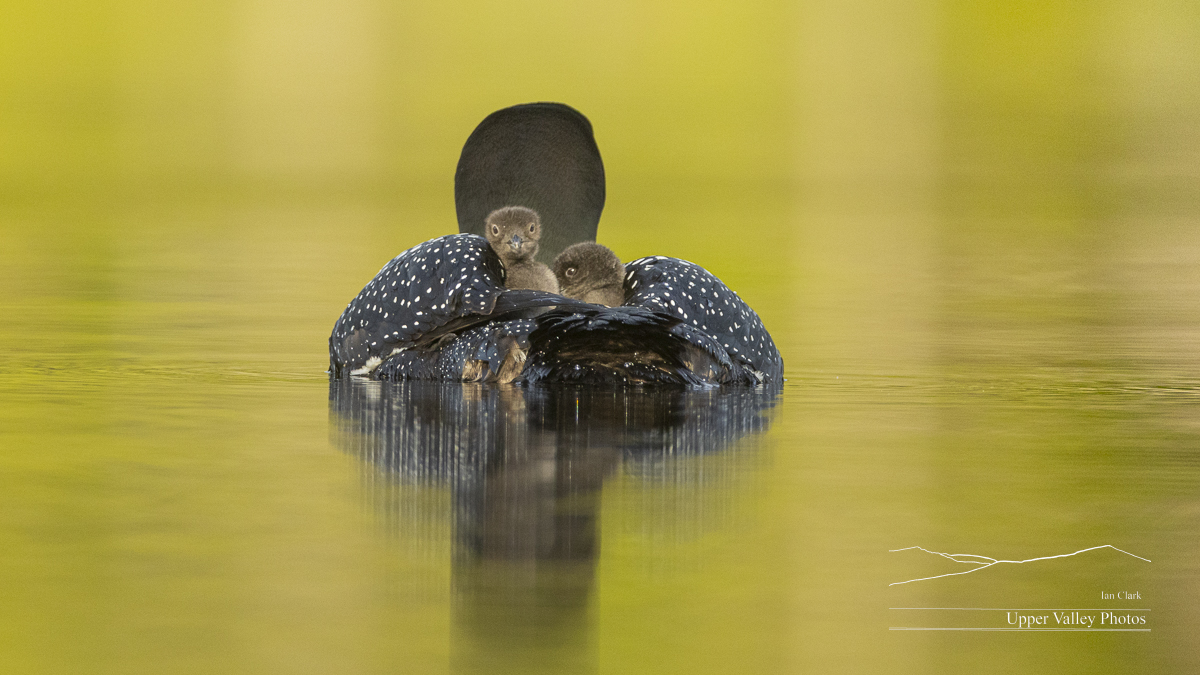
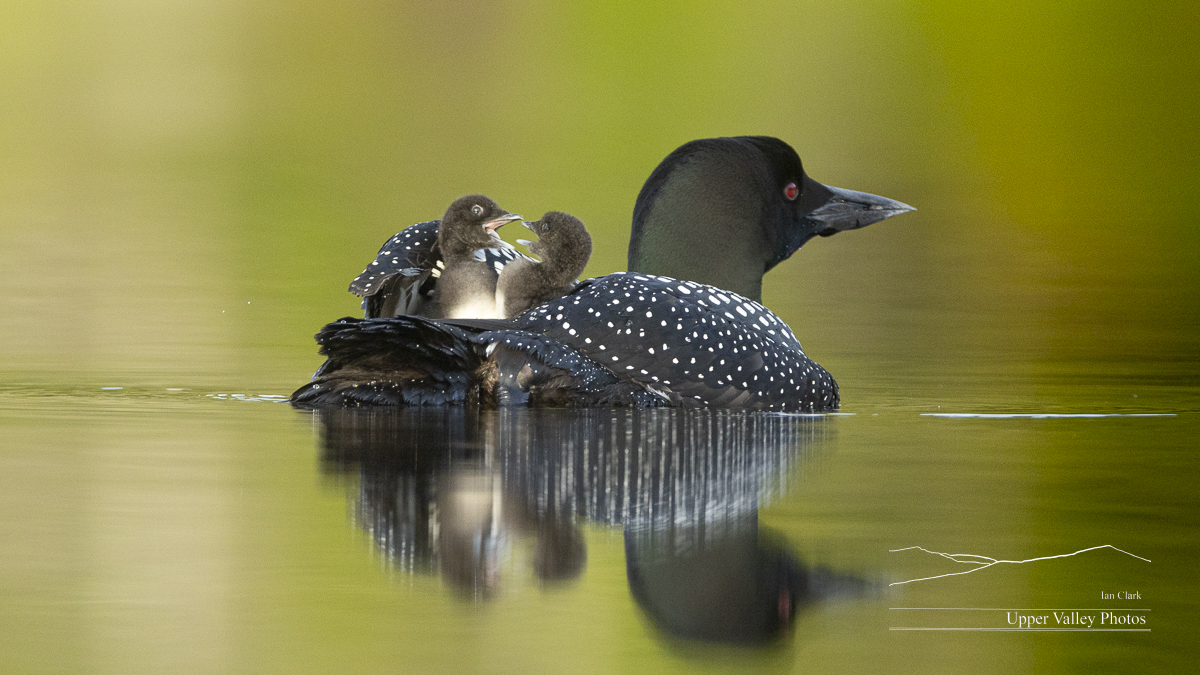
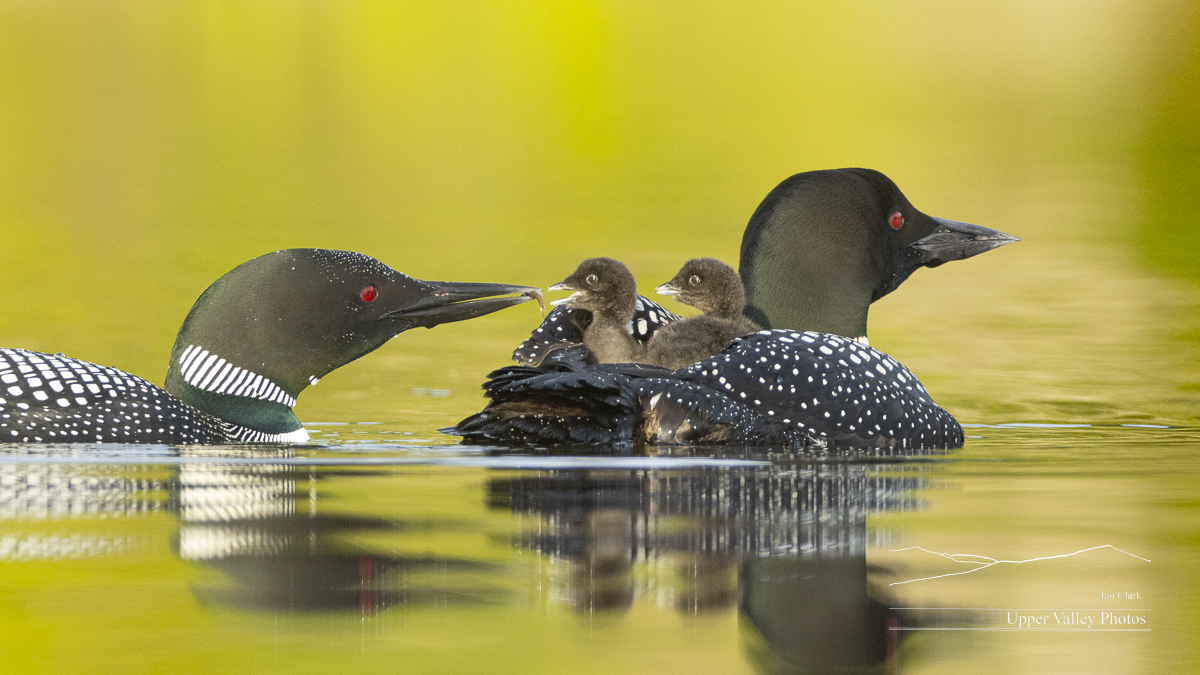

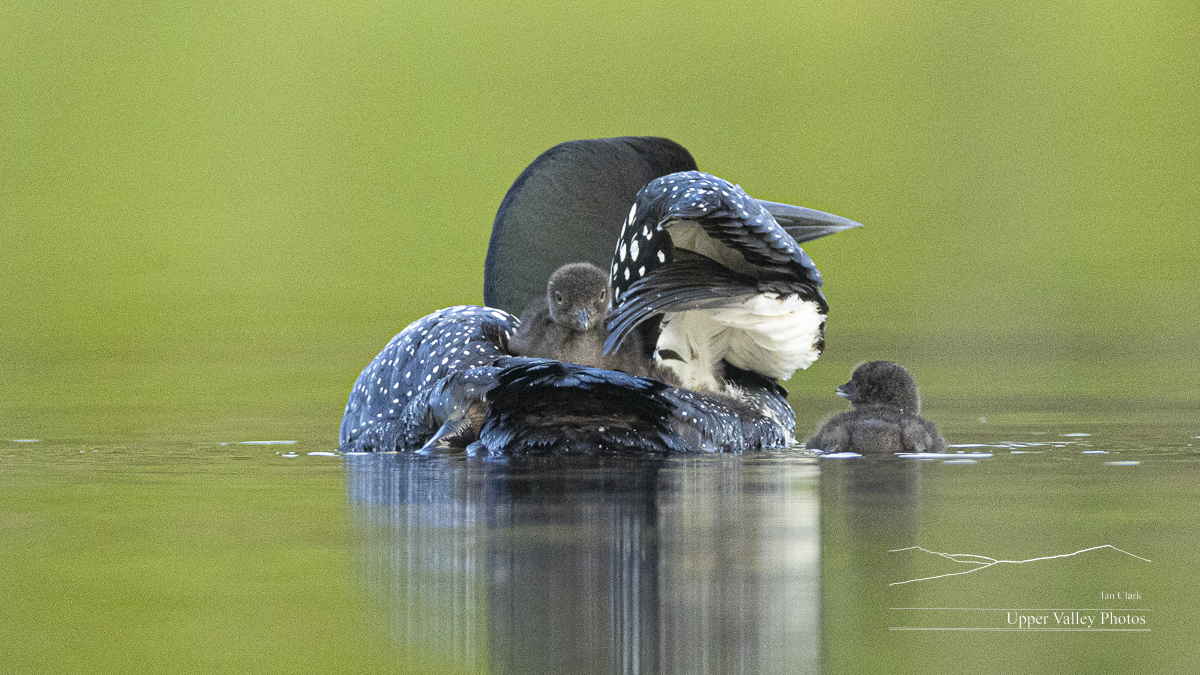
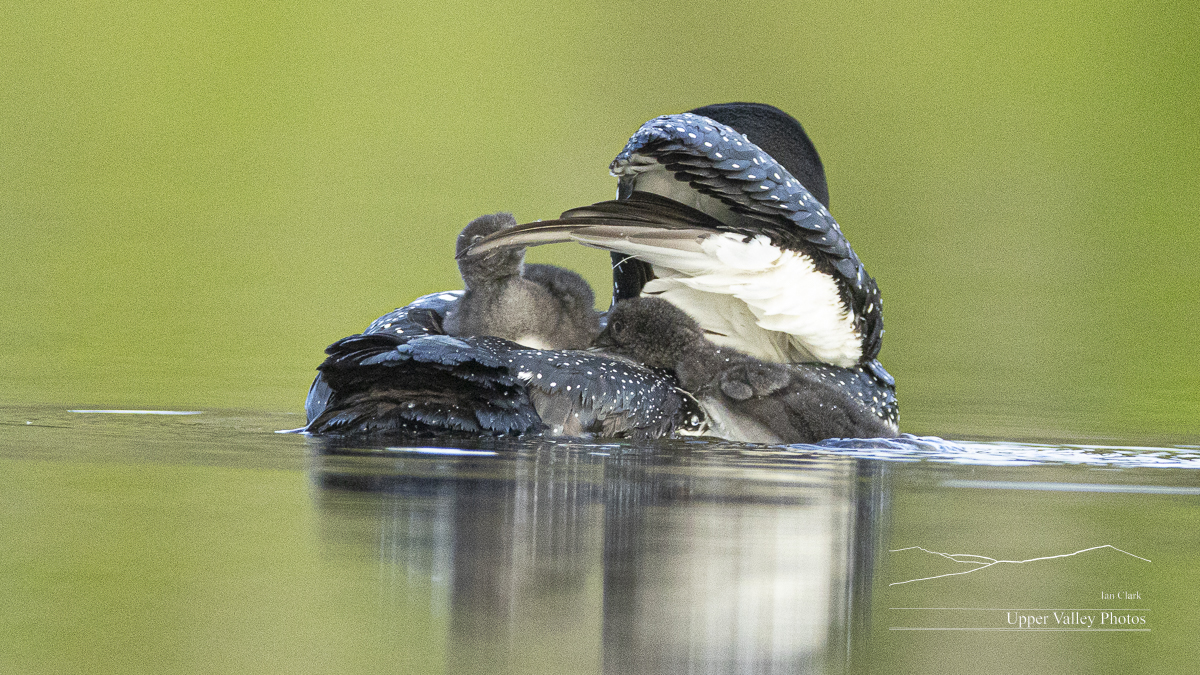
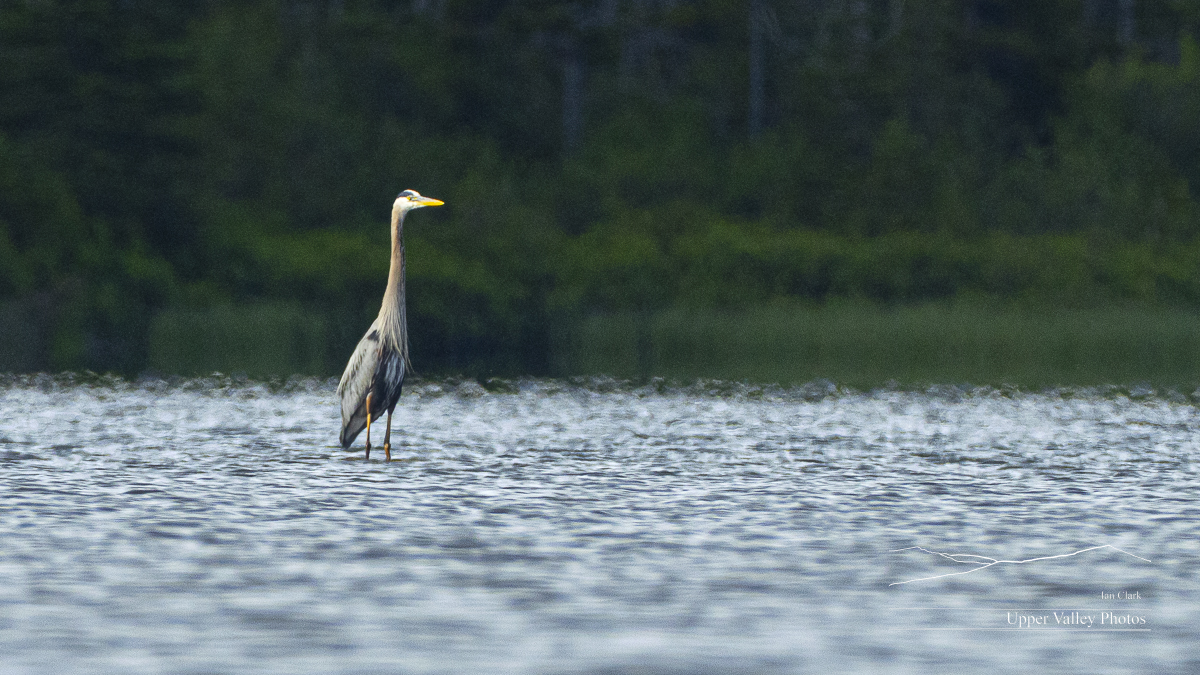
I’ll try to keep up with all three families through the summer. If you know someone who might be interested in following along, please share my blog with them.
First Loon Chicks Have Arrived
UPDATE: We’ve got a second pair of chicks that have hatched since I posted this. Lots of pix in their own post at here.
The weather final cleared enough to let me get back out to check on our three loon families. Well, sort of. I got very wet the first evening and made it back to the car with seconds to spare the second.
First, there’s some sad news from Vermont, the oldest known loon in Vermont has died. His age was estimated at 31 years. VT Diggerhttps://vtdigger.org/2023/06/15/vermonts-oldest-loon-dies-at-the-estimated-age-of-31/ has a piece interviewing Eric Hanson, Lead Biologist at the Loon Conservation Project about the loon.
With loon chicks hatching it is once again time to request that you give them space if you go to see or photograph them. You may not intend them any harm, but you may distract the parents from seeing other threats. Our new loon chicks were greeted by a circling eagle on their first or second day out. The parents need to concentrate on the real threats, keep back and let them do their job. All the images of chicks here were with a 600mm lens and heavily cropped.
Tuesday evening I got a message from a friend on the Weston’s pond that the chicks had arrived. And that the eagle was eyeing them. Wednesday morning was wet and windy. It gradually cleared a bit through the day. I set out in the evening to check on the chicks. It was sunny when I left the house. On the way into the pond, I had to wait while a doe browsed from the road – with her fawn gamboling about in the road. By the time I had everything in the boat, there were a few sprinkles. Not enough to dissuade in intrepid photographer.
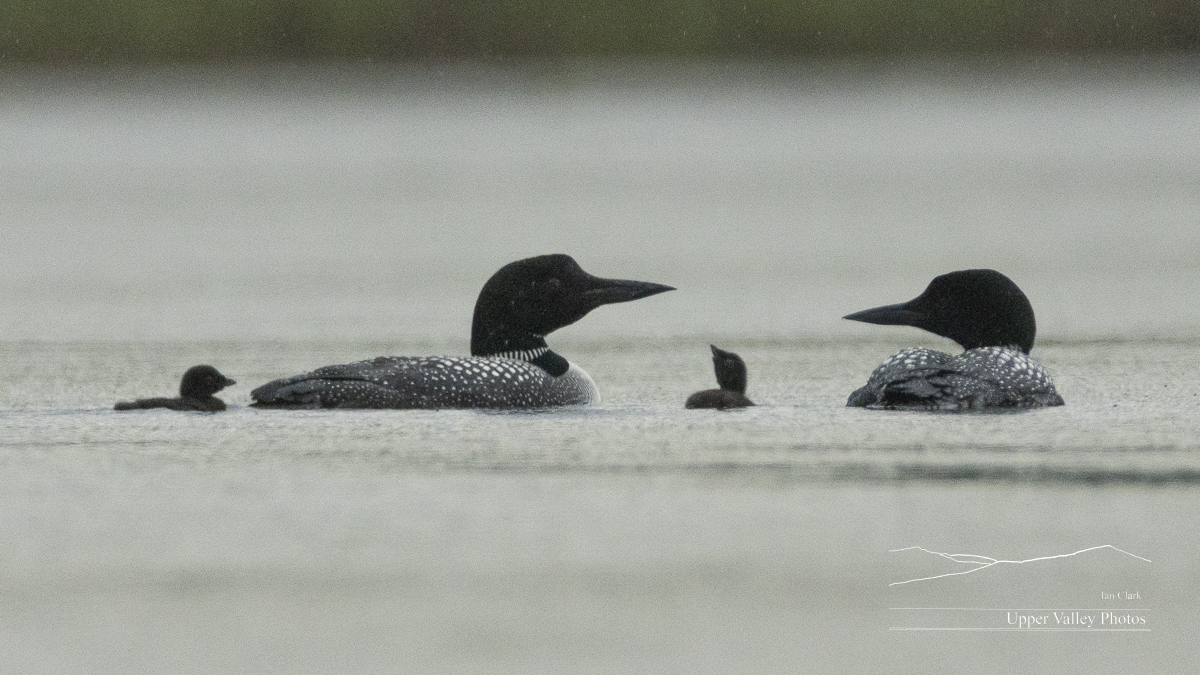
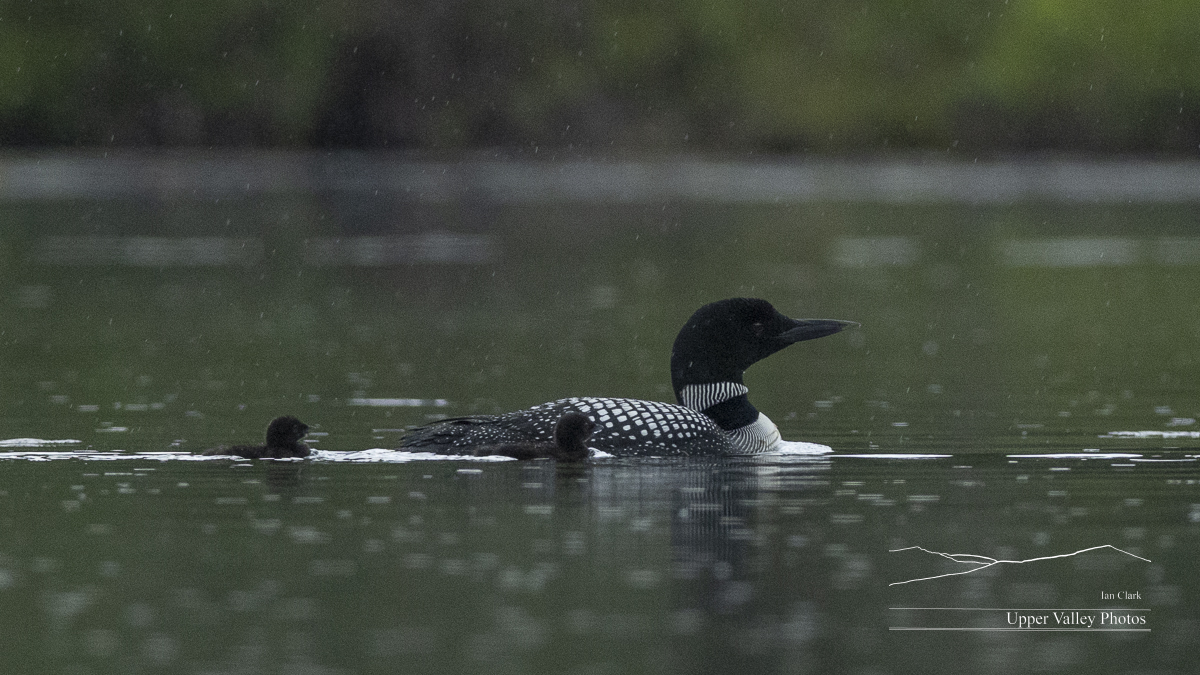
When I got up at 0345 on Thursday ready to head out, it was raining heavily. Early morning is the most productive time in the office, almost no one calls before 0700 or 0800. I got a fair bit done. When the dogs finally got up, I noticed some breaks in the clouds when I let them out. Hoping it would clear a bit, I headed off to to check on the Middletons.
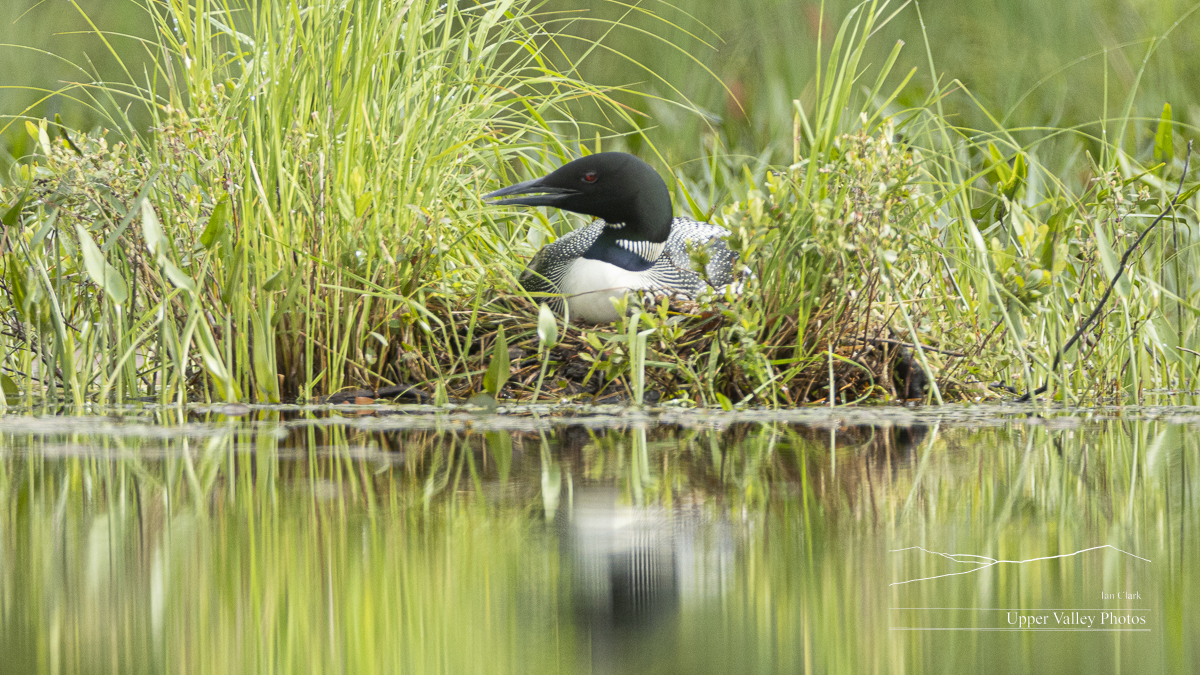
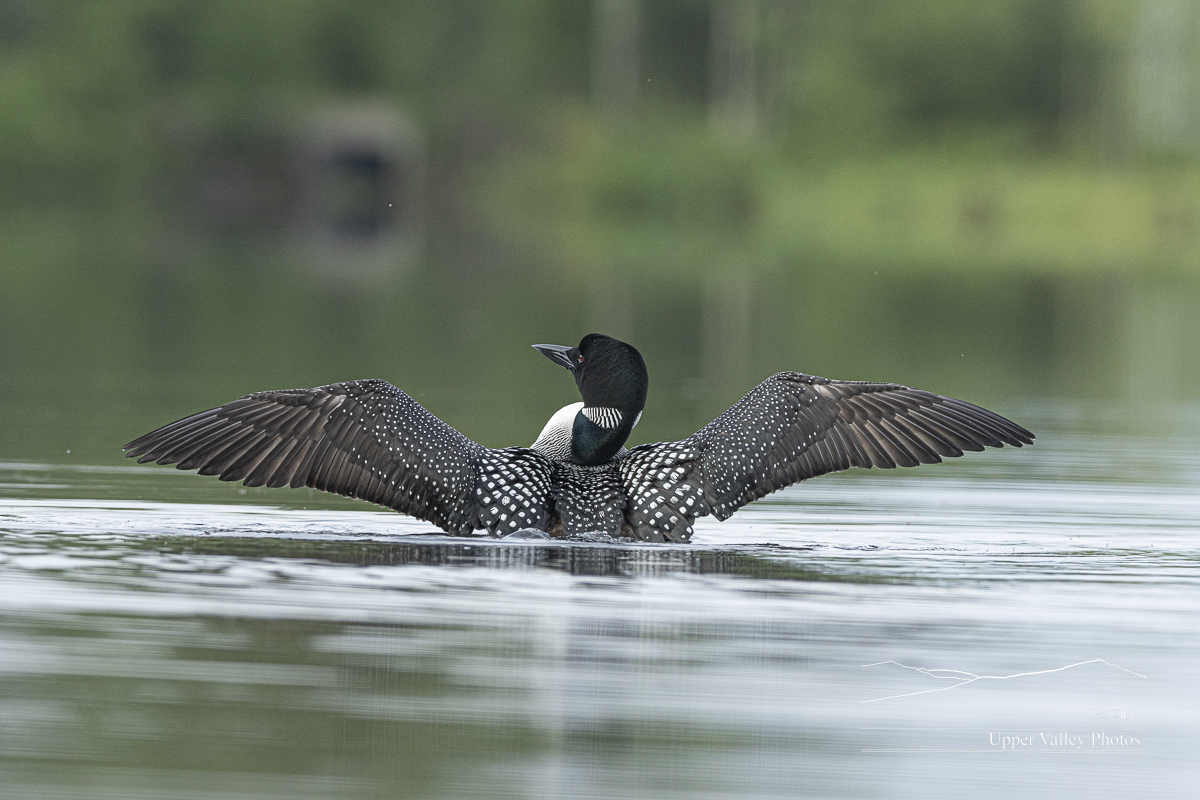
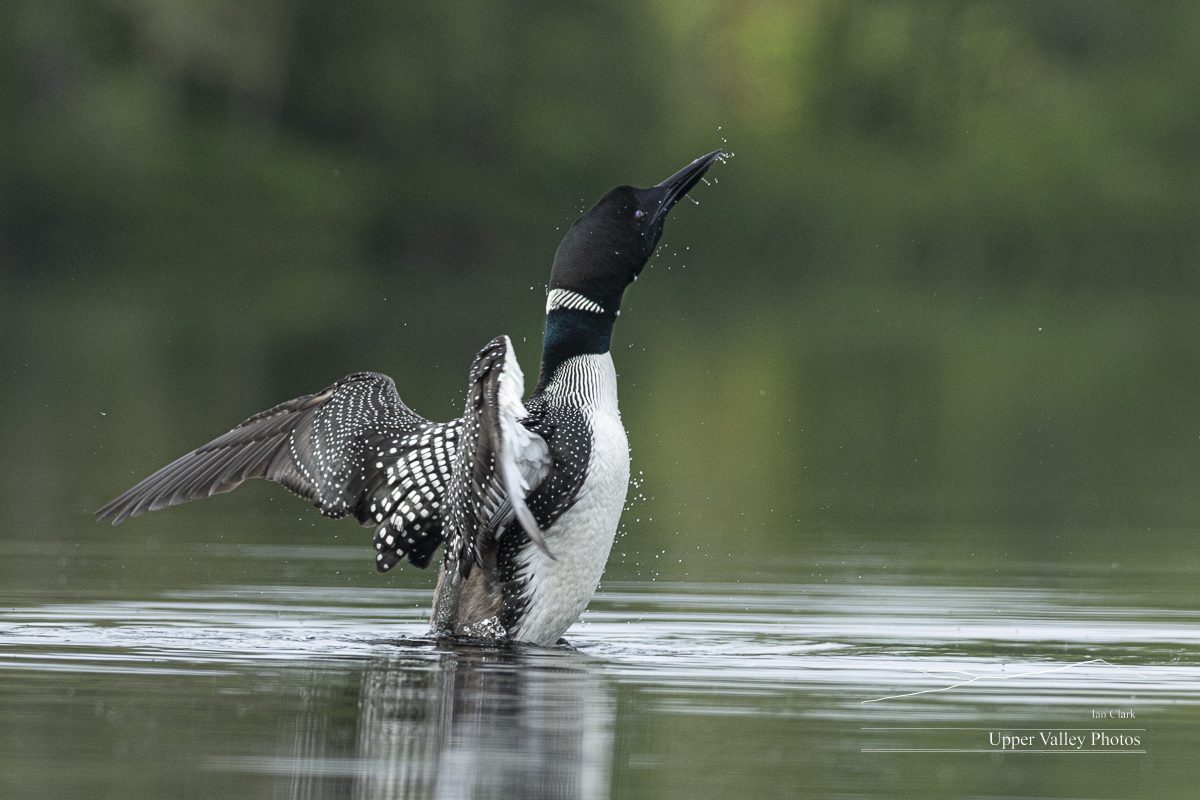
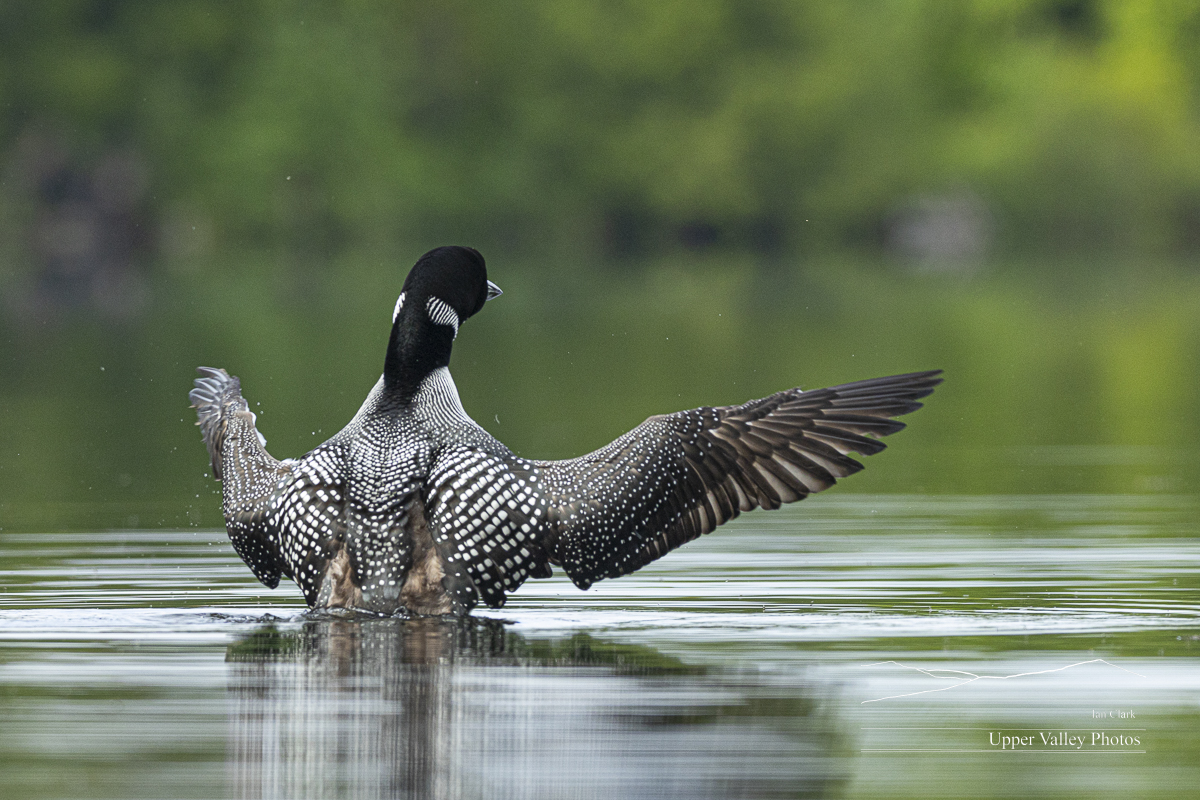

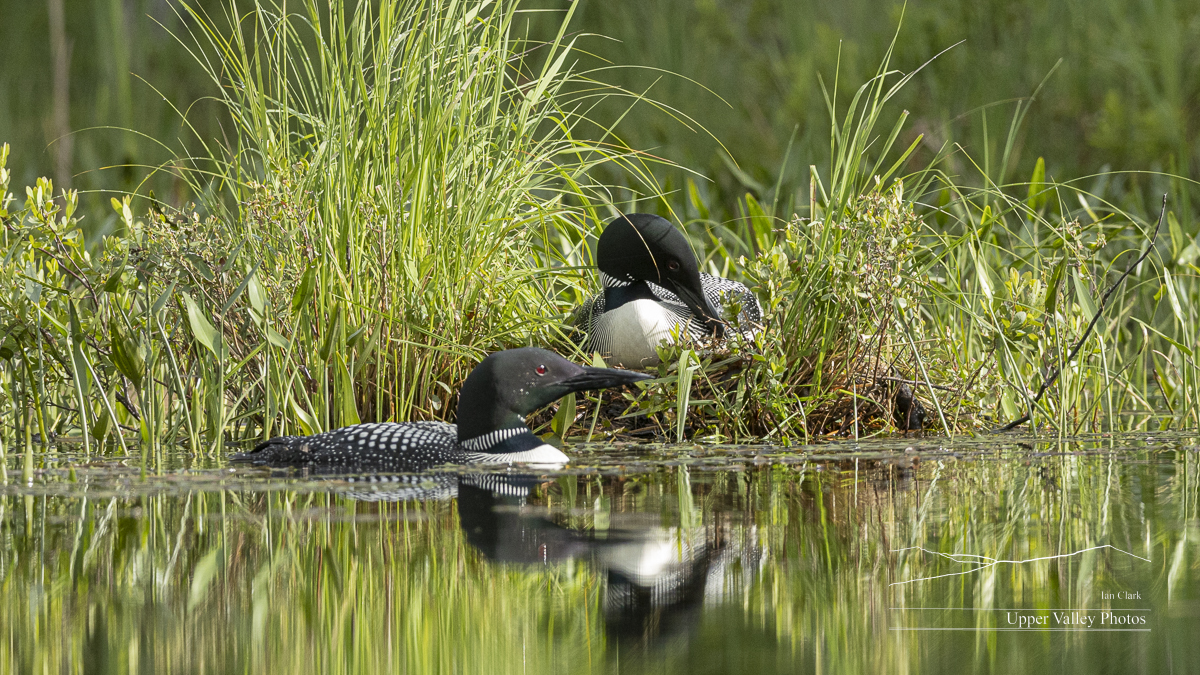
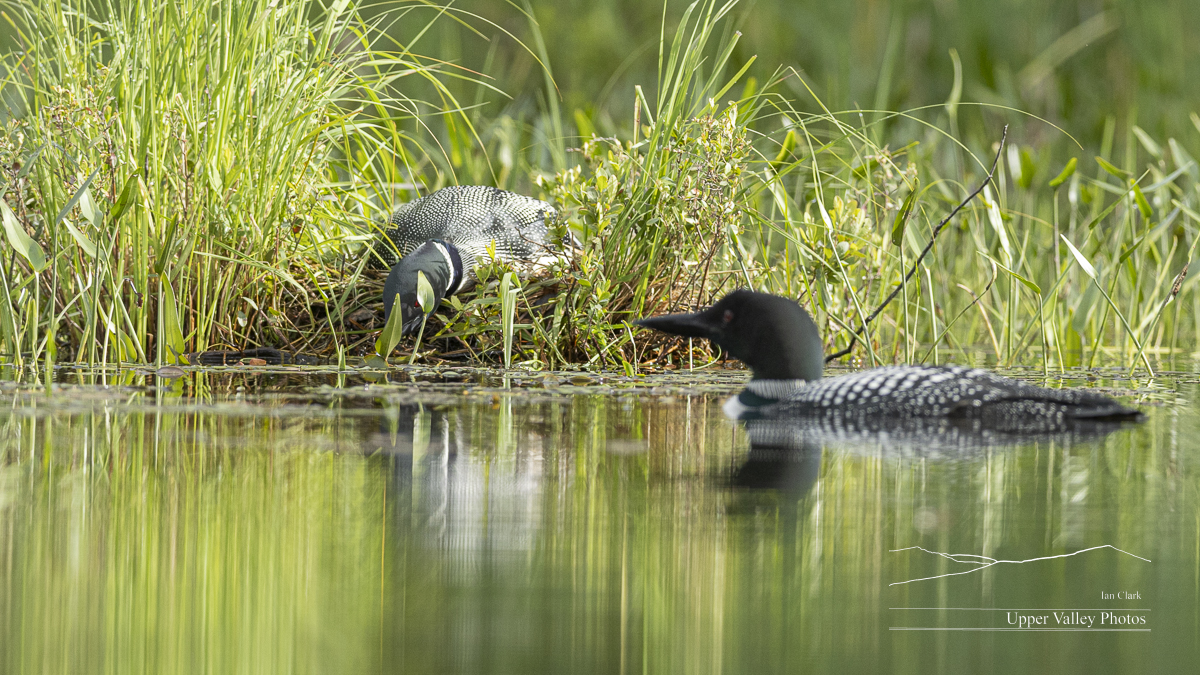
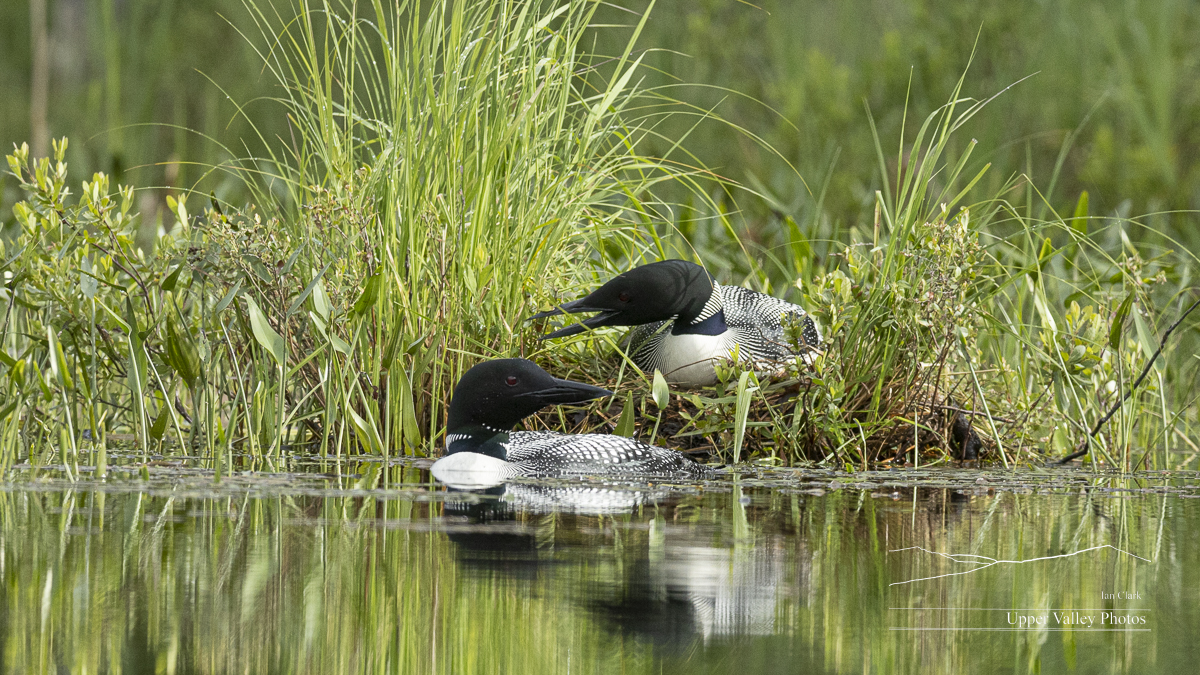
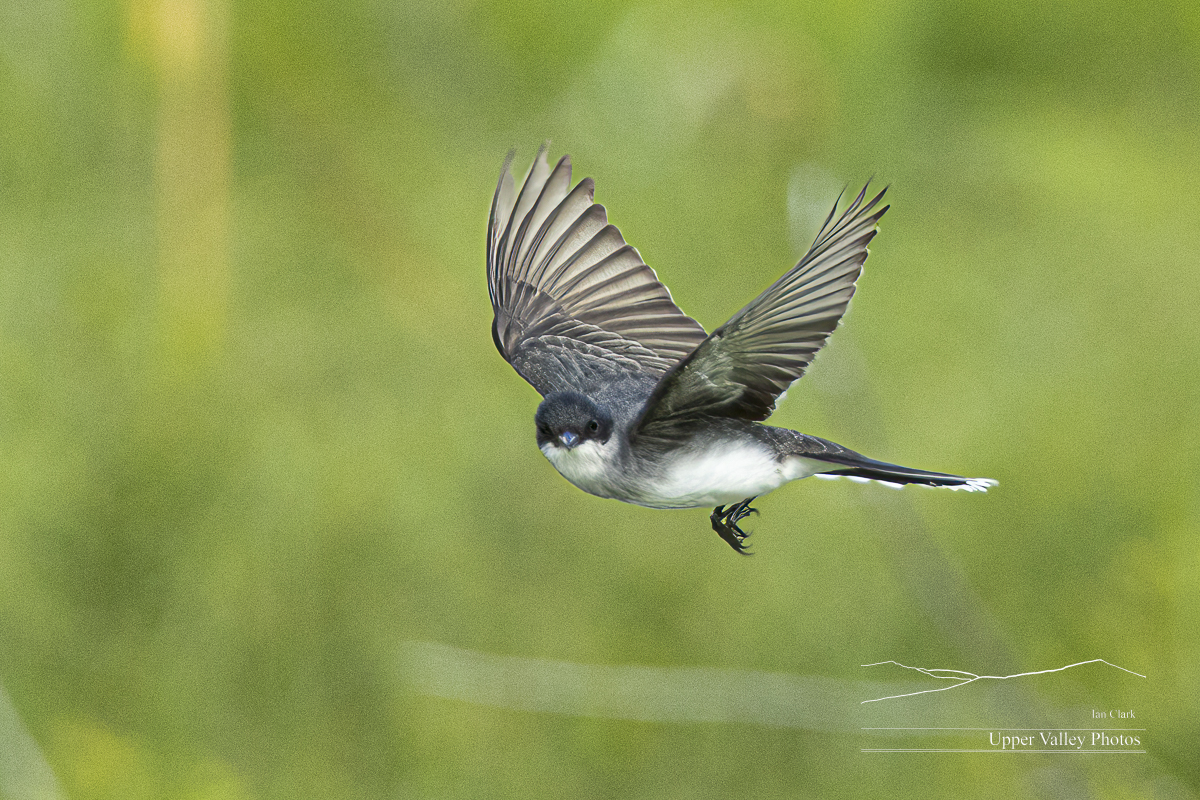
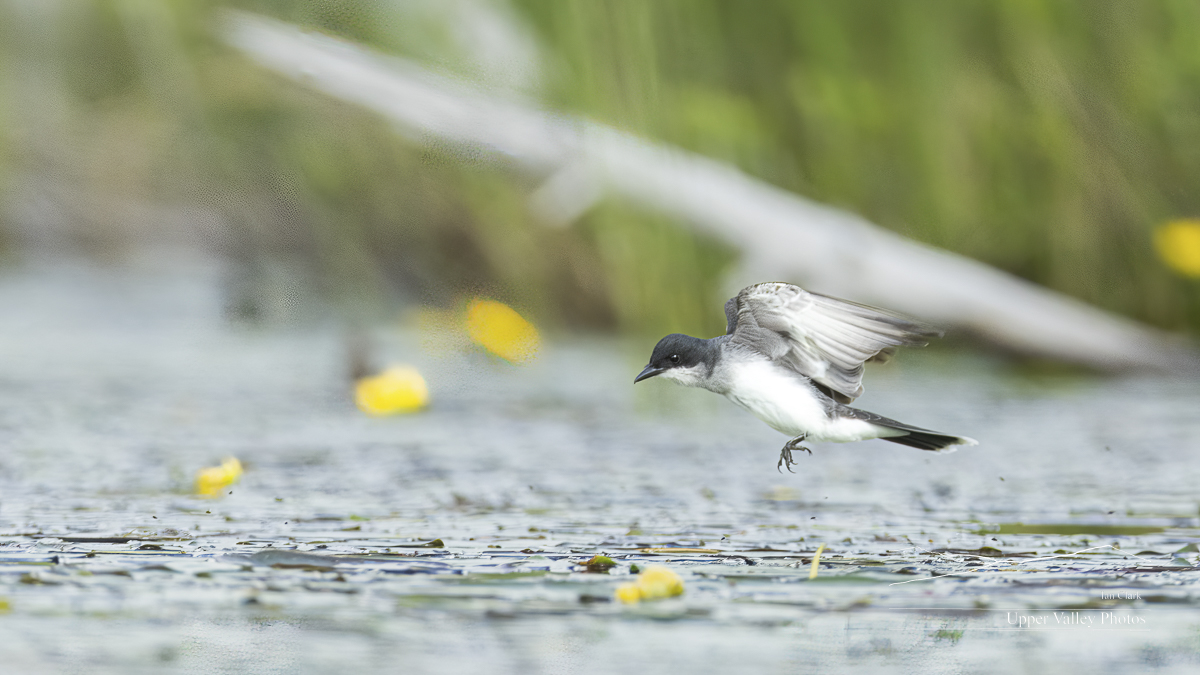
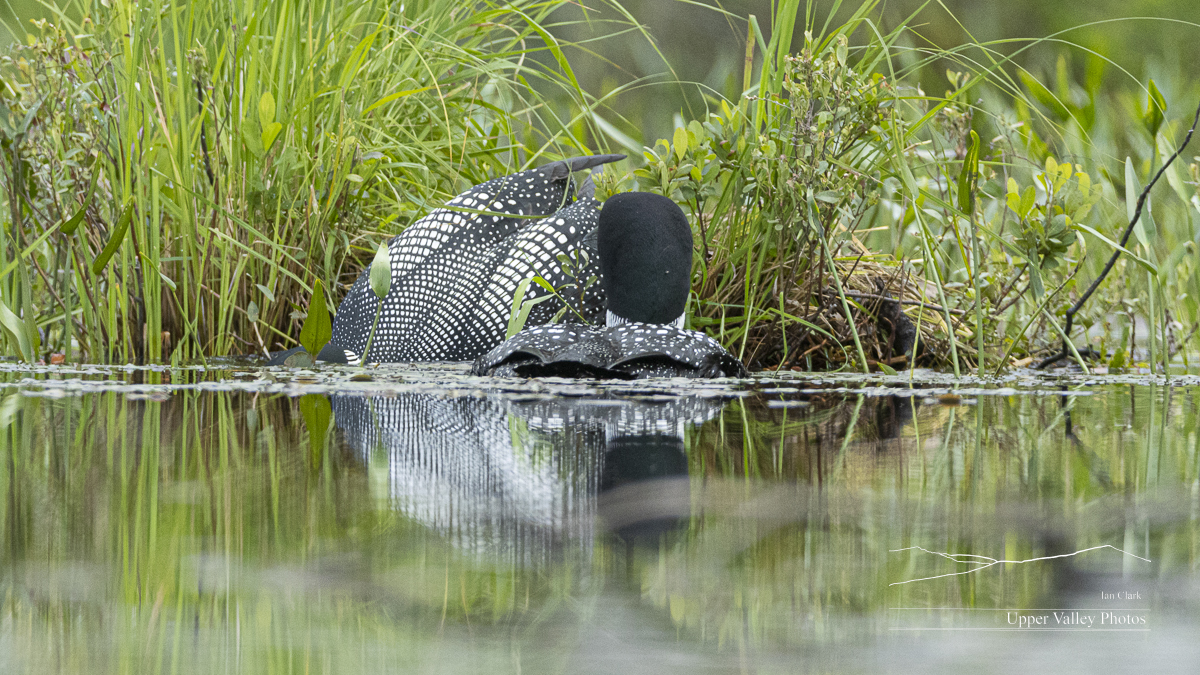
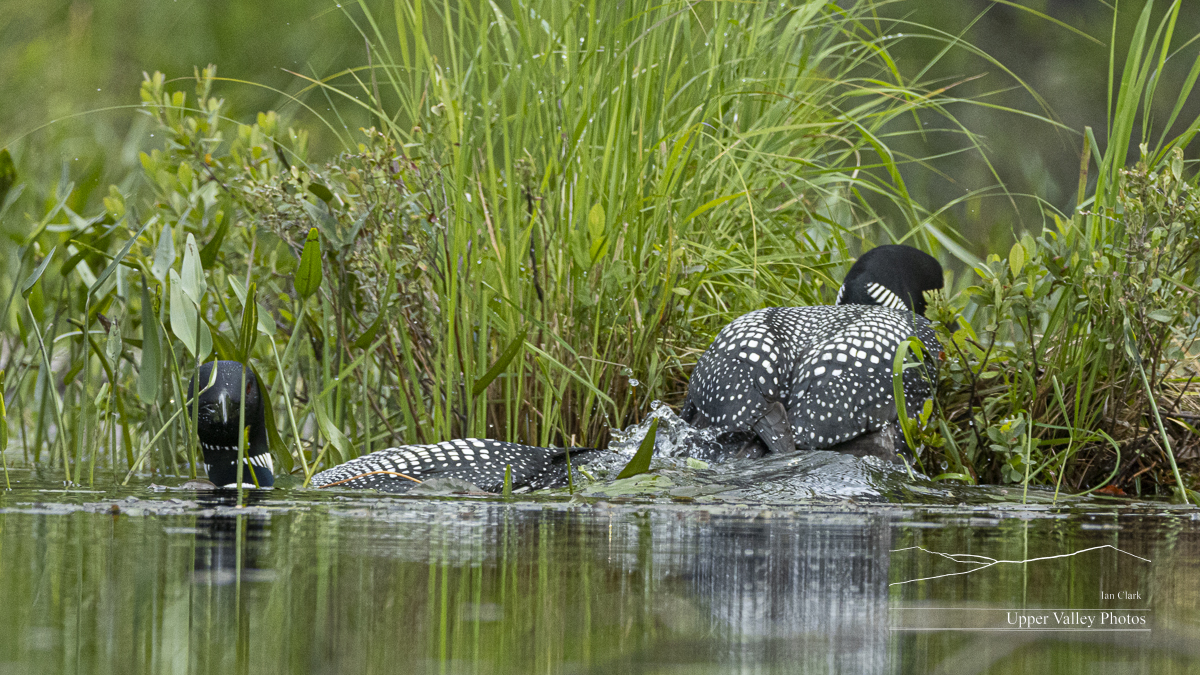

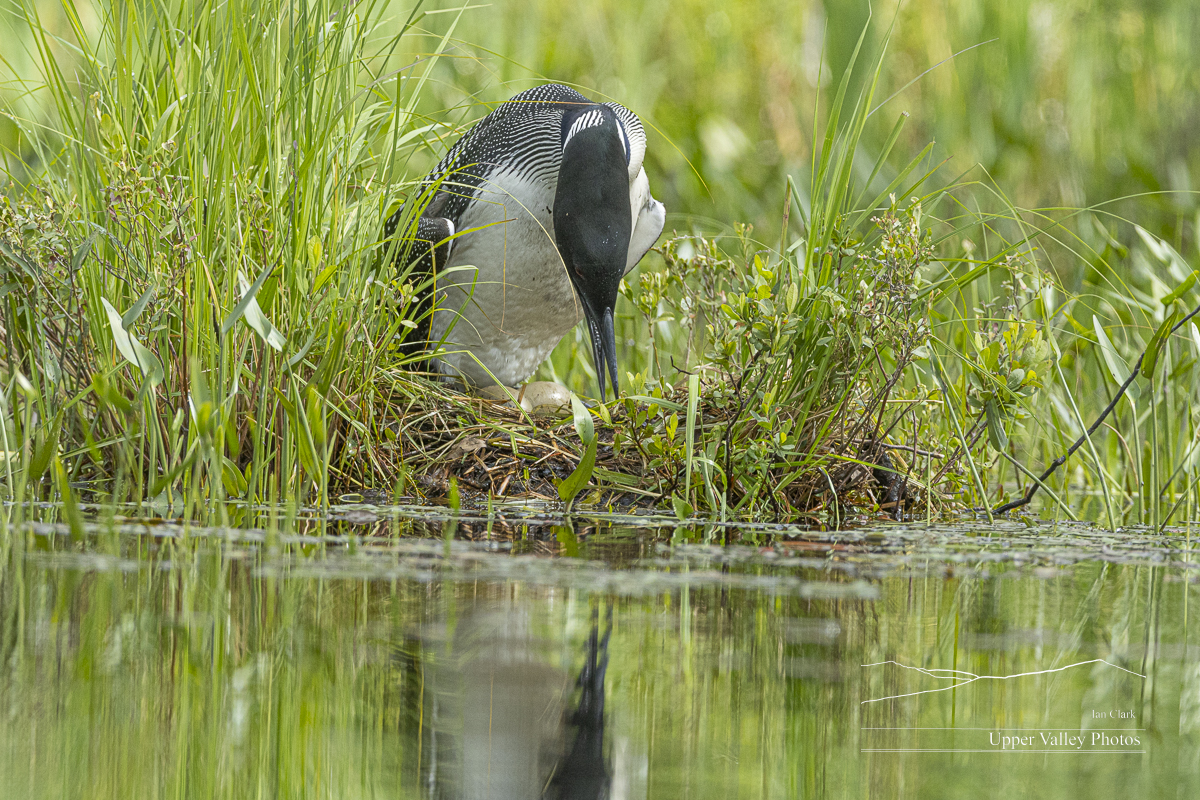
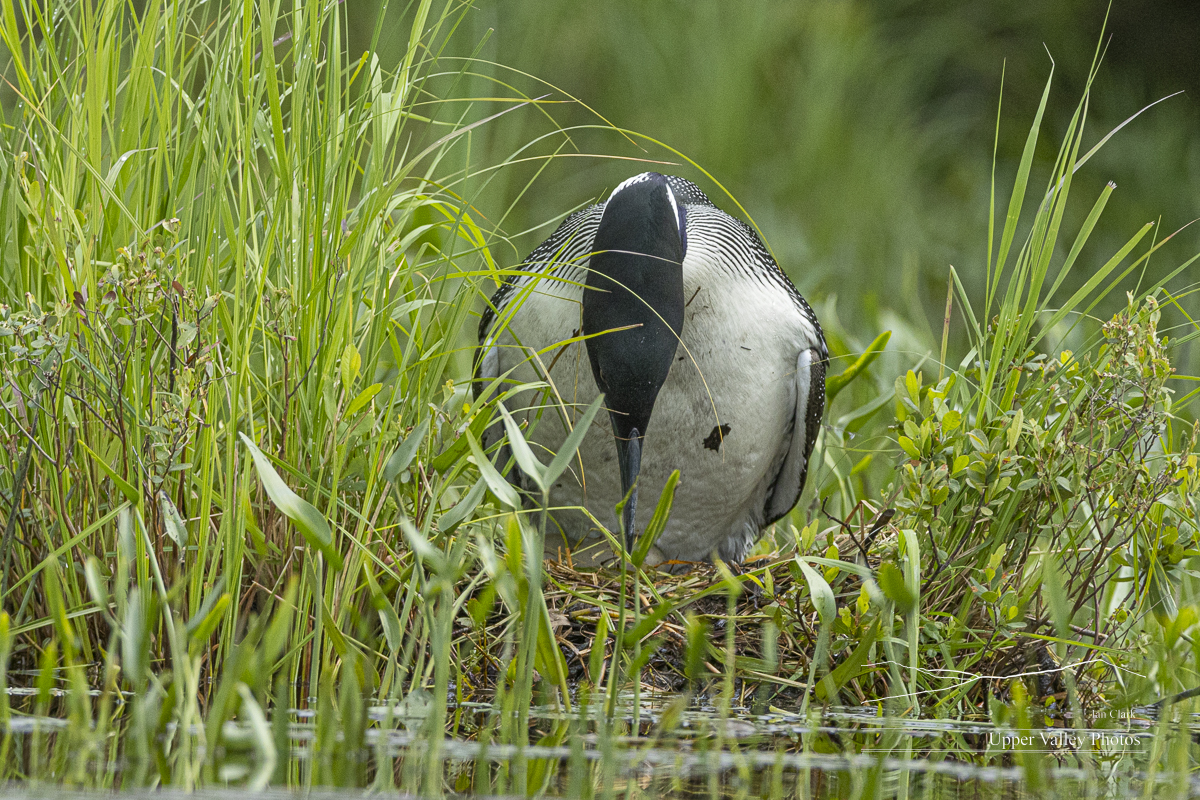
Thursday evening, I went back to check on the Westons. This time with just a couple puffy clouds in the sky.
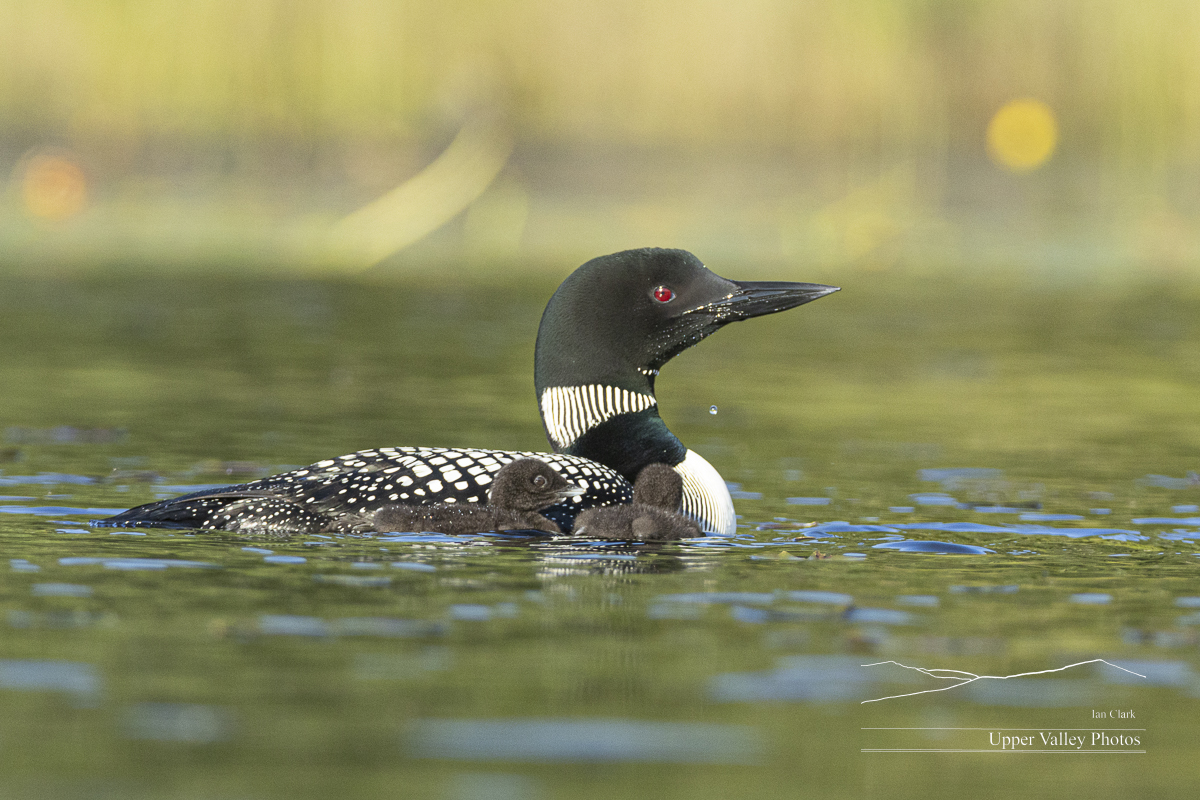

This morning, I was up and out by 0430, with clouds above and fog below me as I headed to see the Eastons. They’re up in the White Mountain National Forest, they were on their nest by the time the Forest Service got the road to the pond open, so we don’t know when to expect the chicks. But, the last three years, they’ve hatched in the third weekend of June, so soon…..
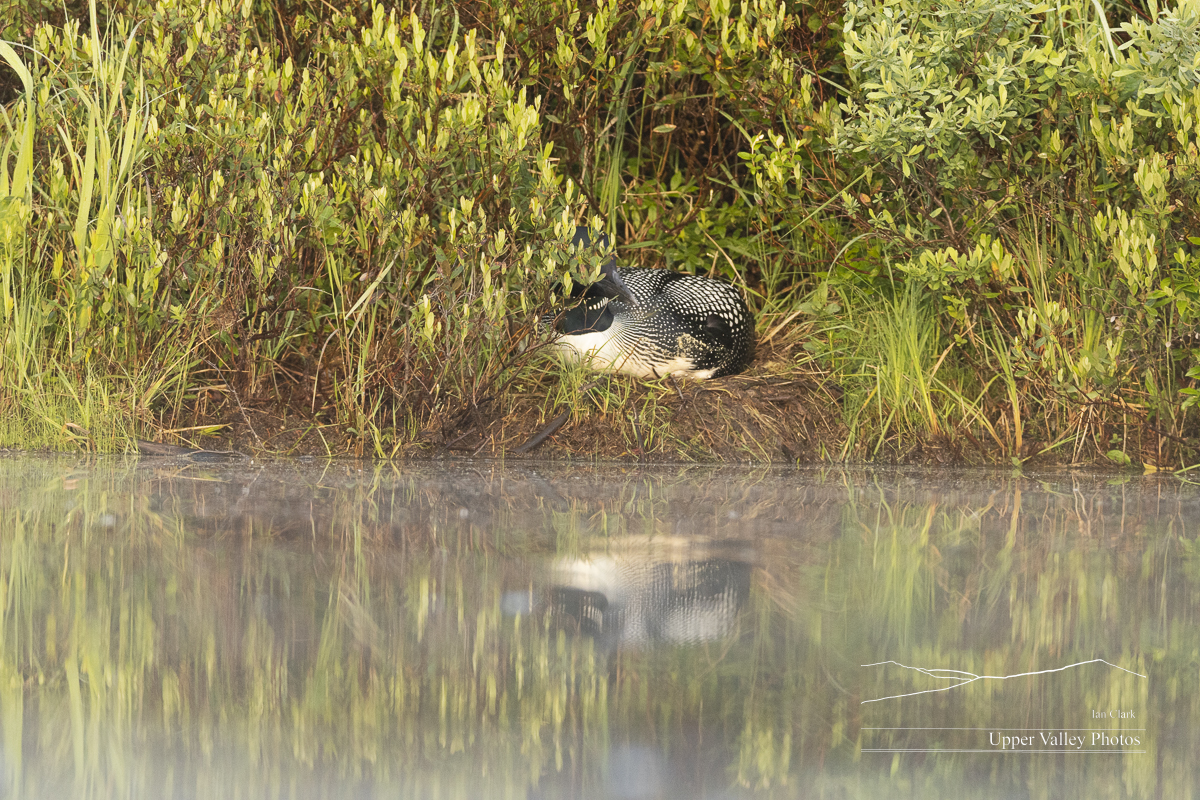

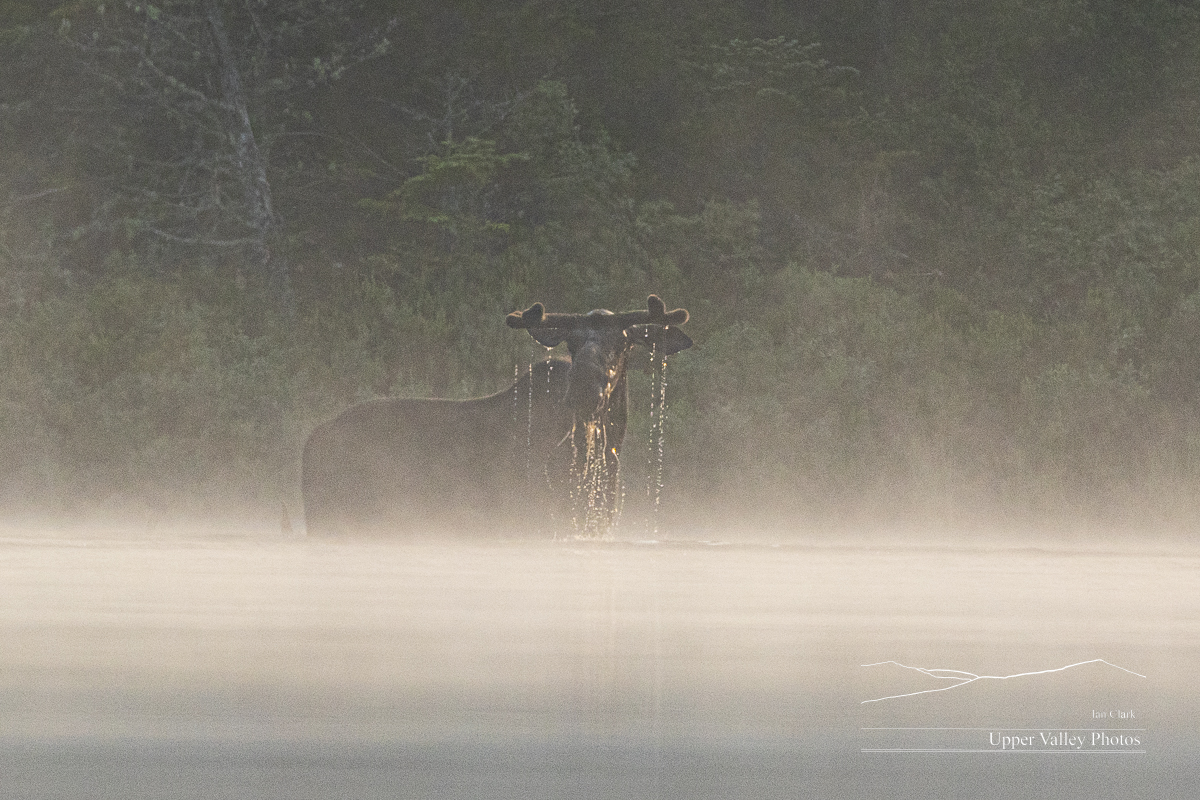
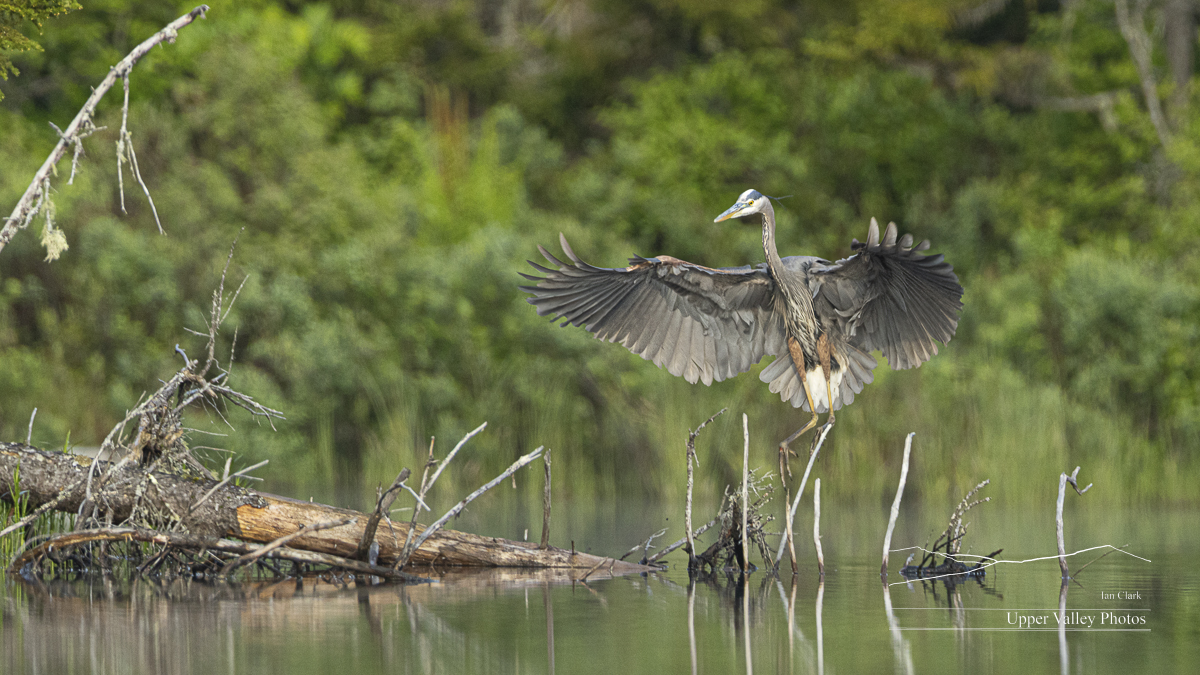
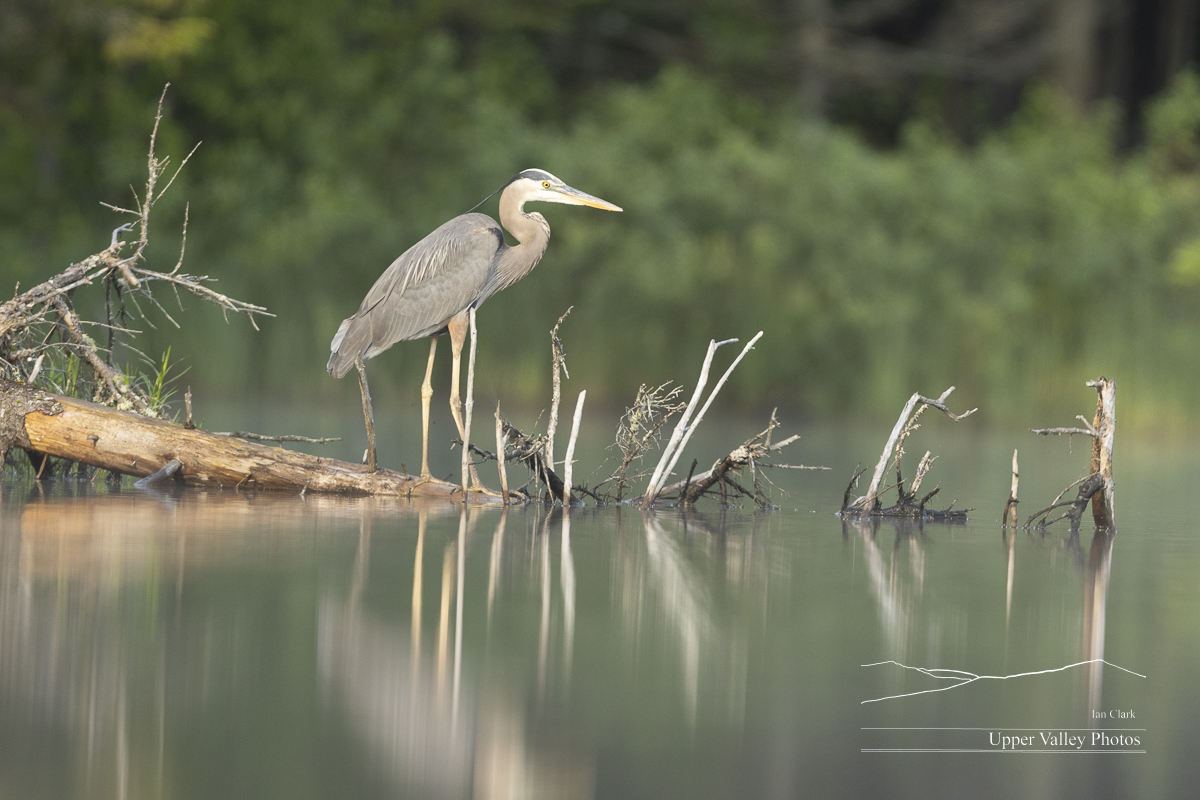

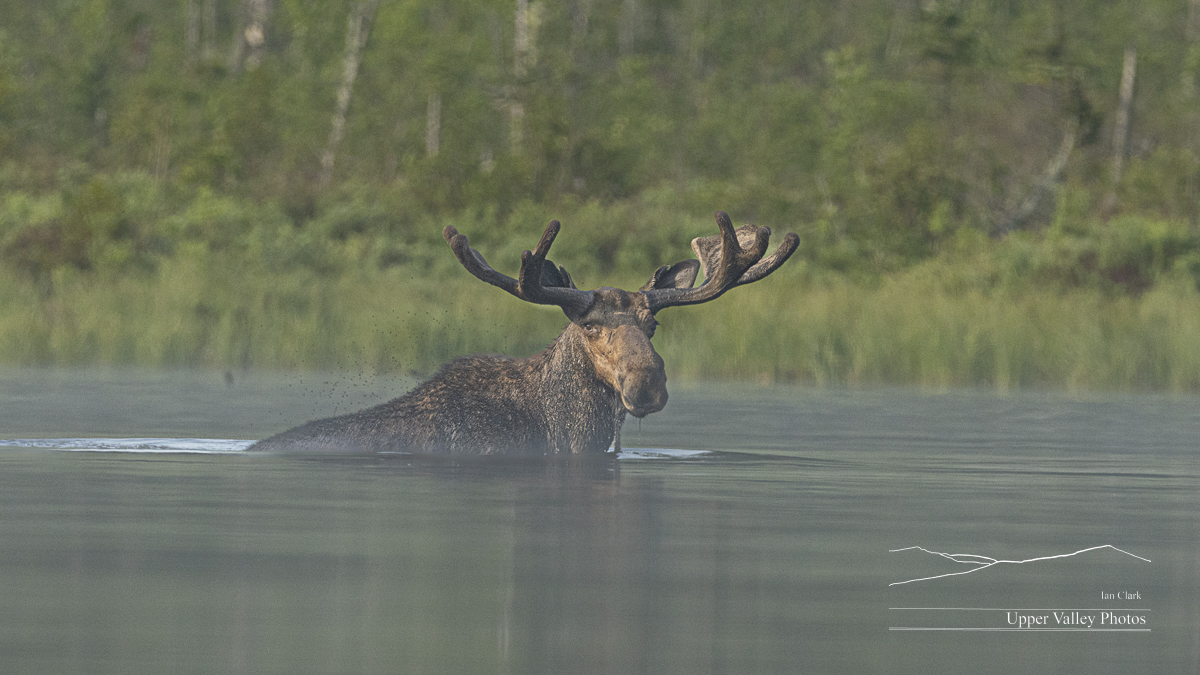
I’ll be out looking for the rest of our chicks as soon as we get a break in the weather.
Link to the newer post: https://blog.ianclark.com/photography/wildlife-photography/the-eastons-have-two-chicks/


Checking in with the Loon Families
With the beautiful weather we had last week, I was out morning and evening every day checking in on all three loon families along with their neighbors. The Forest Service road to the Easton’s pond is now passible so I finally got up to check on them.
A raft of new subscribers joined us this last week. If you found me from the Paradise City show, thanks for stopping by. For the new visitors, to protect the loon families, I don’t publish their location on the web. Not everyone on the web has wildlife’s best interests at heart. The three families I follow are the ‘Eastons,’ on the easternmost pond I frequent, the ‘Westons’ are on the westernmost and the ‘Middletons’ are in the middle.
The first visit to the Eastons was last Tuesday evening. There was a strong wind kicking up the occasional whitecap. On my first lap around the pond, I didn’t spot any loons and last year’s nesting site was untouched. After time, one adult loon appeared, foraging lazily. The chop was too much for photos and the black flies had decided I was the buffet, so I called an early quit and headed home.
Wednesday morning, I headed out to see the Westons.
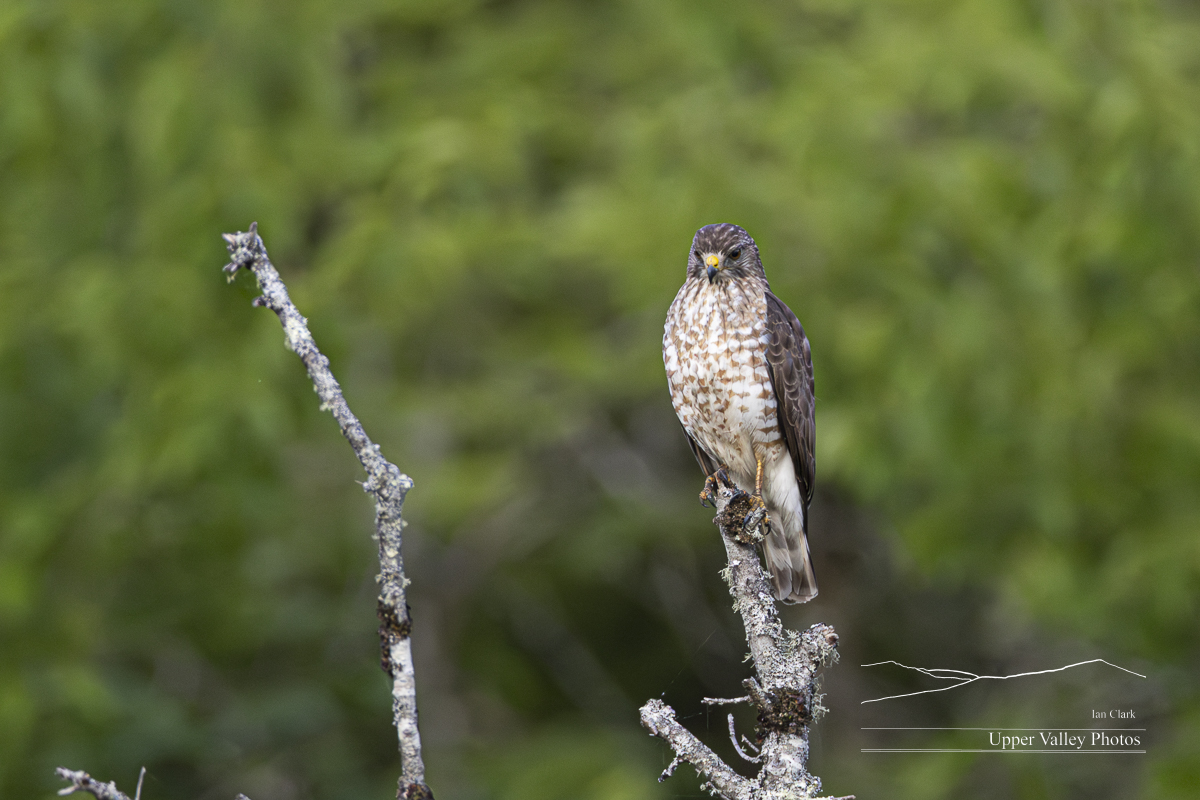
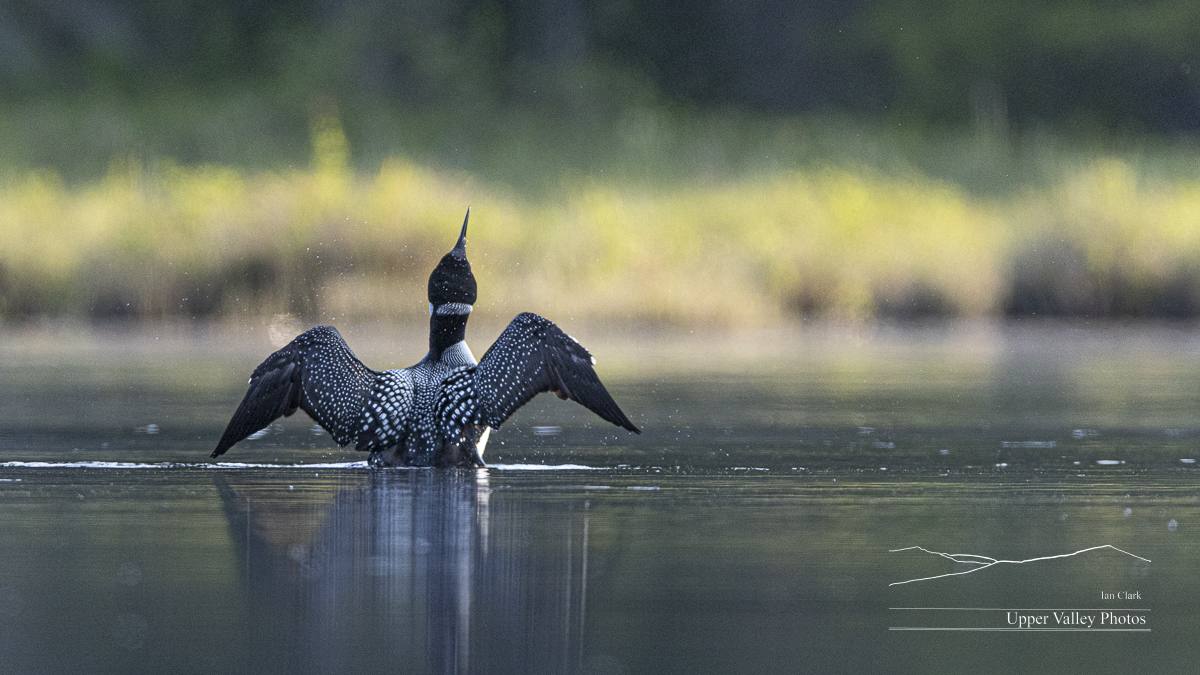
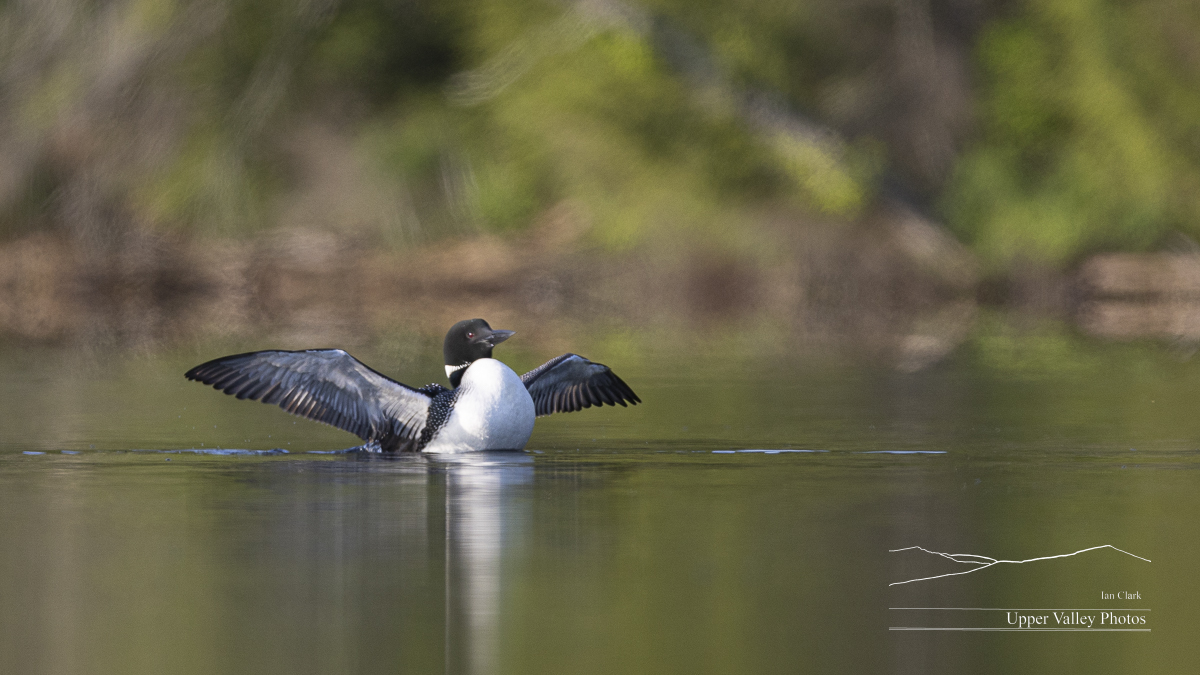
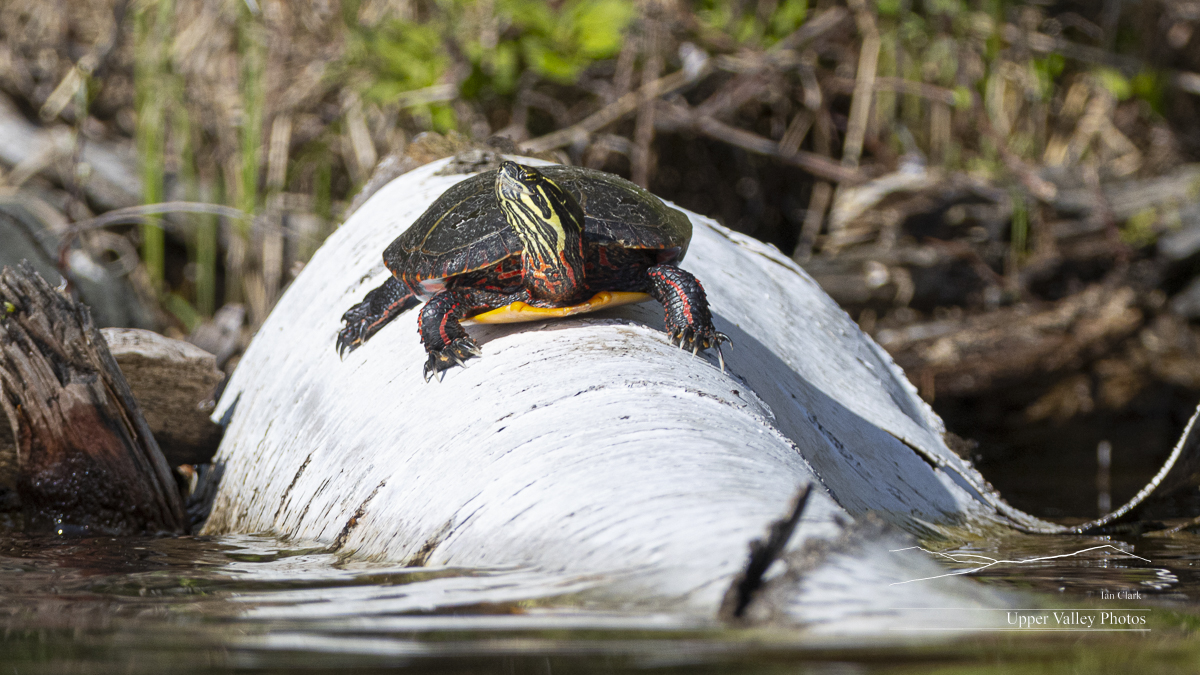
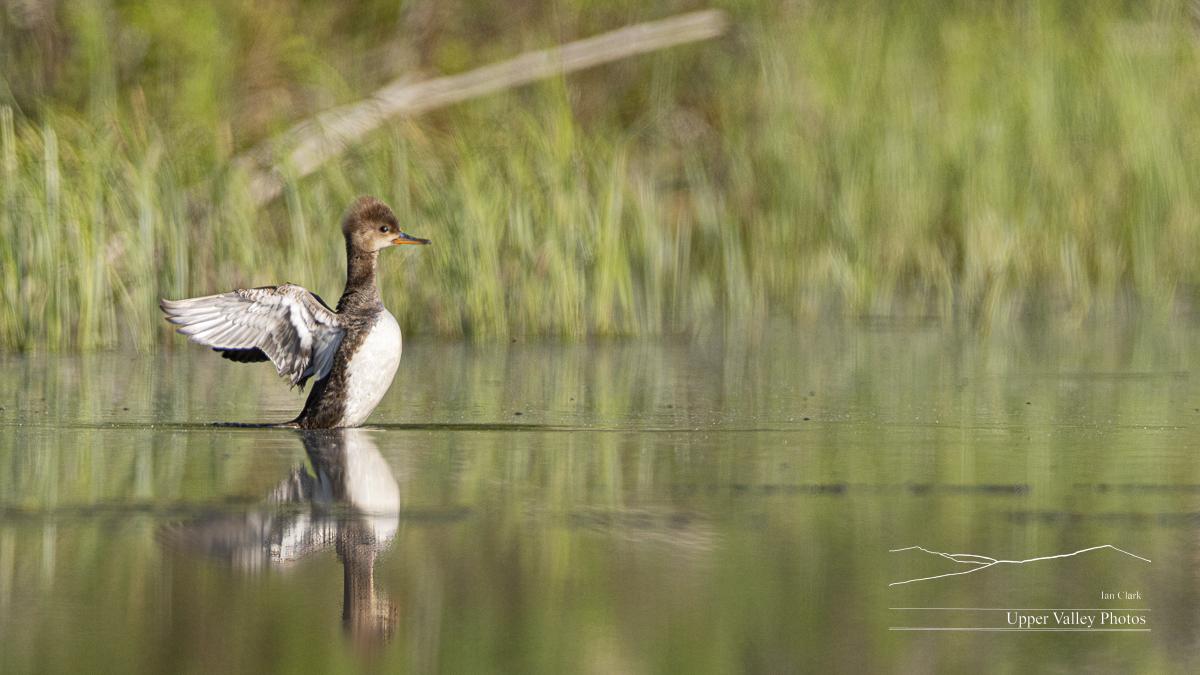
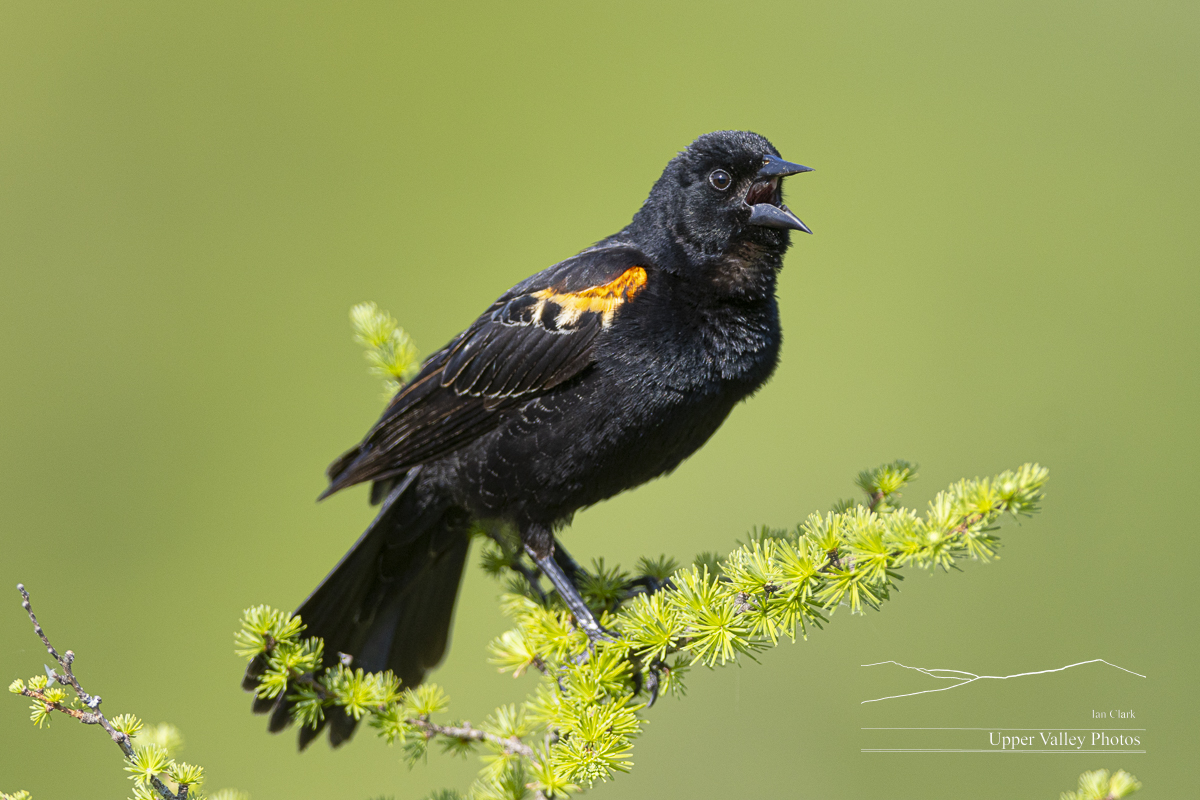
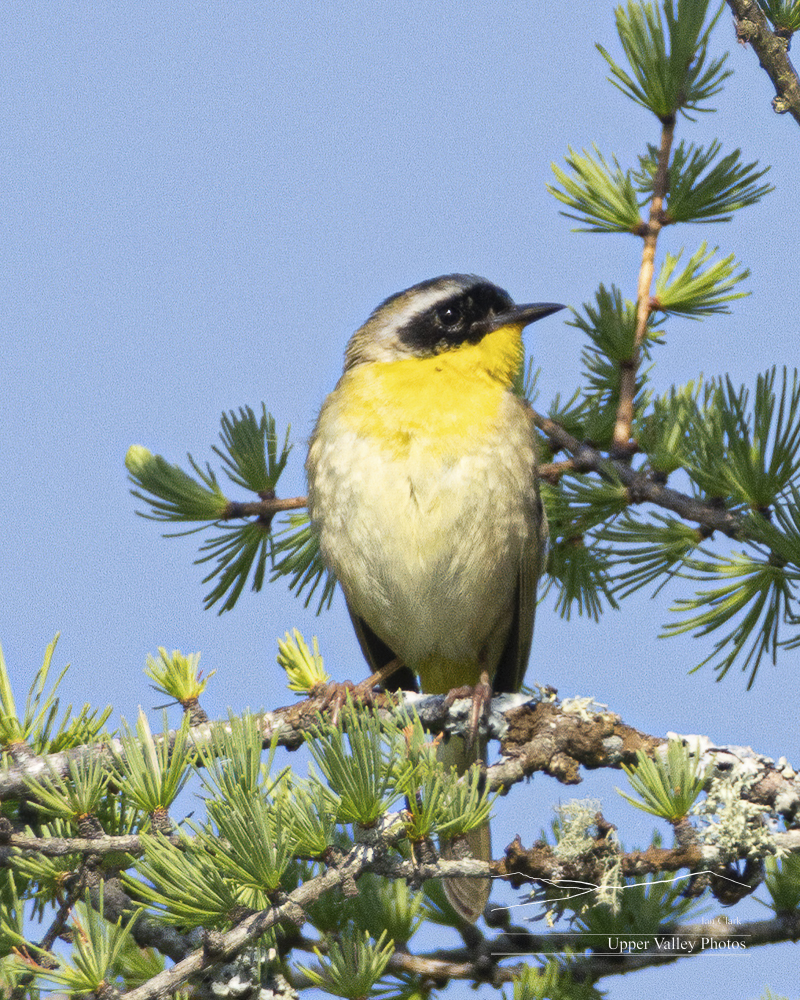
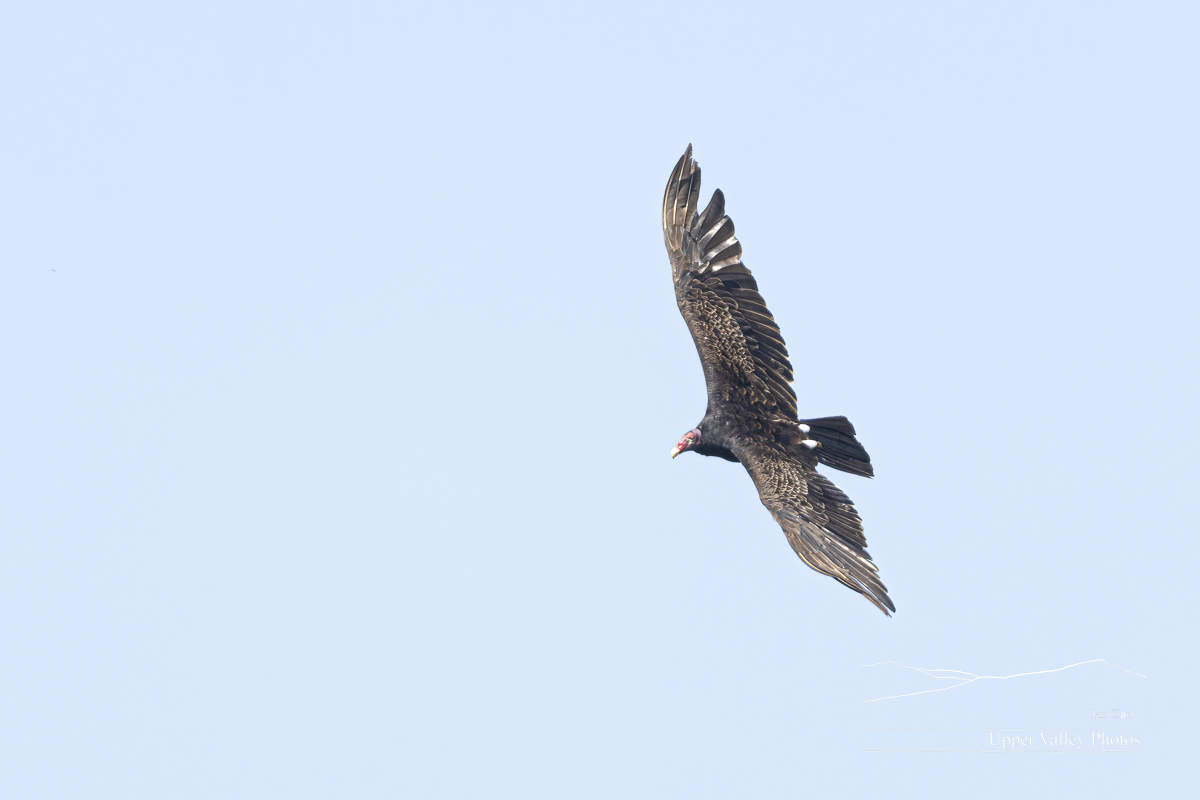
Wednesday evening, I dropped in on the Middletons. It was well into the 90s. In previous years, the nest was fairly exposed to the afternoon sun and the loon with afternoon nest duty often sat in full sun for a couple hours. I headed over to check on the nest. On my way, the resident osprey took a fish from just a few yards in front of me. Of course, I didn’t see him until he was just a few feet above the water, I had to watch instead of taking photos.
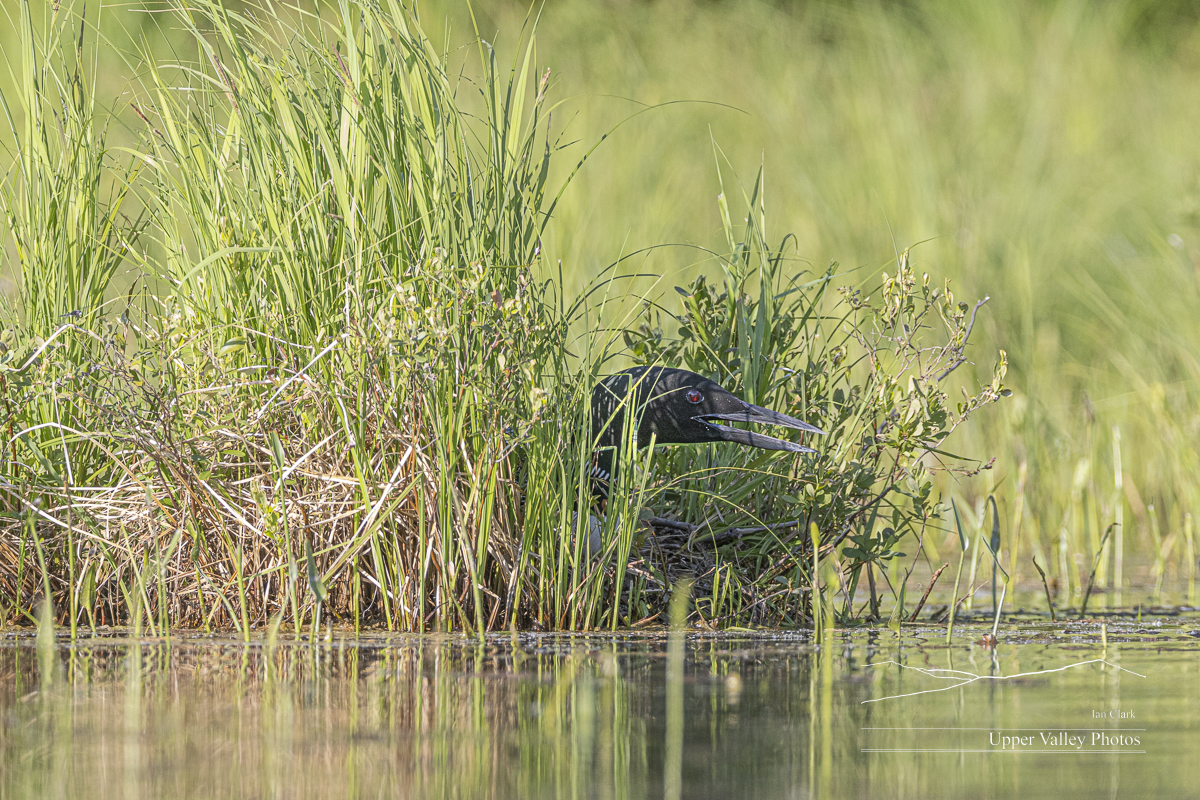
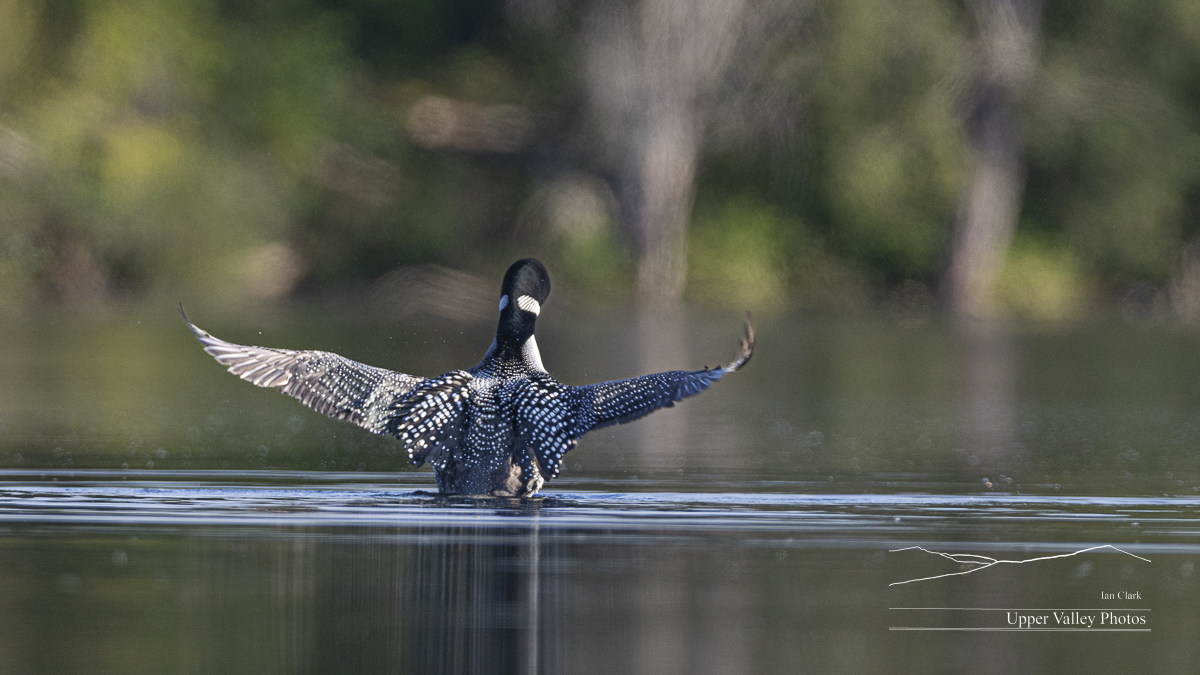
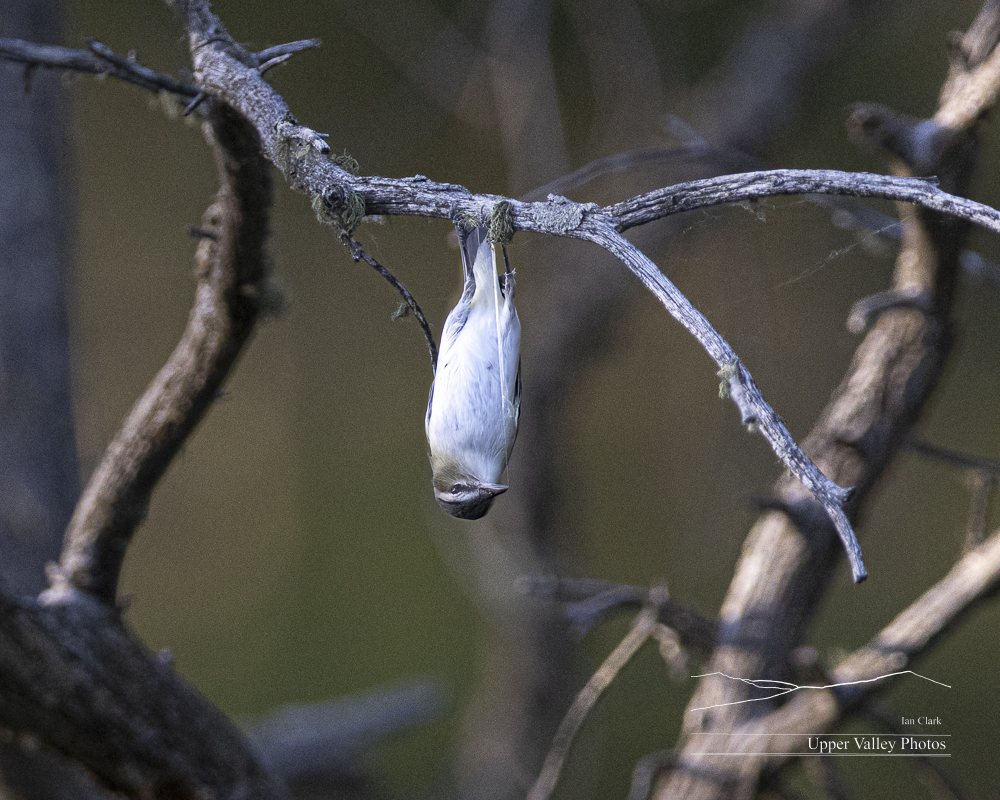
Thursday morning I headed back to visit the Eastons, hoping both had returned. There was no wind, it was a perfect morning just to be out on the water, even better for photos. As I headed down the pond, I quickly spotted a loon sitting on the bank a couple hundred feet from the previous nesting site. Studies of banded loons suggest that if they are successful in hatching chicks in a nesting site, they’ll reuse the site. The literature says the male picks the site, I hoped our male had returned (I want all my critters to live long happy lives before retiring to Boca Raton.) The male on the pond the last few years was banded, I wanted to get a look at their legs.

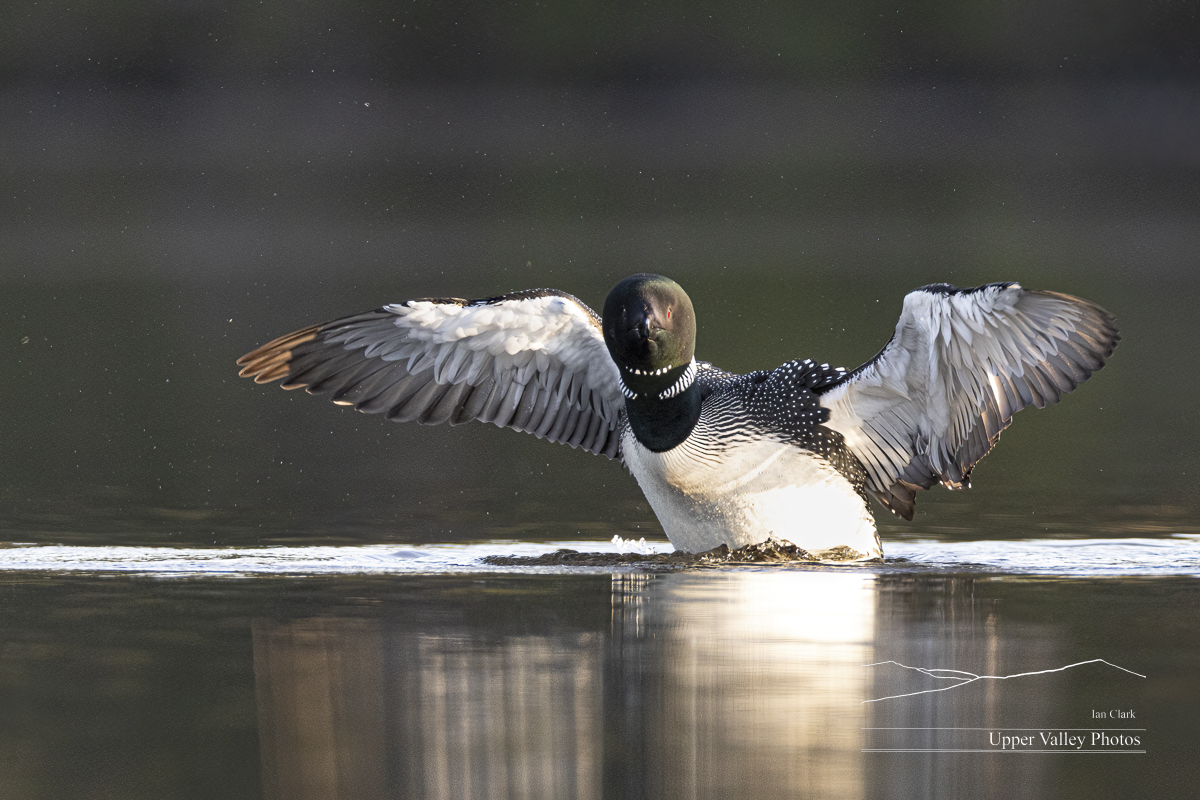
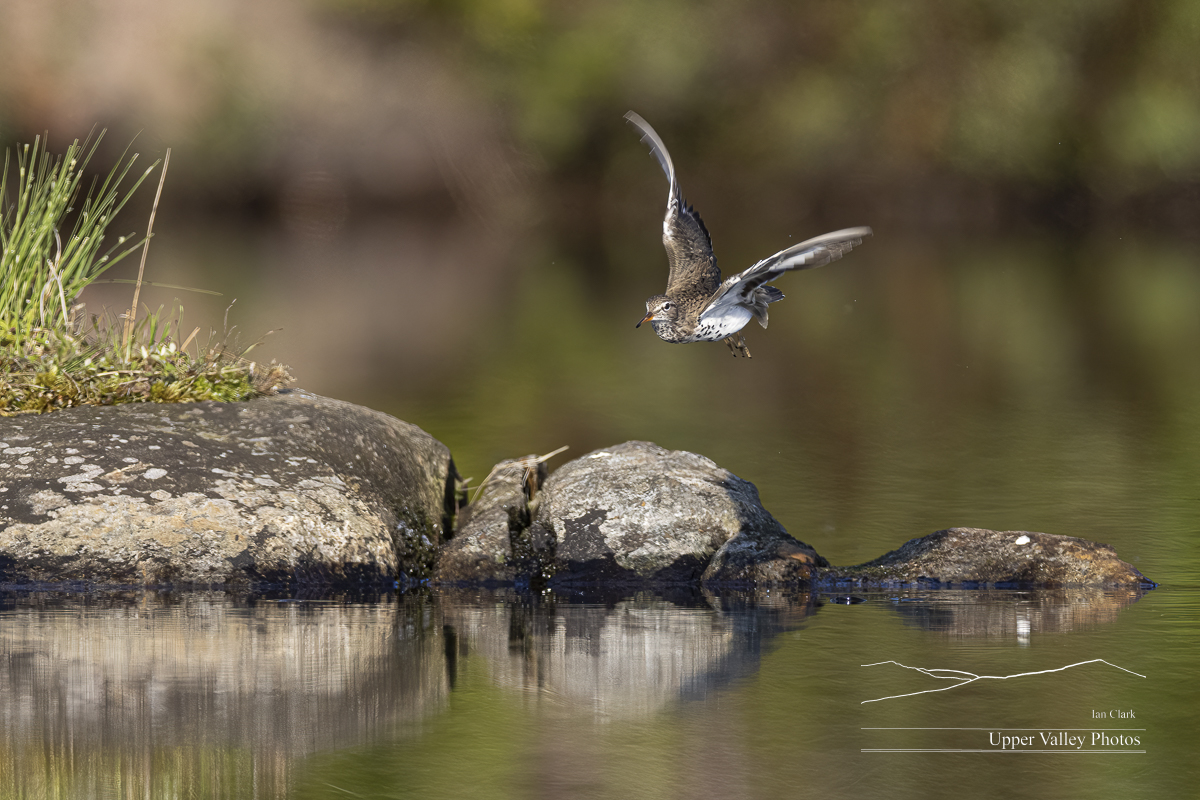
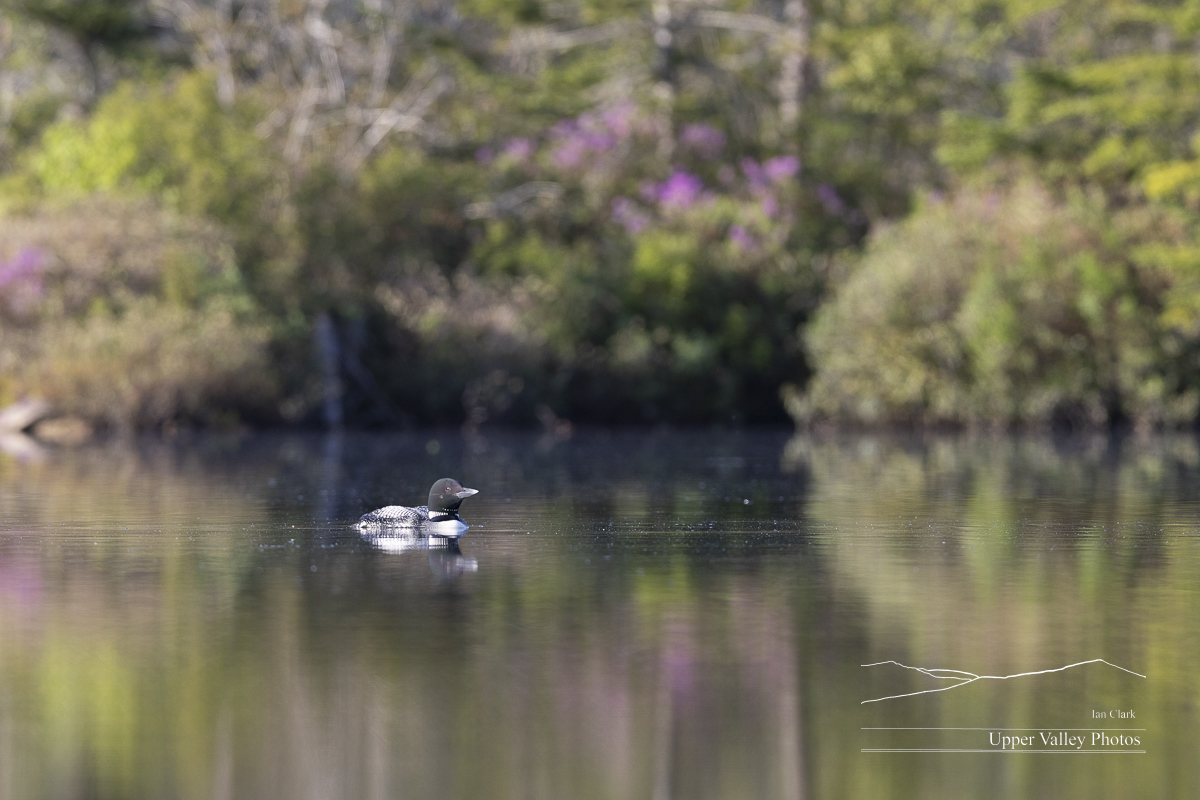

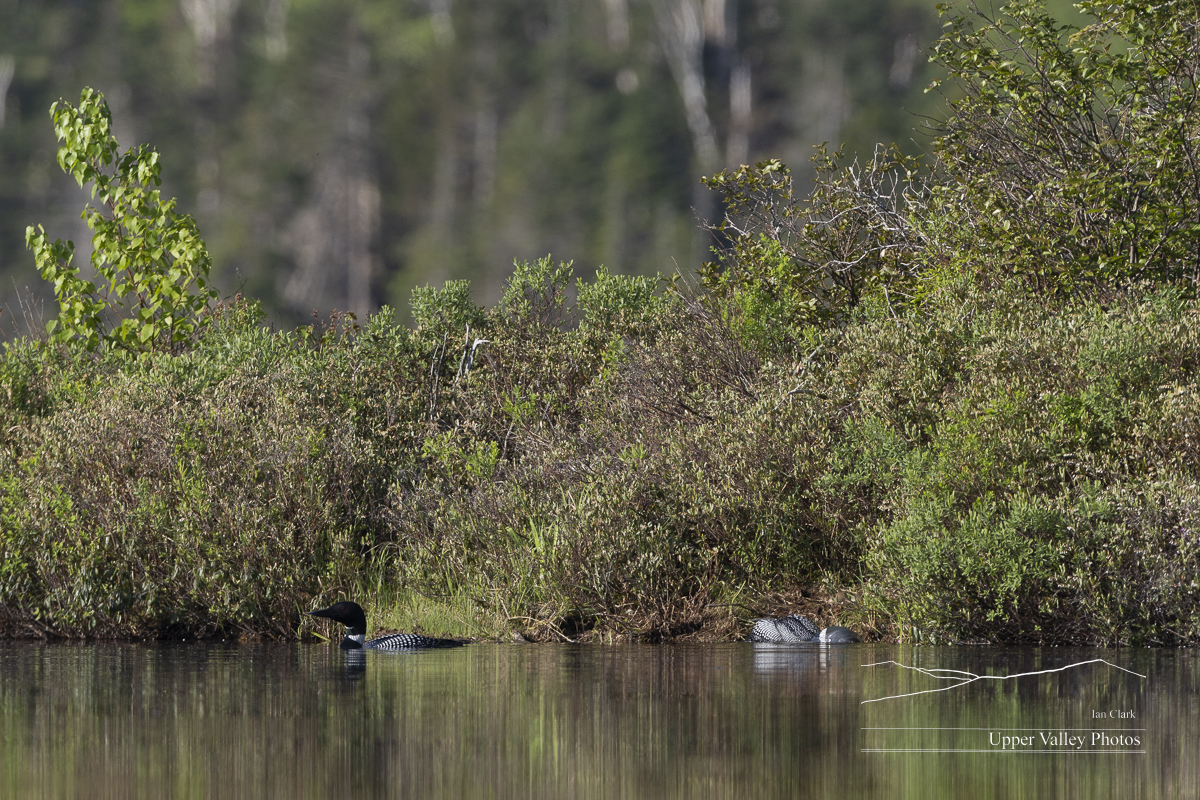
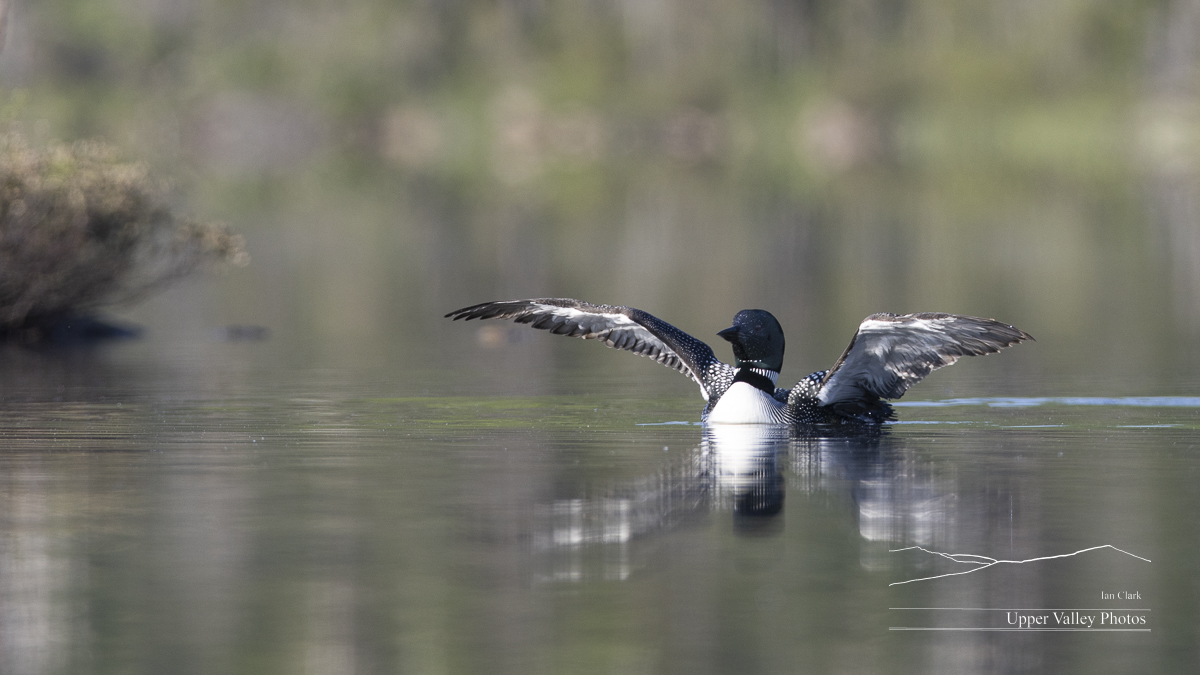

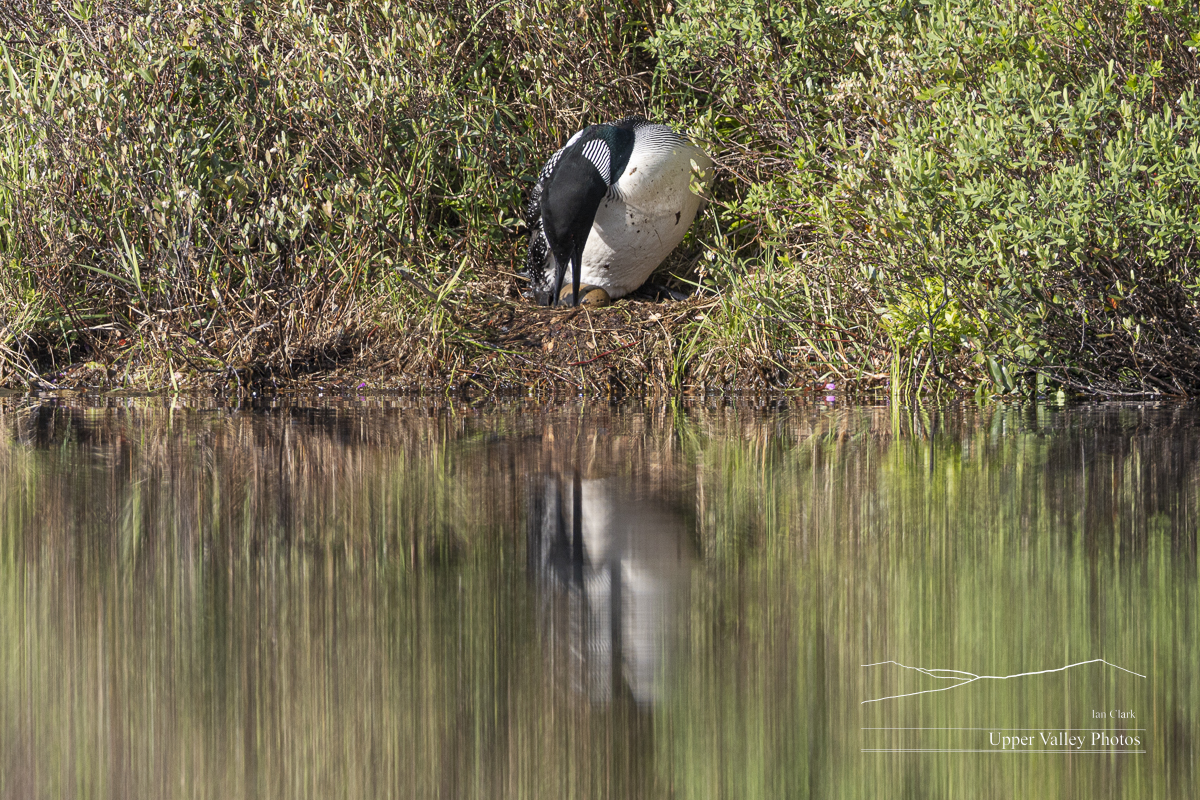
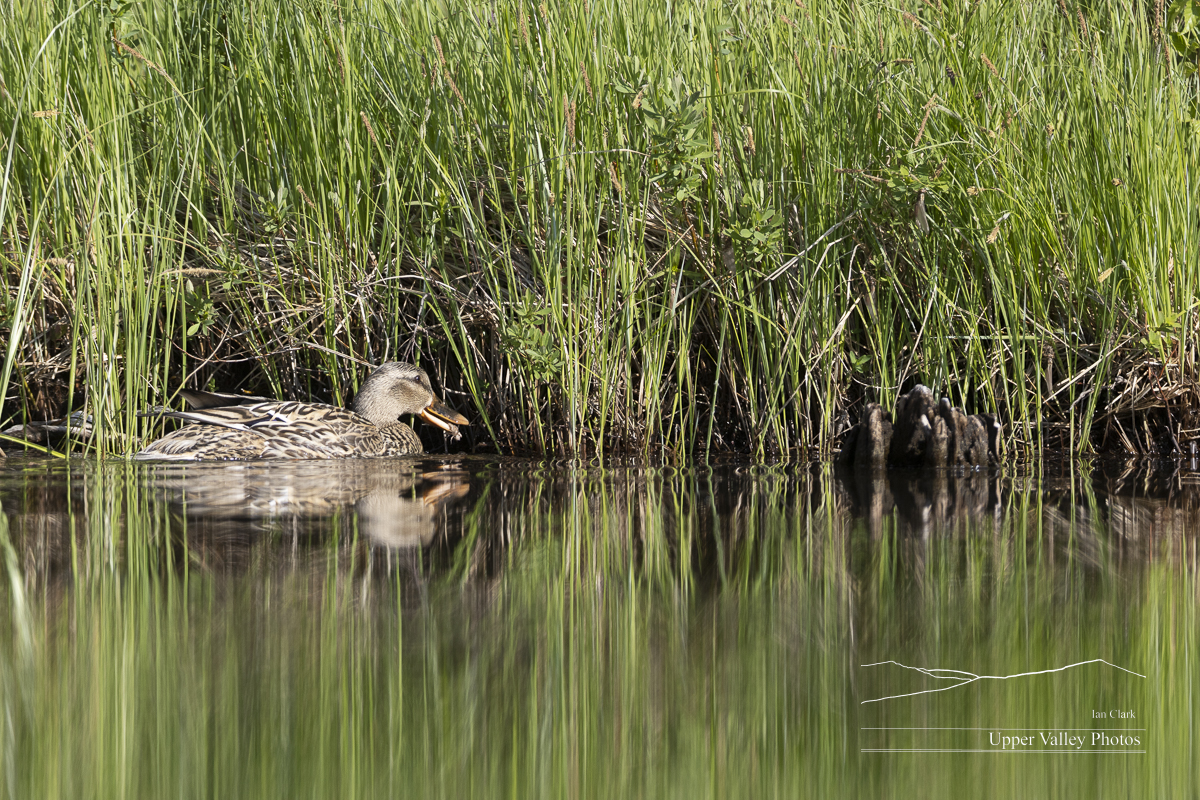
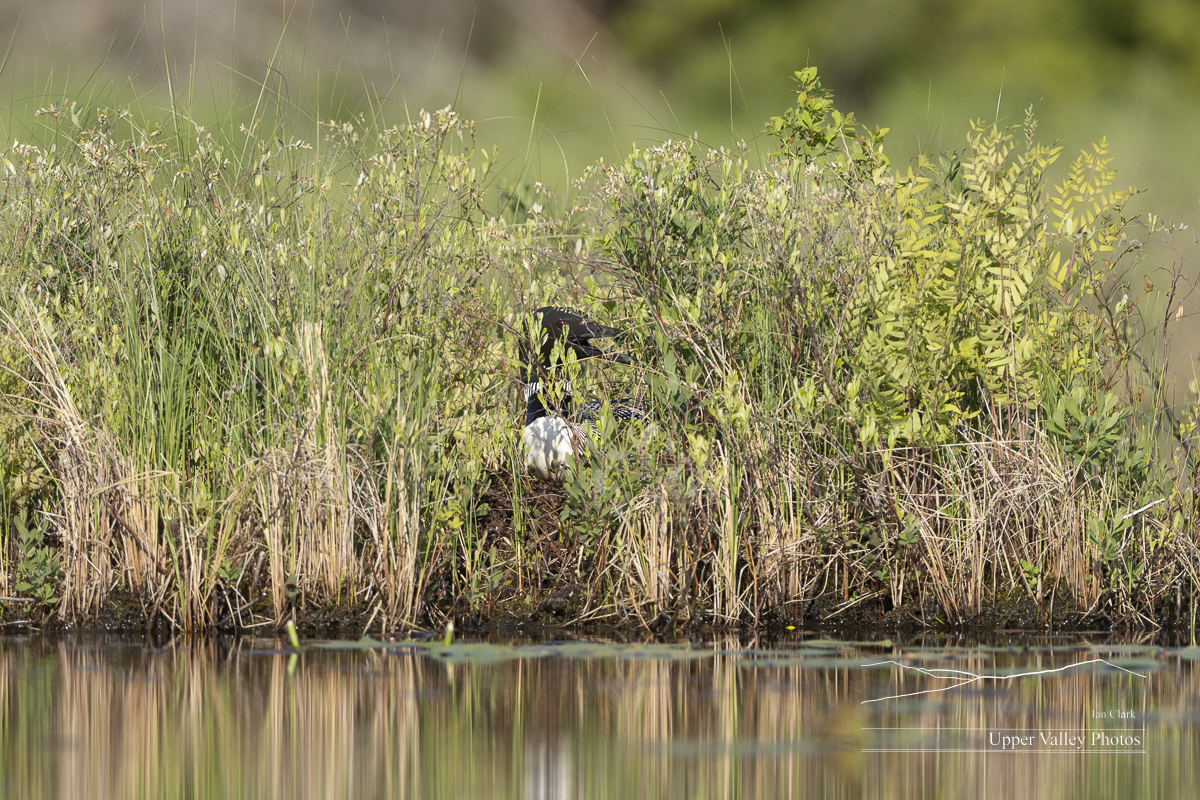
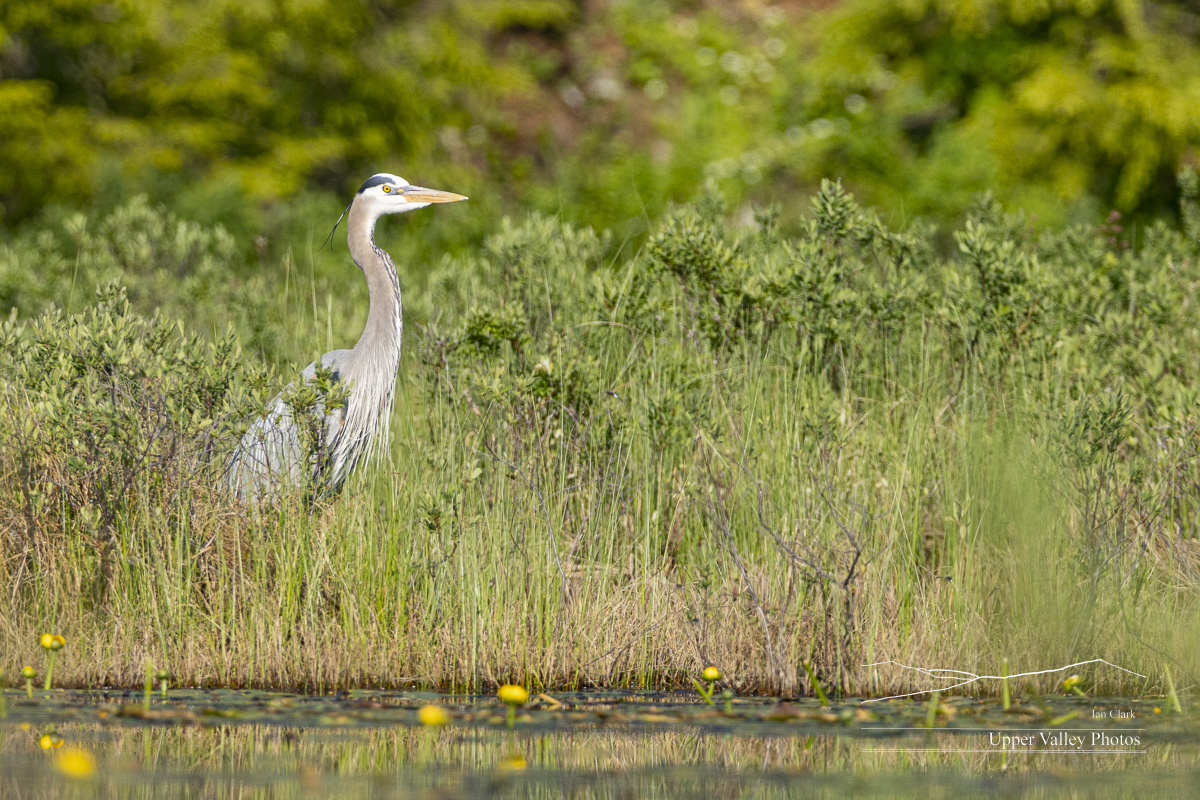
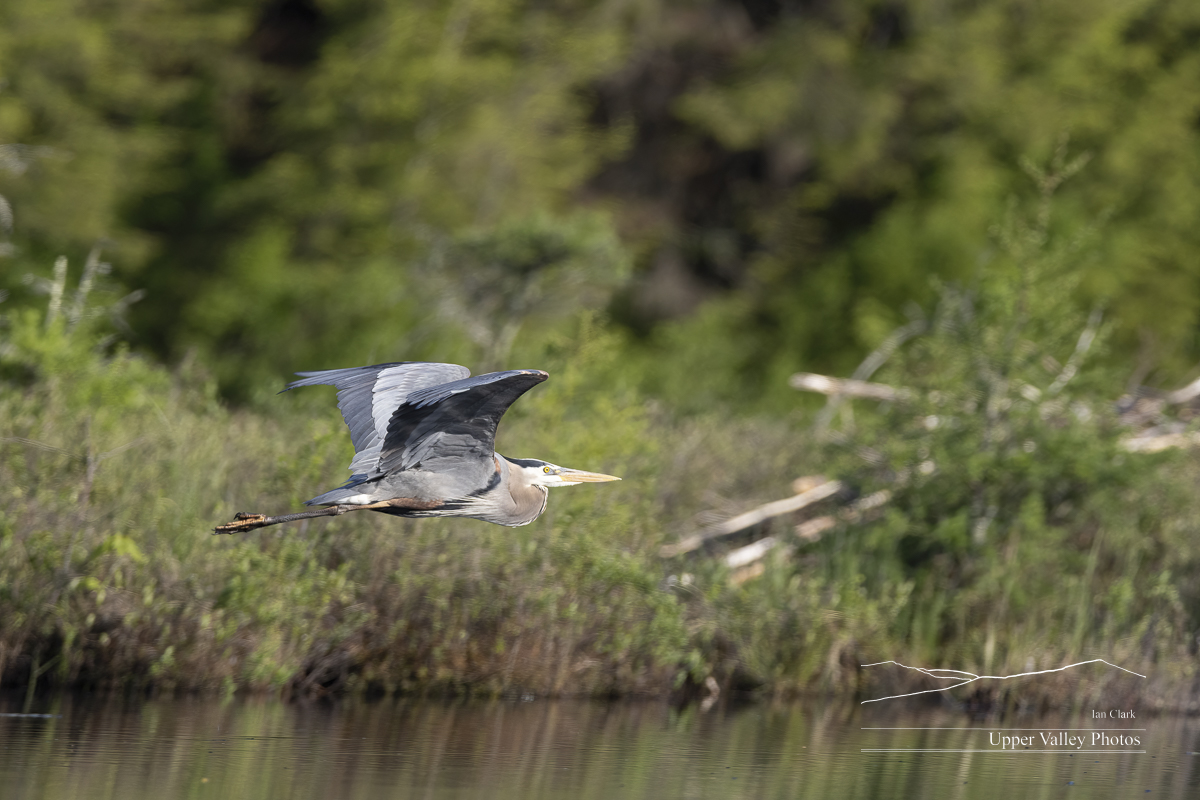
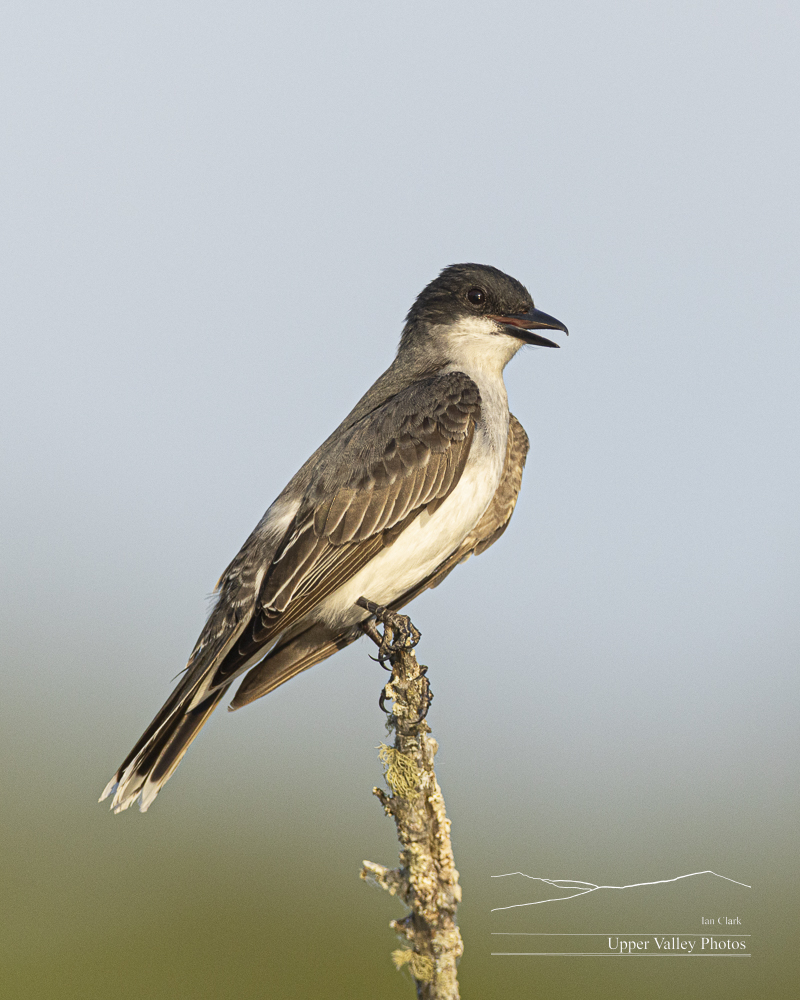
Friday morning, I packed up the Loon Preservation Committee’s nesting sign and headed back to the Eastons.
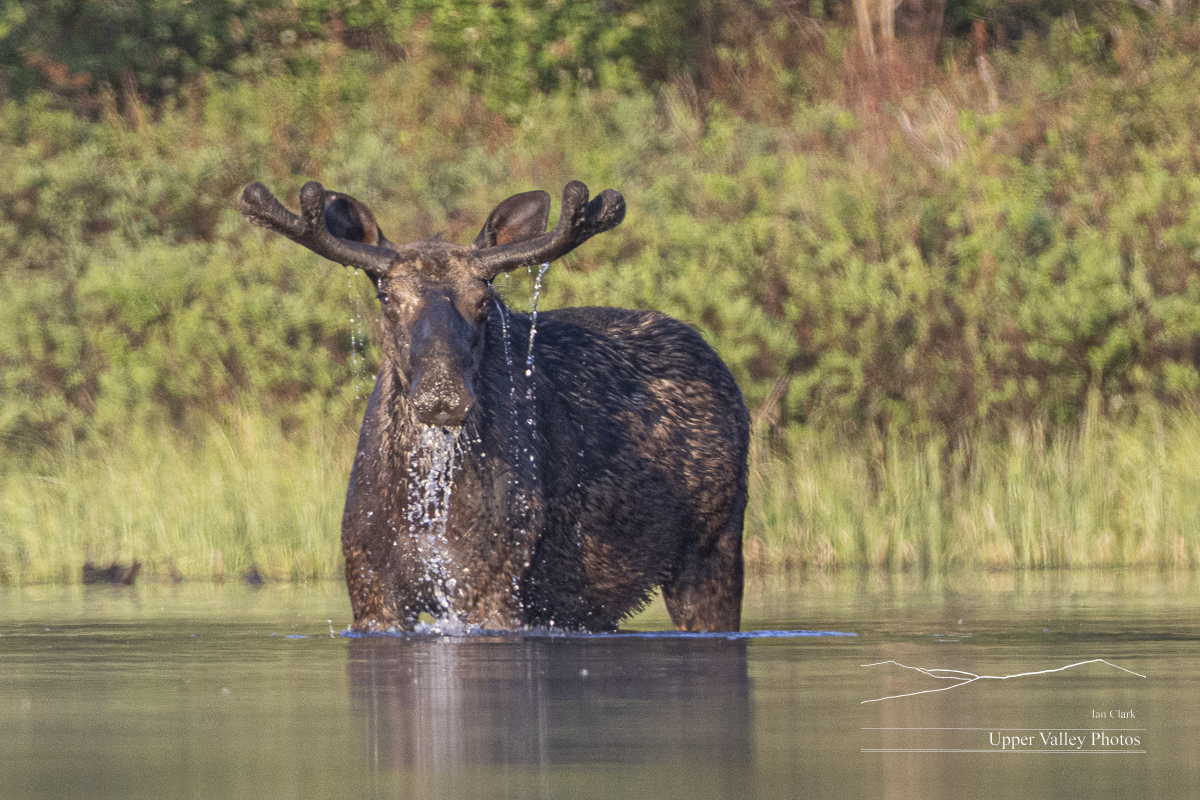
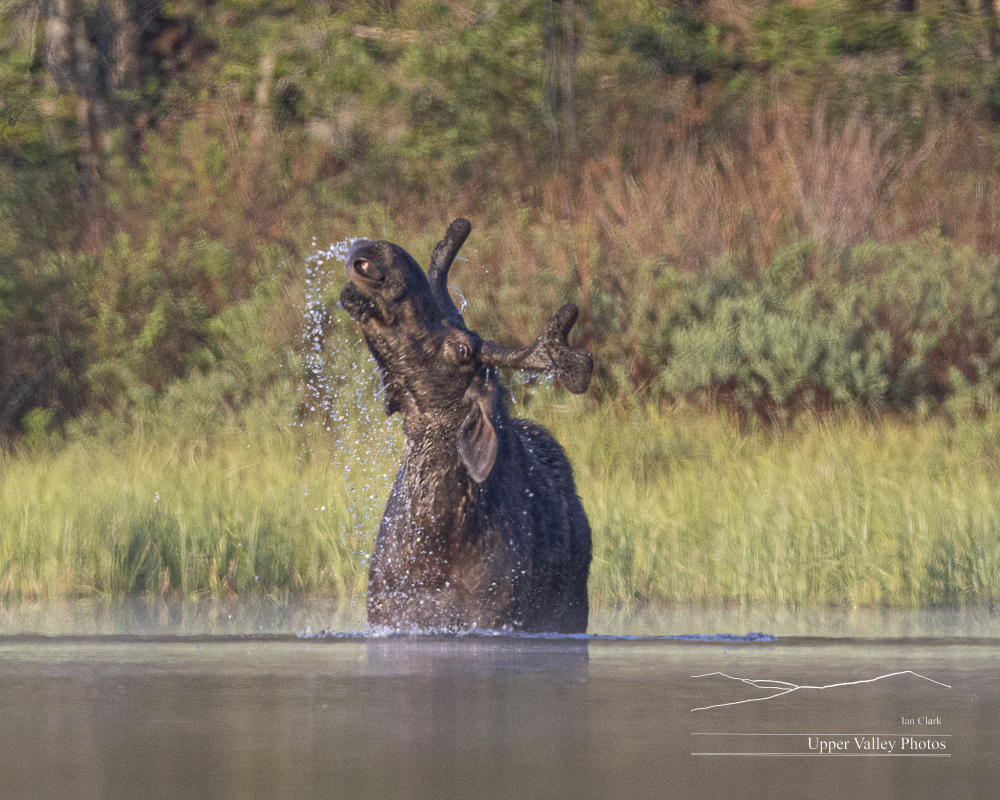
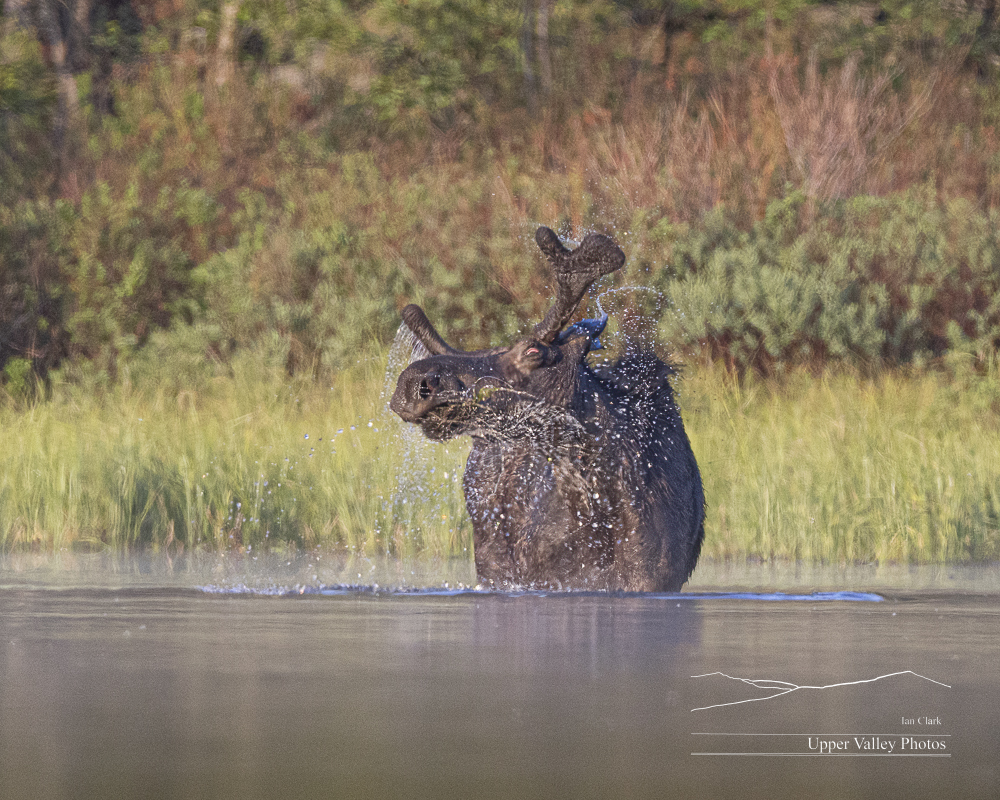
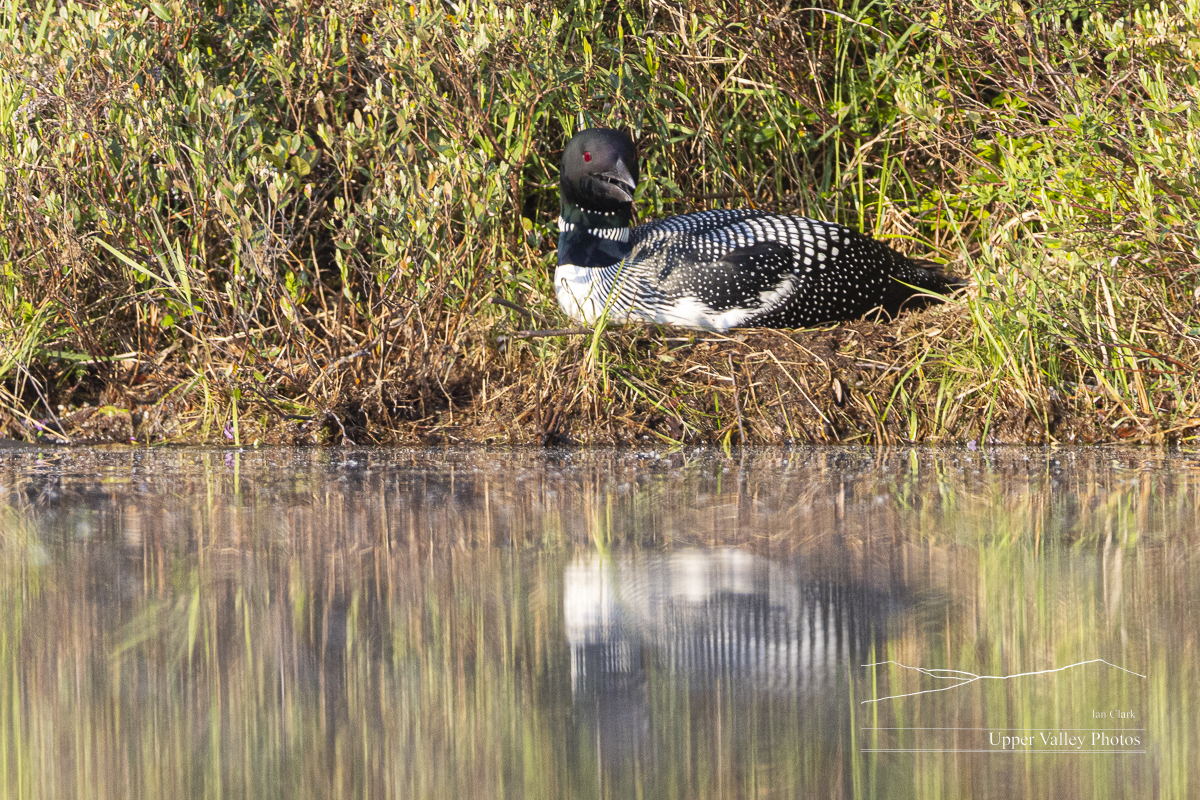
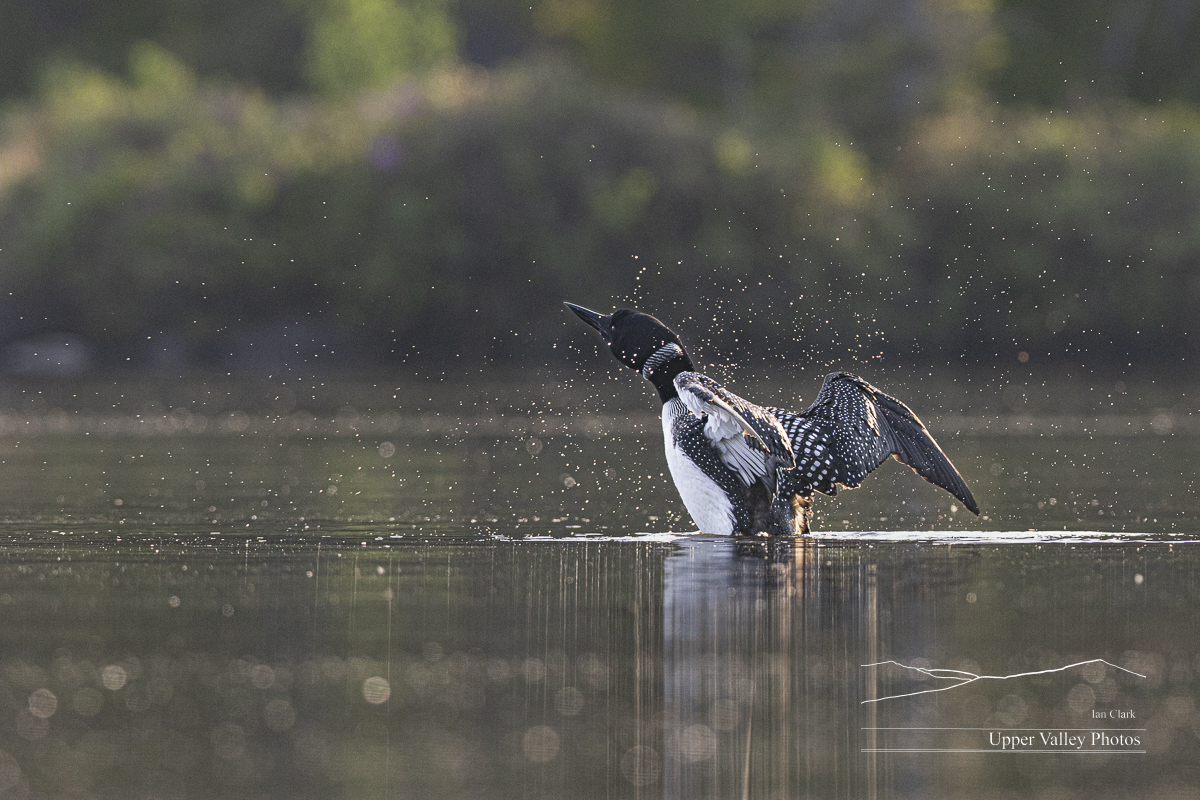

We’re Expecting!
The weather kept me from visiting the loons for several days. I was out to see the Middletons last Thursday, May 18. I didn’t get back until last evening. And I had a chance to visit the Westons this morning. Let’s see how they’re doing.
I’ll be at the Paradise City Art Show in Northampton, MA this coming weekend. Stop by and say hello. I’ll have lots of prints, from small to large, and note cards with lots of critters. All the show details here.
Last Thursday was another chilly morning, with a little bit of fog on the water.

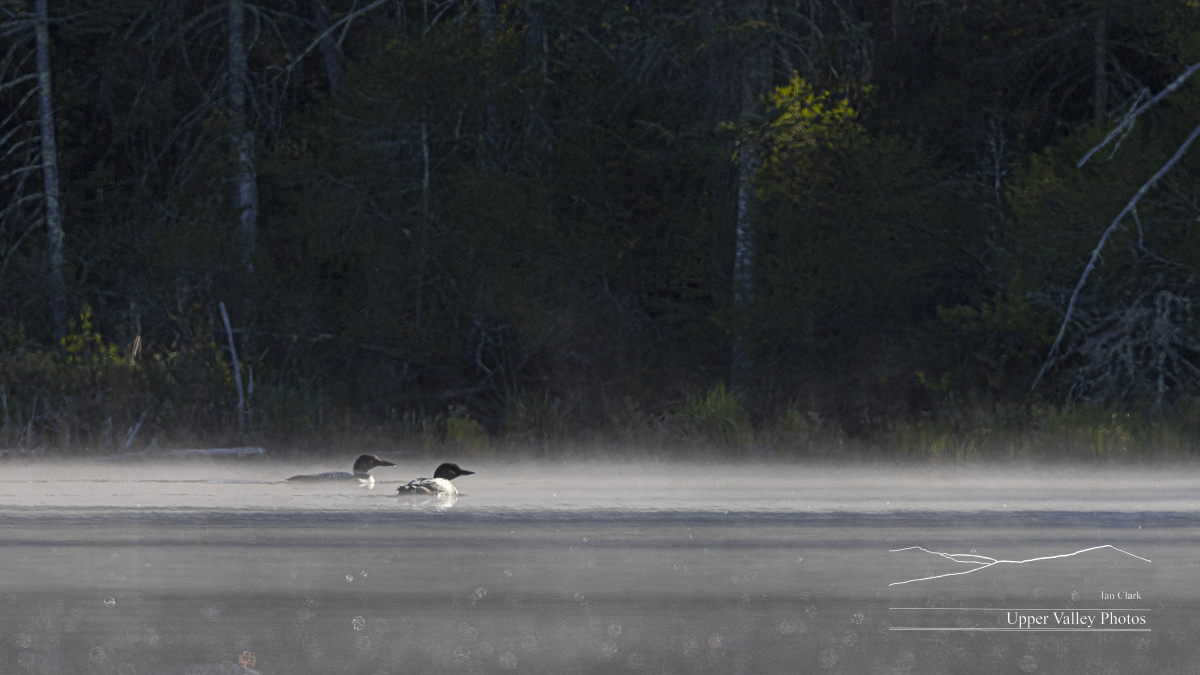
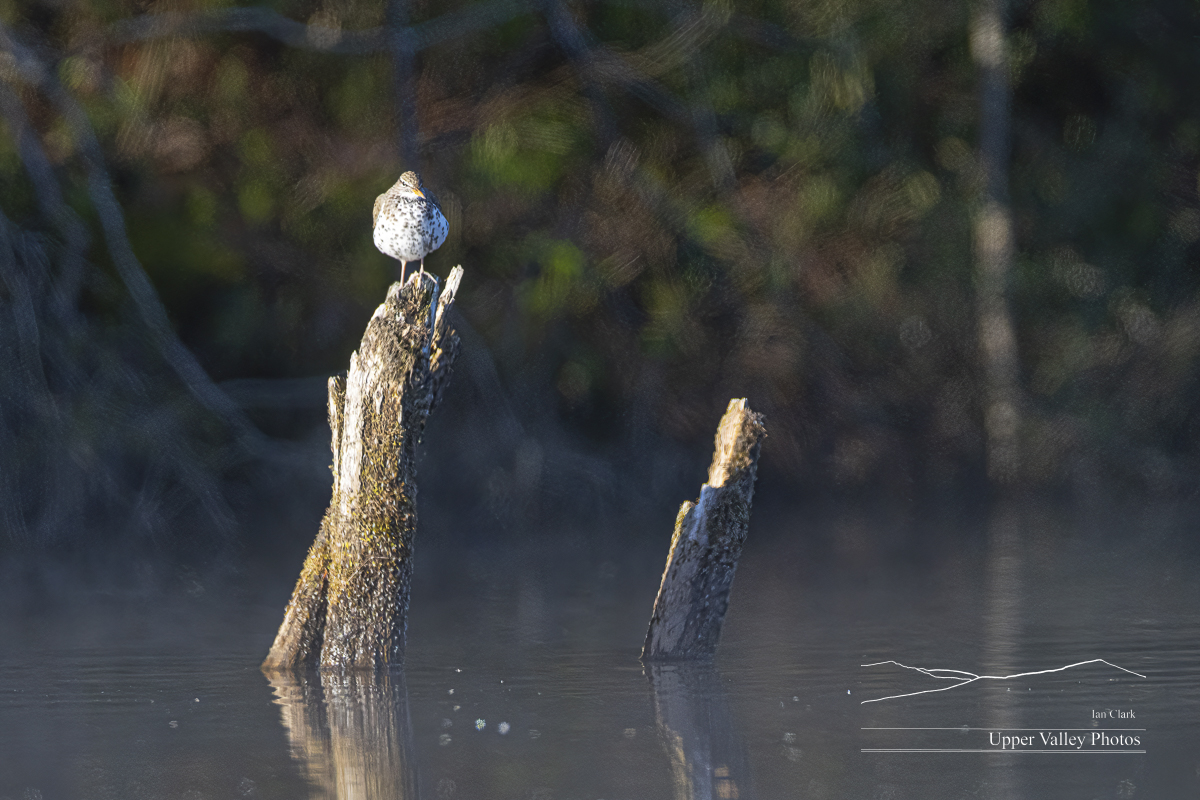

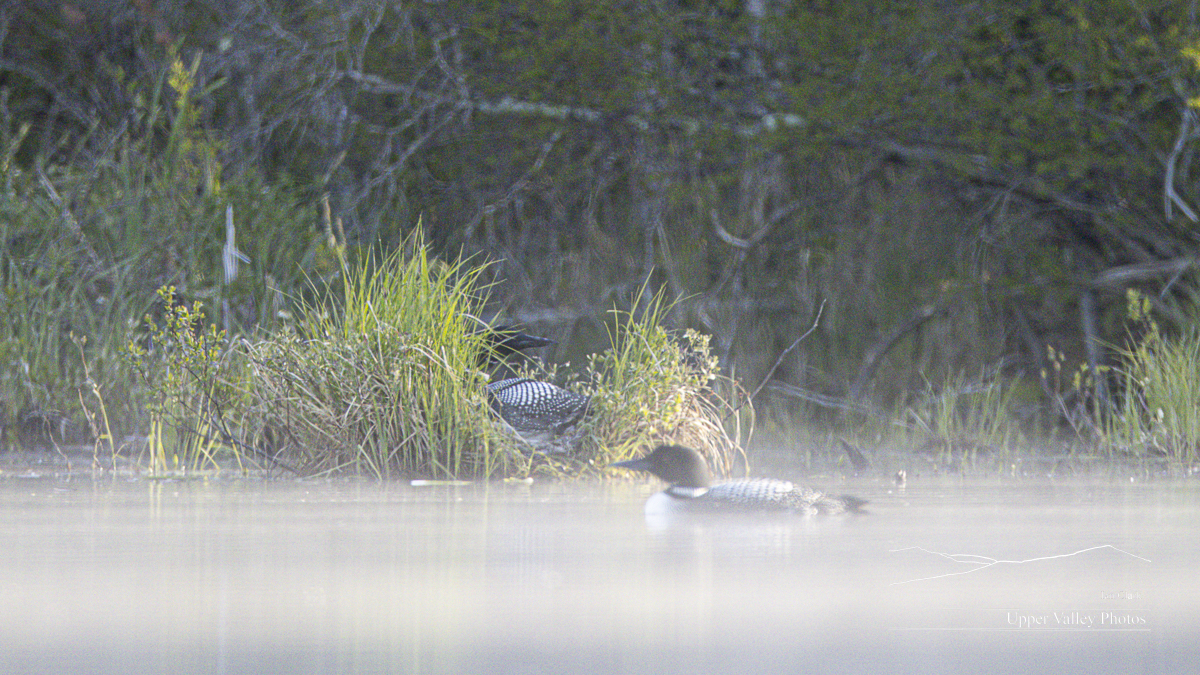
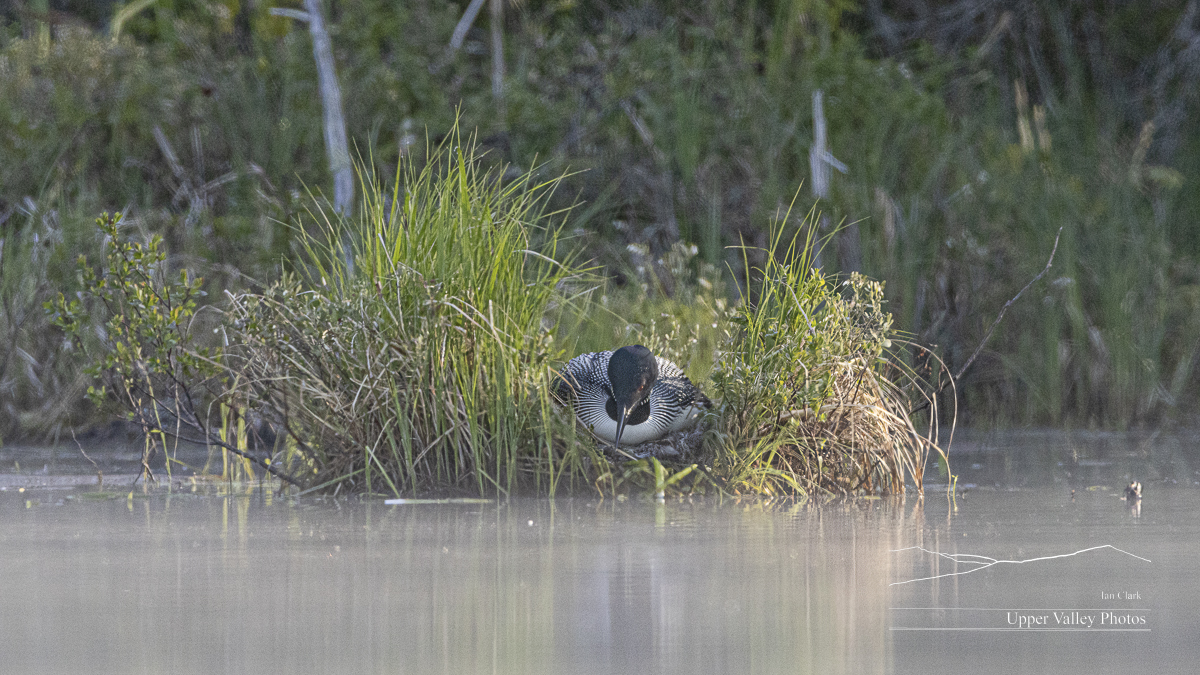


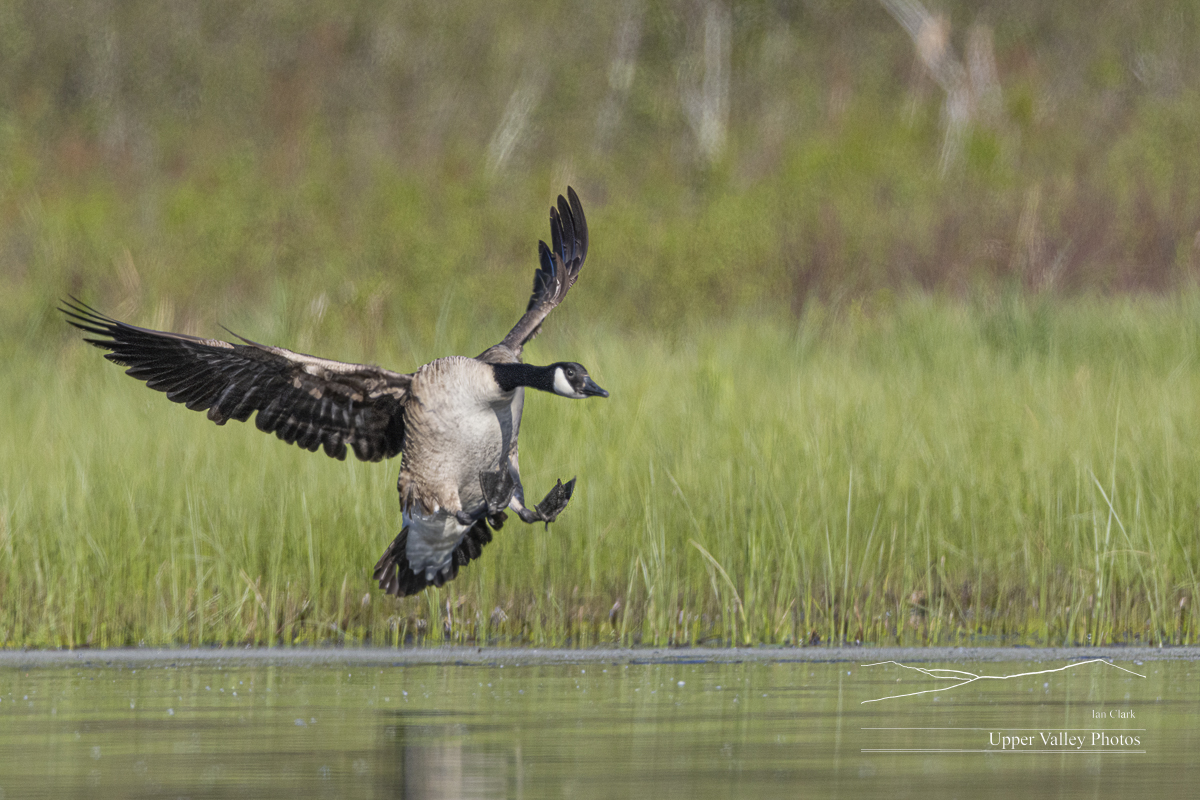
I returned yesterday evening, much to the delight of the black flies.
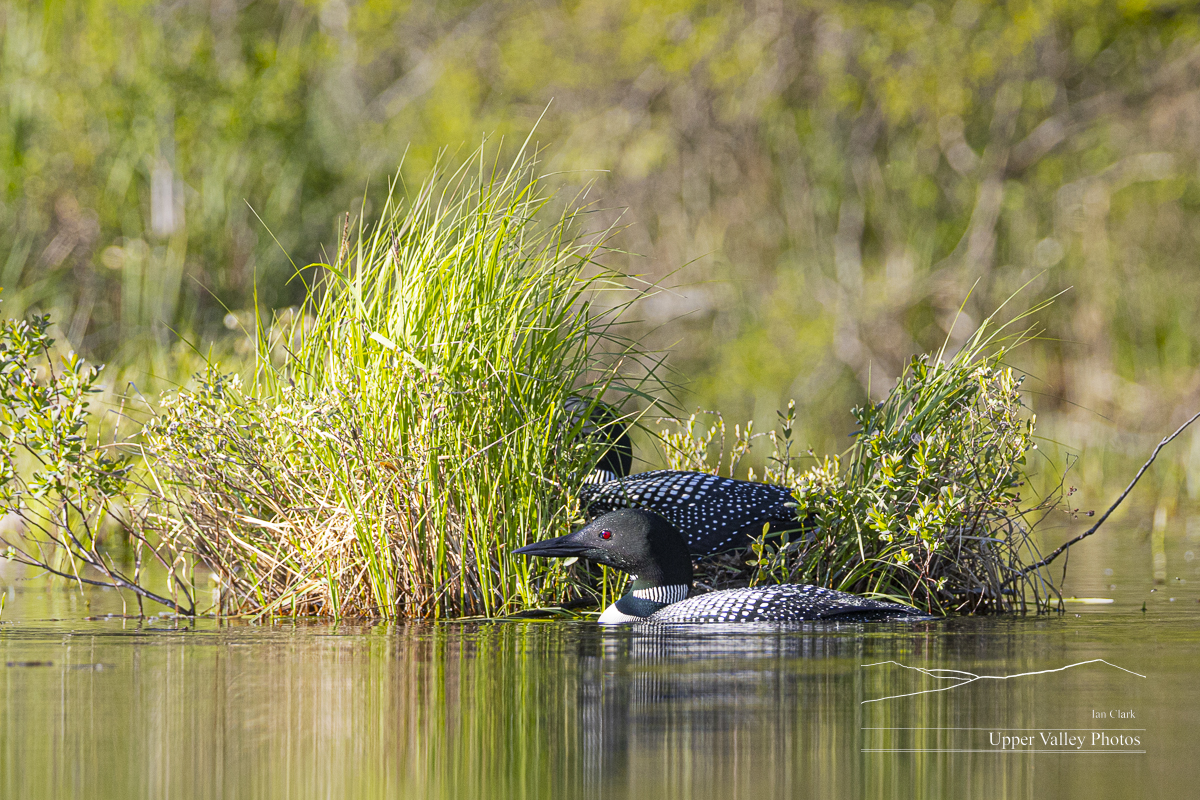
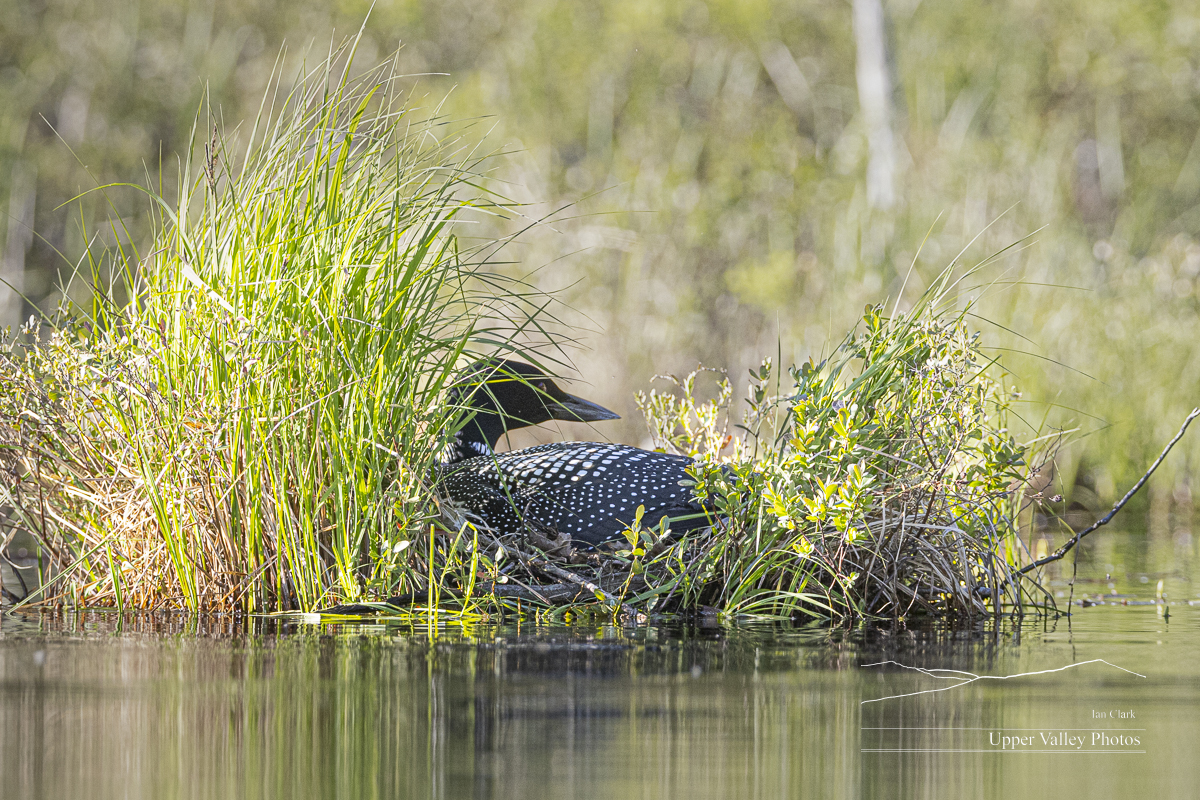
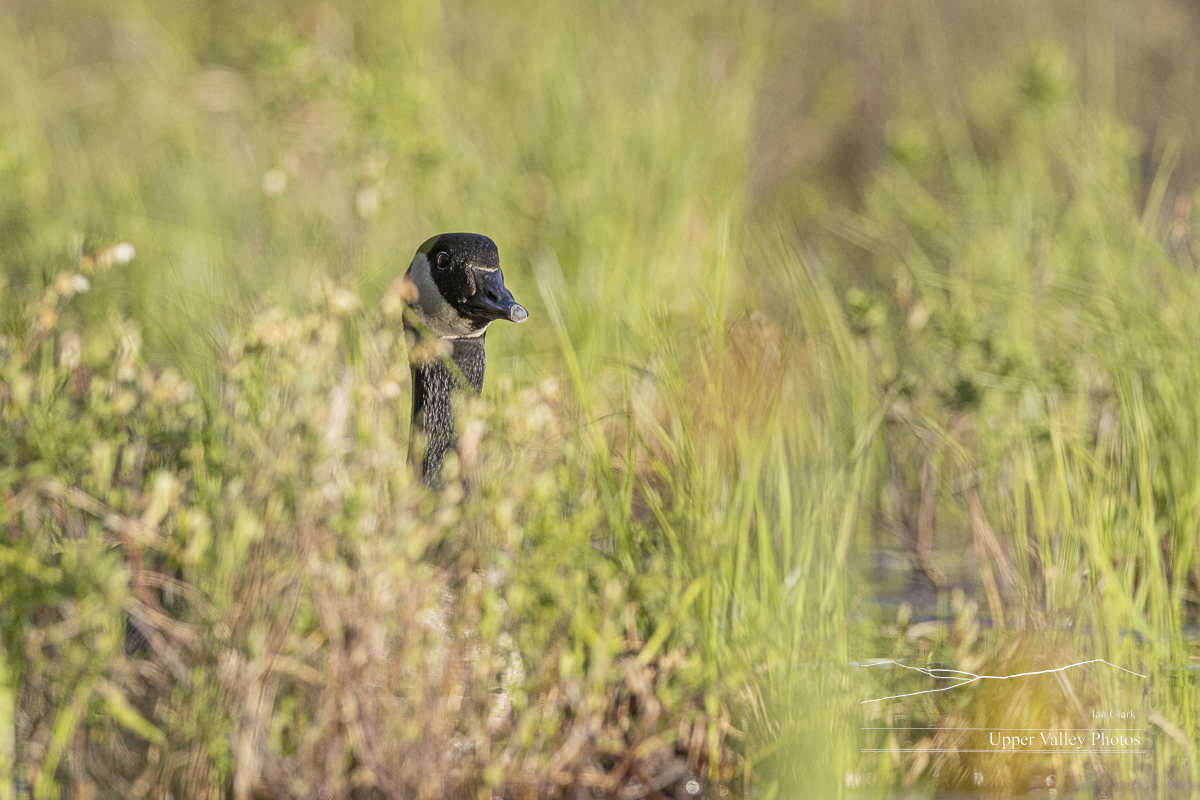
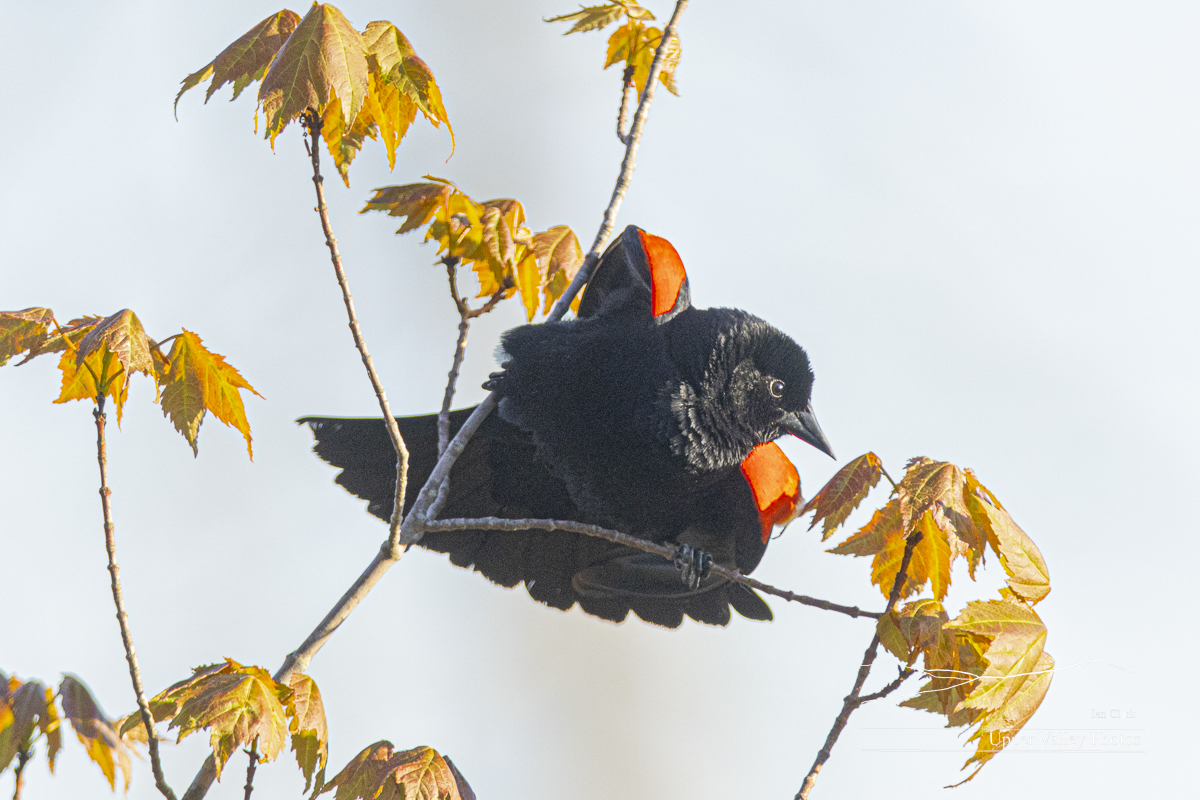

This morning I headed off to check in on the Westons. It became a beautiful morning after a chilly 38° start, with lots of nice fog on the water. The last few years, the Westons have been about a week behind the Middletons in mating and nesting. They must have a new calendar this year.
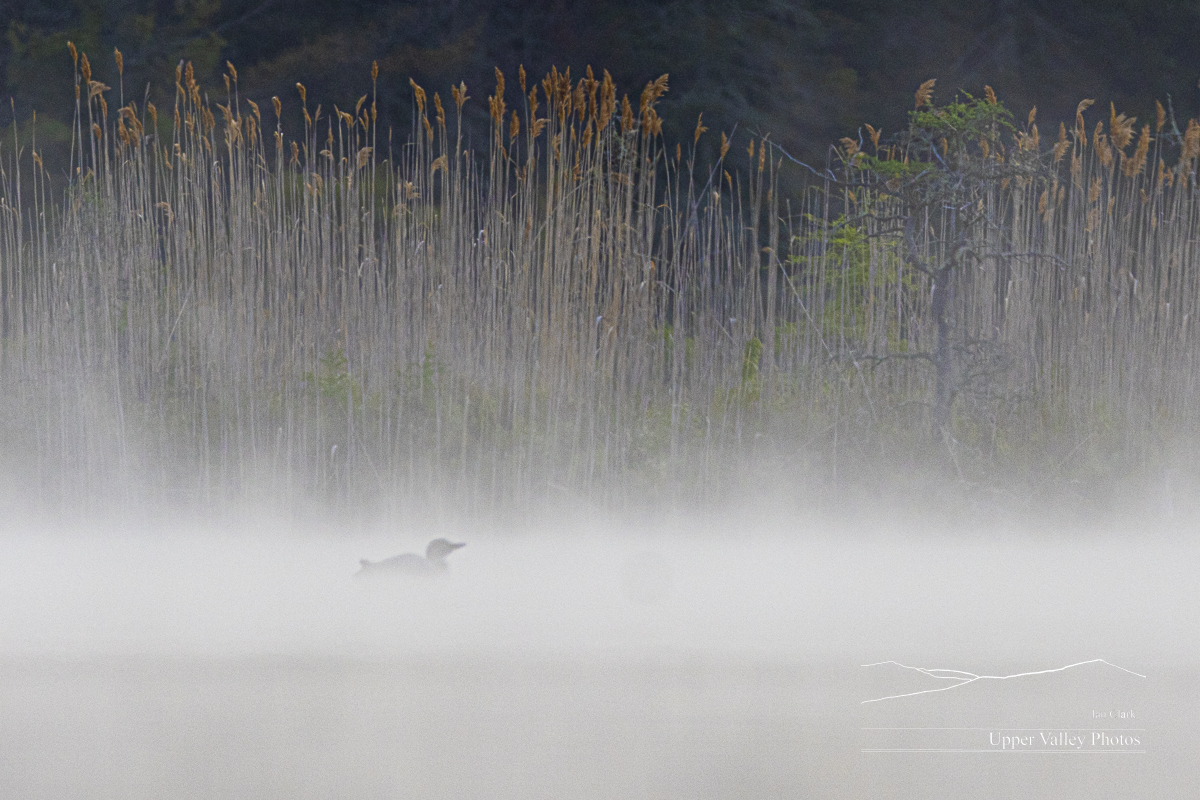


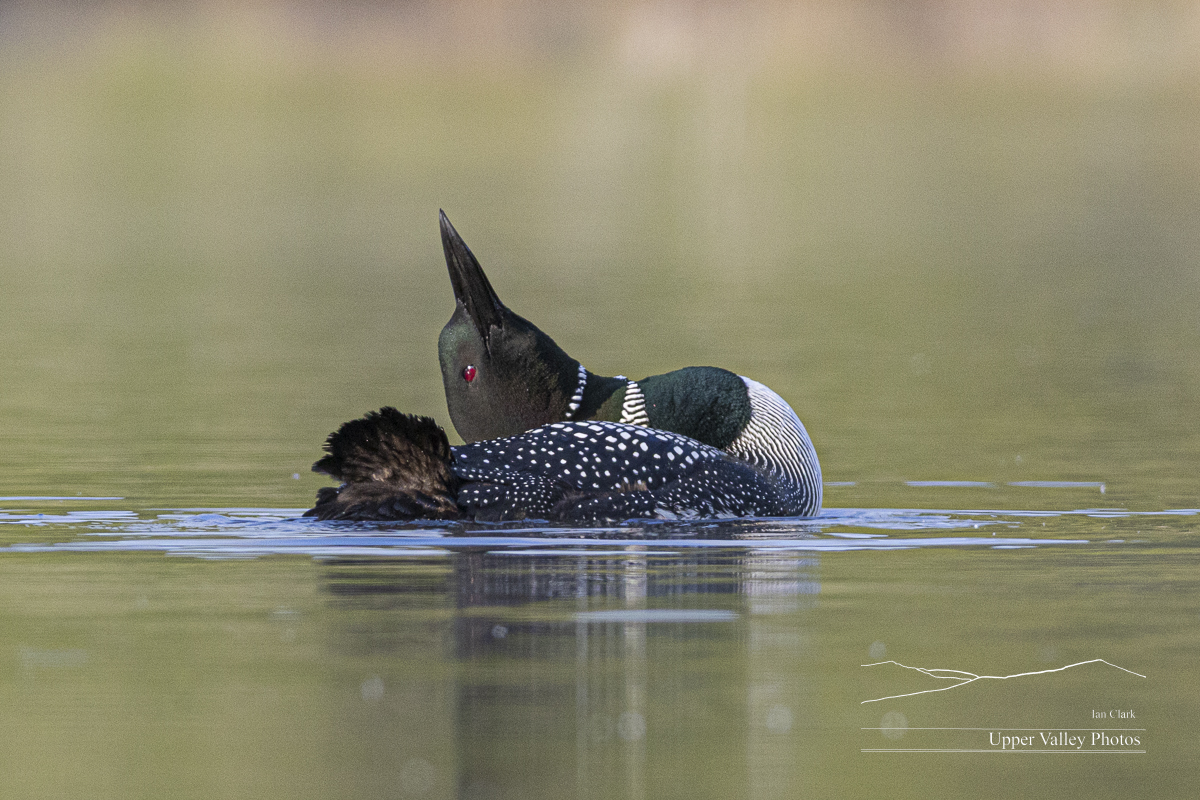
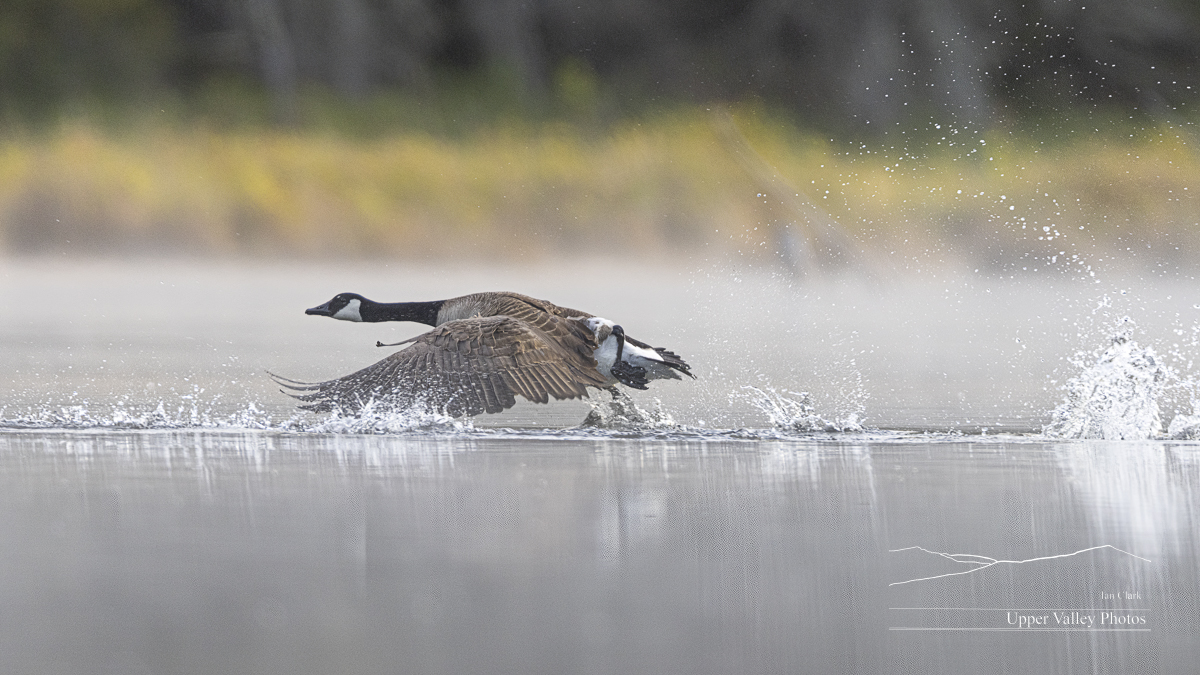

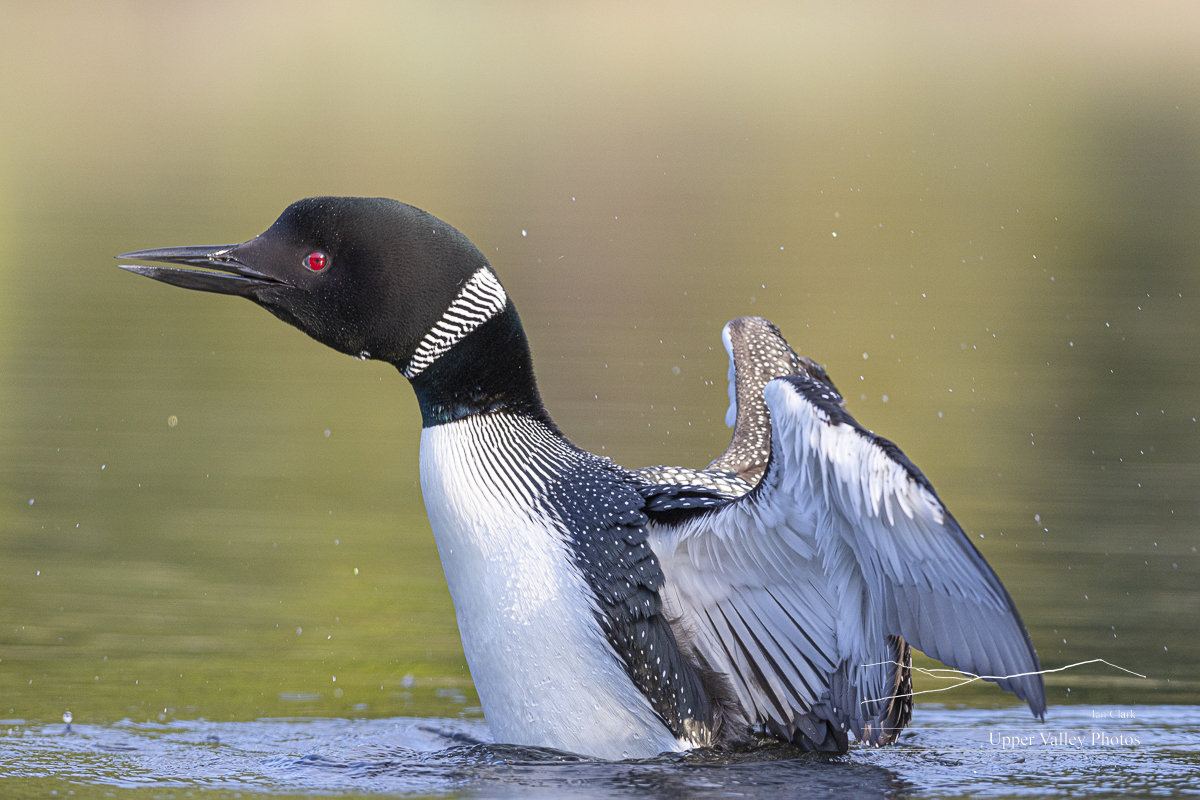

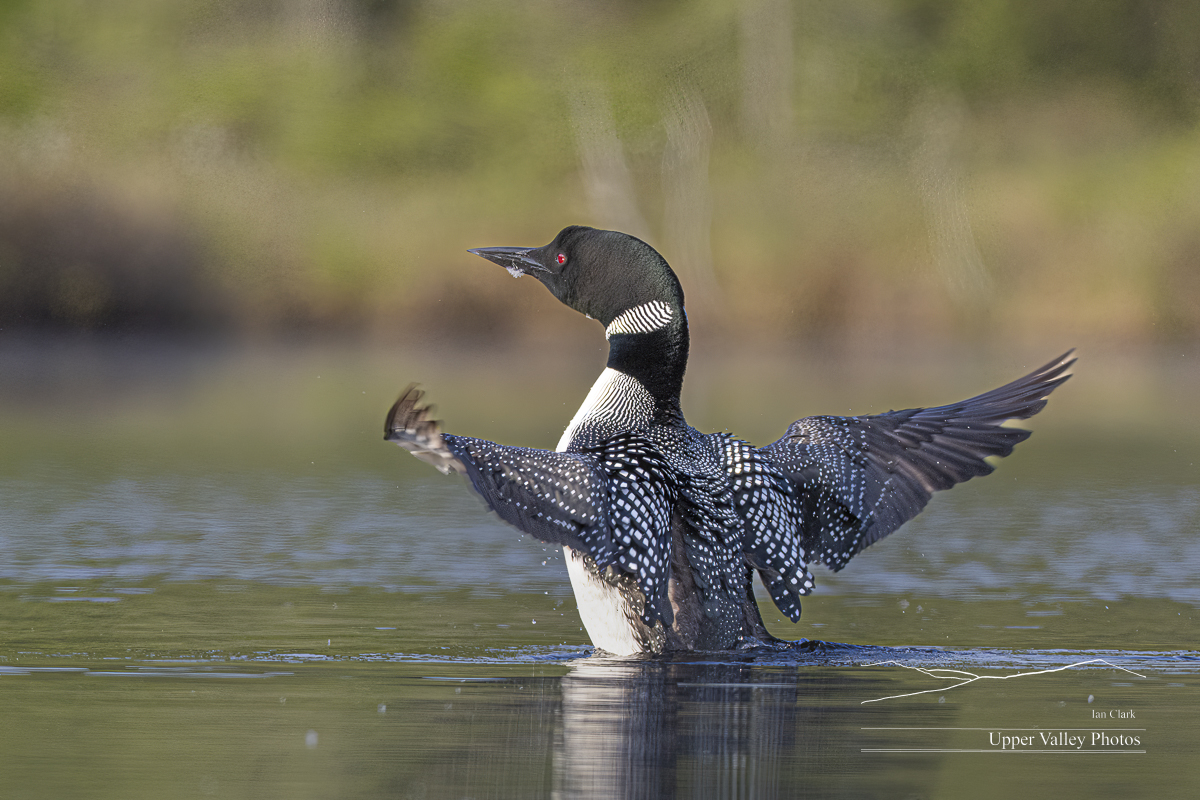
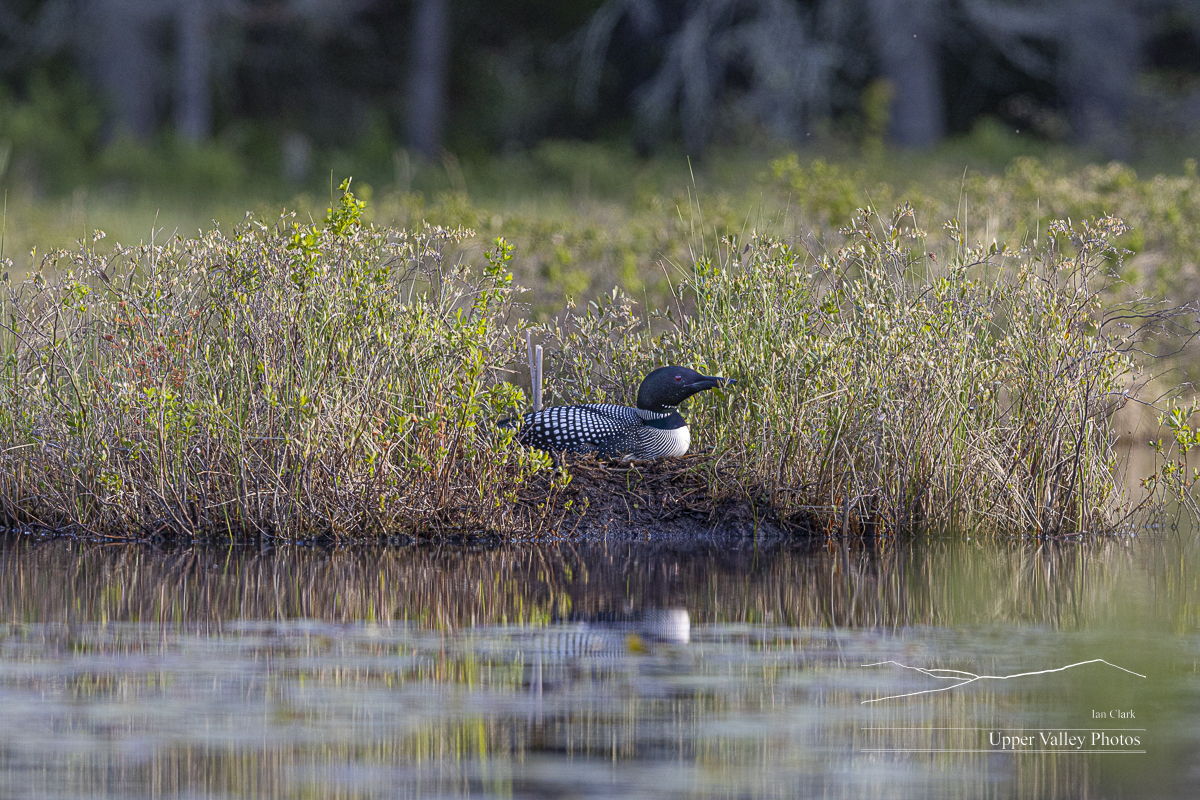
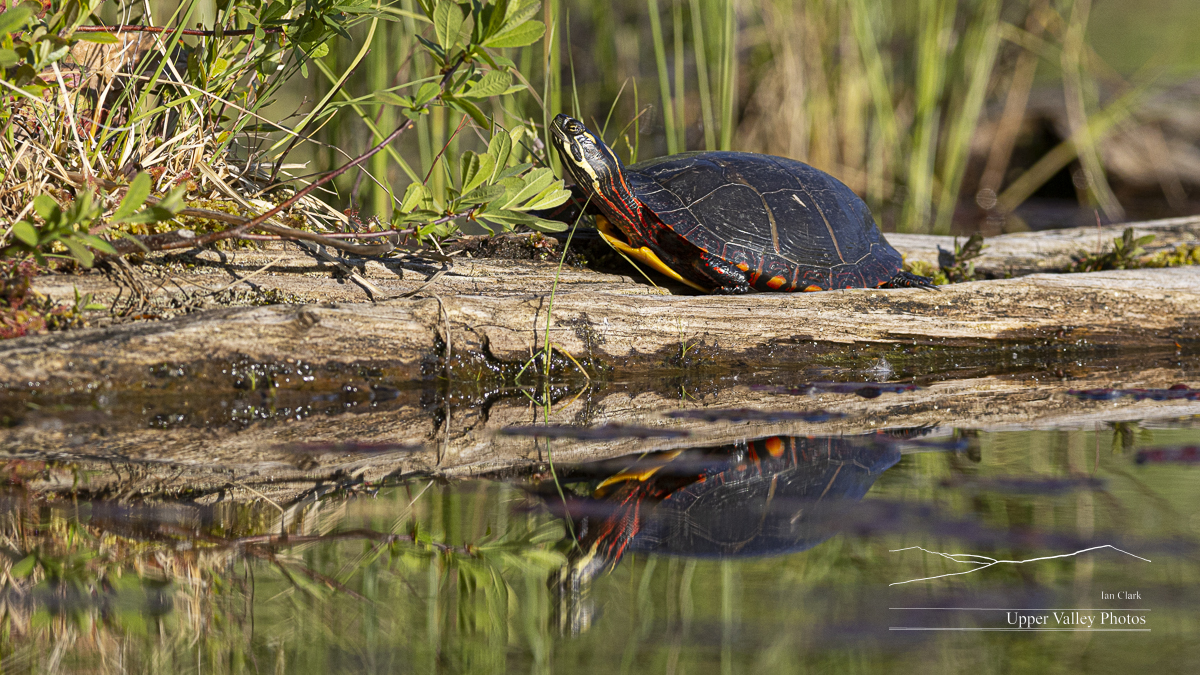
This handsome fellow was out celebrating World Turtle Day today. As good a reason to go wild as any!
It will be next week before I get a chance to get back to check on them. I’ll let you know what I find. Enjoy the holiday weekend and please remember the U.S. military personnel who gave their lives to protect us


More Time with the Loons
Last weekend, I was able to spend both mornings on the Middleton’s Pond. They’ve got a new neighbor, it looks like they may be having second thoughts about the nest location and they, once again, told an intruder to go away.
I’ll be down at the Paradise City Show in Northampton, MA, over Memorial Day Weekend. I’ll have lots of wildlife prints, including lots of loons, as well as note cards. Stop by to say hello. All the show details here.
Saturday morning found a great egret foraging not far from where the loons nested last year and may again this year. The loons were off in another cove on the pond.
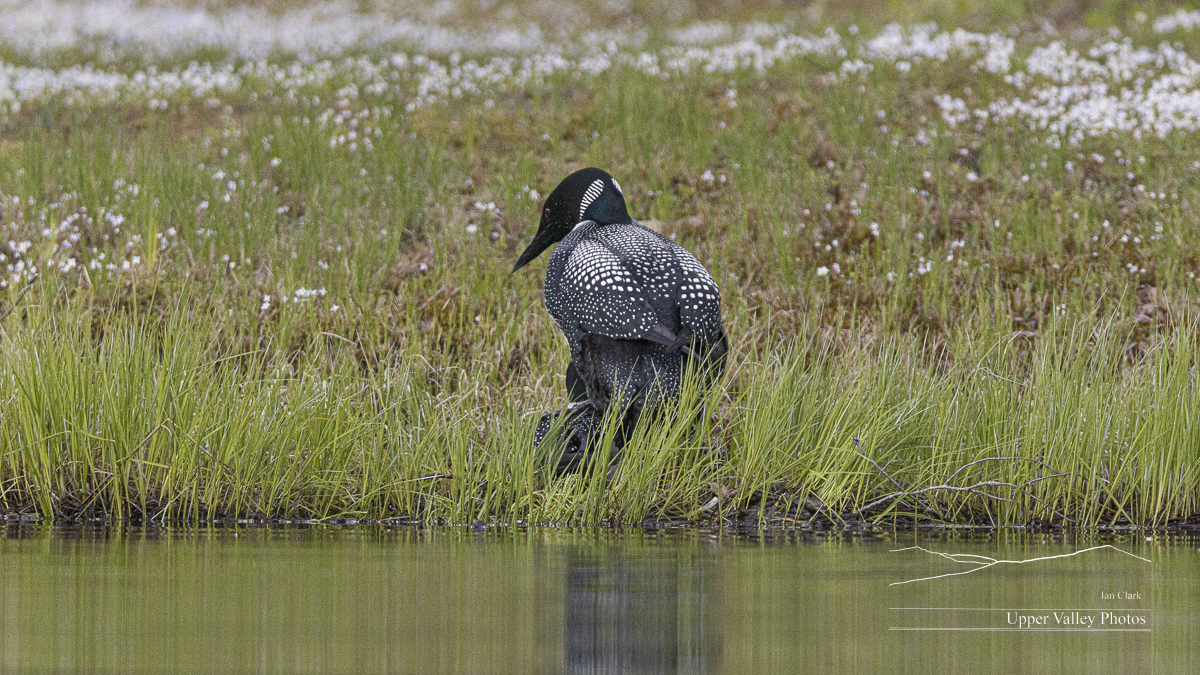
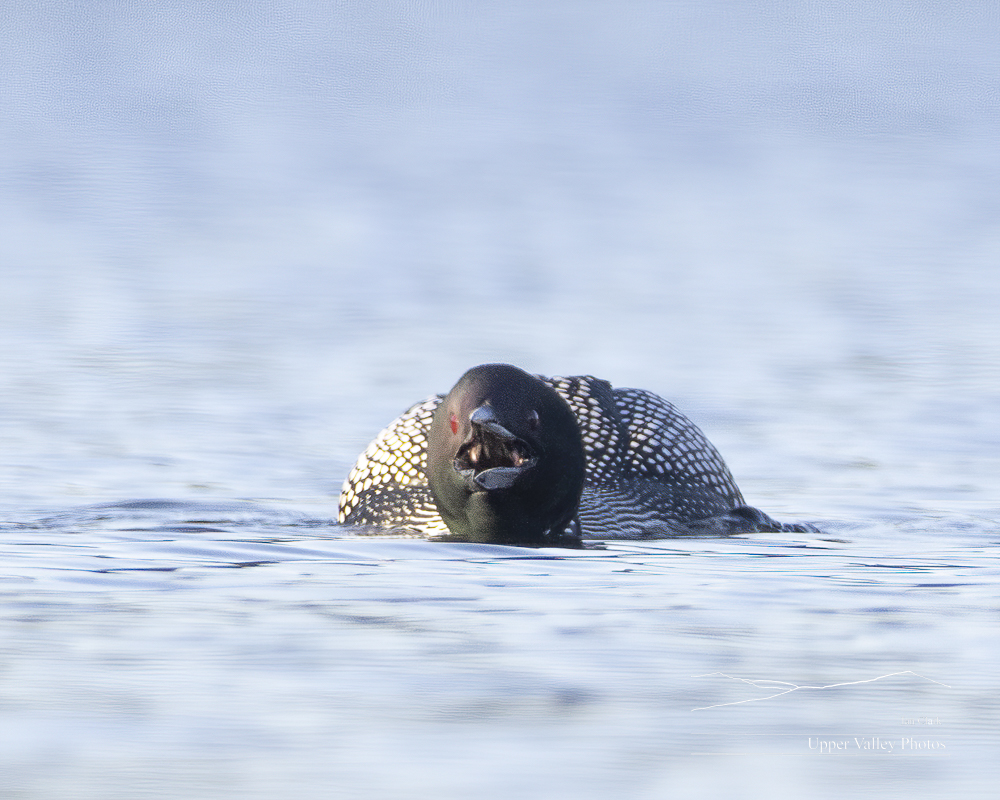

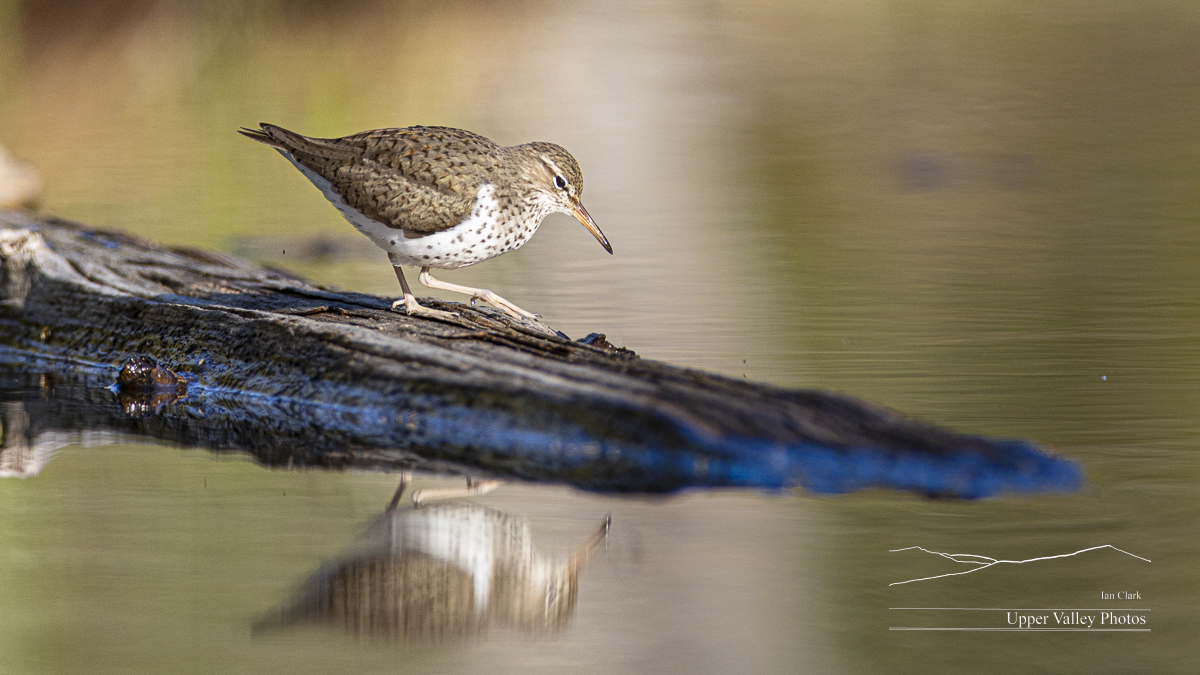
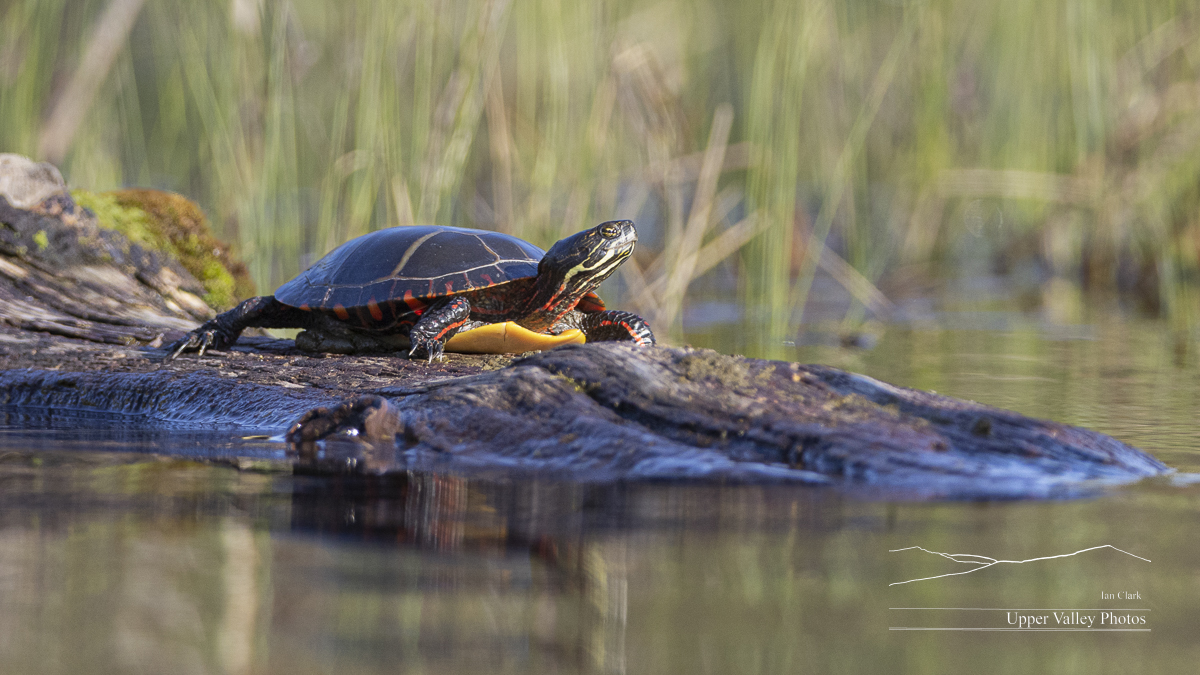
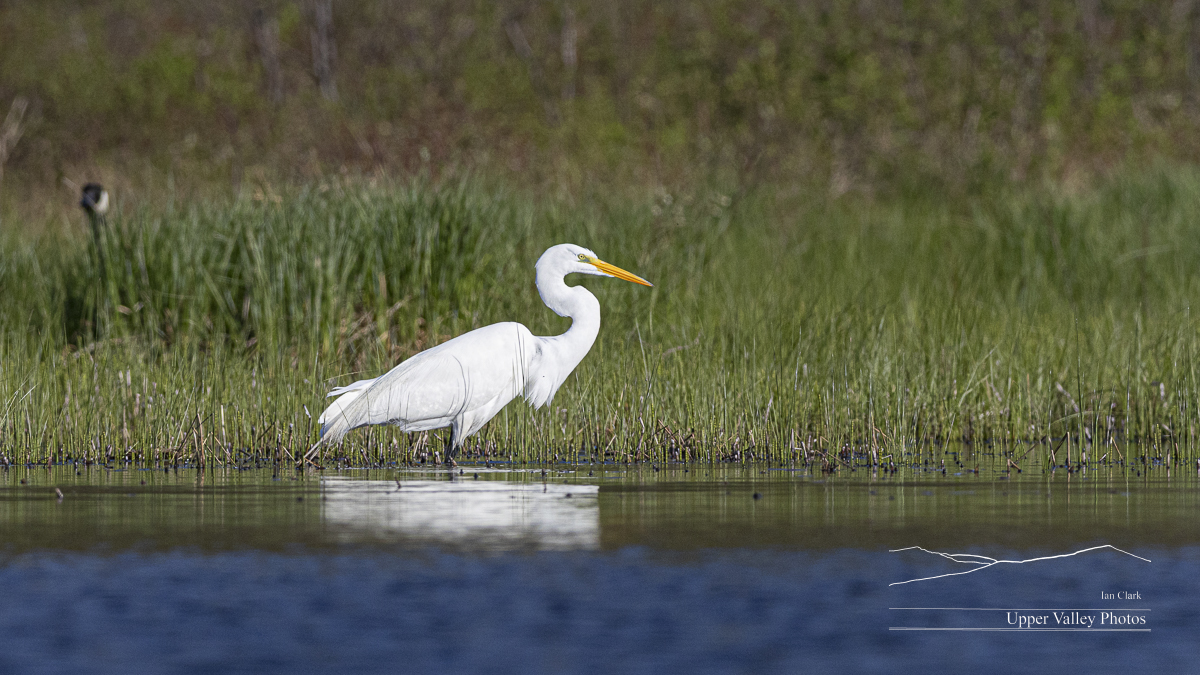
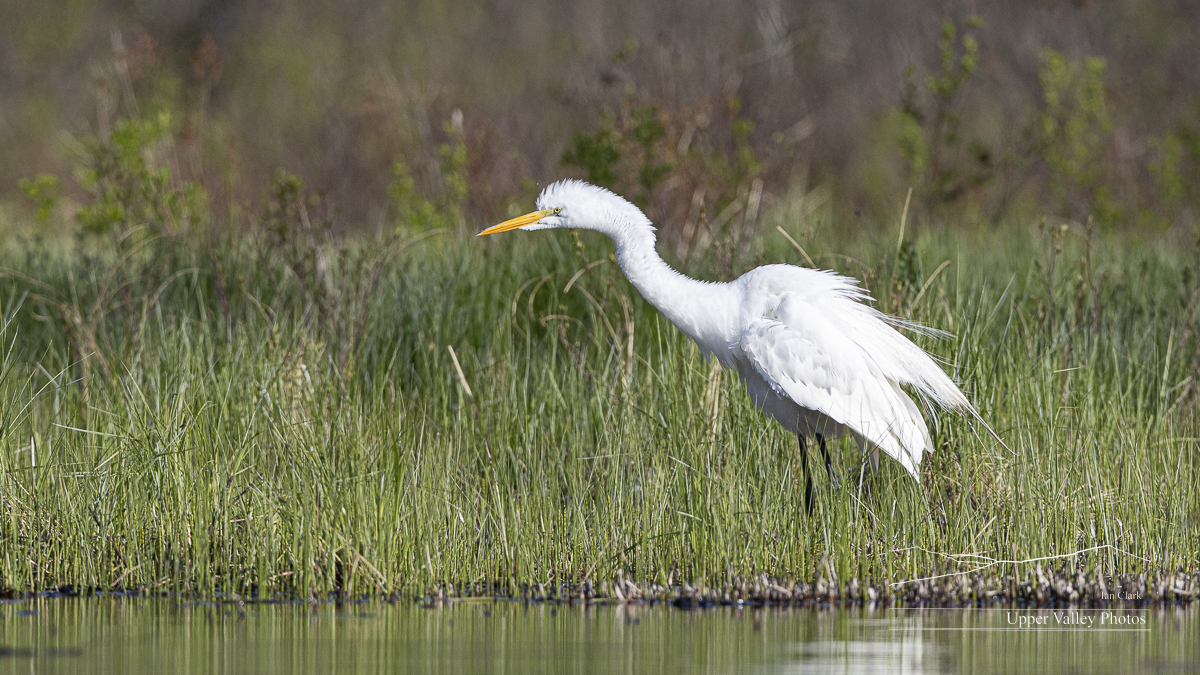
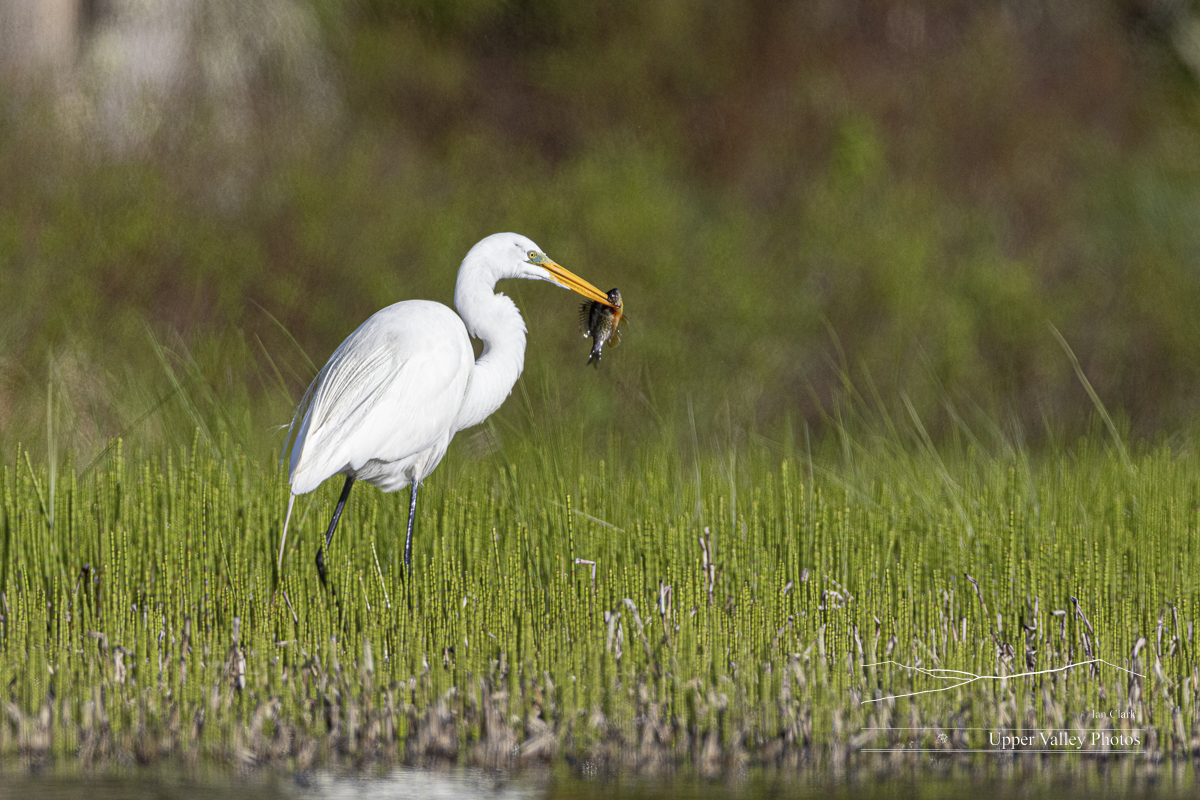
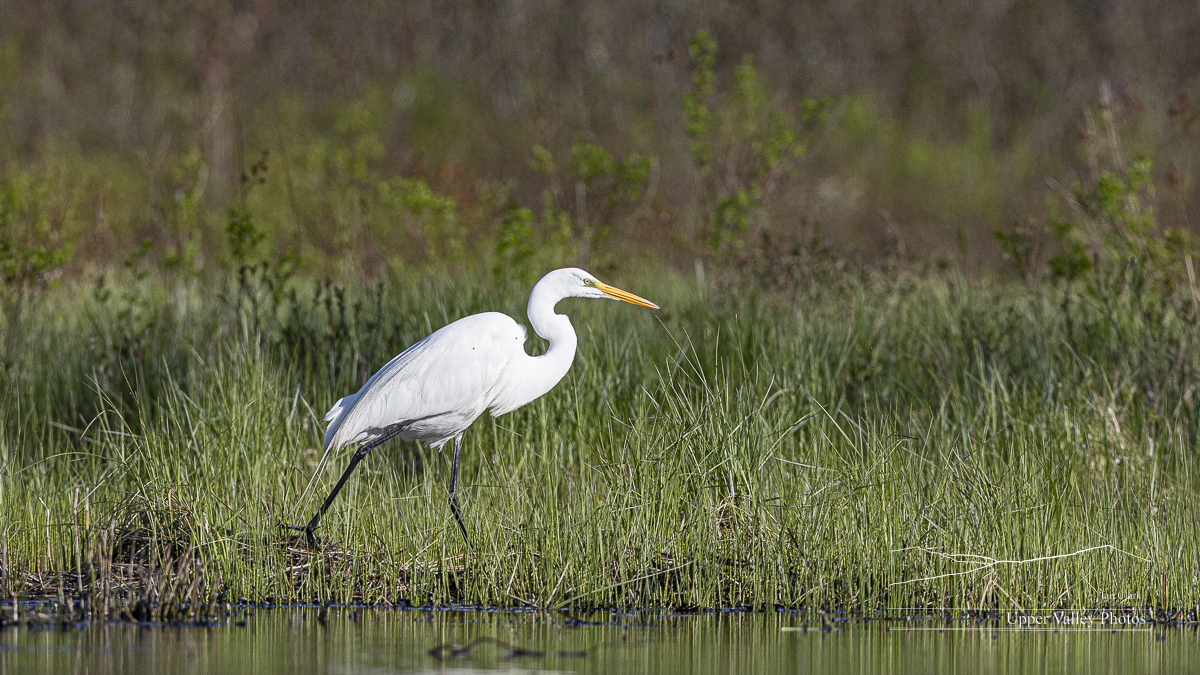



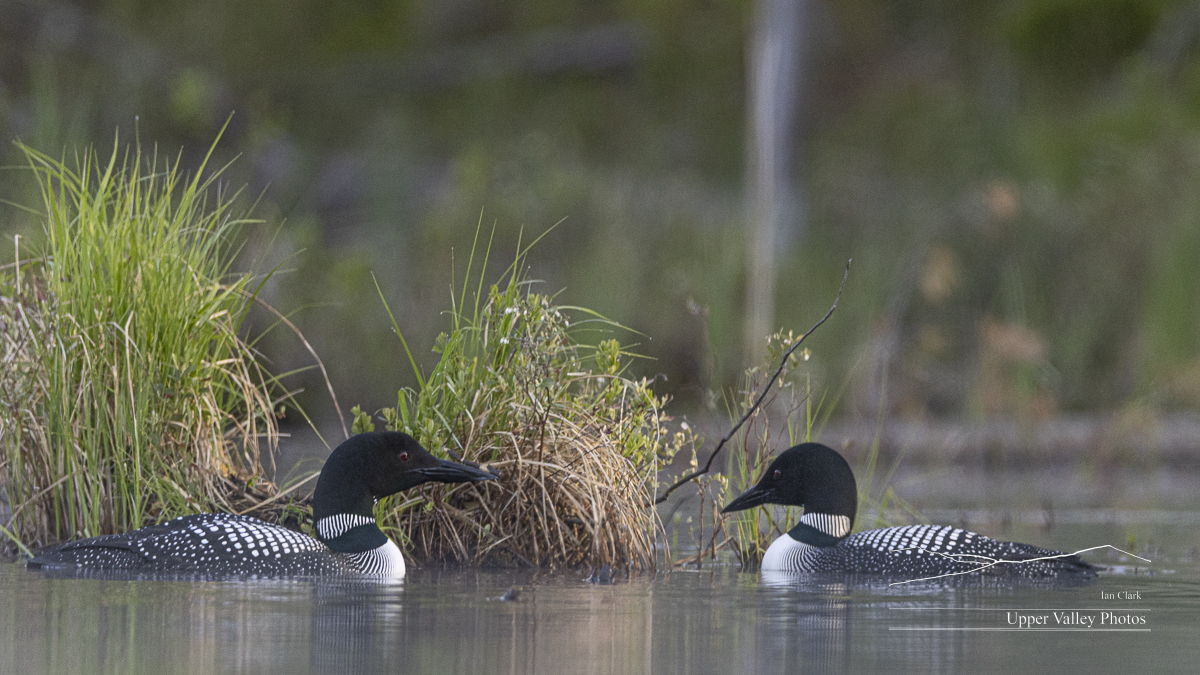

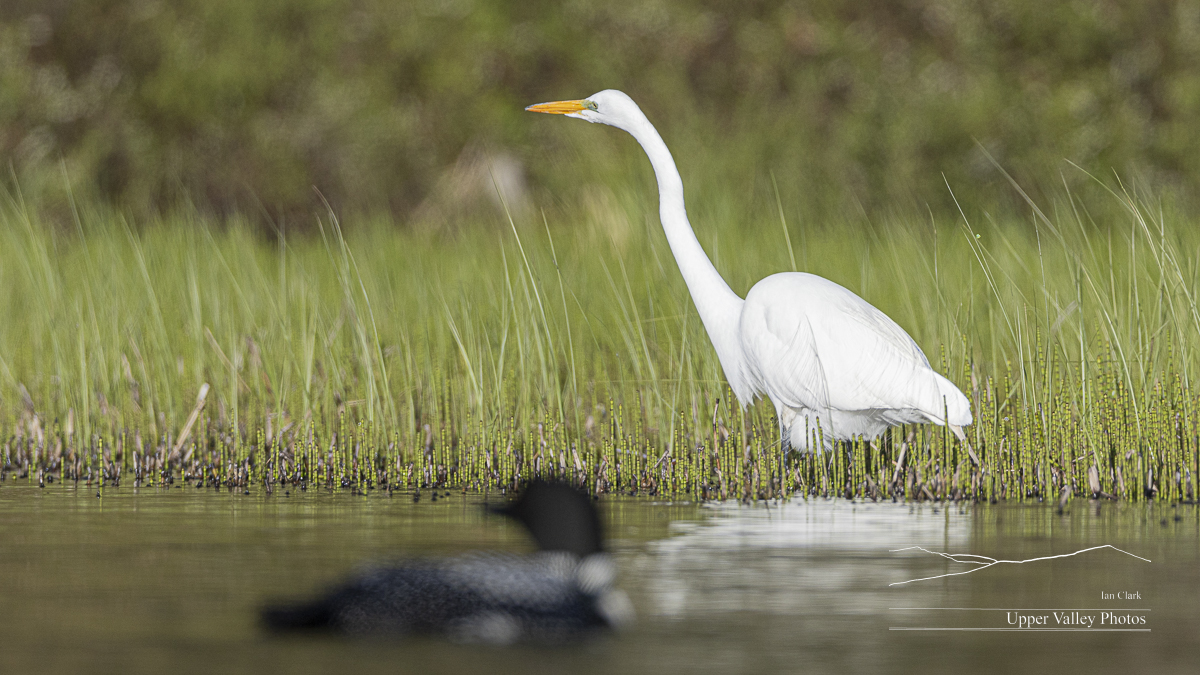
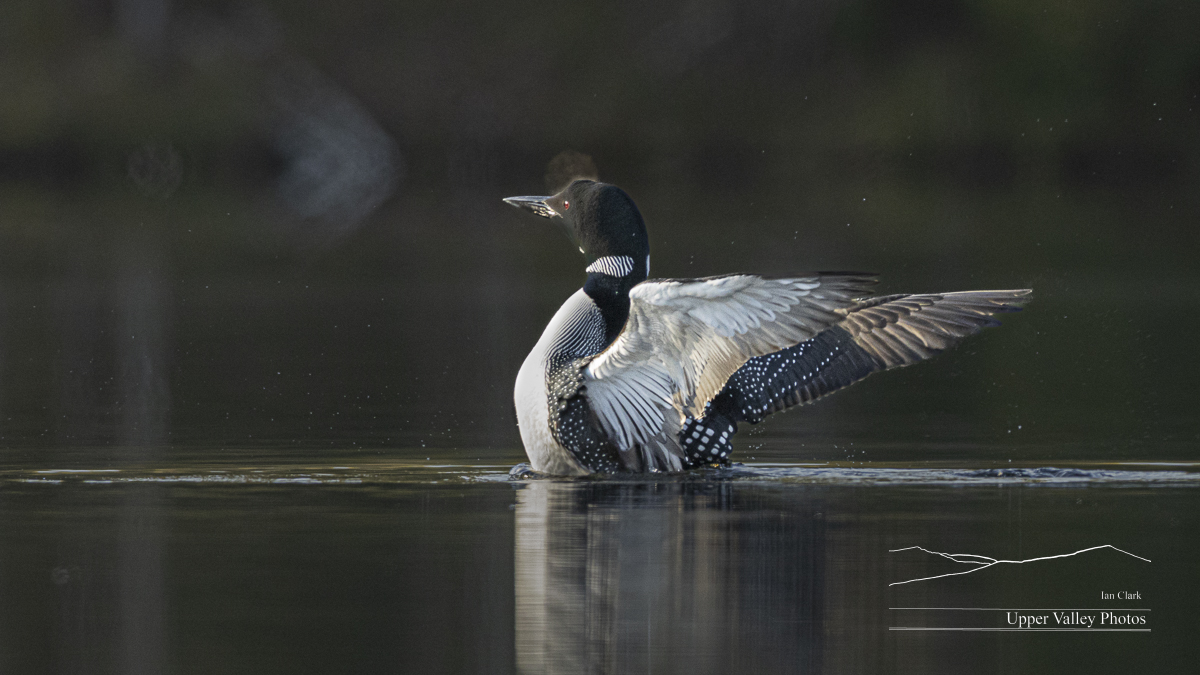
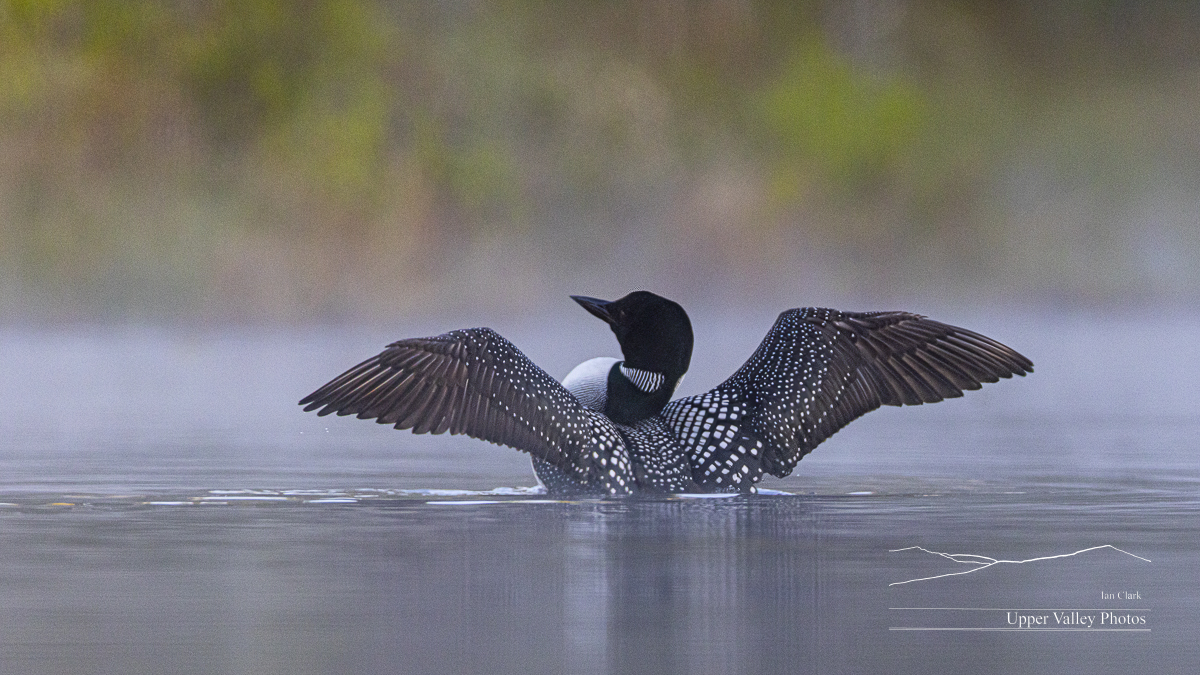
I’m anxiously watching the weather, itching to get back to see if they’ve decided on a nesting site.
Catching Up with the Loons
There’s news from the Middletons. The Westons didn’t show any signs of getting on with chicks when I visited. They’re usually about a week behind the Middletons, so that’s not surprising. While I’ve been out every morning and couple afternoons, I fell behind on editing. Finally catching up, here’s a very long post.
A note on photography since we’ve started nesting season. Please respect the loons and give them their space if you photograph them. For these photos, I was working with a 600mm or 800mm lens on a crop body. That’s something like a 24X or 26X scope. To get all of a loon in the frame, I’ve got to be something like 110 feet from the loon and further back to get some of the surroundings. That’s far enough back that the loons pretty much ignore me. And, a good distance for you to maintain..
Winter wasn’t quite ready to go away when I visited the Middletons last Saturday. It was a pleasant 34° when I launched. I found the loons in the cove where they used to nest.
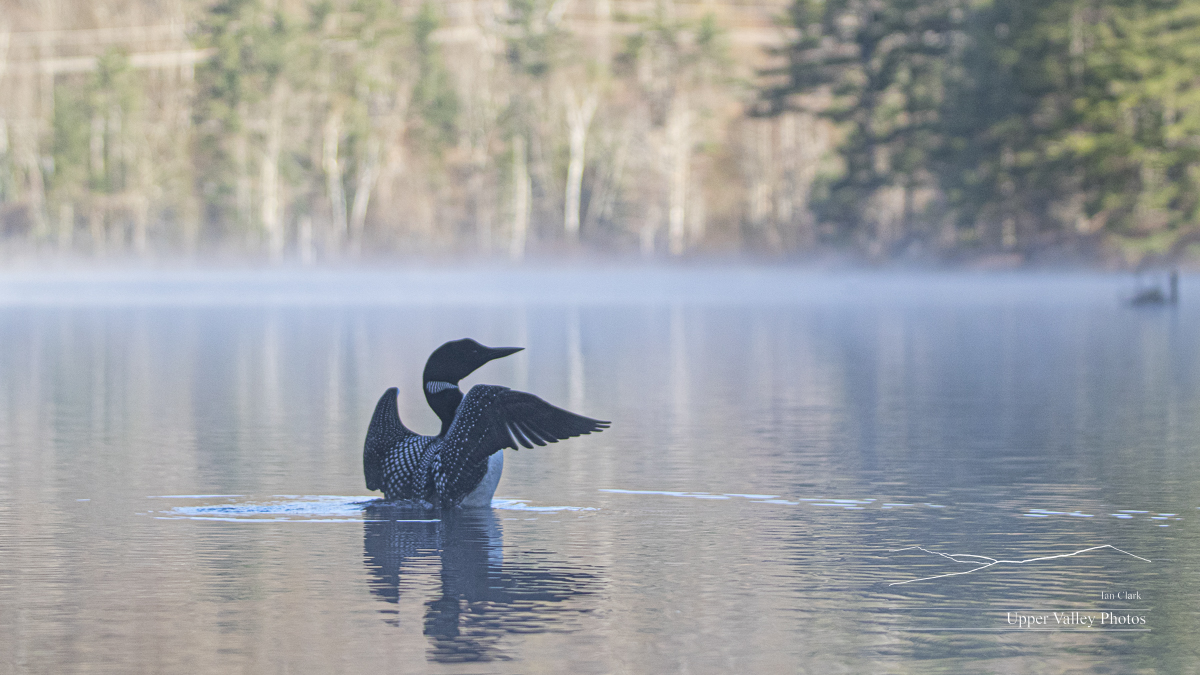
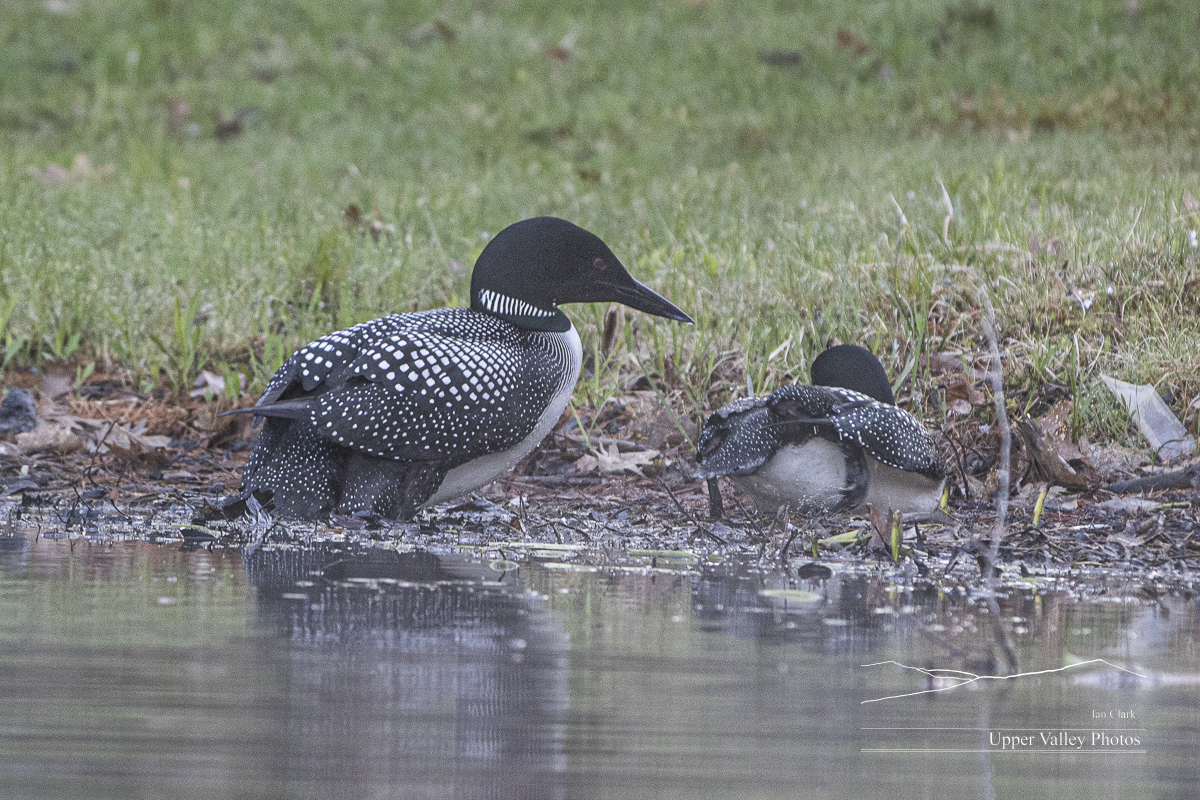
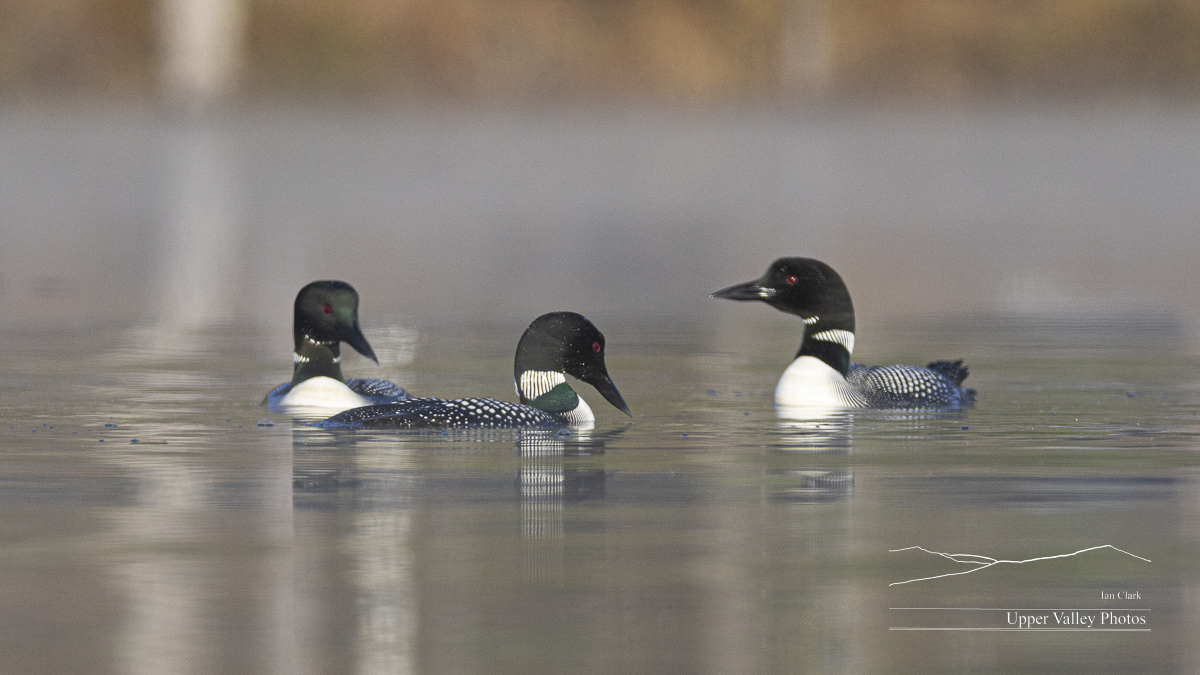
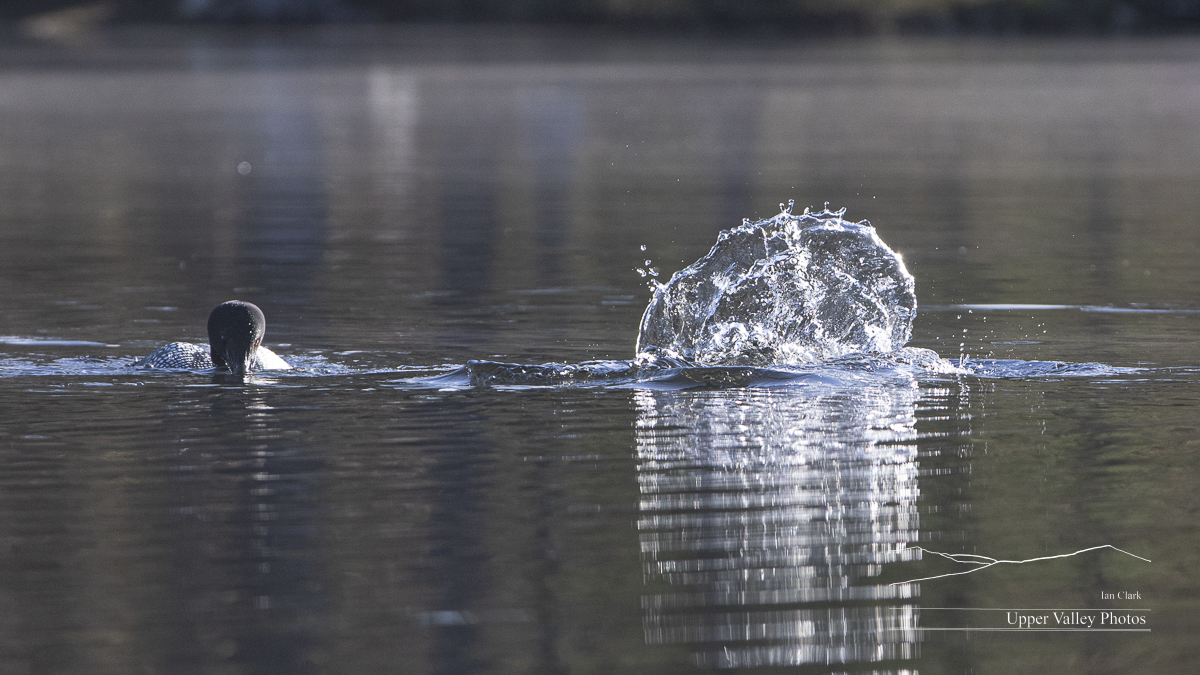
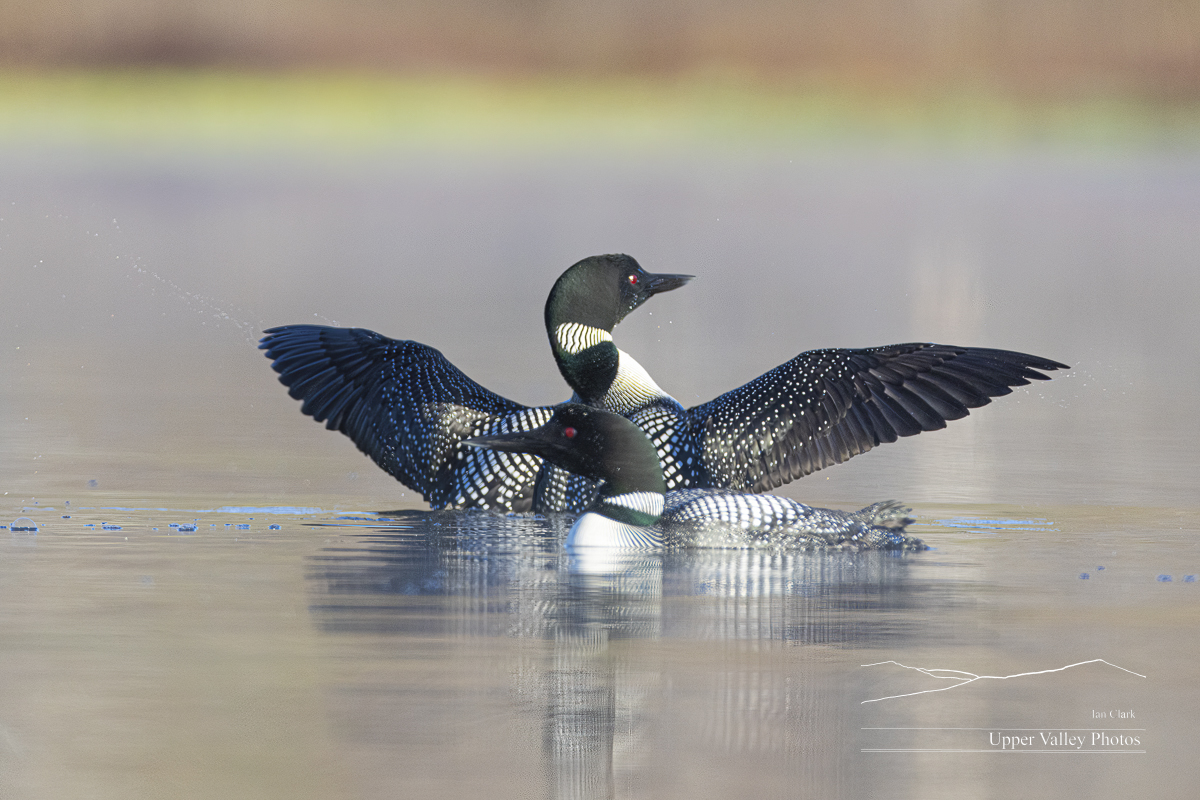
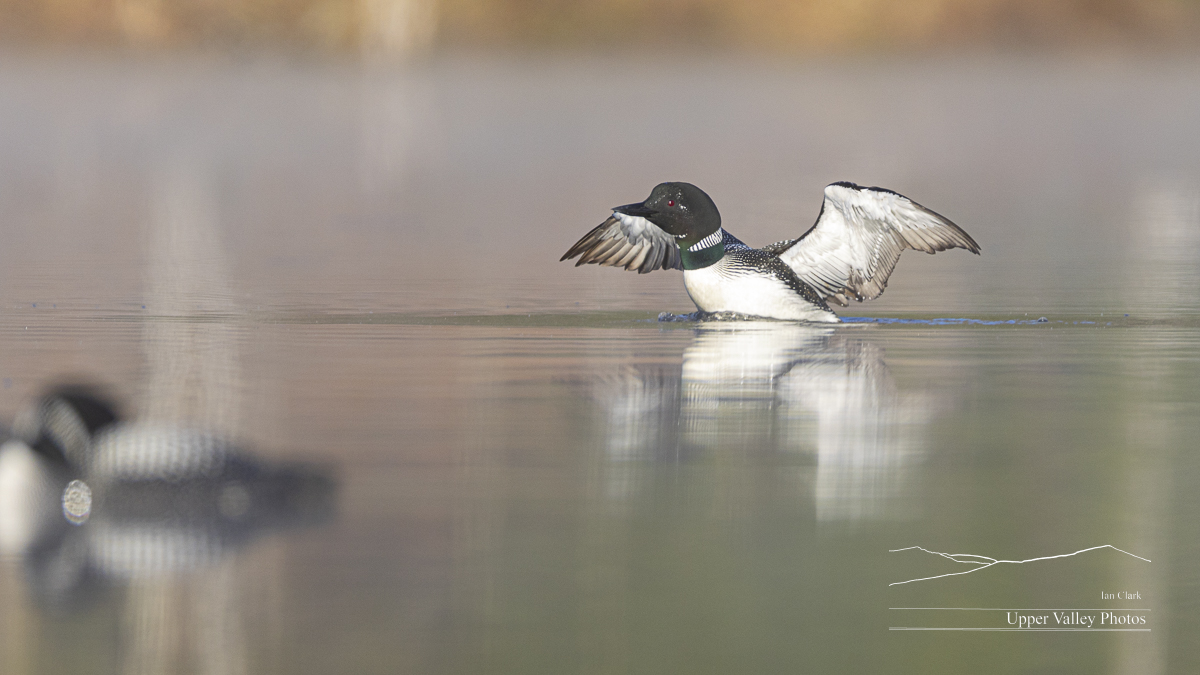
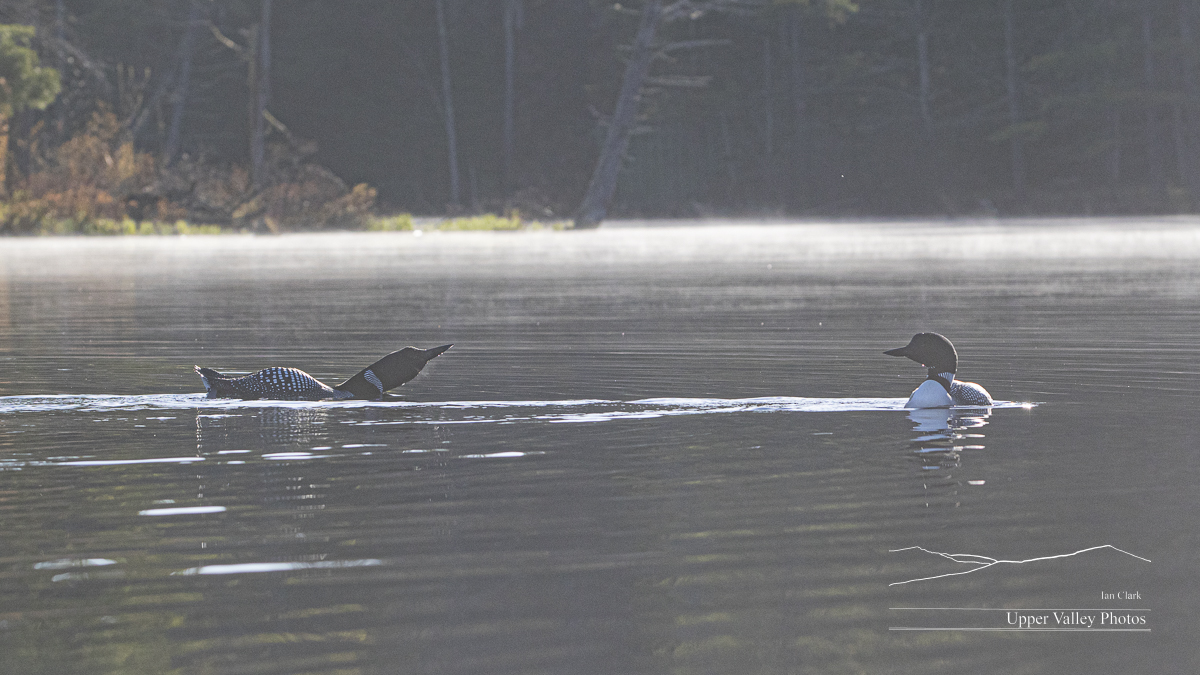

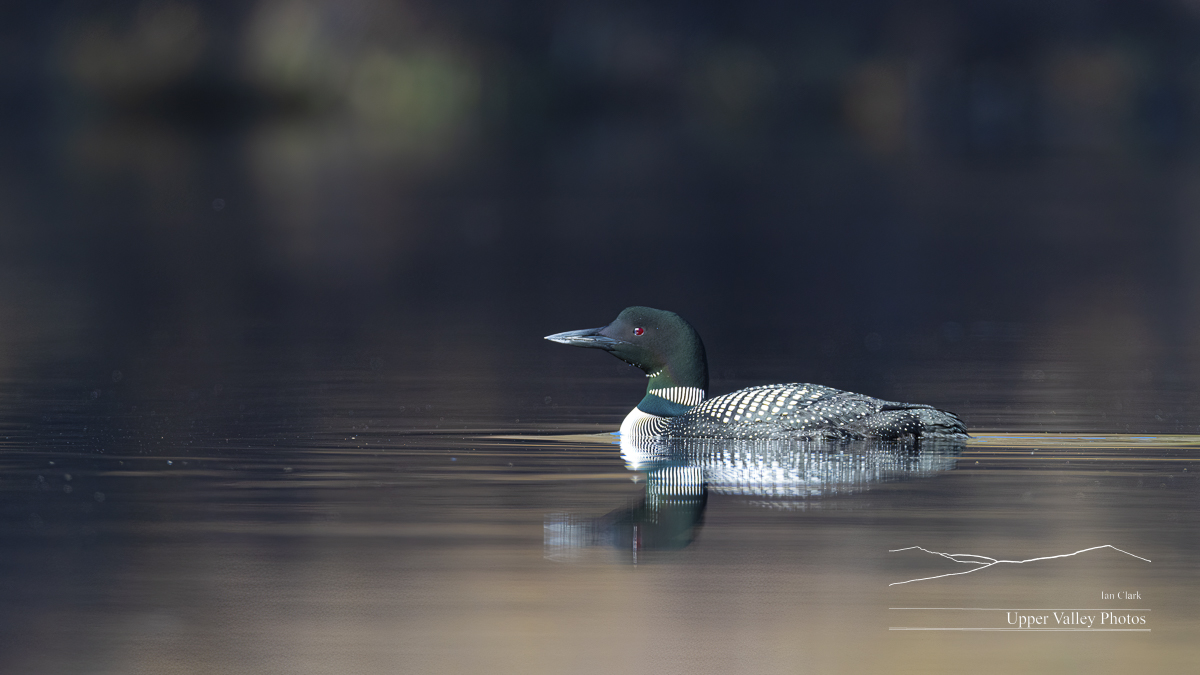

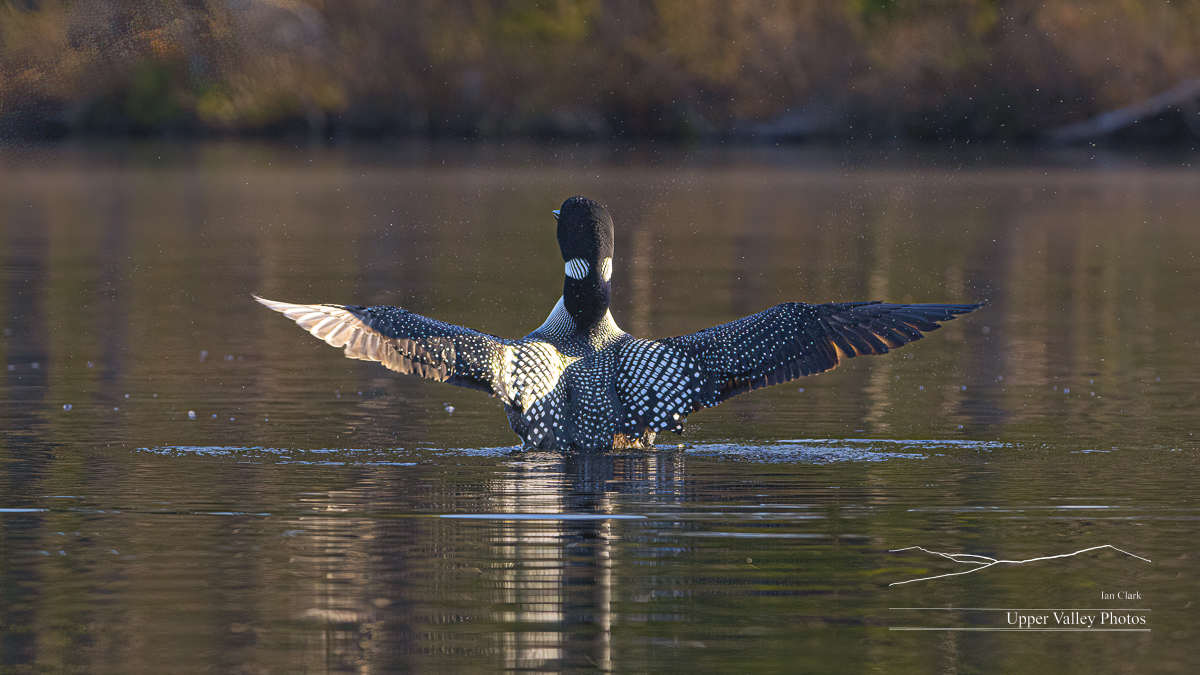

When I returned on Sunday, it was a balmy 39° when I launched. I could almost feel my fingers as I shot. I suspect the loons mated before I arrived. They seem to mate just around dawn for several days. They were coming out of the cove that they’ve been using when I arrived about dawn. I followed them over to the cove where they’ve nested the last four years.
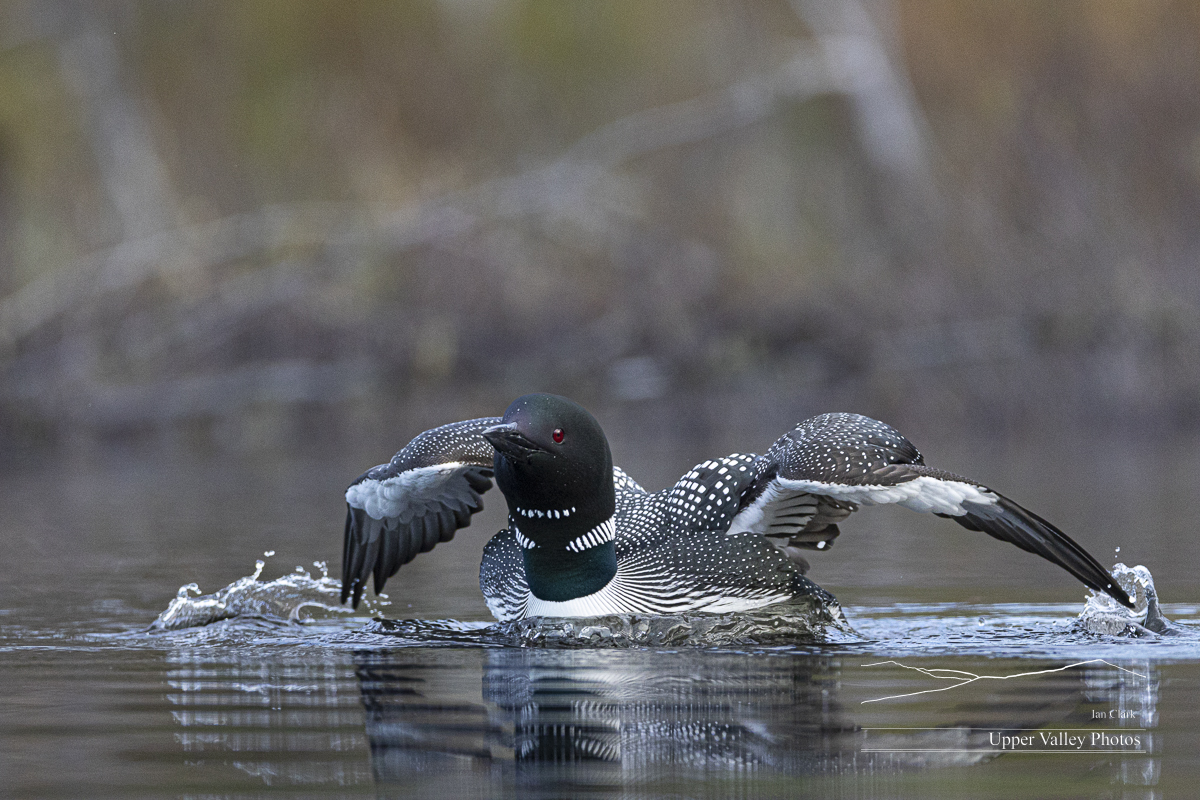
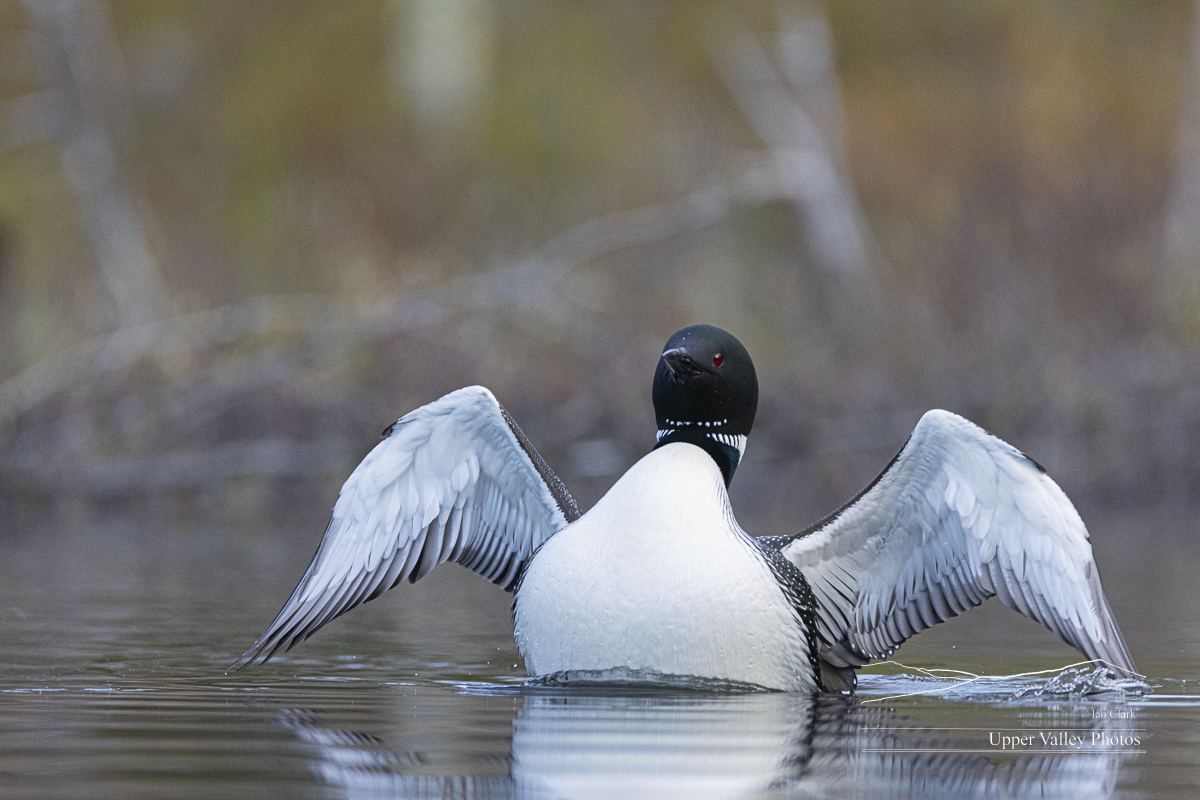


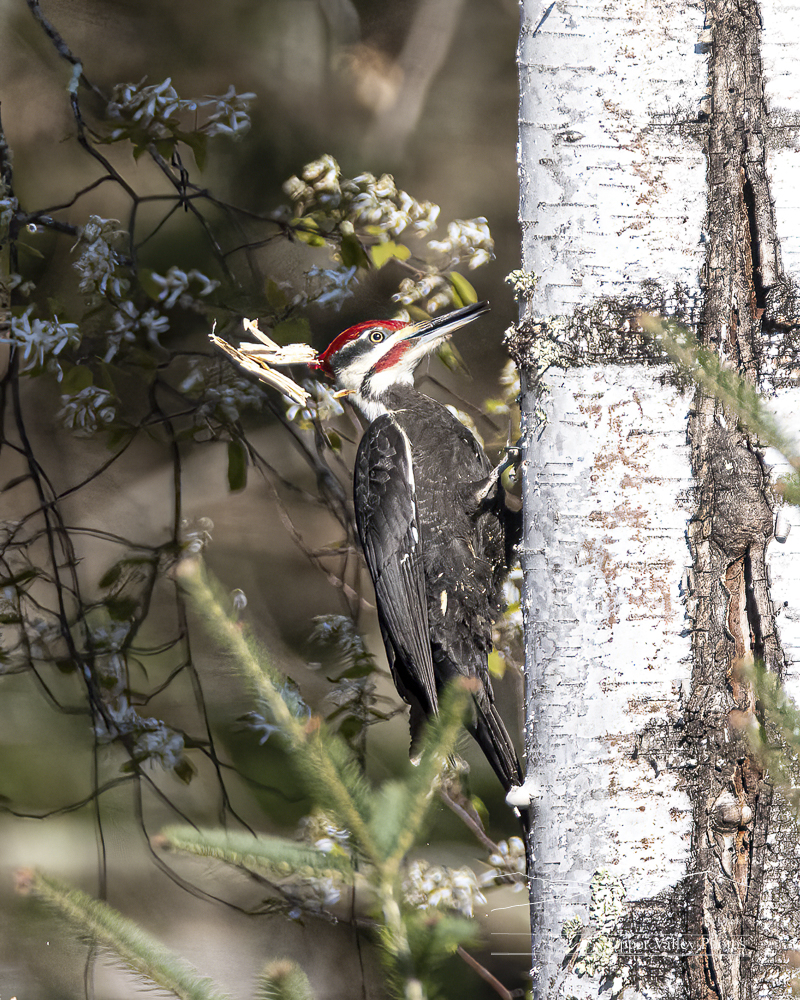
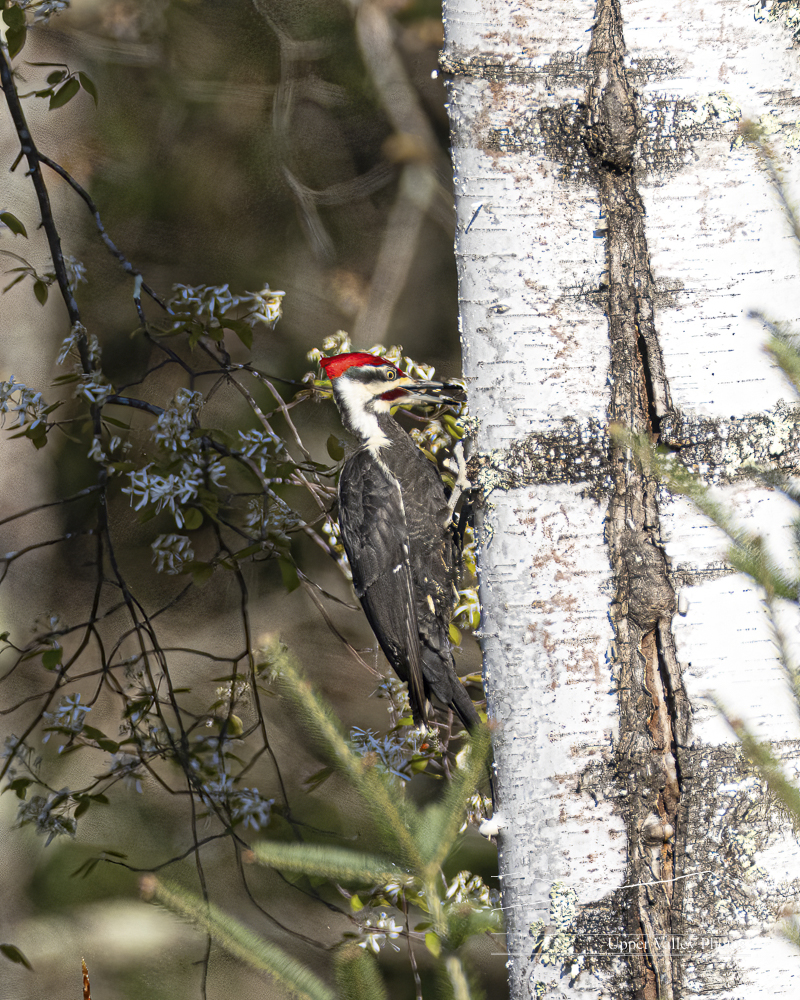
Tuesday morning found me with some work to do before heading out. Up at 0330 and with it only 30° on the pond, I once again found myself questioning some of my life choices. This time, I was early enough.
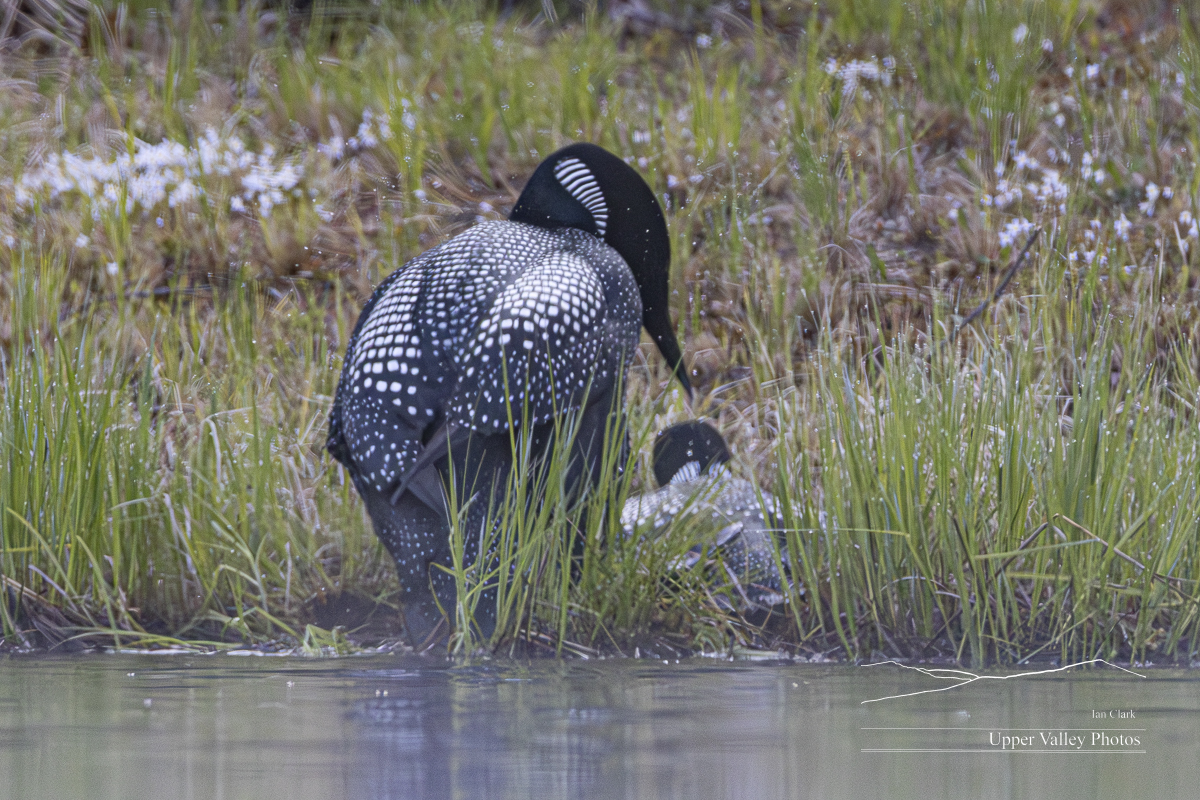
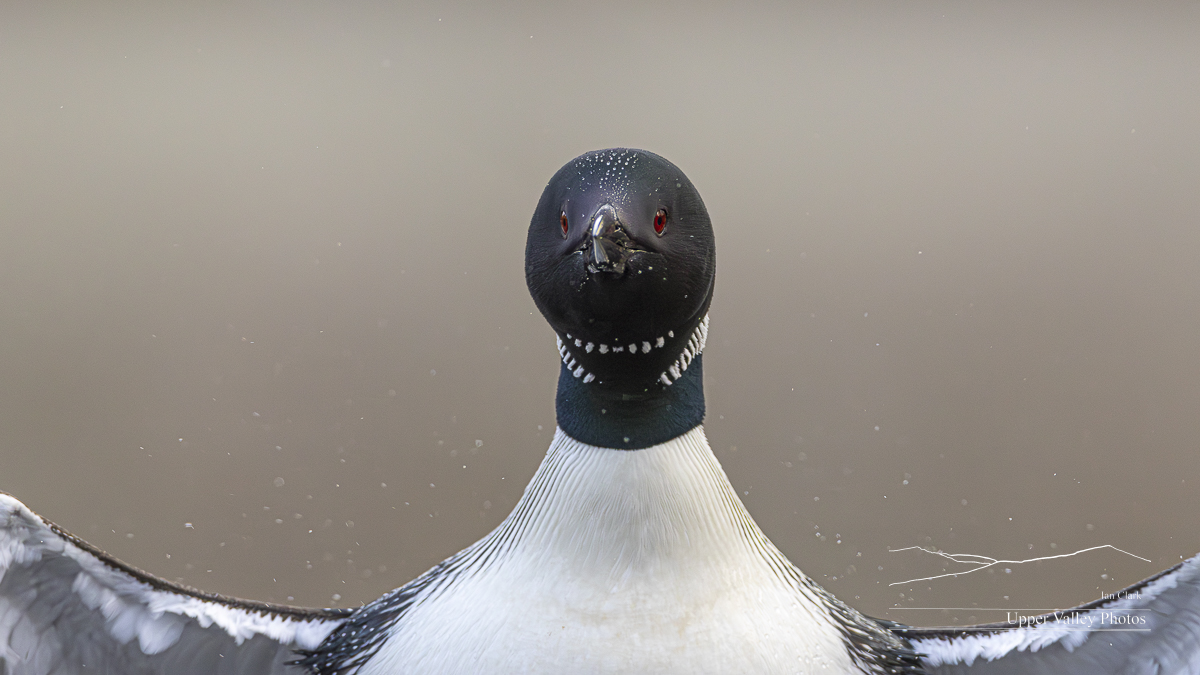

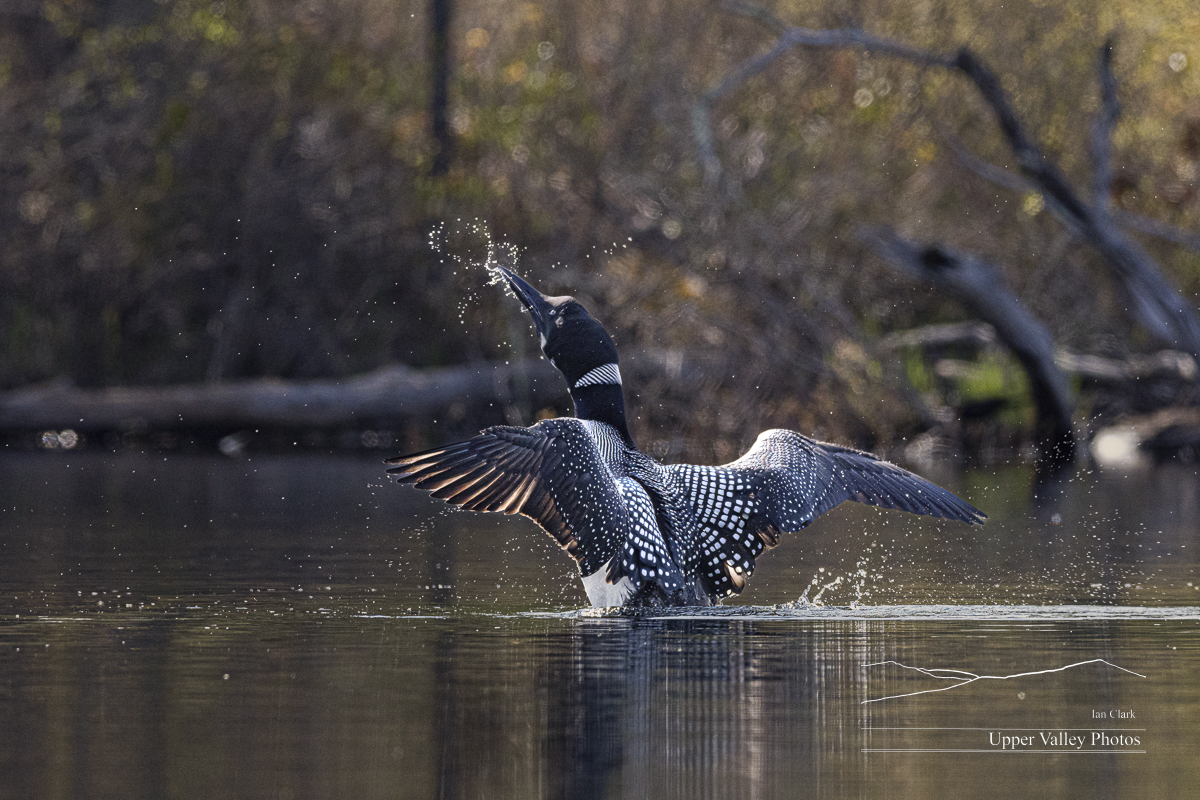
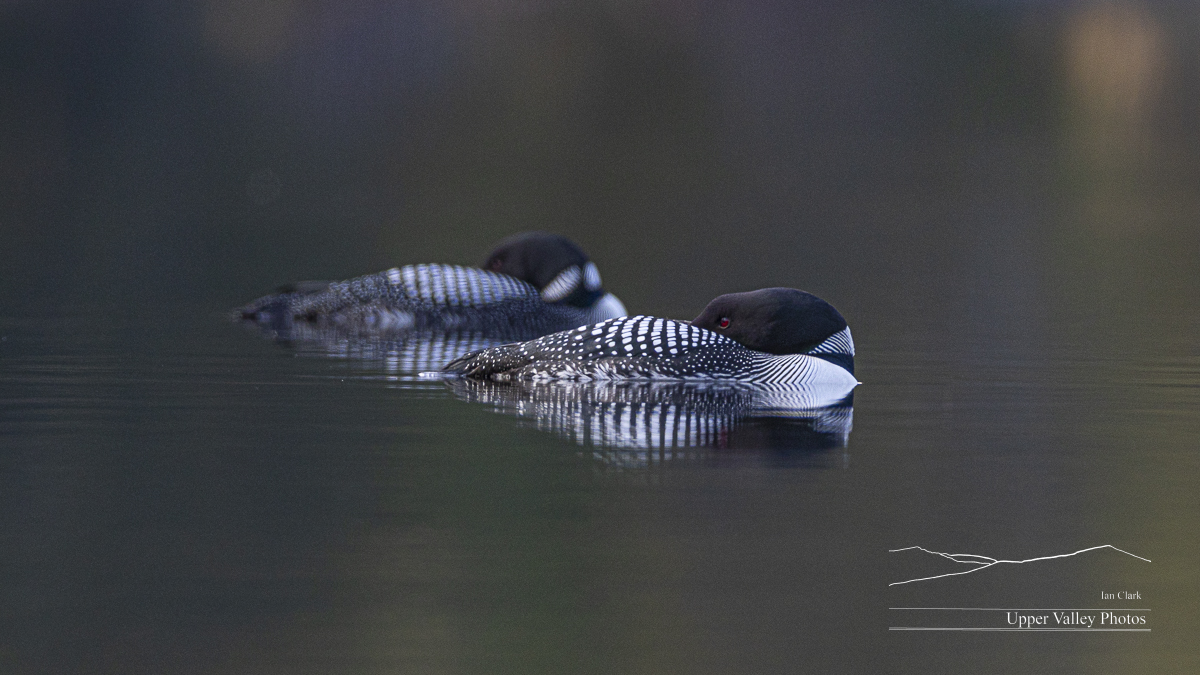
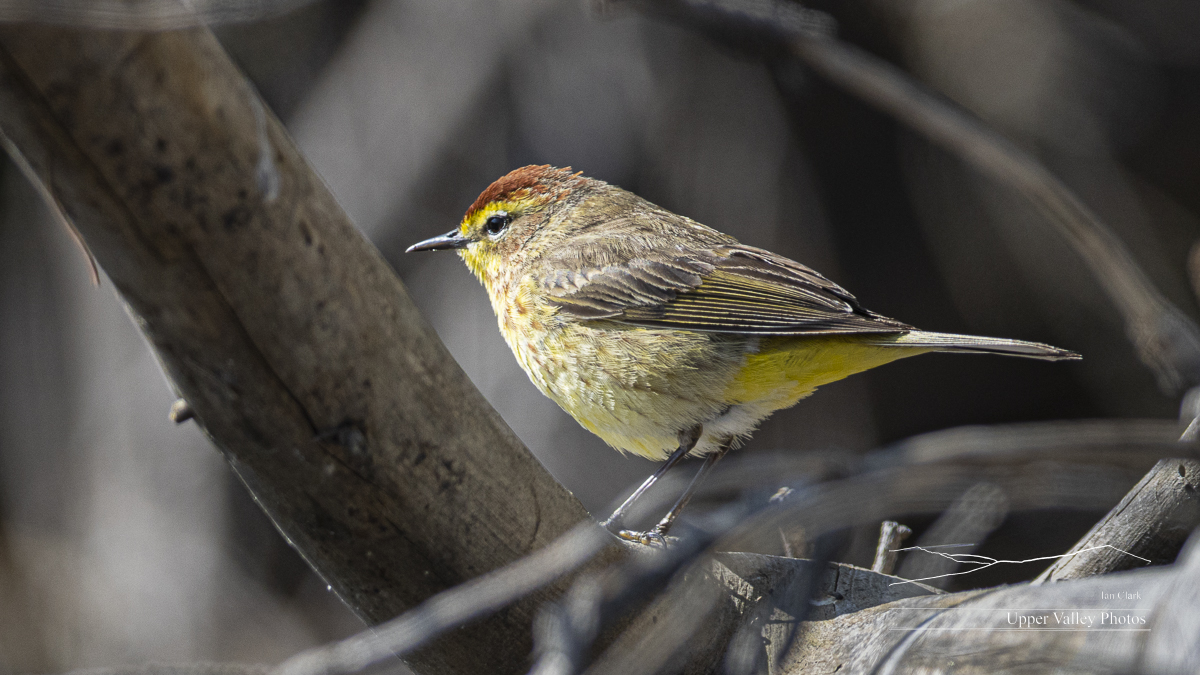
Wednesday I went to check on the Westons. Conditions for photography were ideal, every photographer dreams of paddling on a 28° foggy morning.

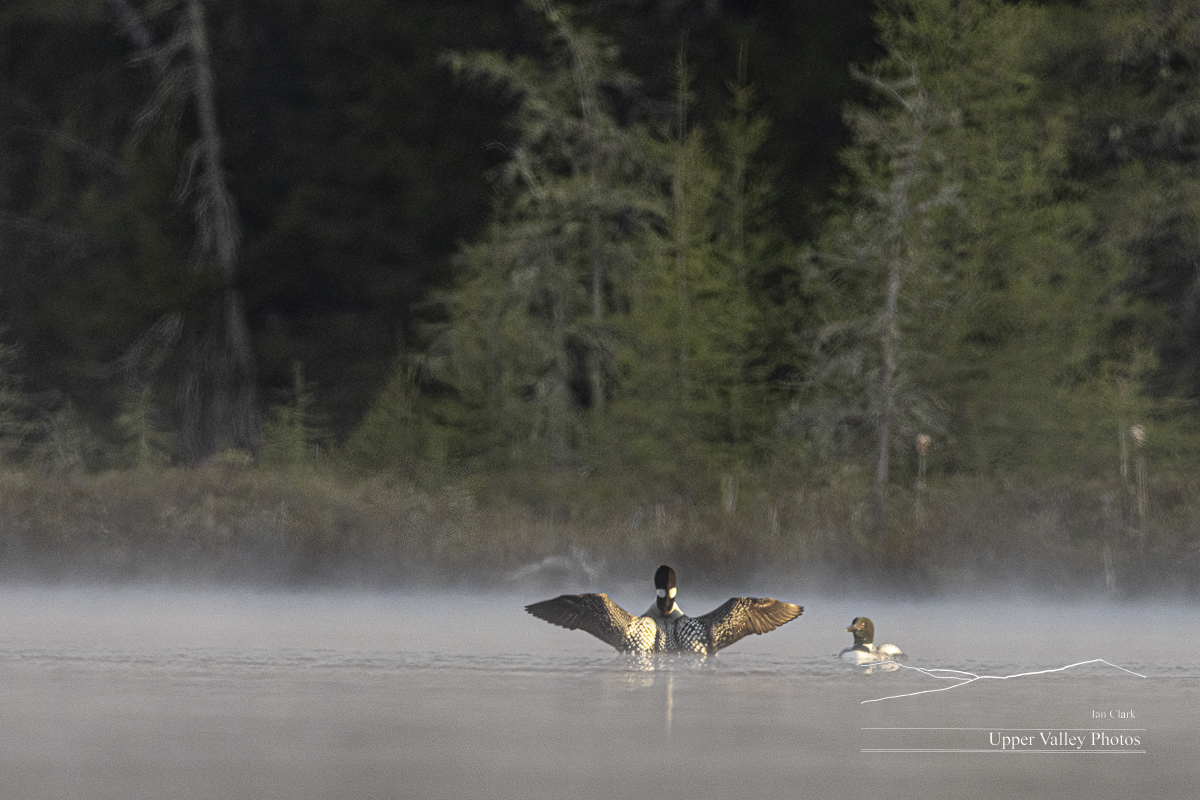
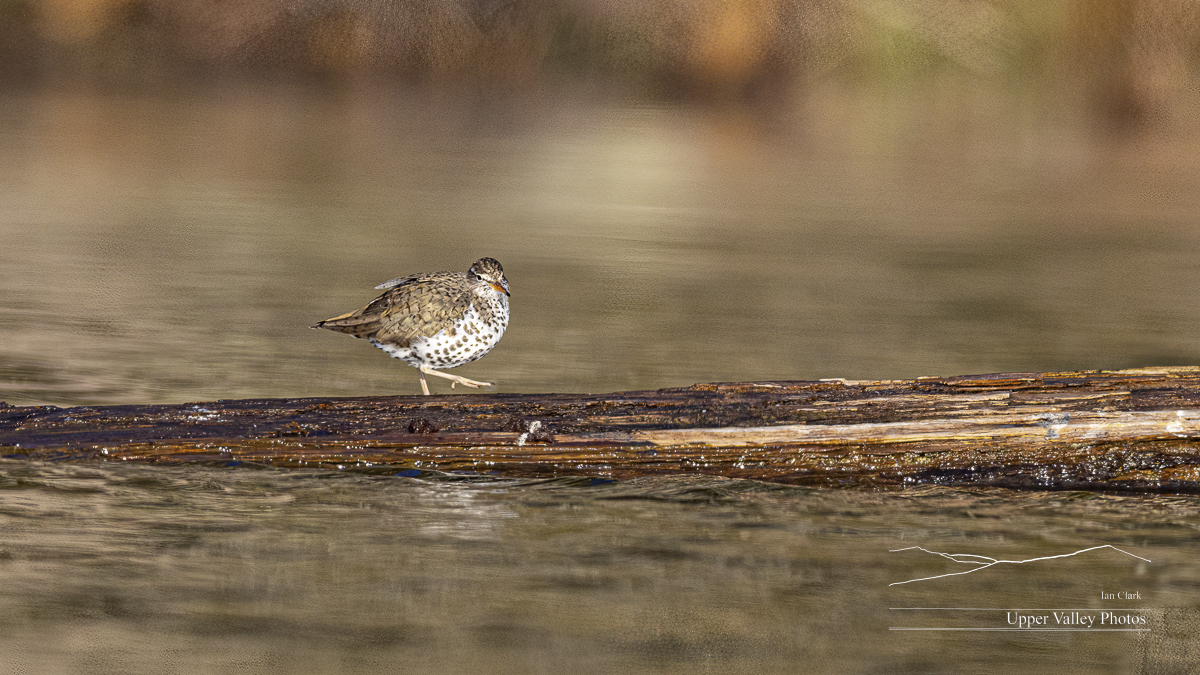
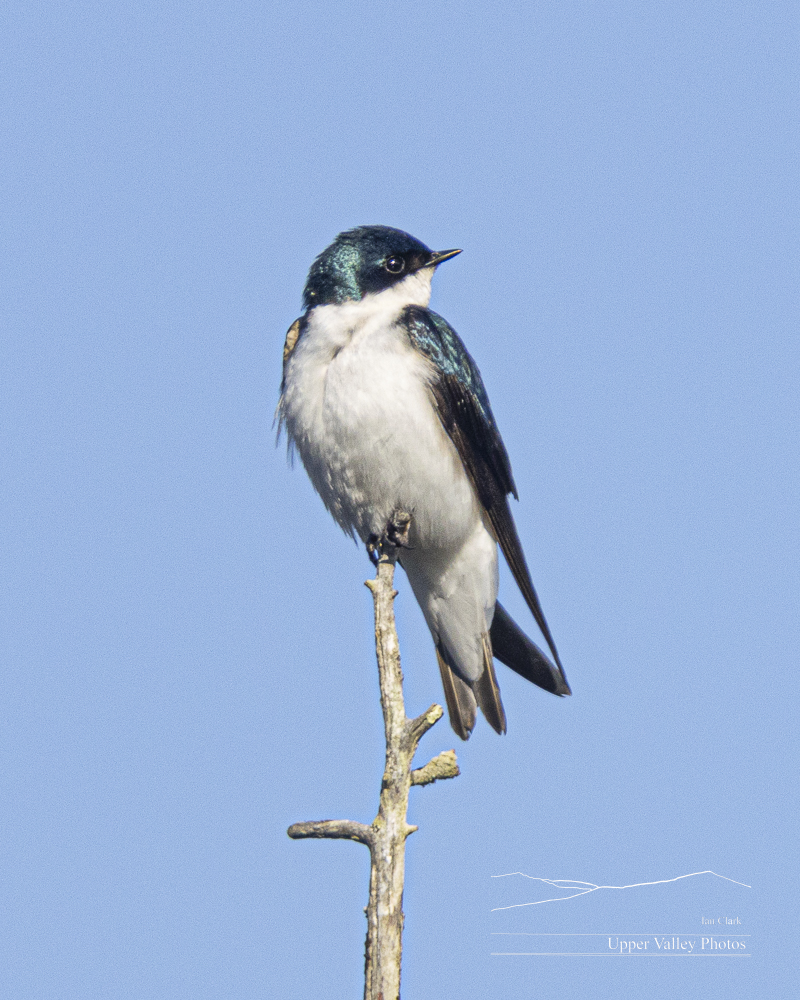

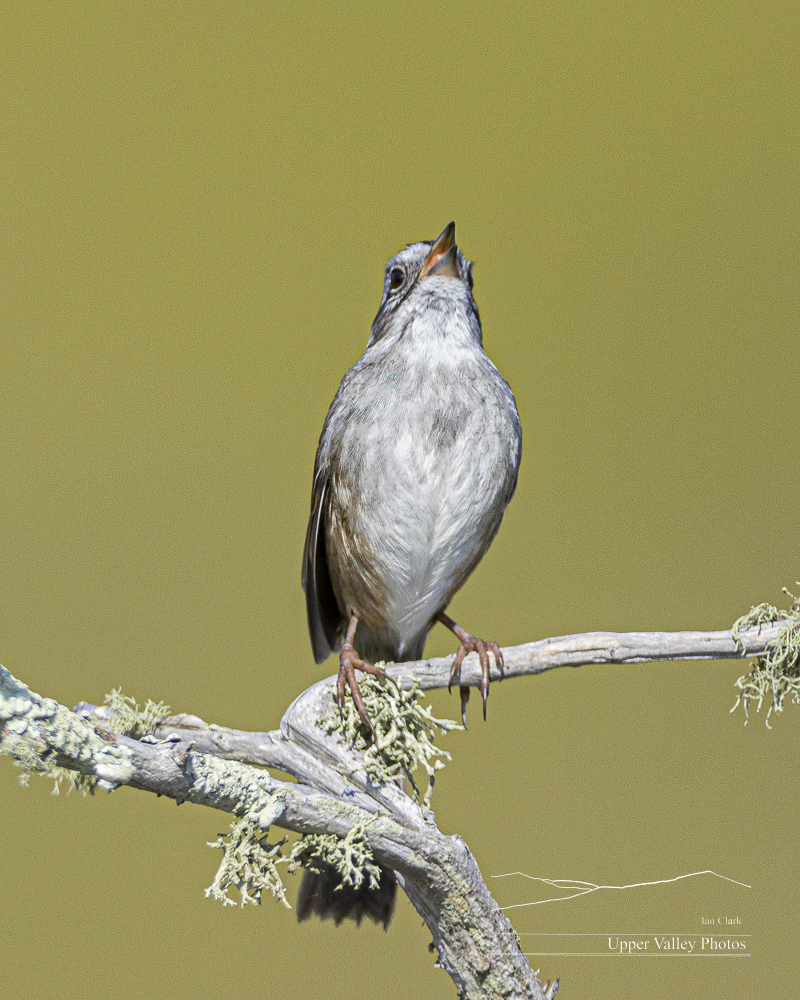
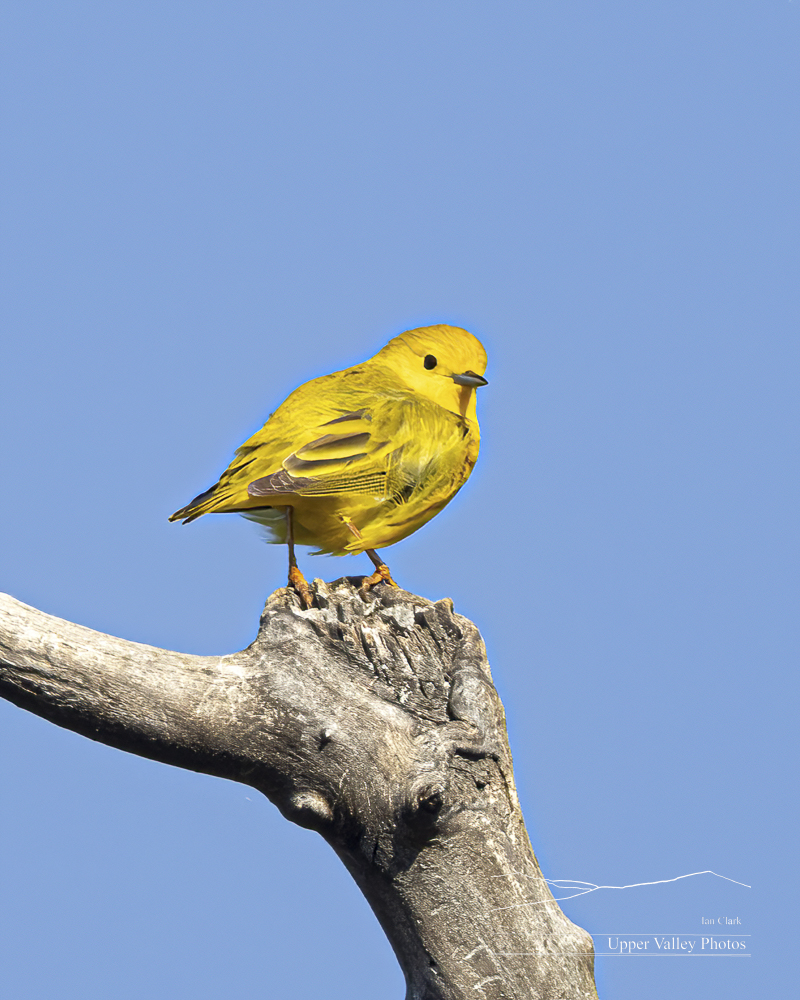
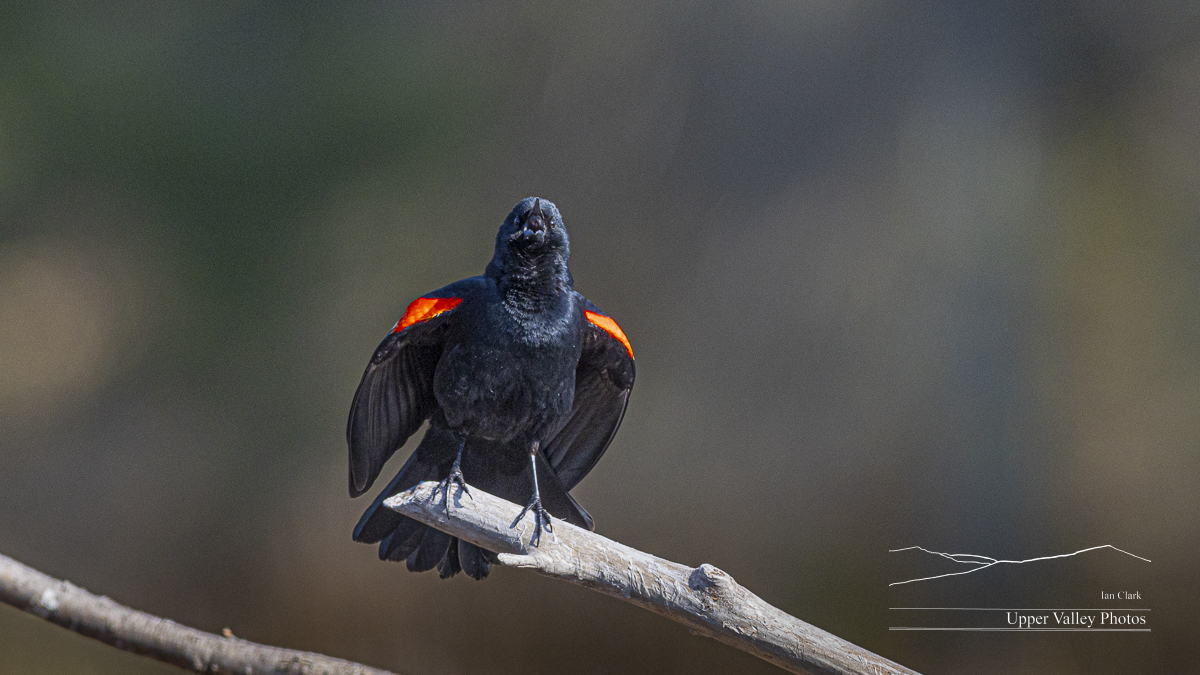

Friday morning found the Middletons once again facing off with an intruder.
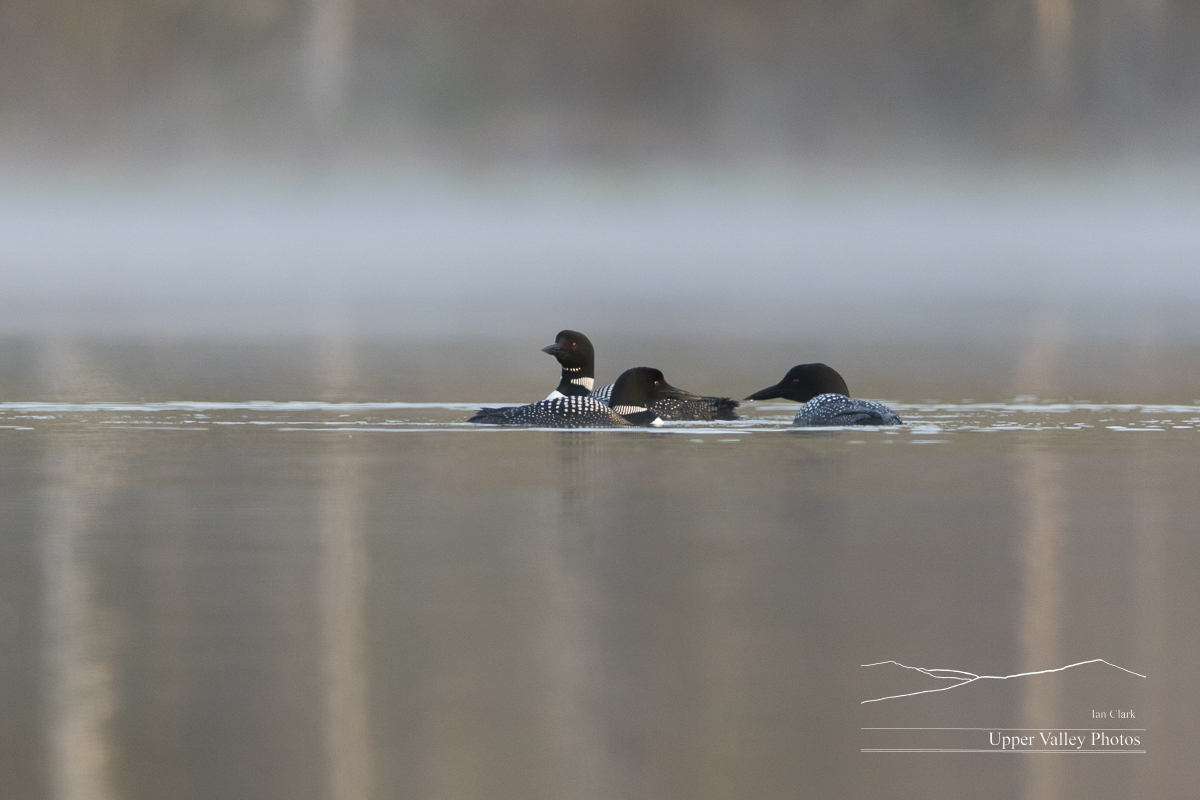
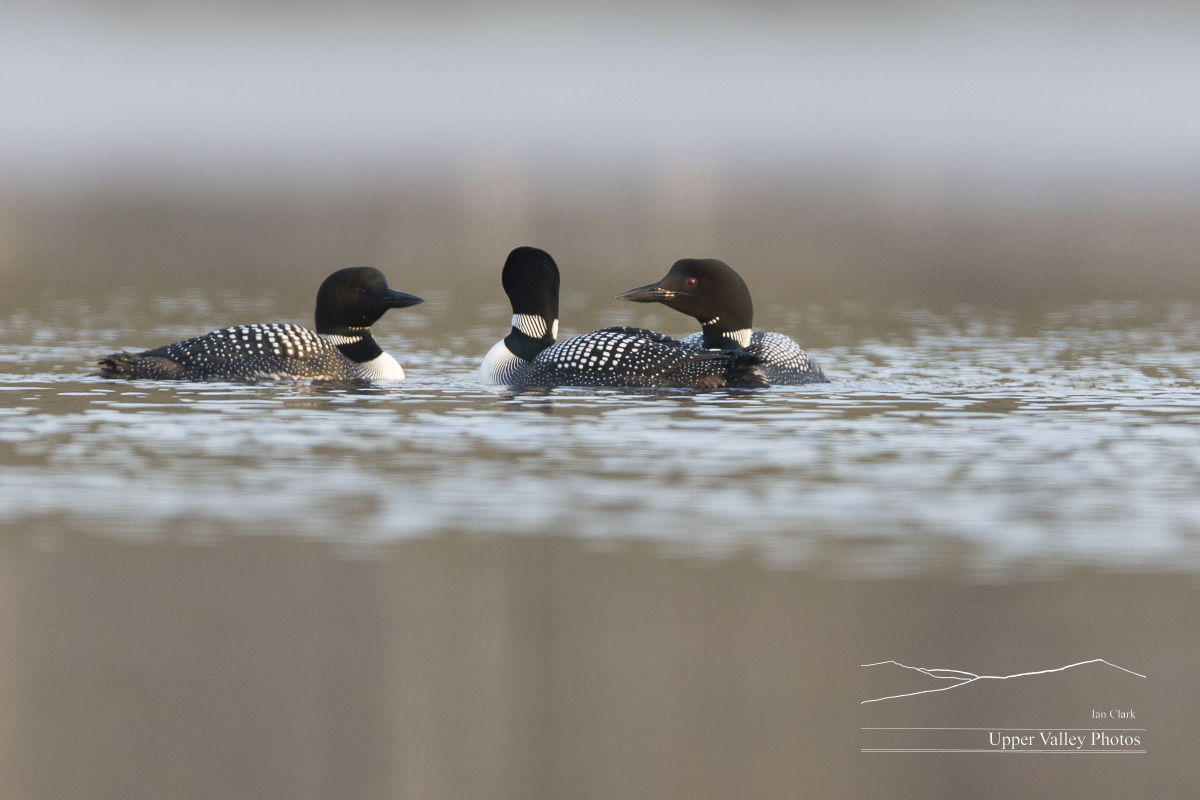
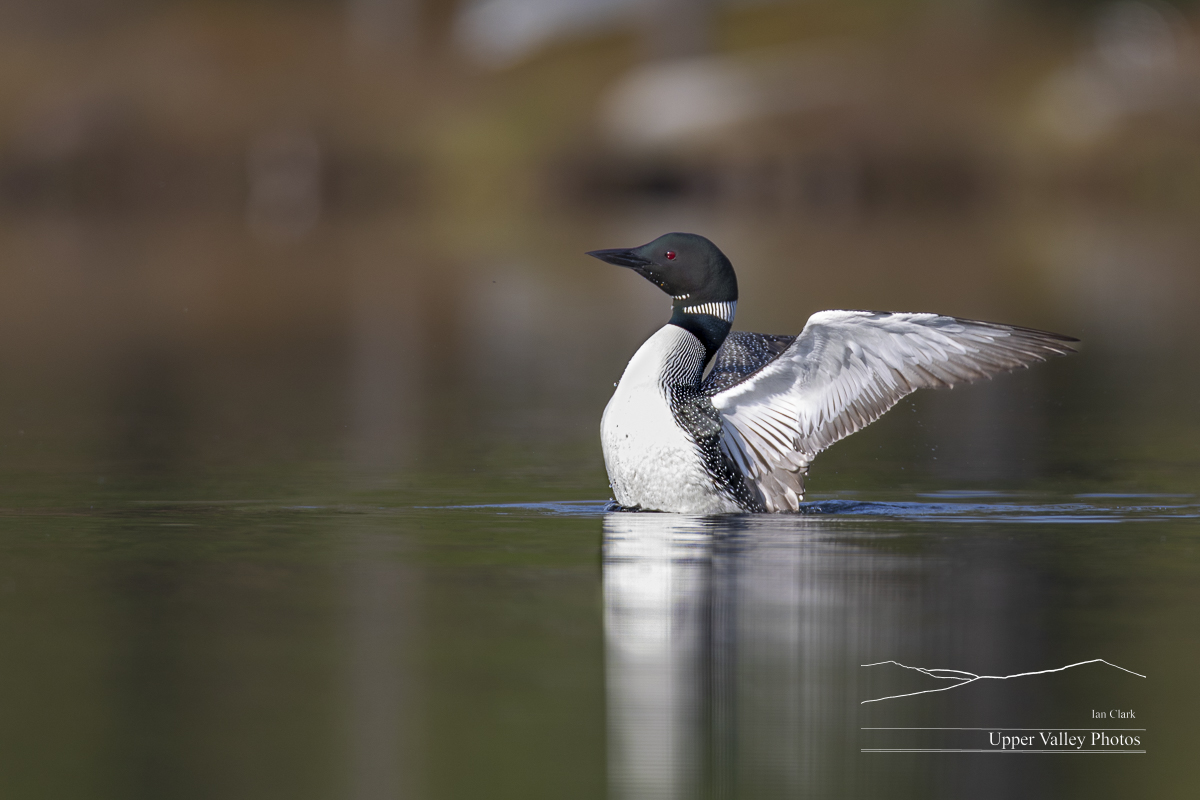

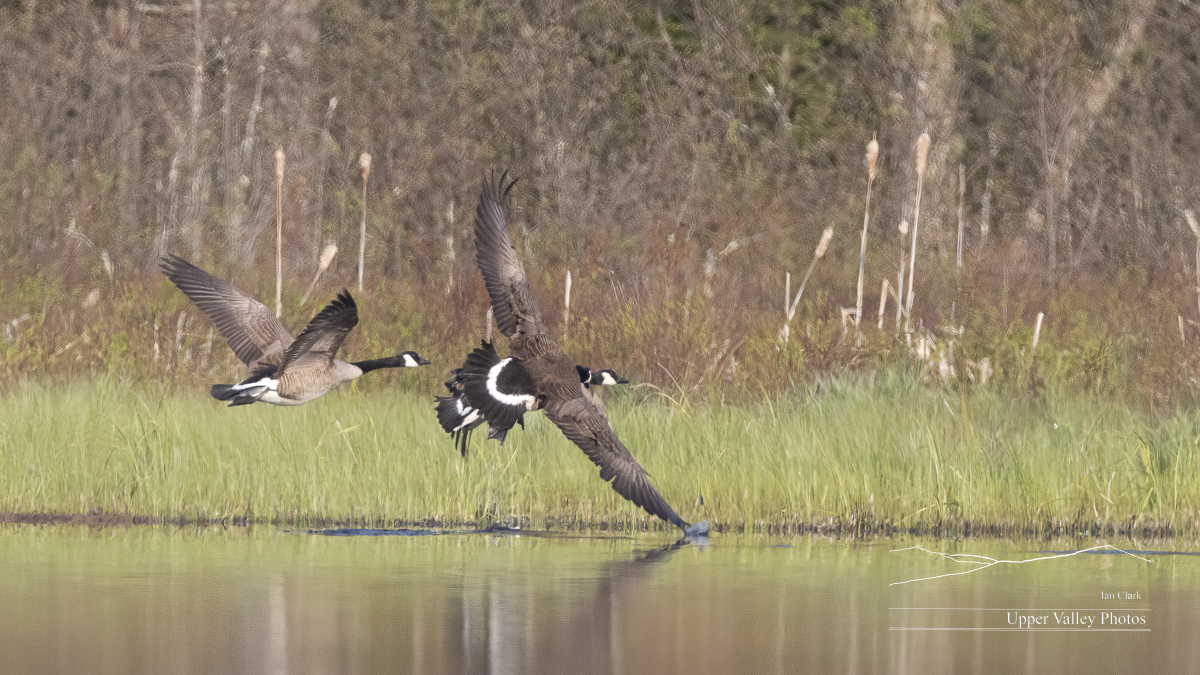
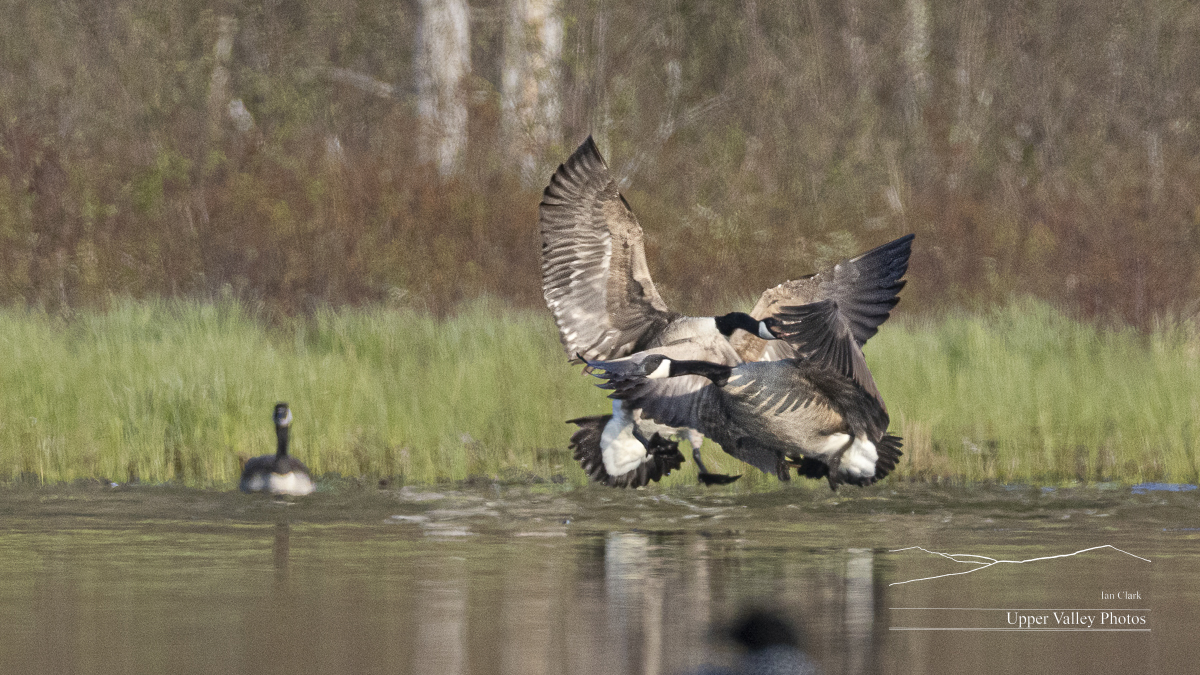
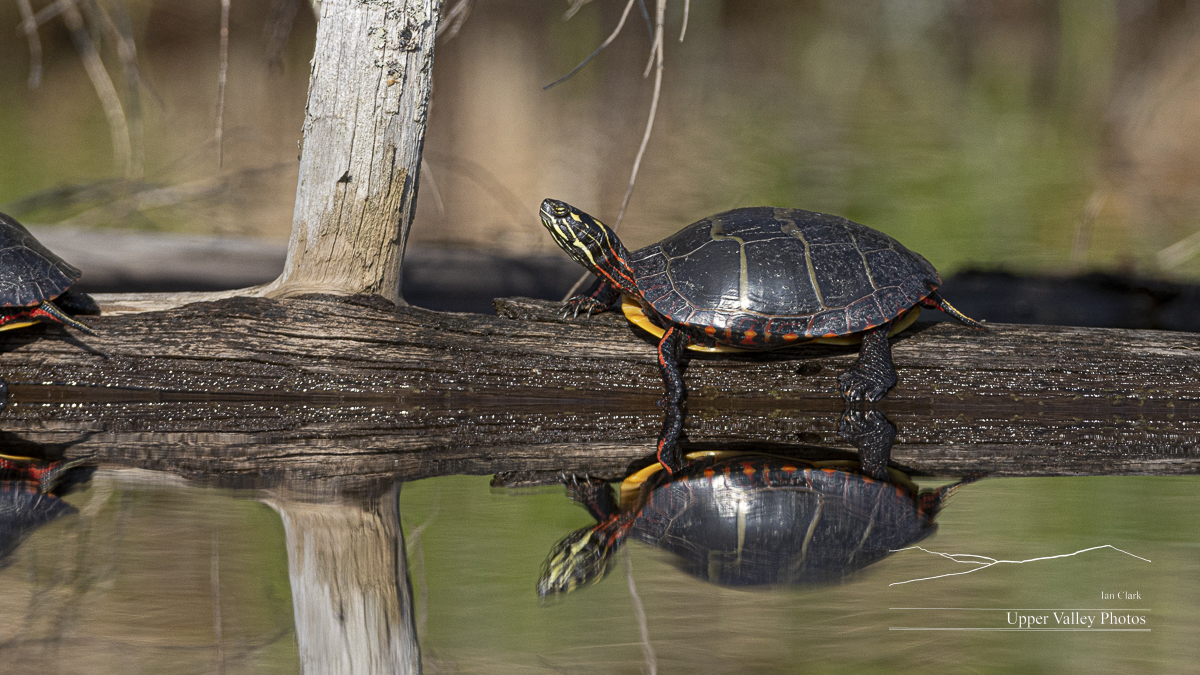
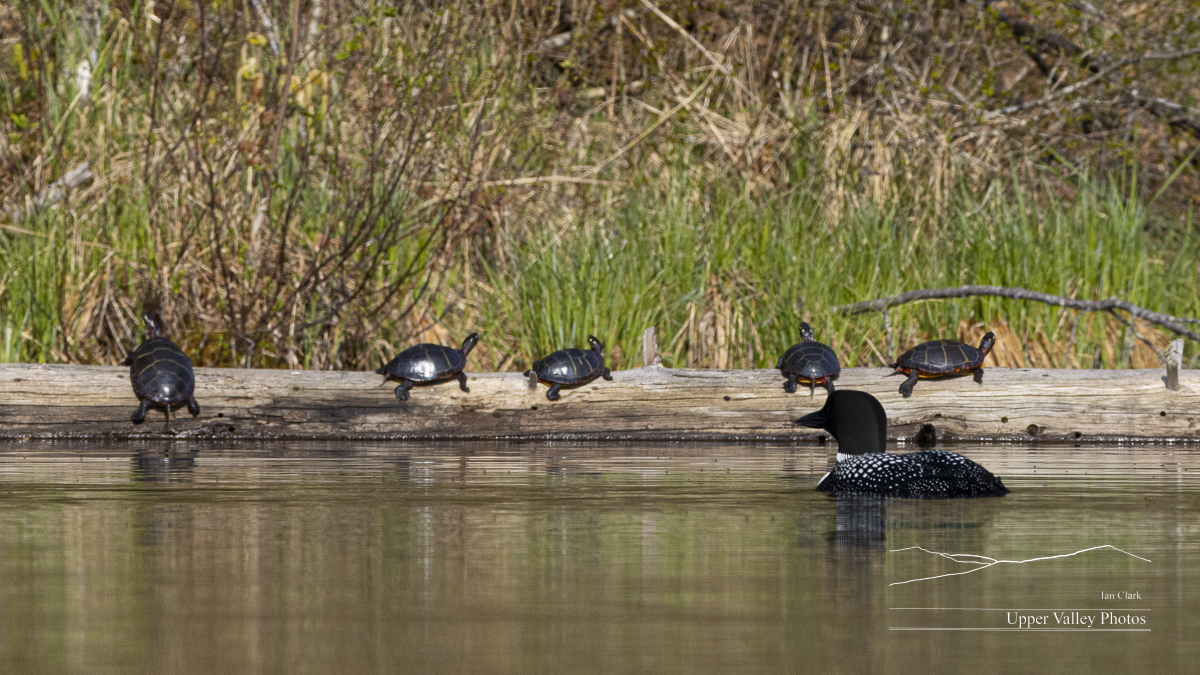
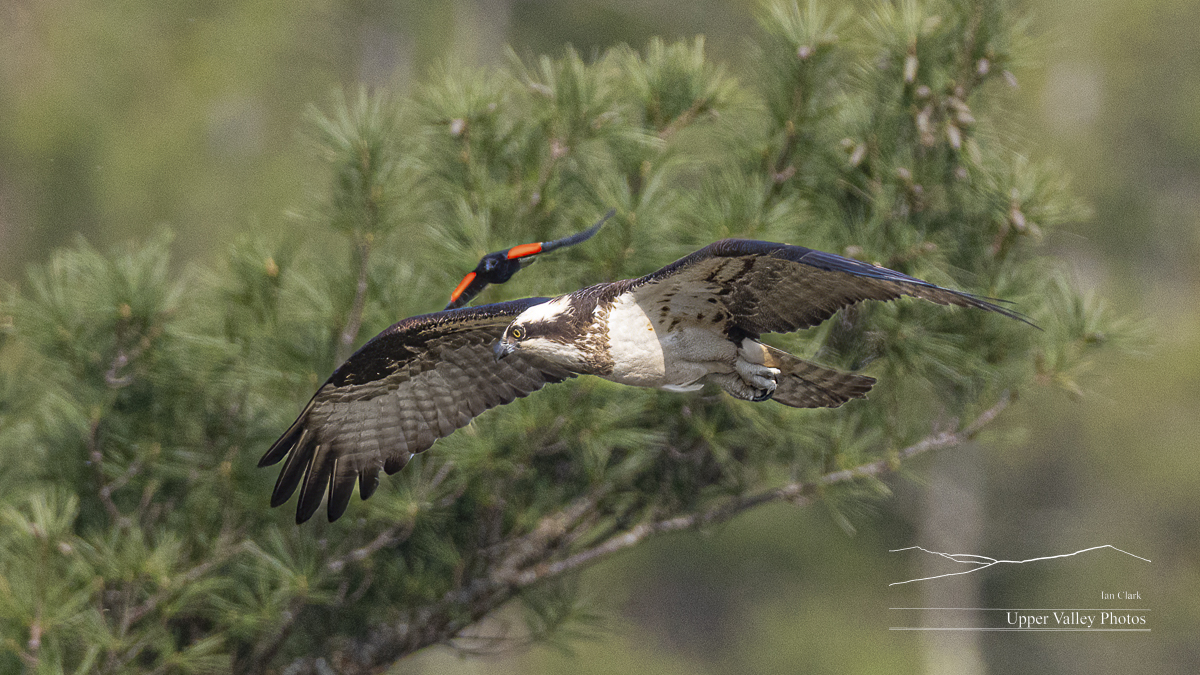

Unexpected Action on the Middleton’s Pond
The forecast for this morning called for rain. I happily planned to sleep in. Owing two huskies often thwarts such plans. When I let them out, there were stars to be seen. There was a thick fog over the Connecticut River, but clear skies above. The Middleton’s – the loons that live on the pond between the other two ponds – pond is a few hundred feet above the Connecticut. Hoping for some mood shots, I packed up and headed out.
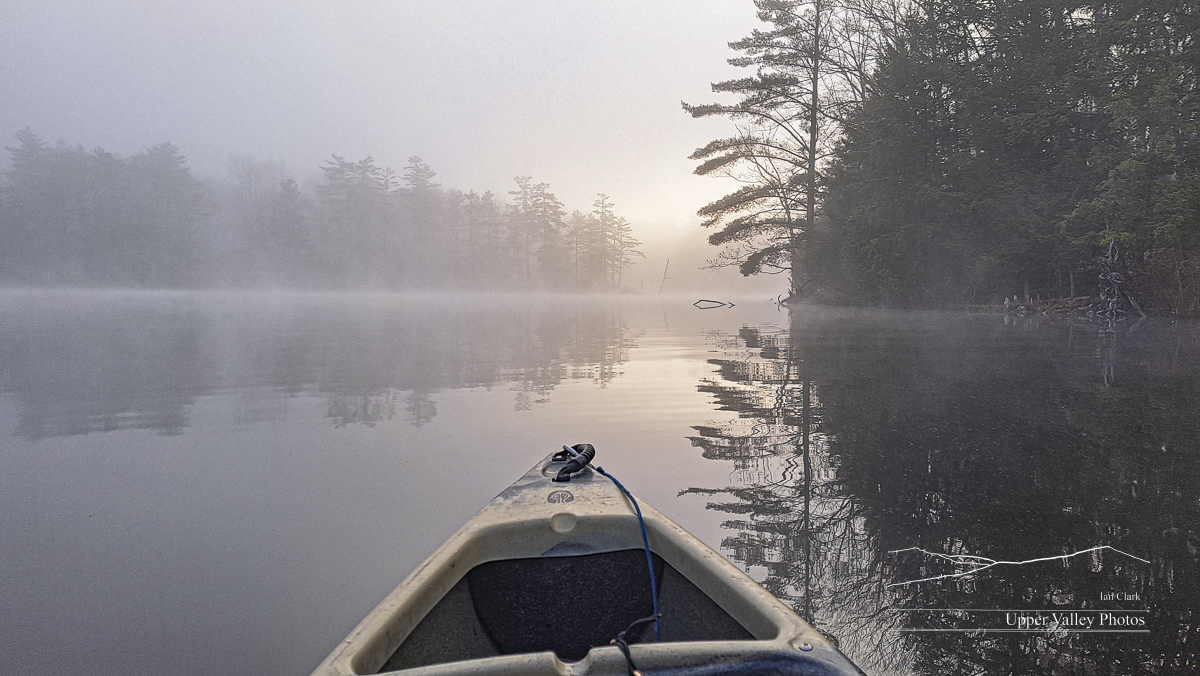
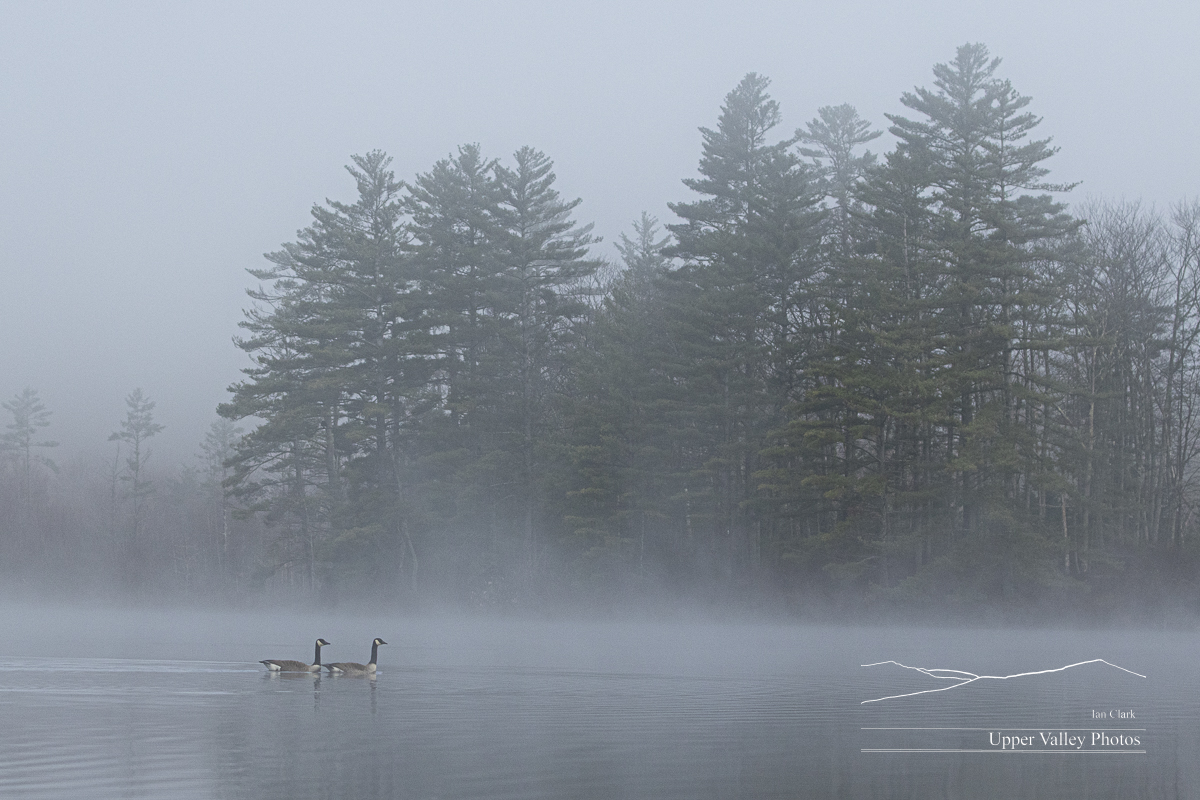
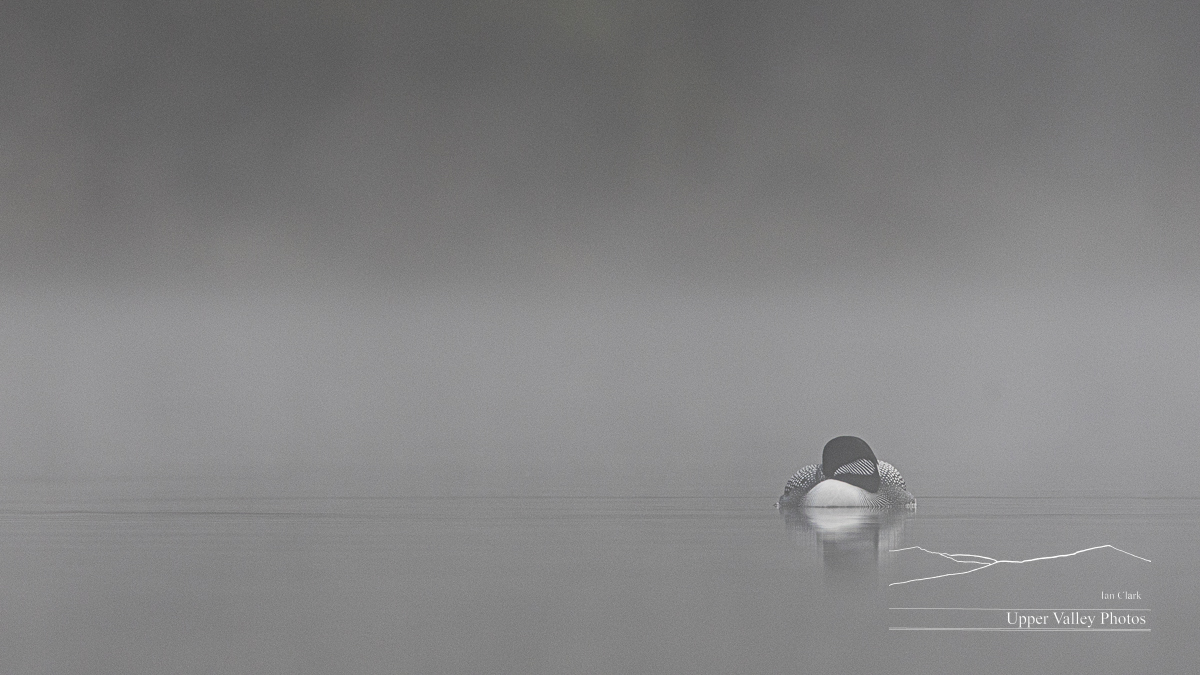
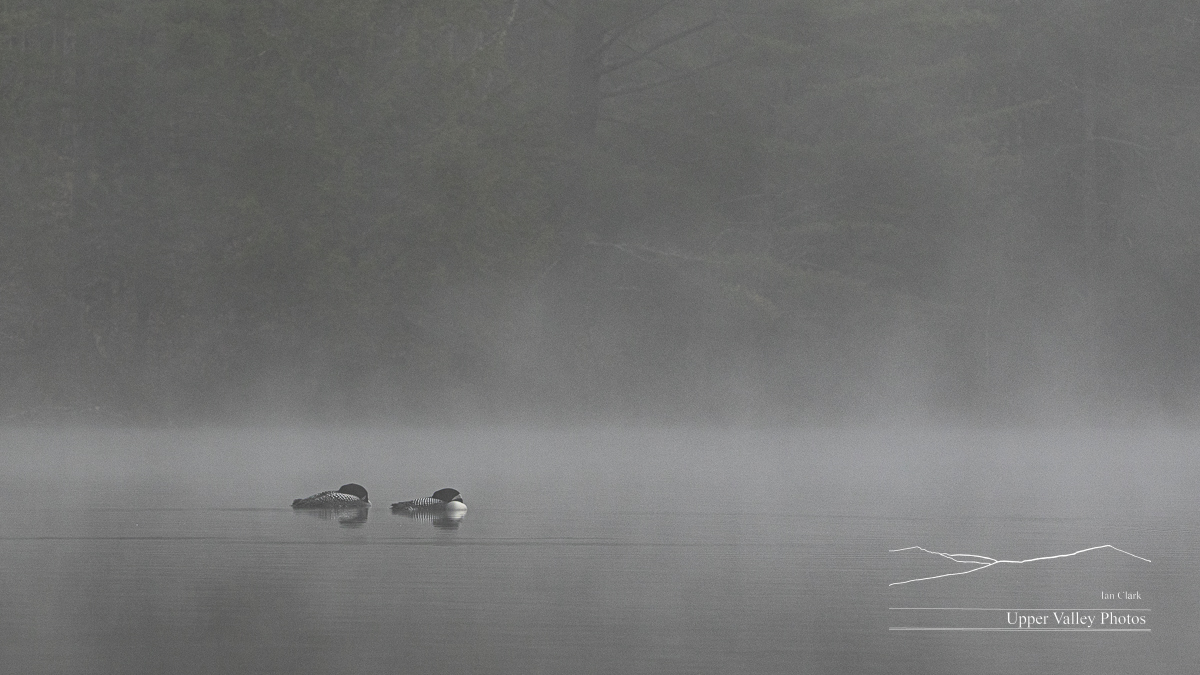
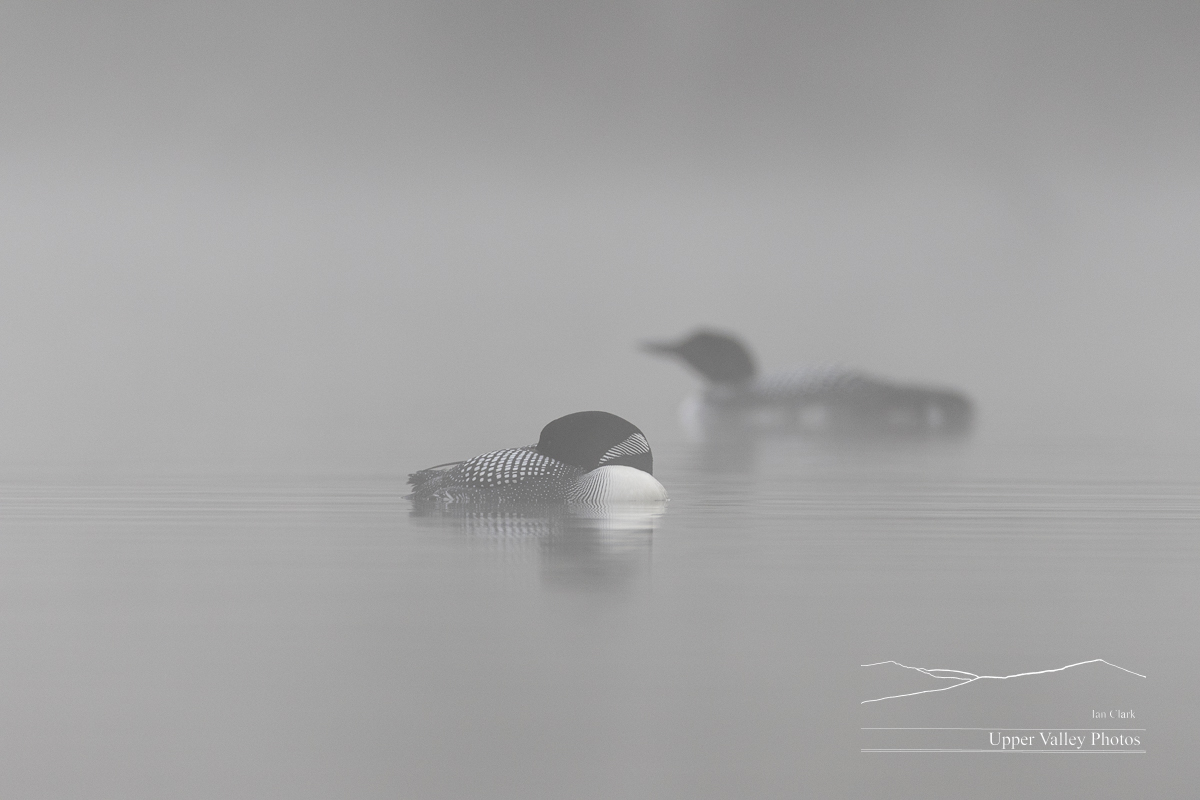
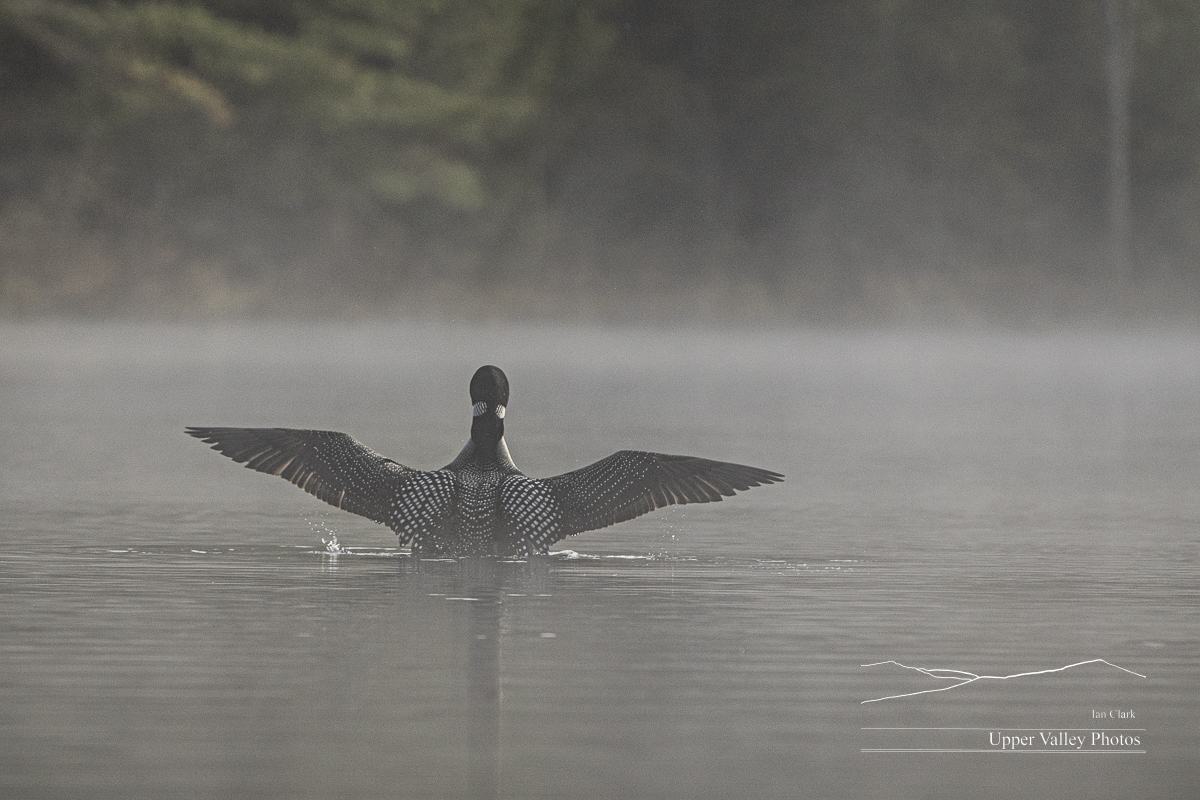
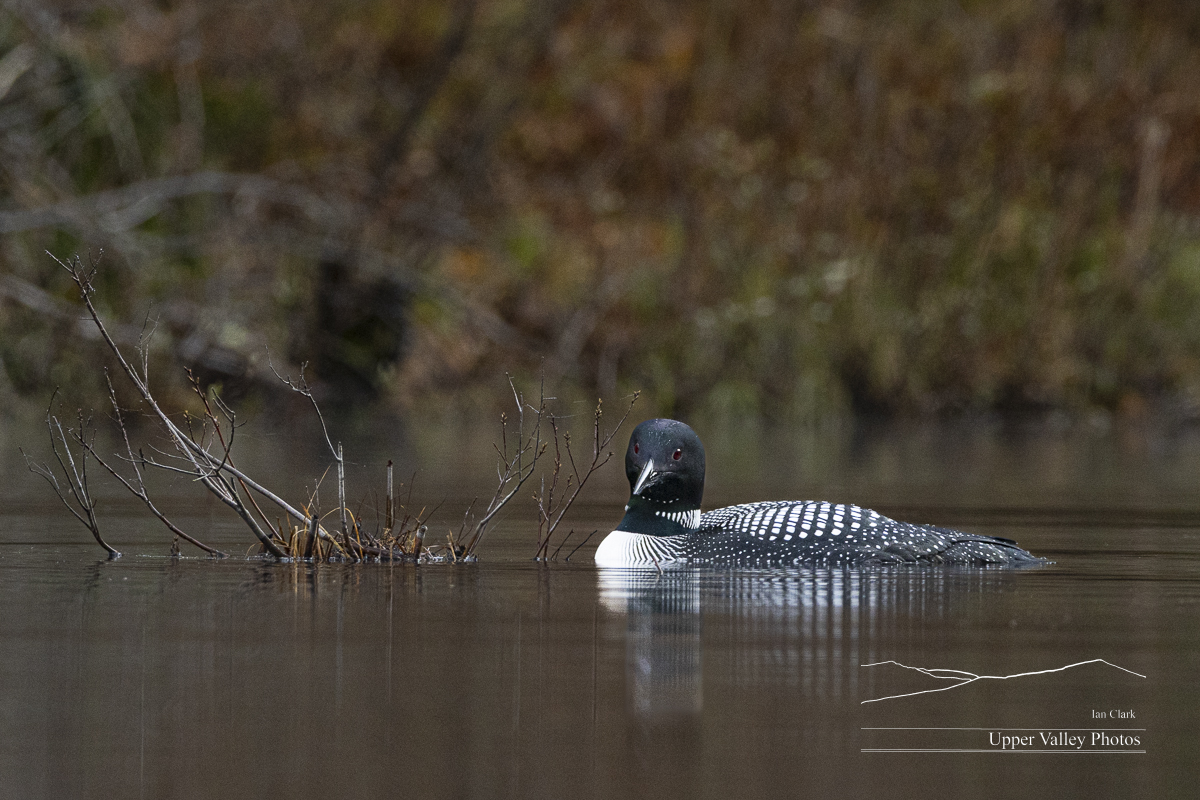
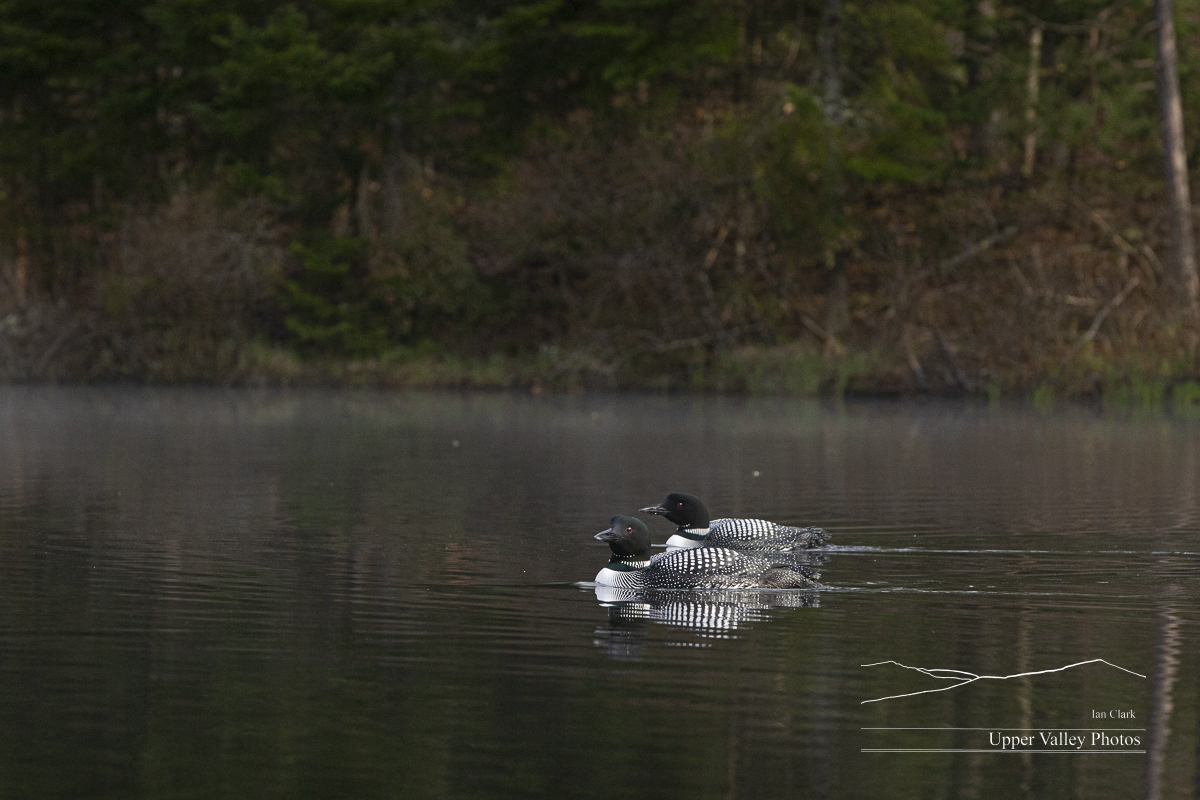


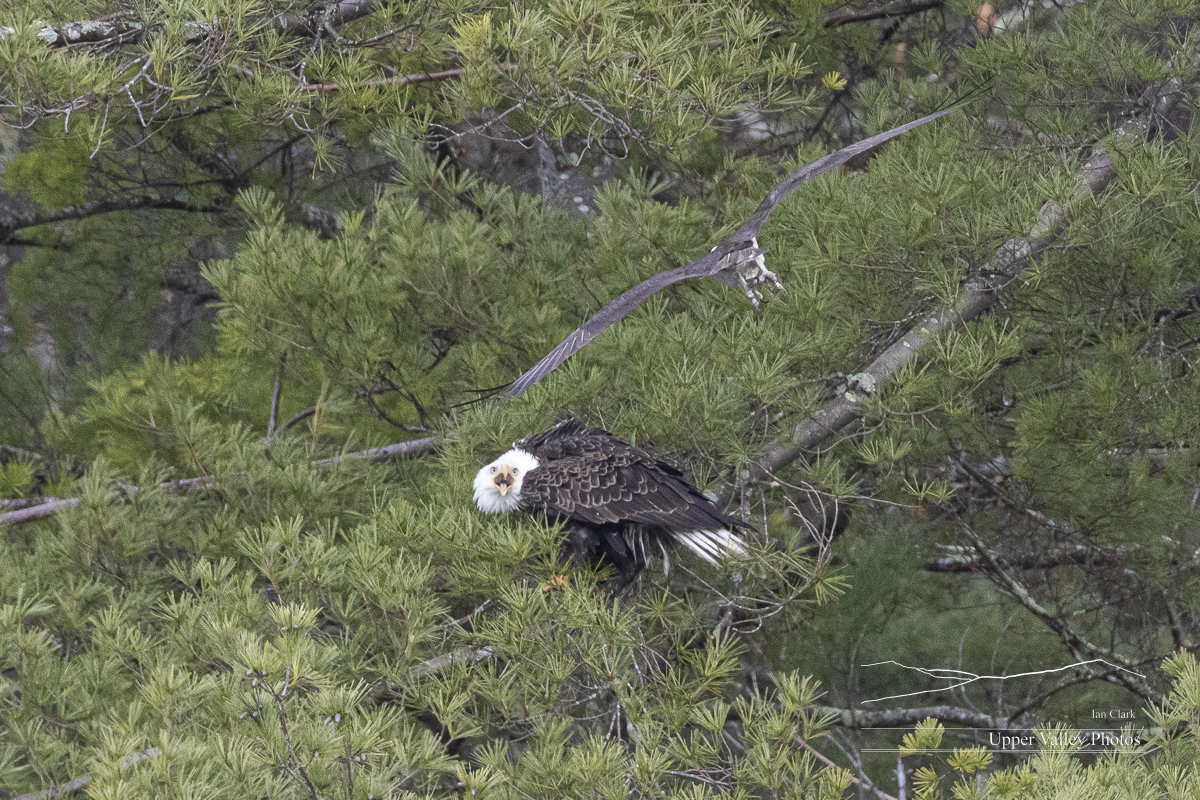
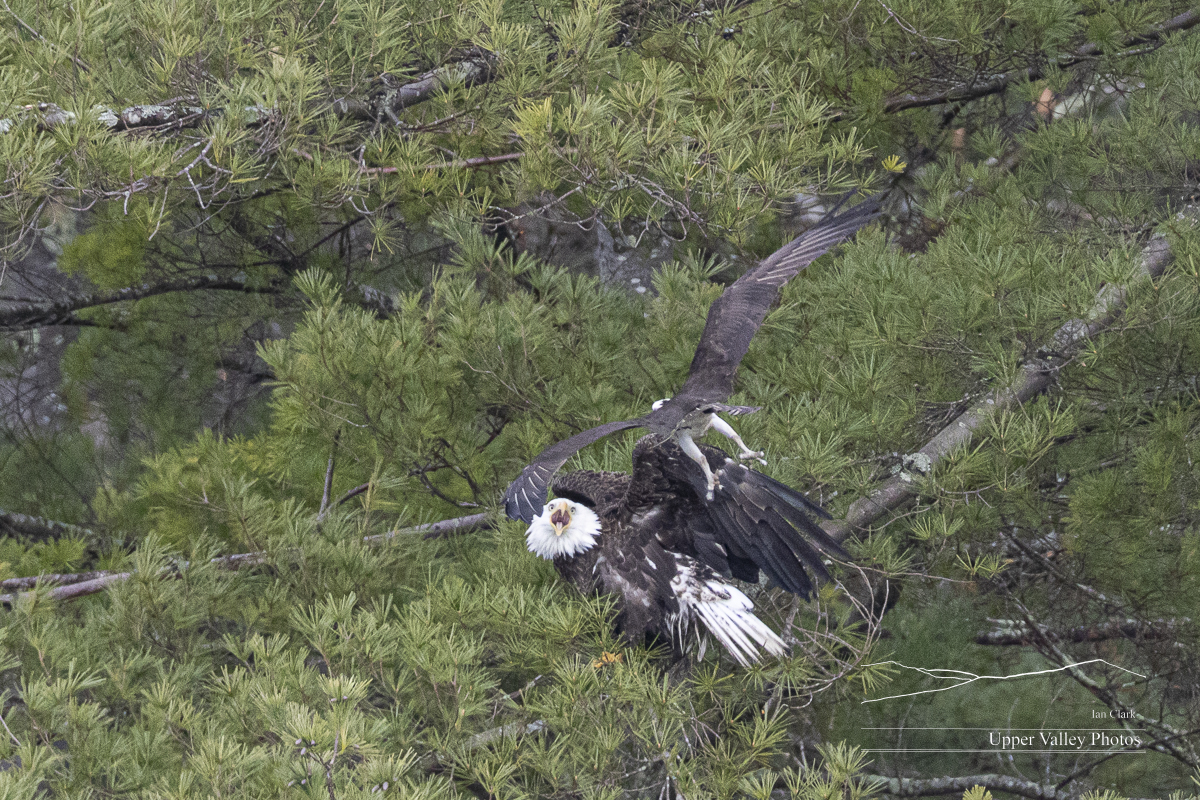
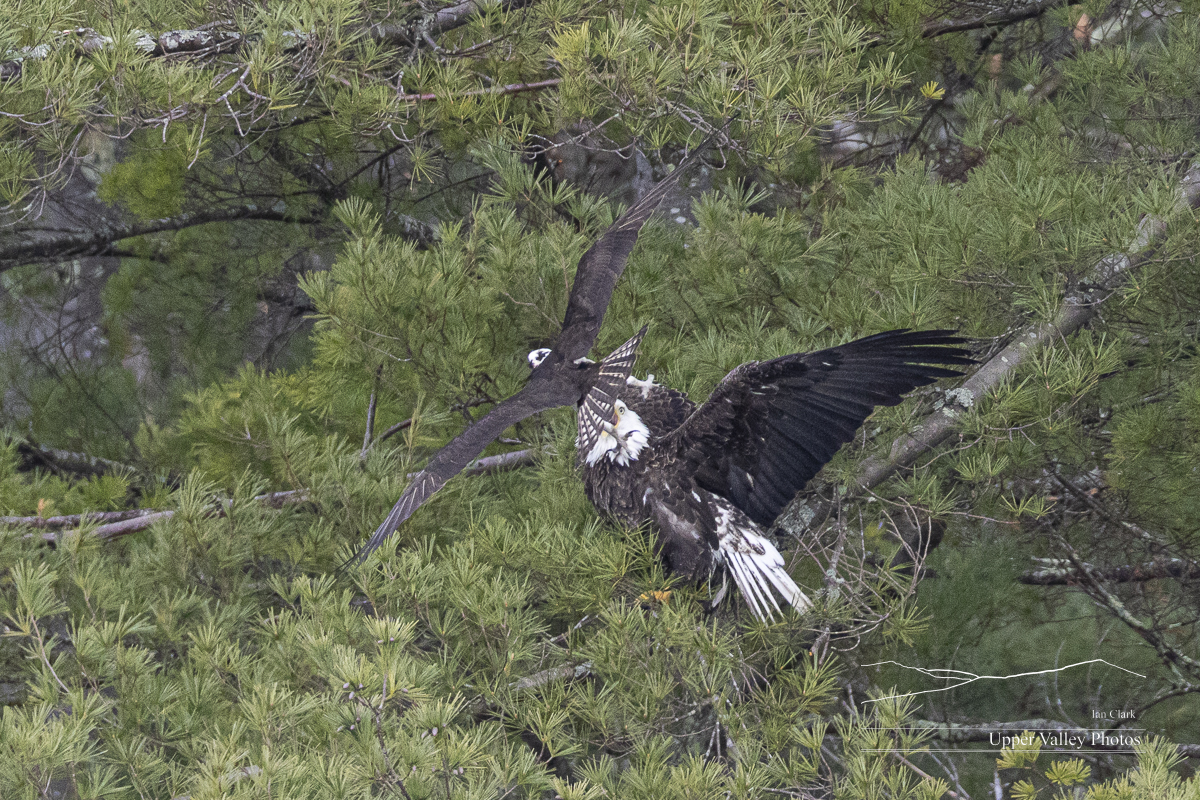
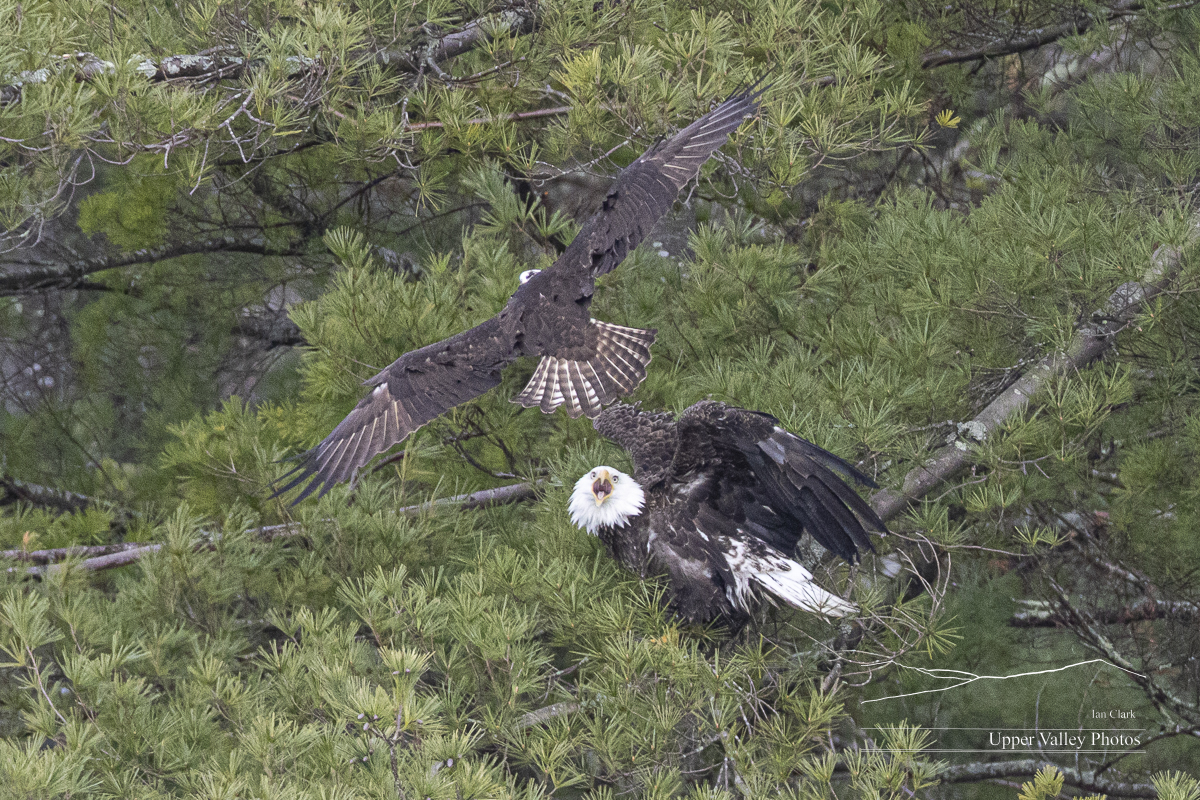
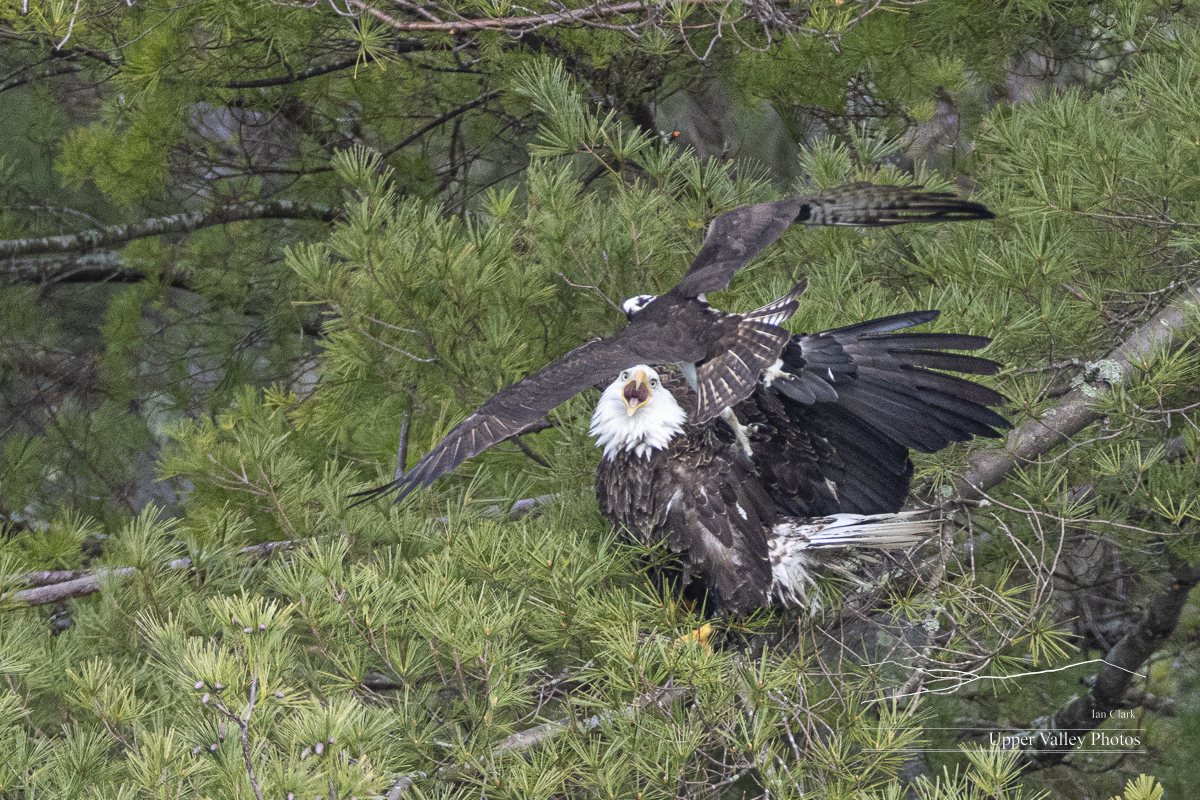
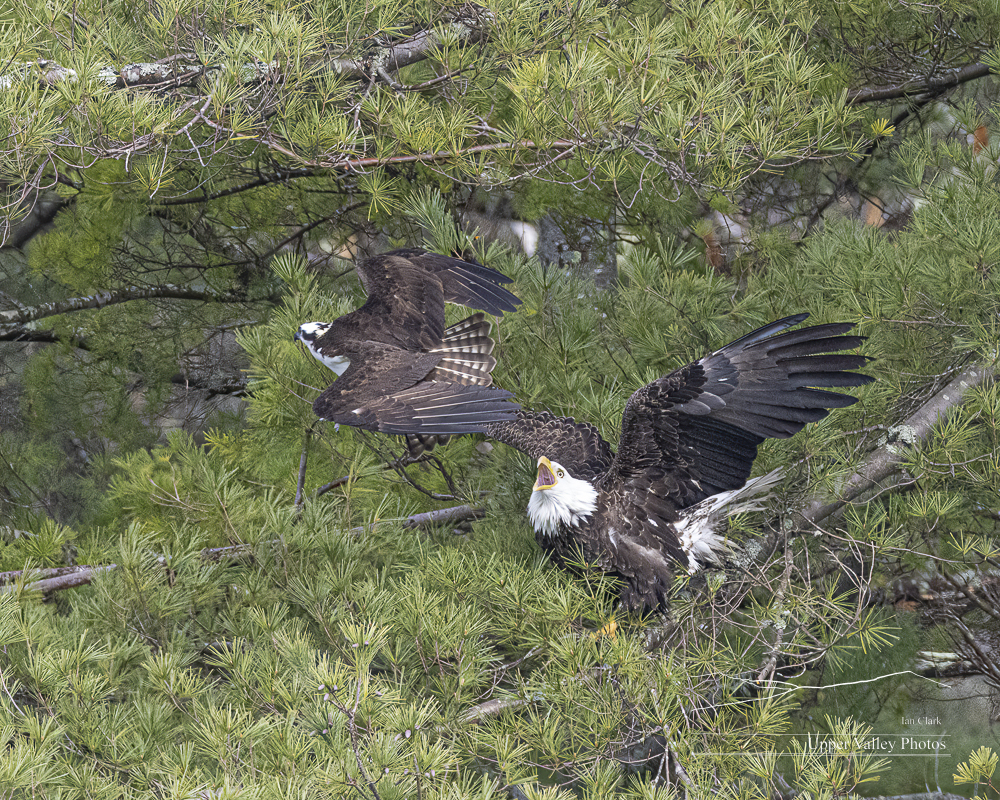
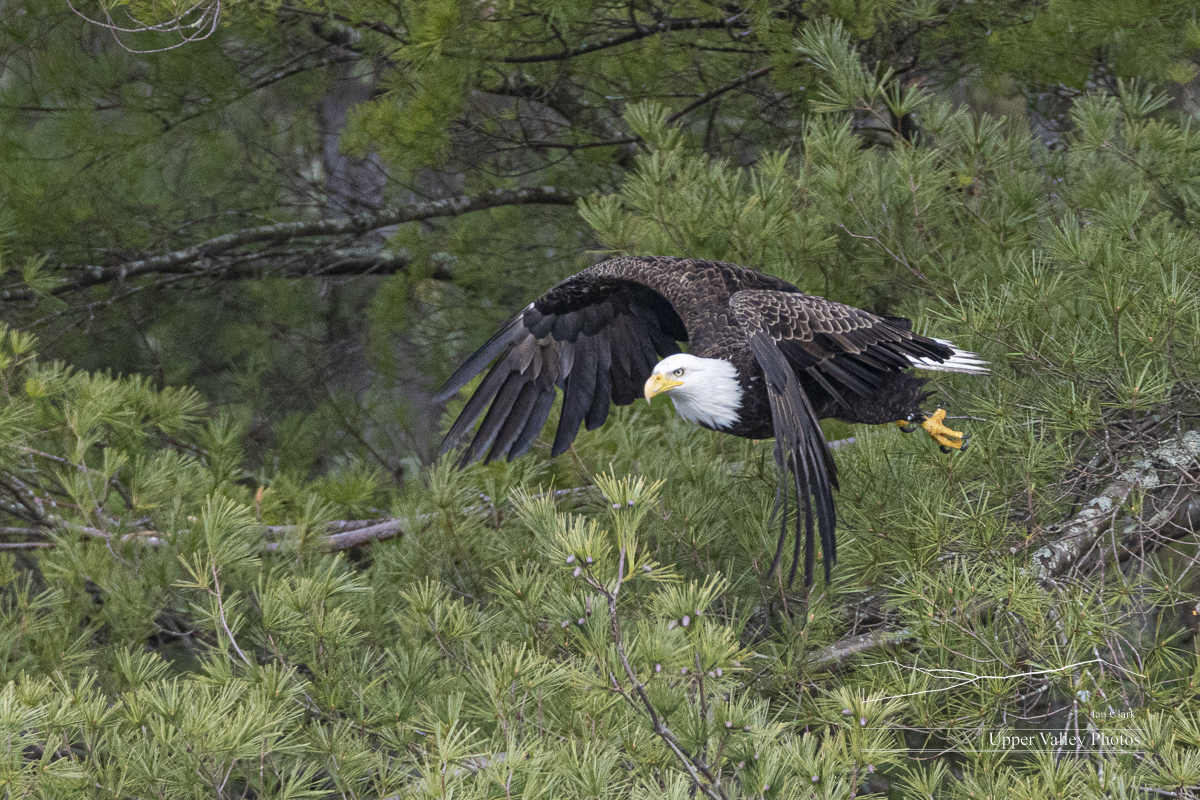
The loons would be rooting for the osprey. Osprey’s diet is almost exclusively fish, they leave the loons alone, while eagles are a very real threat to loon families.
My luck with the weather ran out. A few raindrops remined me that the huskies needed their morning run. I had the boat packed up and was pulling out of the parking spot when the rain hit. The huskies enjoyed romping in the mud when they got their run.
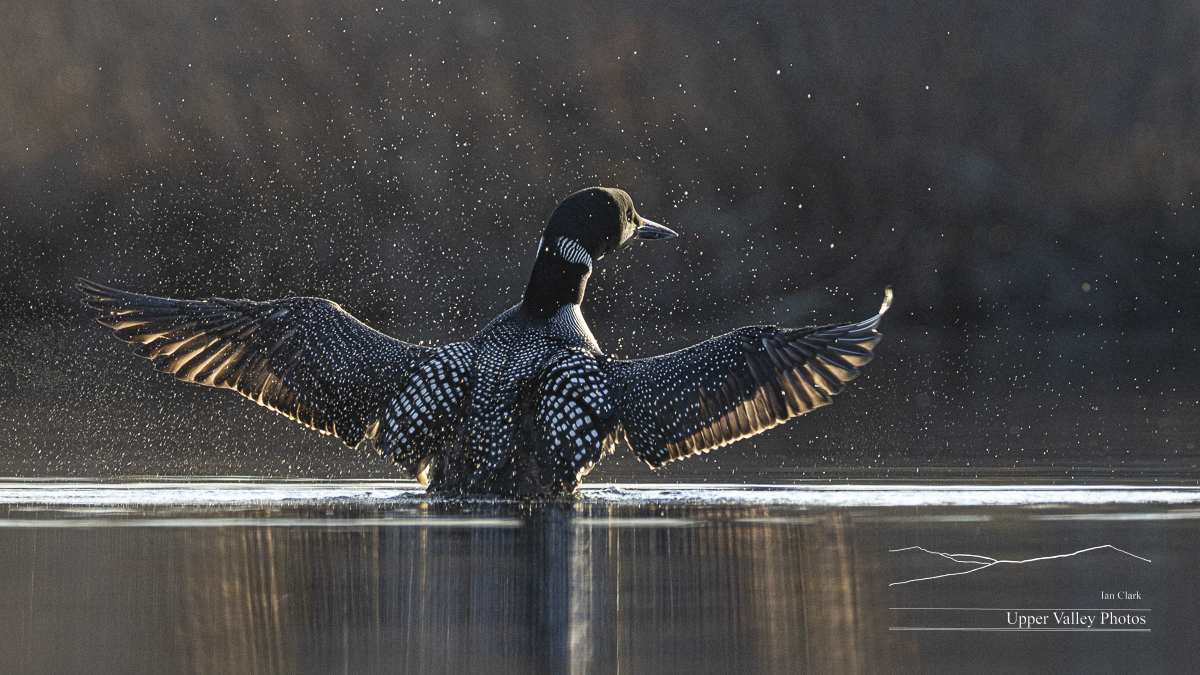
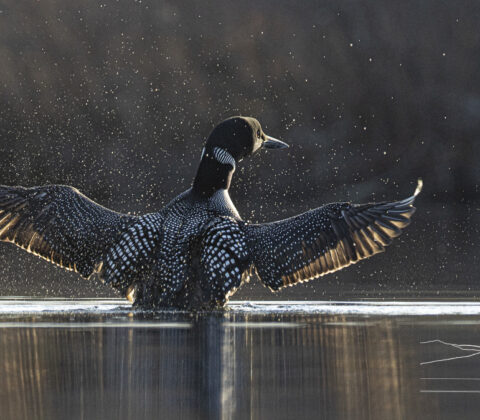
Loons Have Returned to the North Country
Loons have returned to our local ponds. The Westons – the loons on the pond to my west – were spotted a week ago on Monday, April 10. The Middletons – the loons on the pond between the eastern and western ponds I’ve been following – showed up Thursday, April 13.
In other news, our bluebirds have been around the yard regularly. Their camera is supposed to send me a notification when they’re in the box. It hasn’t been sending notifications and has been on my list to fix for a time. Yesterday I went to show off the live feed and found Mrs. Bluebird in the box.

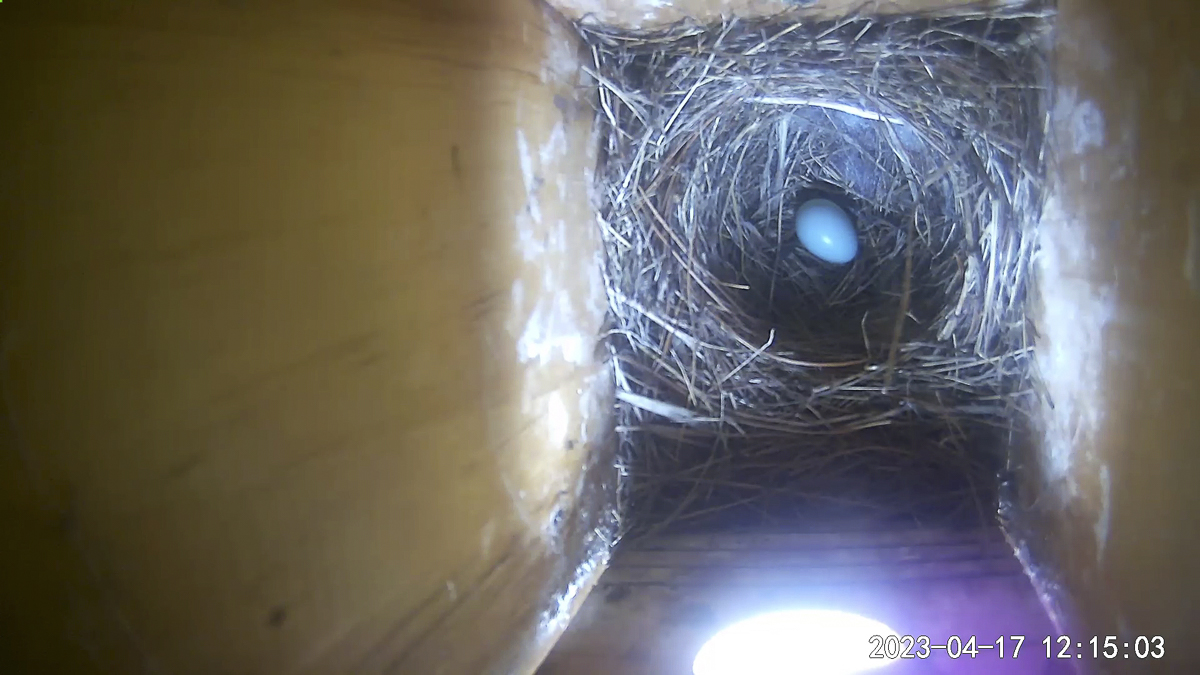
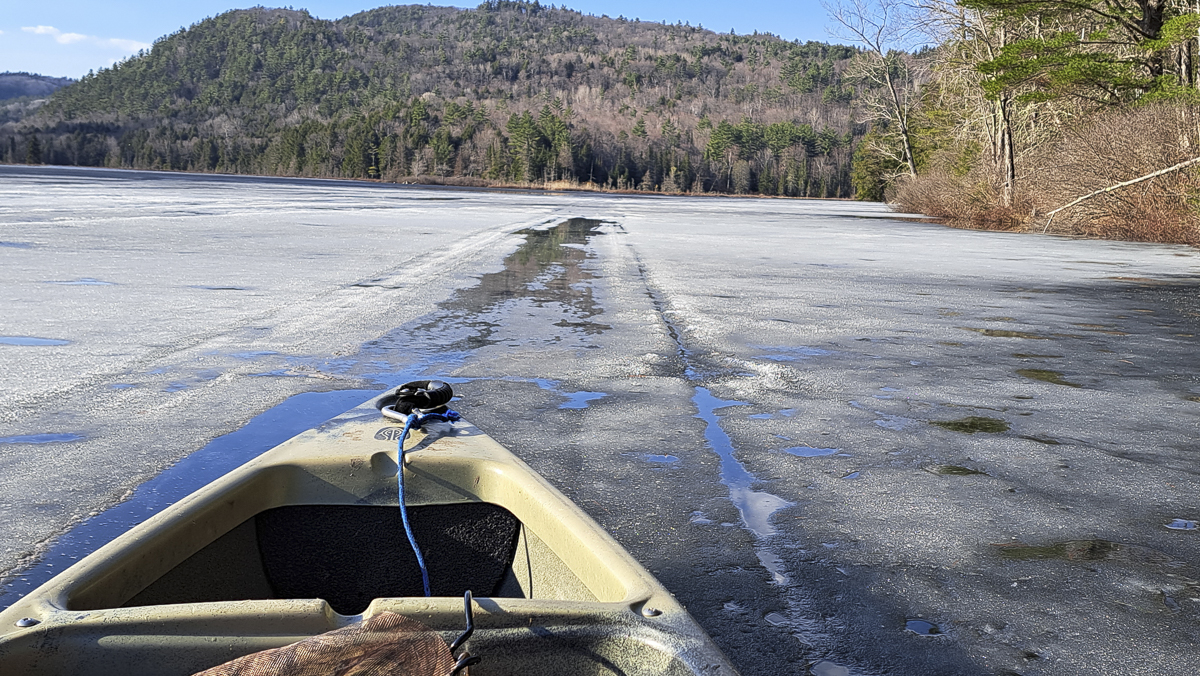
On Friday, I tried the Middletons’ pond. Two loons were foraging together for a time before preening and settling in for a nap.

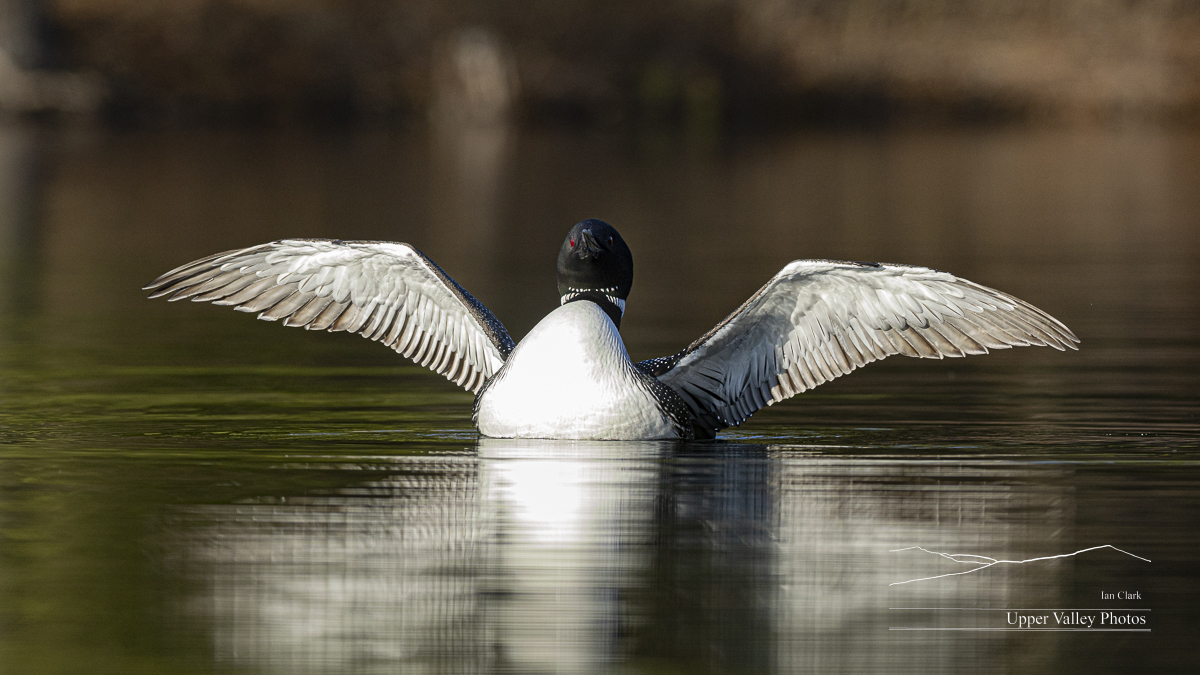
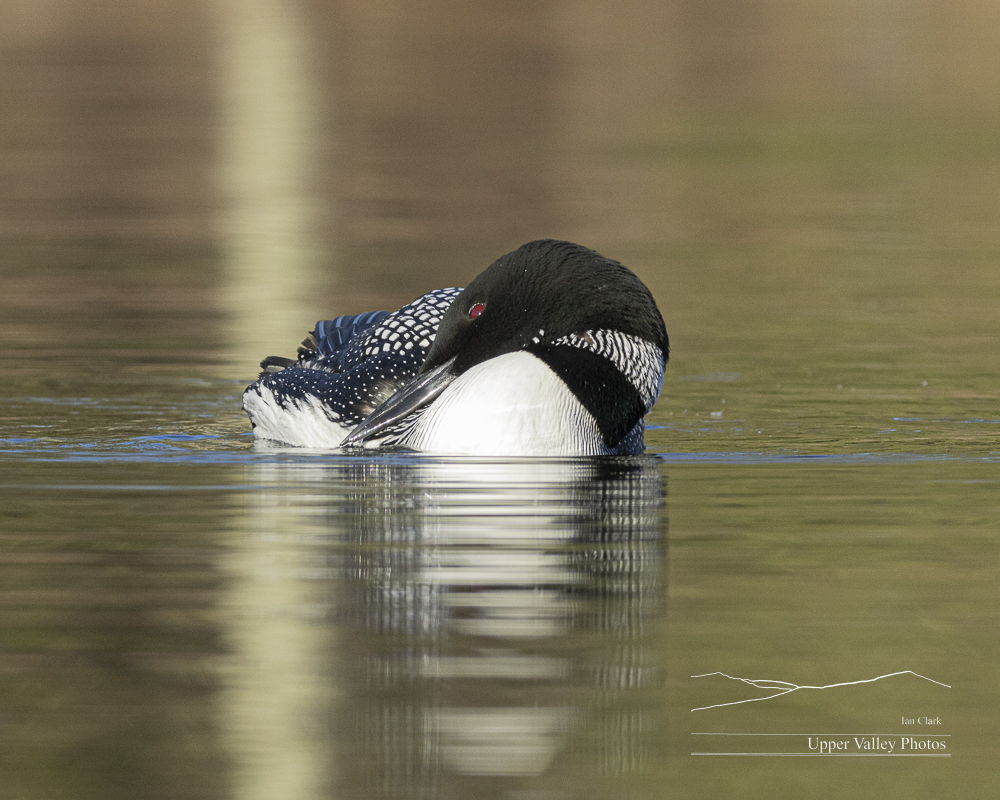

I hope to follow the loons on the same three ponds that I have been watching again this season. You can keep up with their adventures by subscribing. And, if you know someone who enjoys wildlife, please share the blog with them.
One Loon Family Still Here
Dawn yesterday found a cloudless sky and with the temperature here on the hill at 32°, I figured I could get the kayak around the pond. I headed north to check on the Westons. This is the family that faced intruders for several weeks in the spring. They hatched two chicks and one survives and is 15 weeks old.
I’ve got a couple appearances coming up. Wednesday October 26, I’ll be at the Bugbee Senior Center at 1:00 p.m.with my slideshow An Uncommon Look at the Common Loon. The show is open to the public, see the details on their site: https://www.bugbeecenter.org/activity/special-events/bugbeetalks/.
There’s a photographic print version of An Uncommon Look which I’ll be hanging at the Kellogg-Hubbard Memorial Library in Montpelier on November 1. It will stay up until November 30. I’ll be giving An Uncommon Look at 6:30 p.m. on November 9 at the Library. Free and open to the public.
And, I’ll be at Craft Vermont November 18-20, 2022 at the DoubleTree in South Burlington. Come on by and say hello.
When I got to the loon’s pond, the sun had yet to hit the tops of the trees along the west side of the pond and it was a refreshing 29°. There was only the slightest trace of ice along the shore, no problem for a kayak.
While I was launching the kayak, I noticed what looked to be a large hawk land in a tree towards the other end of the pond. Too far away for a good ID and with the loons talking I headed out to find them.
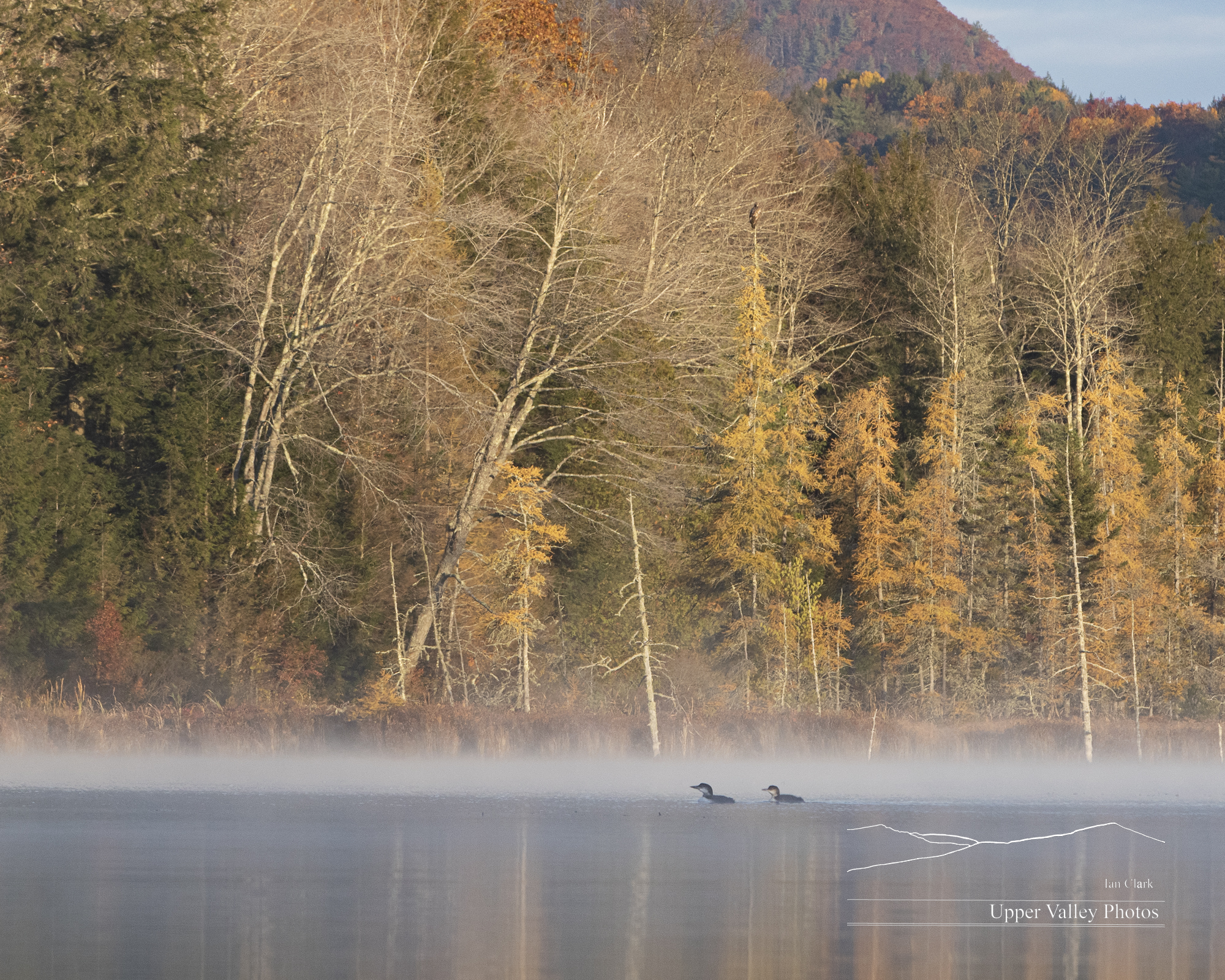
There were two loons on the pond. One I suspect is mom, the other is our surviving chick. When I found thems, they appeared agitated. They were swimming back and forth, fairly rapidly and making low hooting calls. After I watched for a few minutes, it occurred to me to check that hawk out. It turned out to be a juvenile bald eagle. One of the residents on the pond told me earlier that a young eagle had been harassing the chick. The eagle is at the top of the tree just right of center.

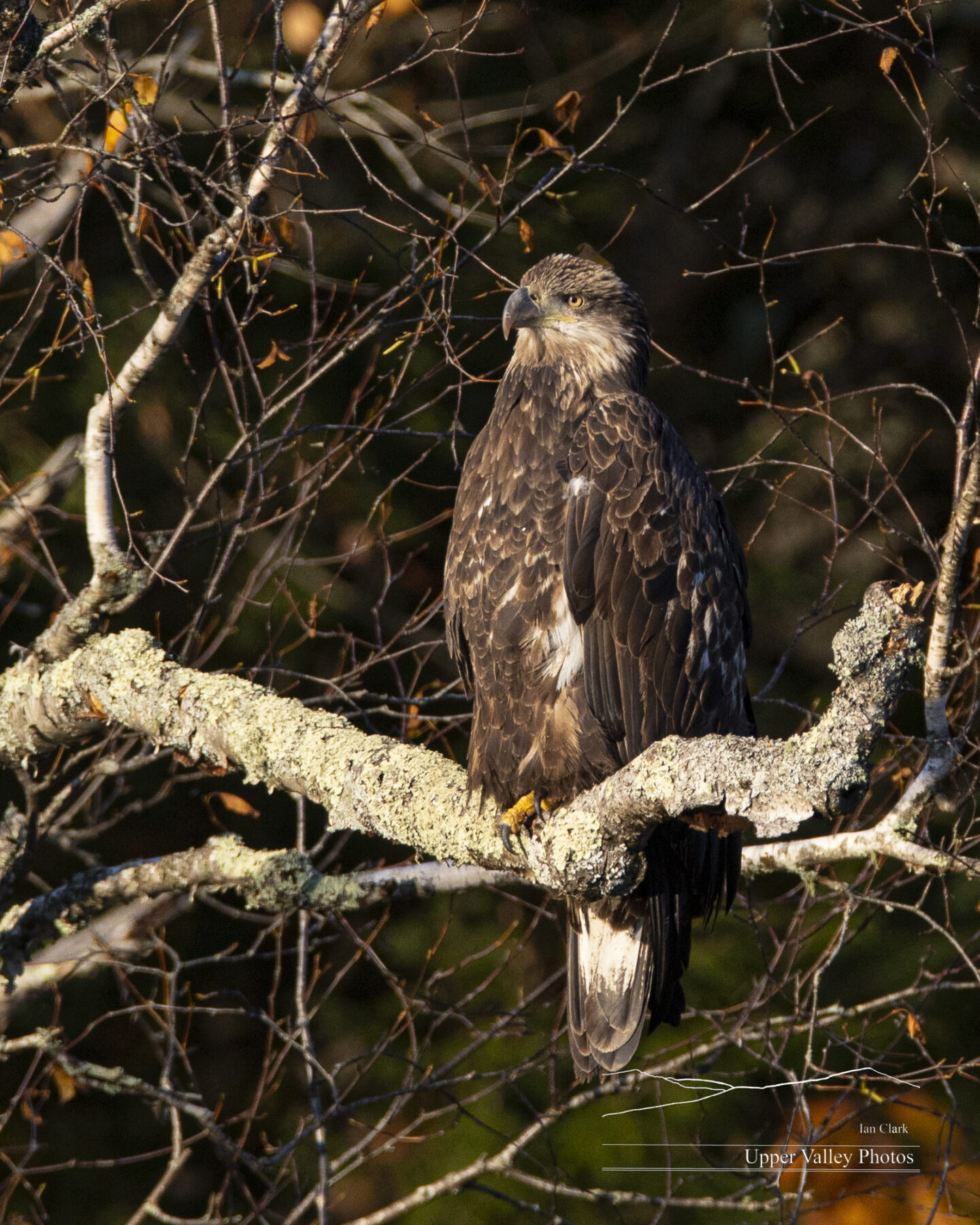

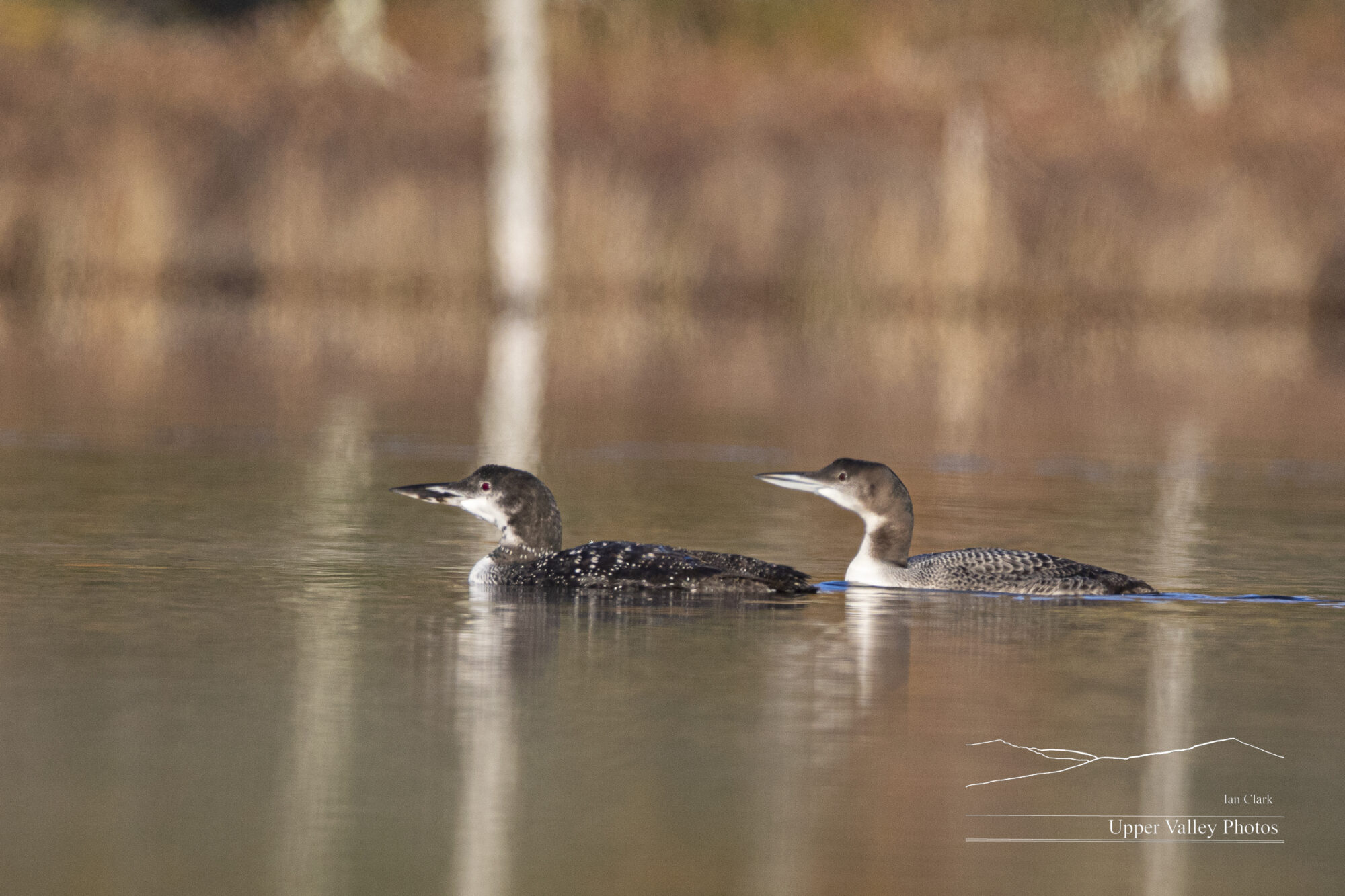
I suspect that’s mom in front. My guess is based on not hearing the adult loon yodel. The male on the pond this year was not shy about yodeling at eagles or most anything that moved along the shore. Our chick is a male, he tried a couple of yodels that didn’t impress the eagles. Note that mom has pretty much changed into her winter plumage.

